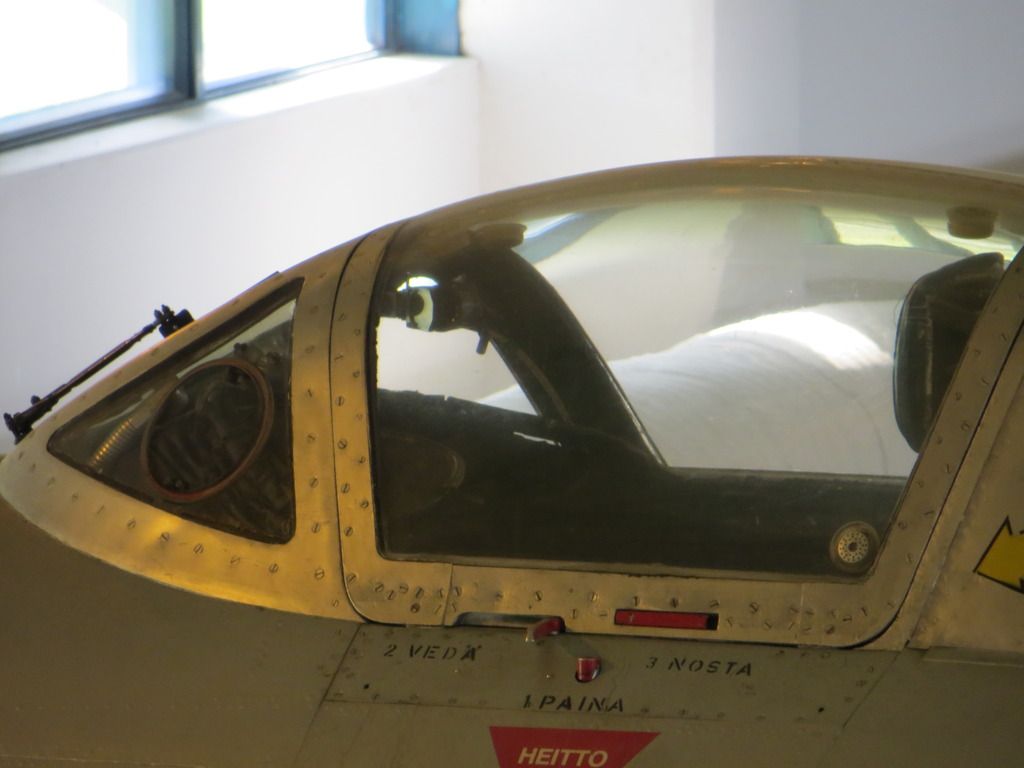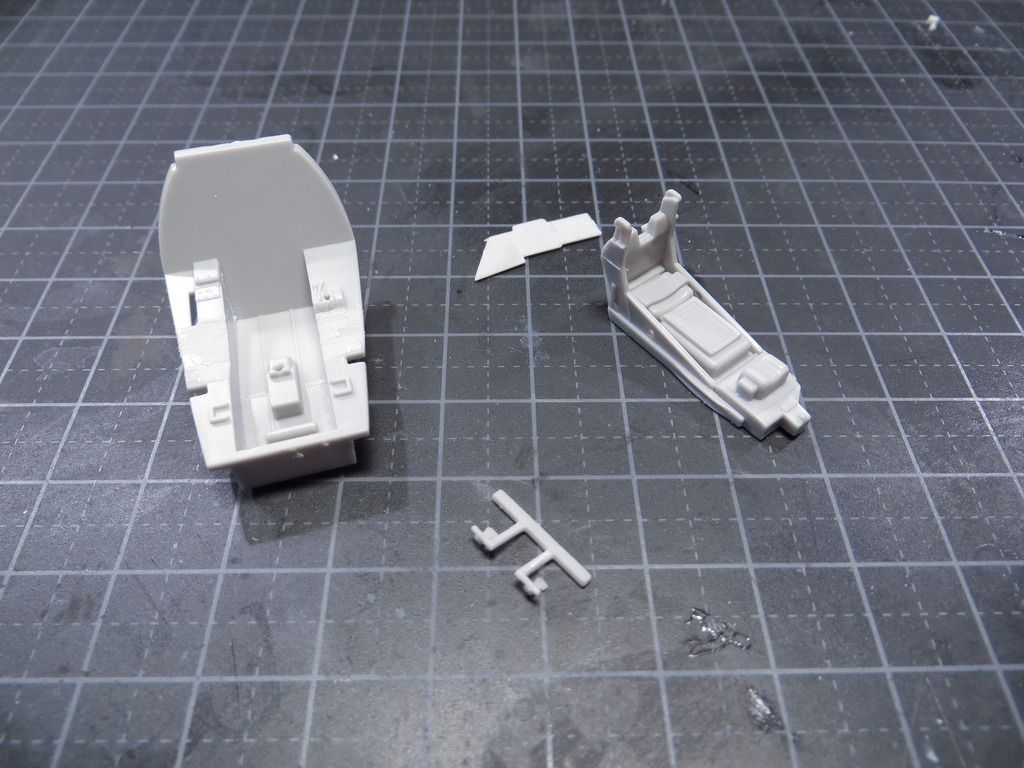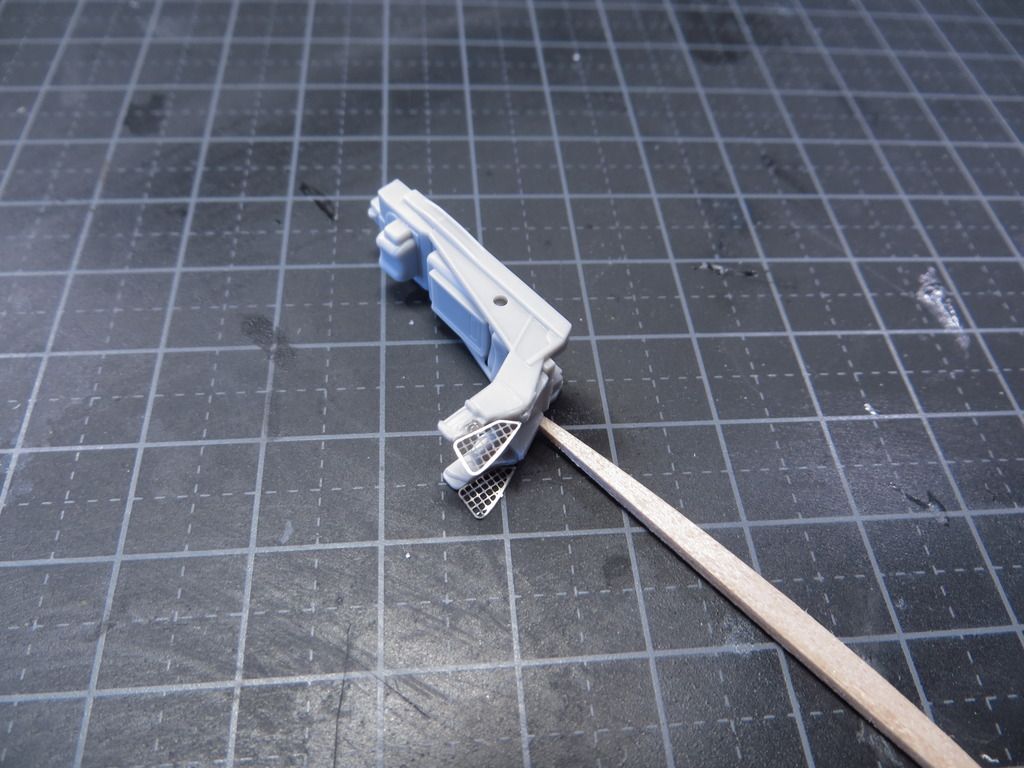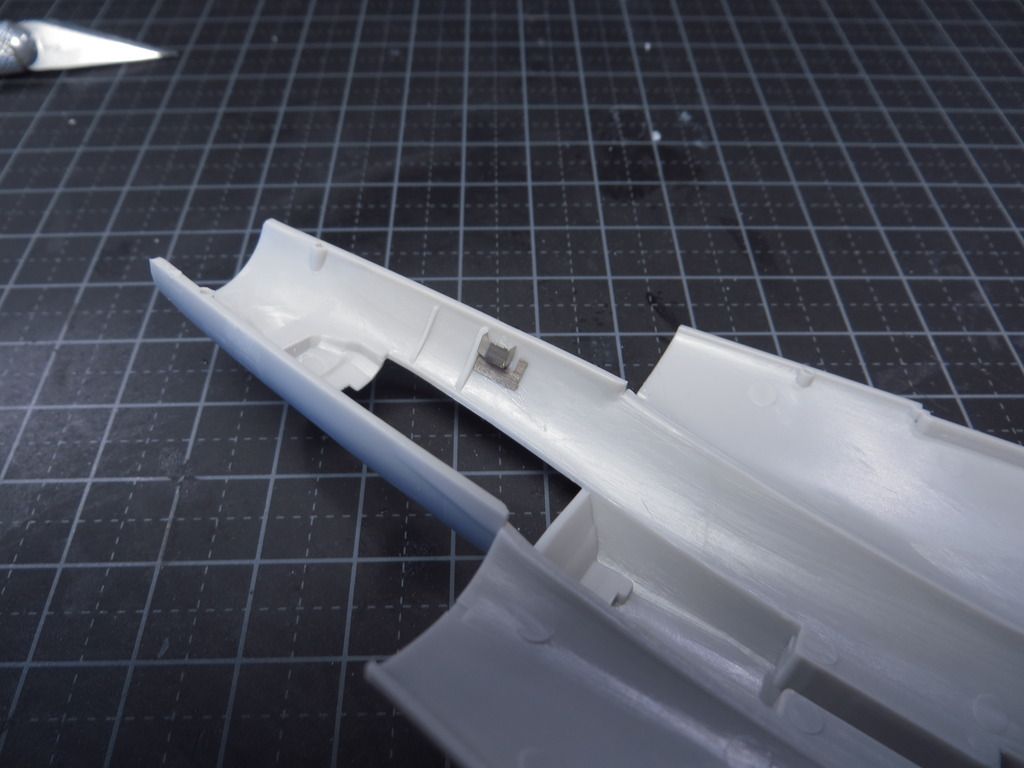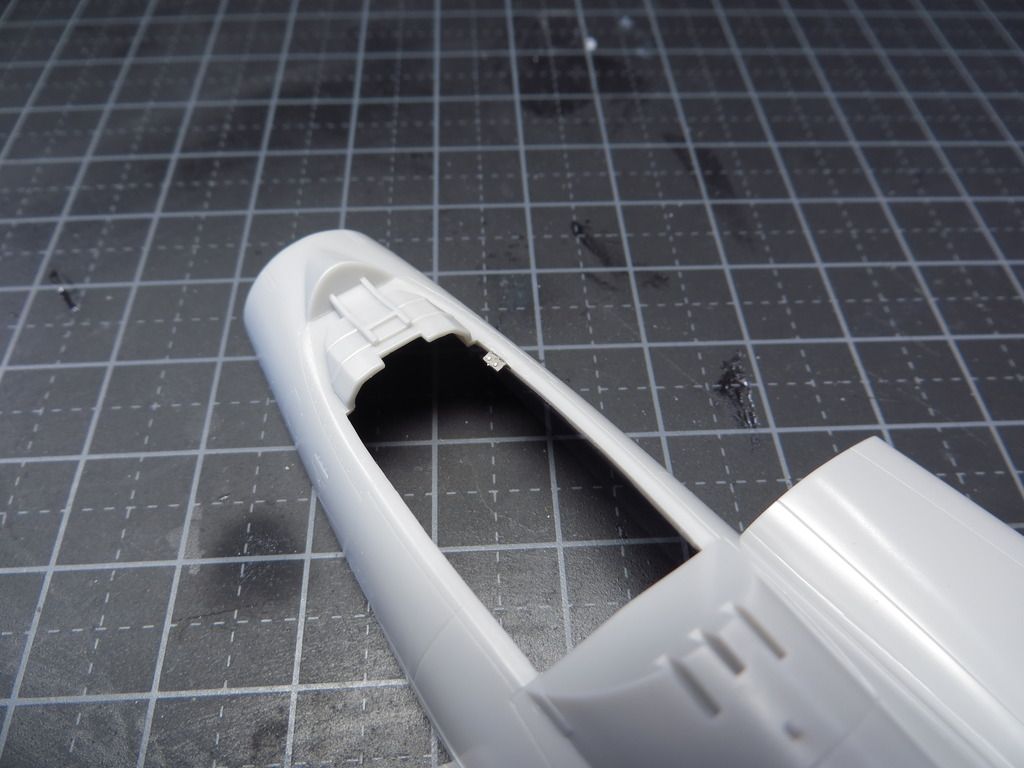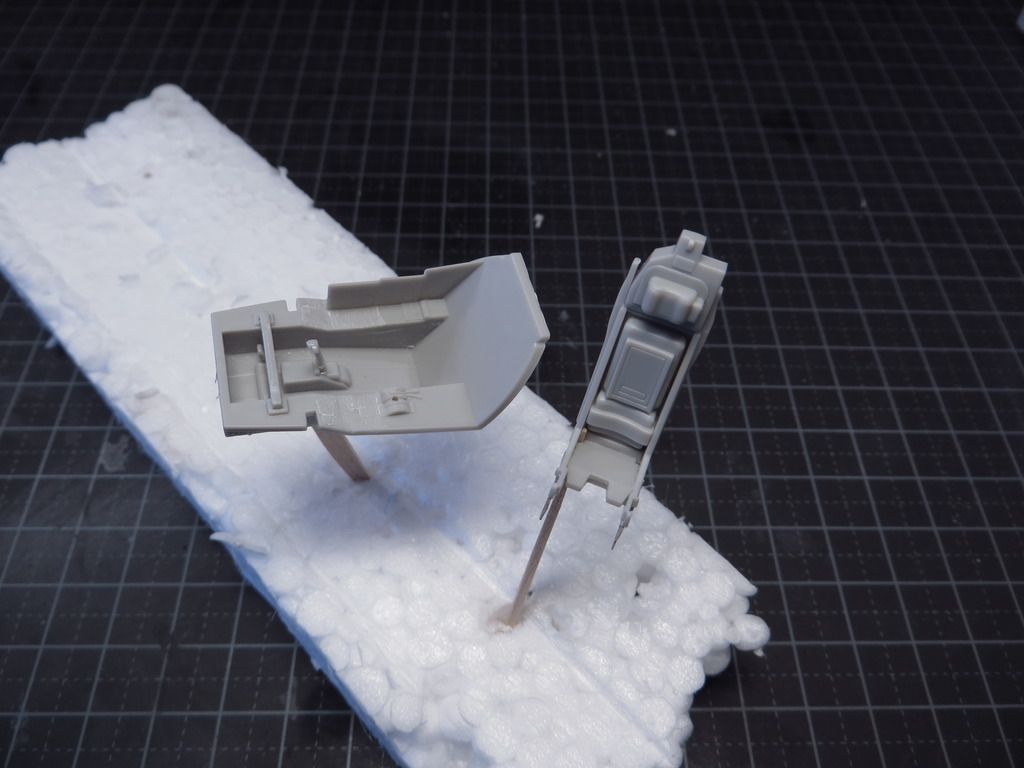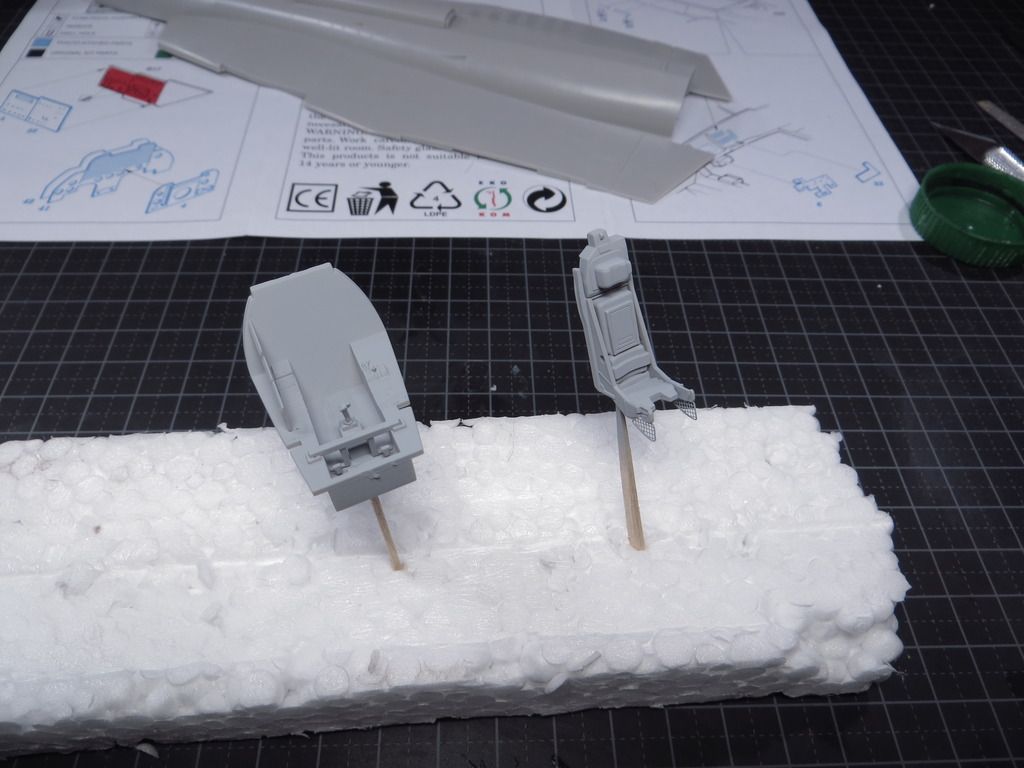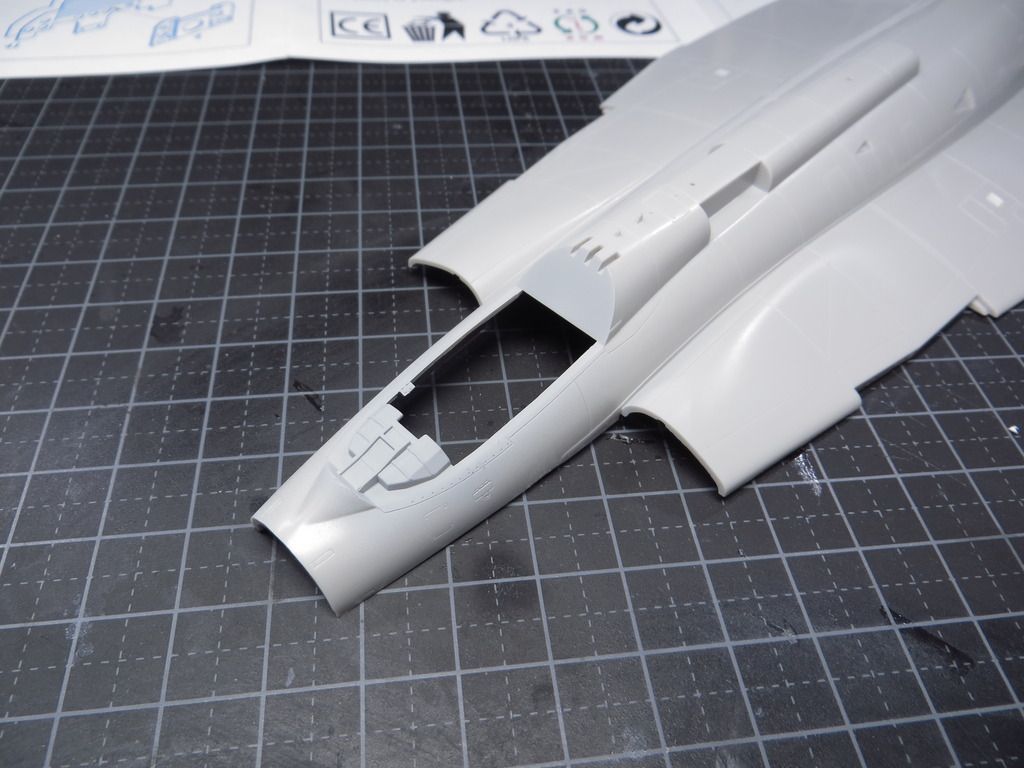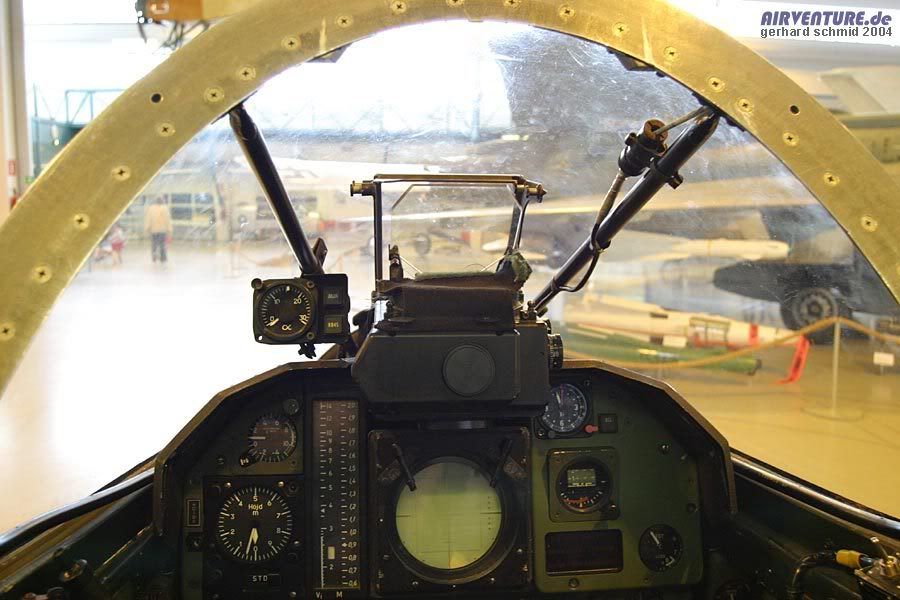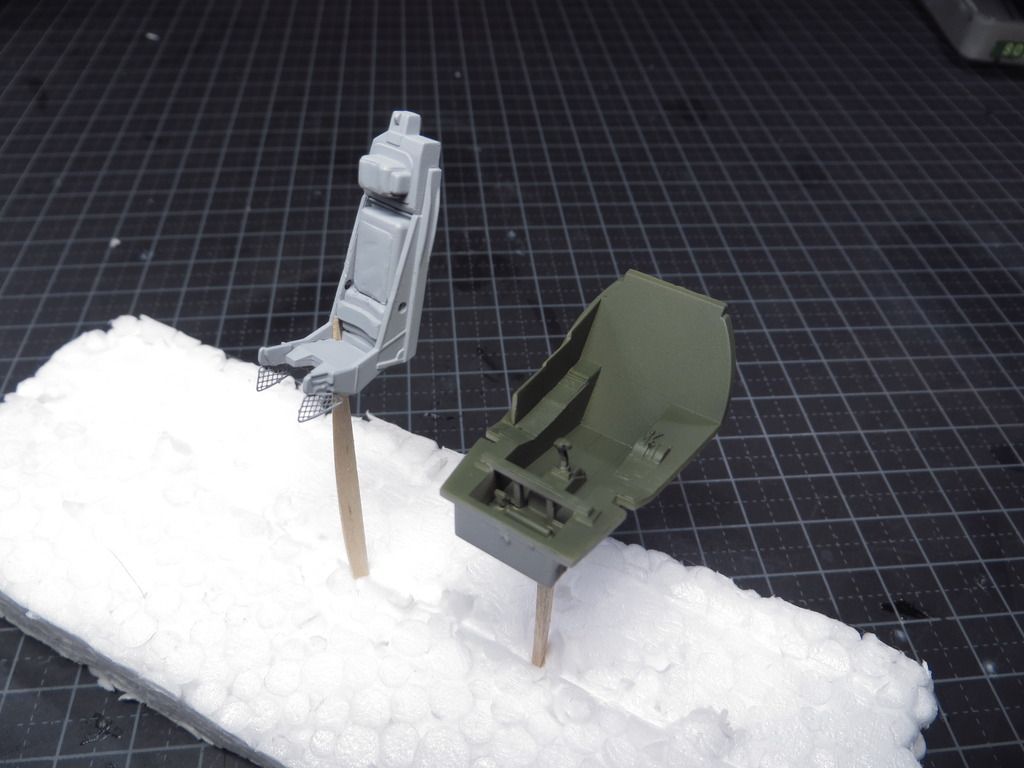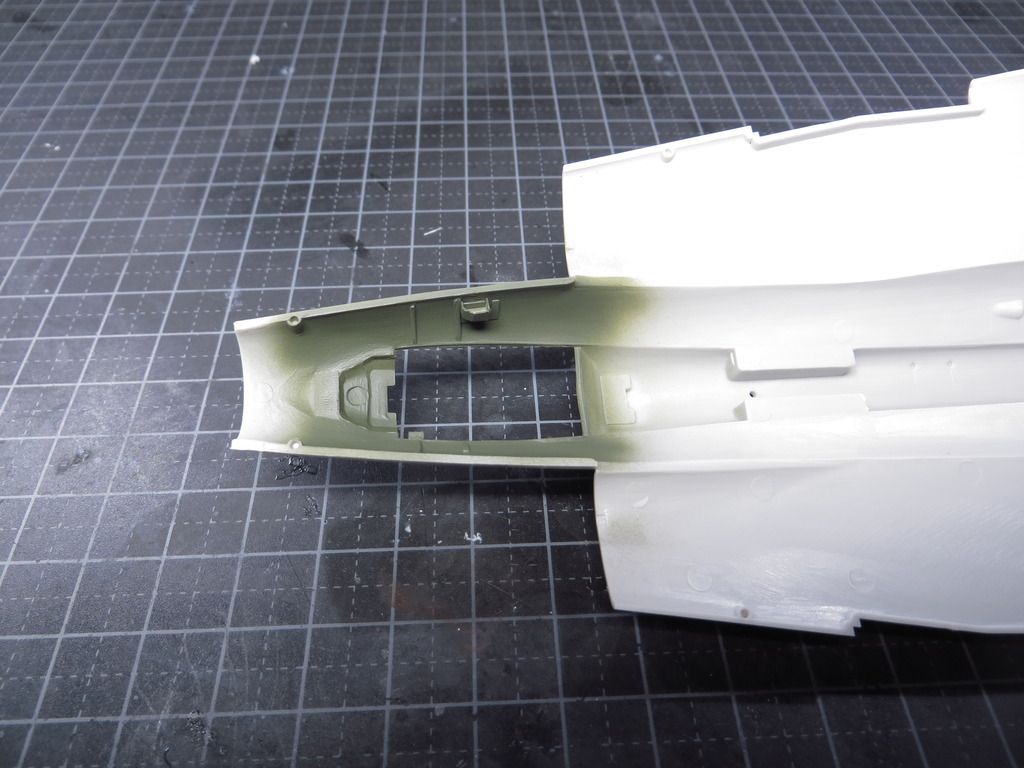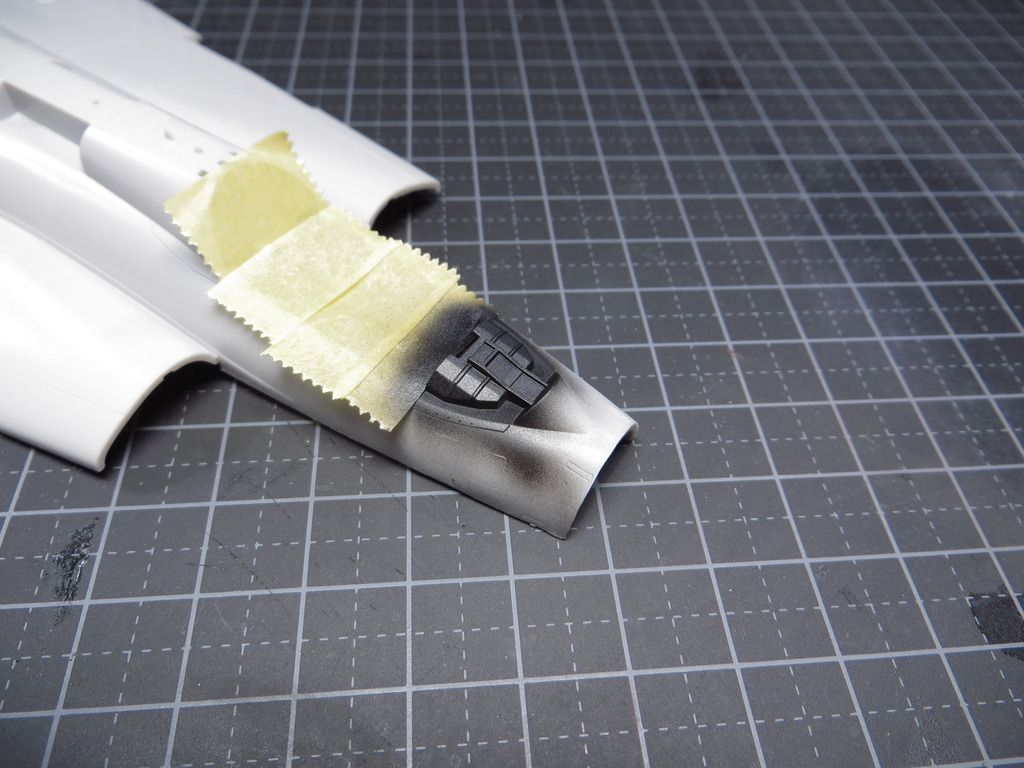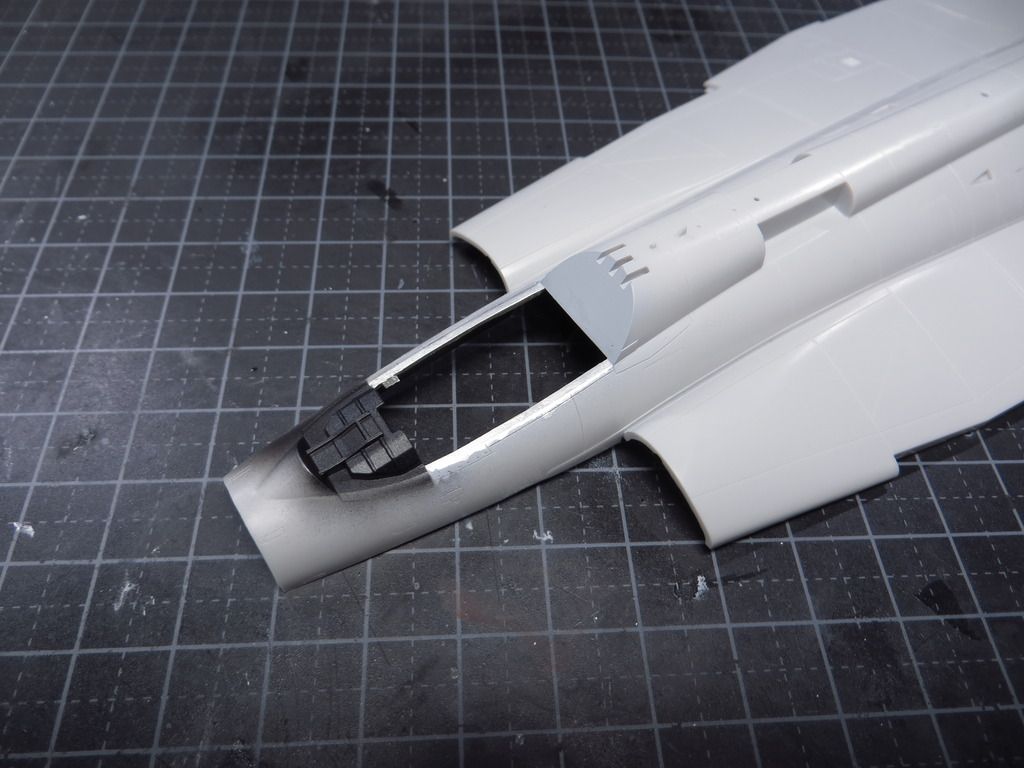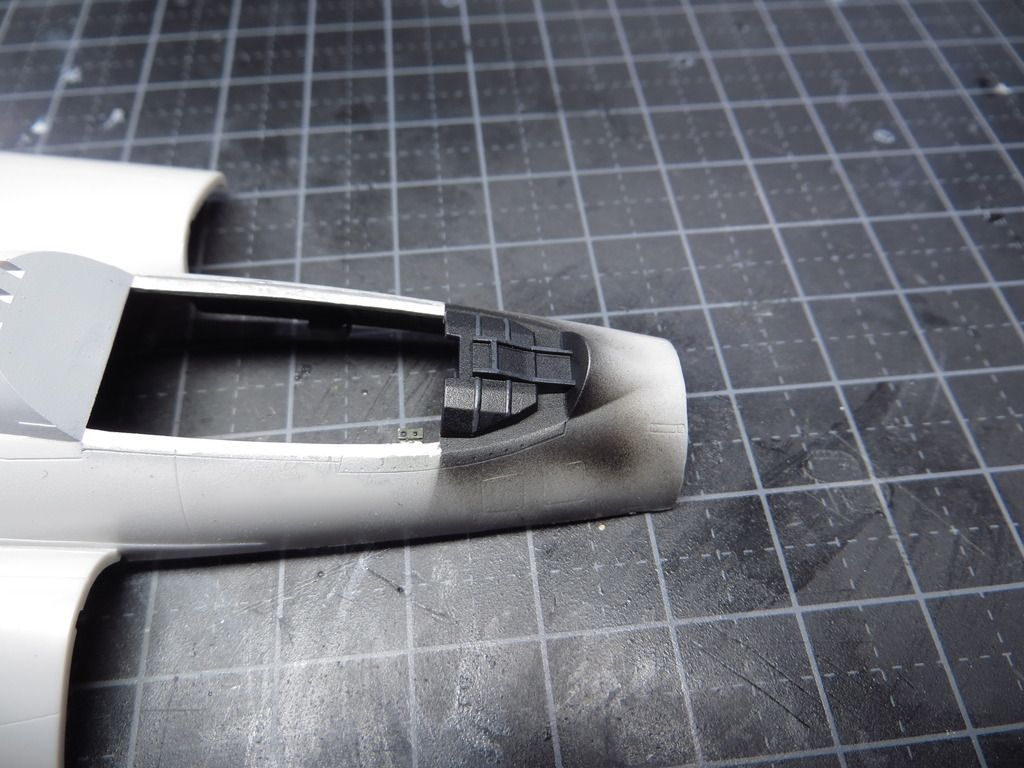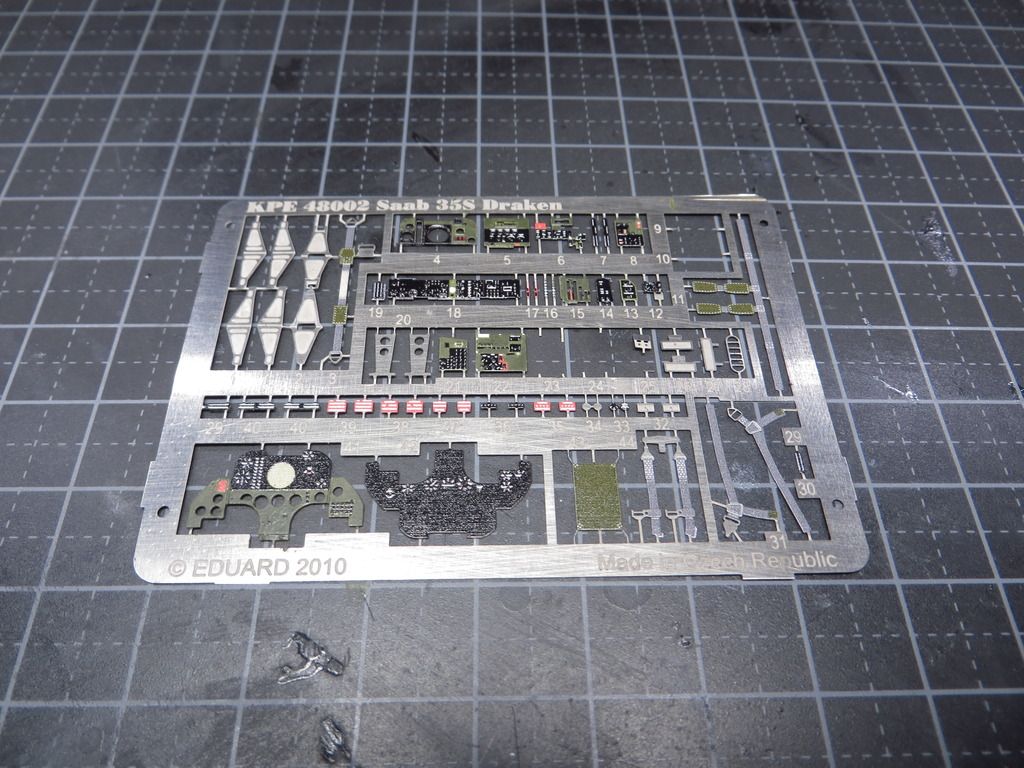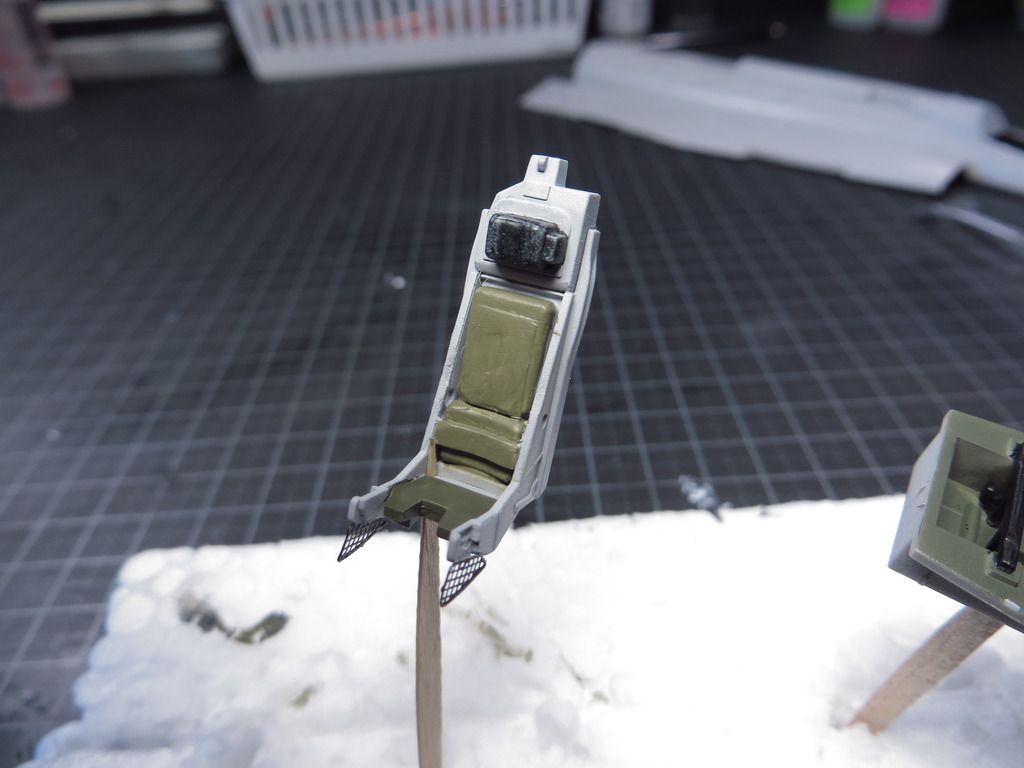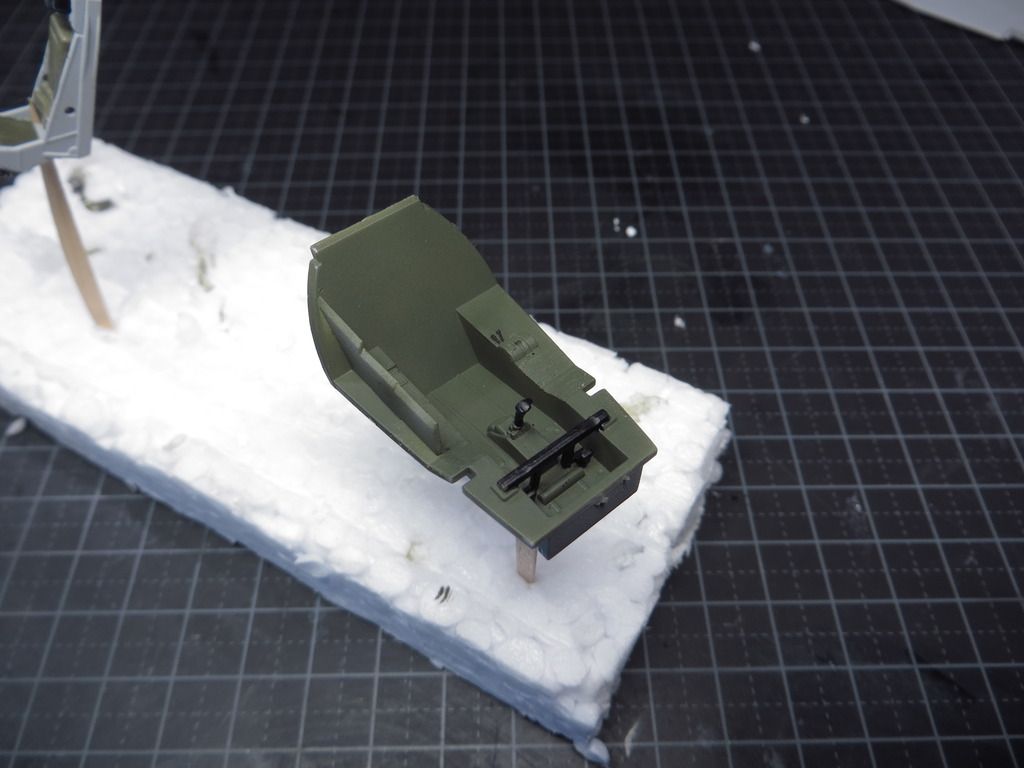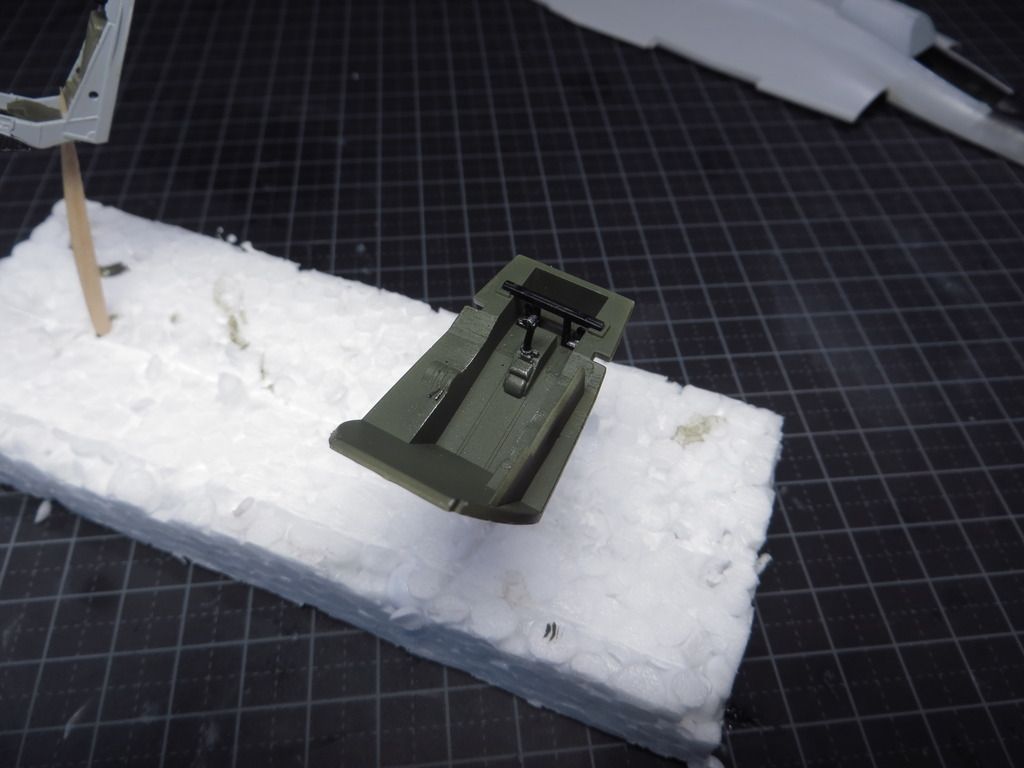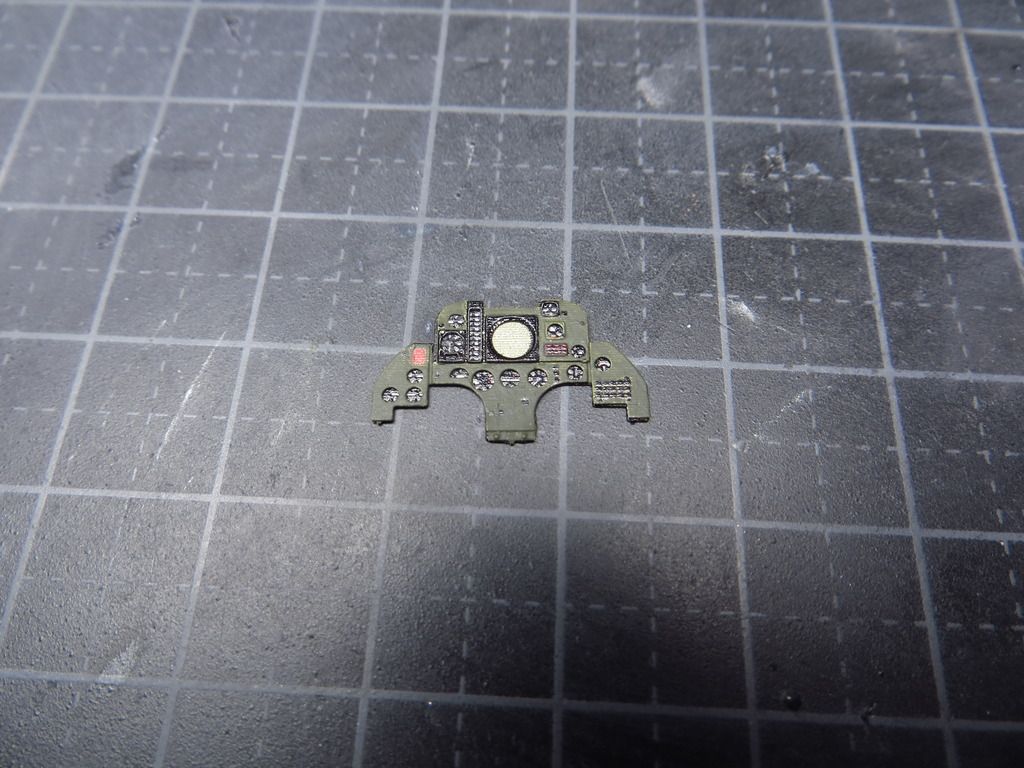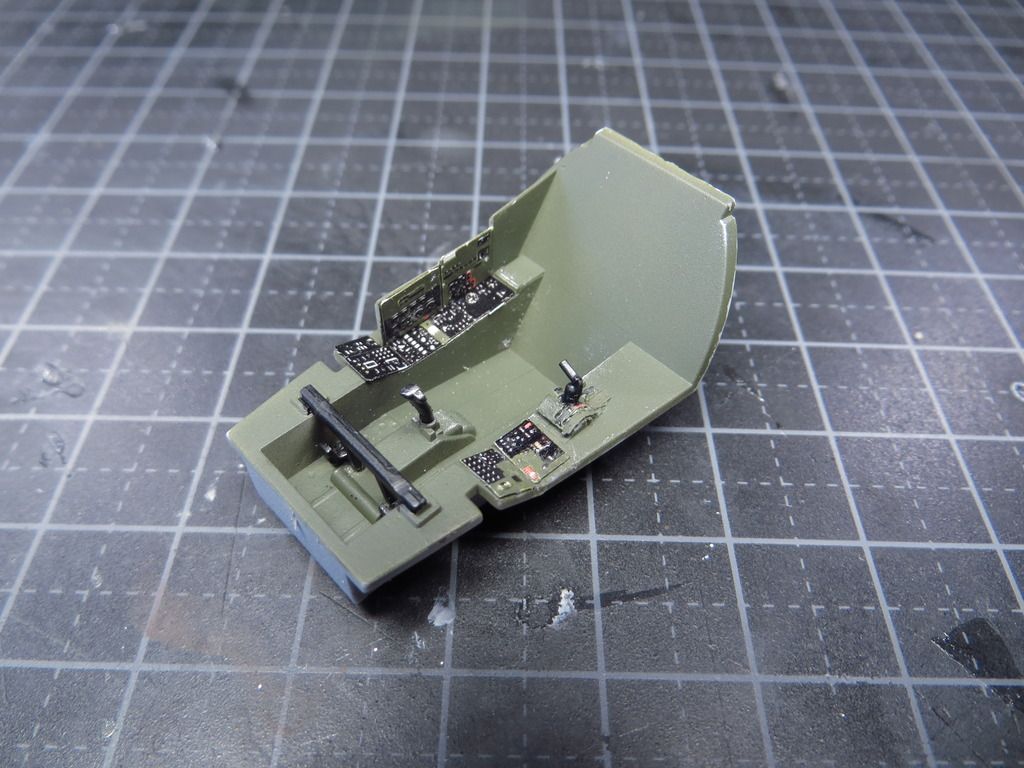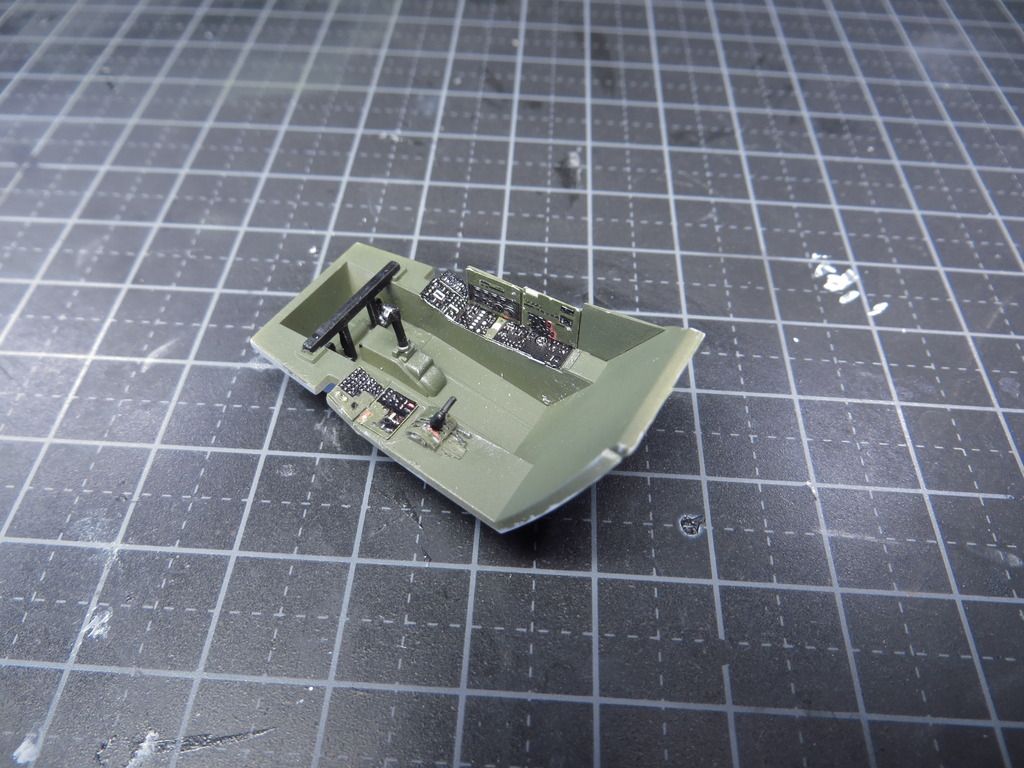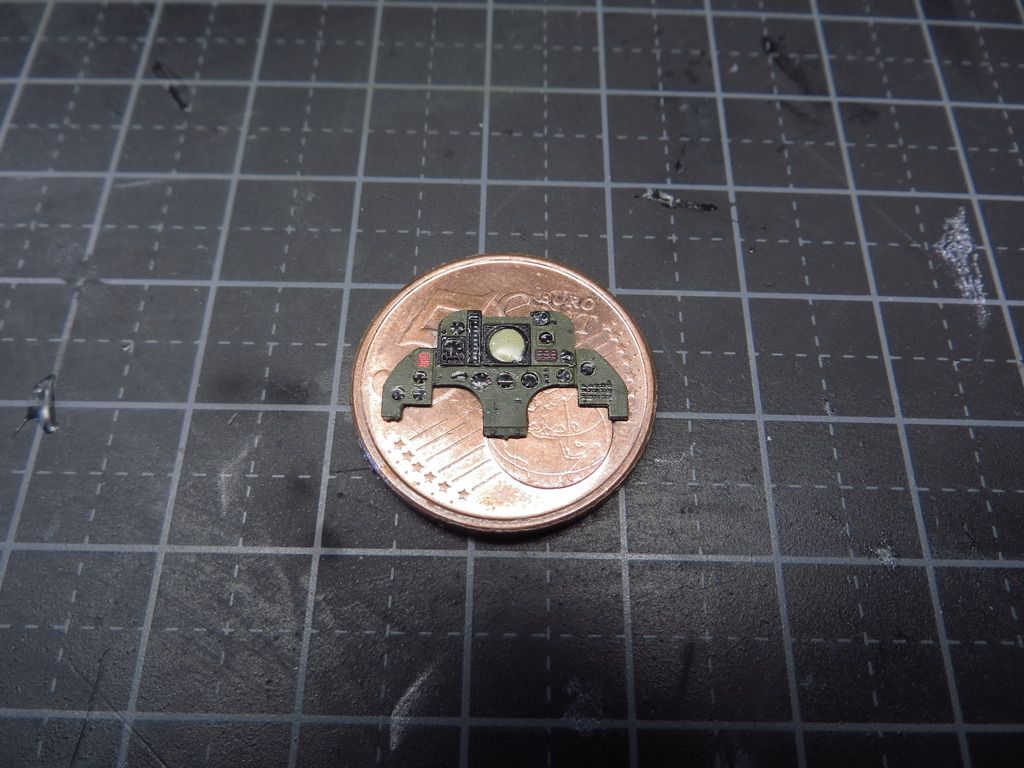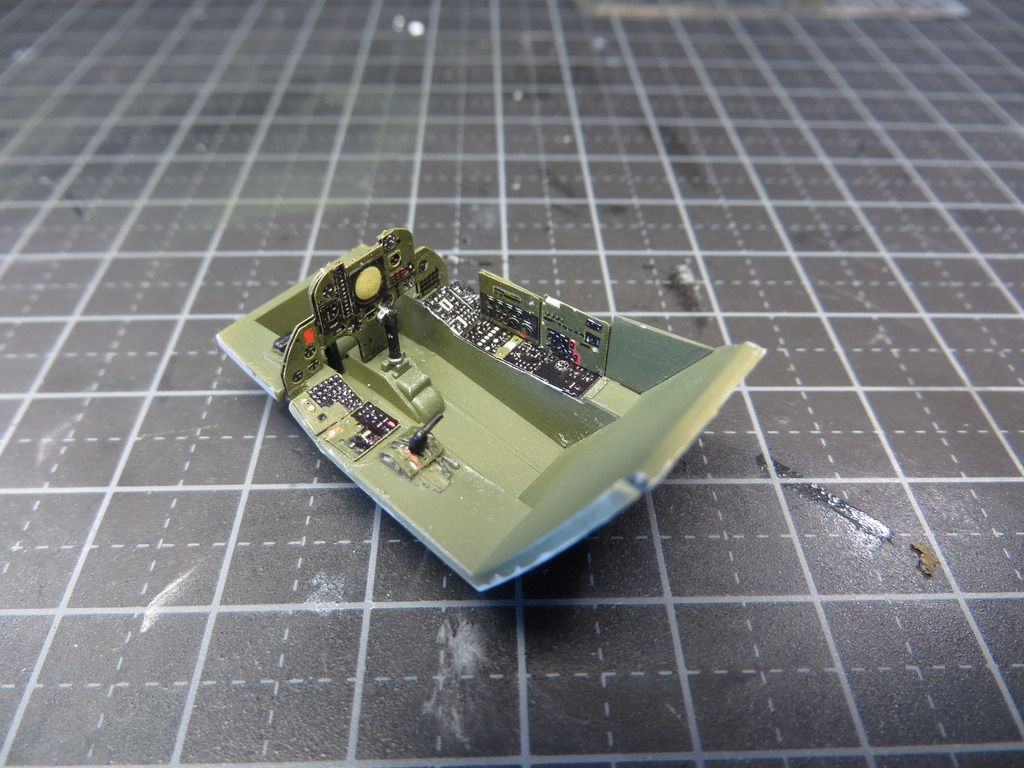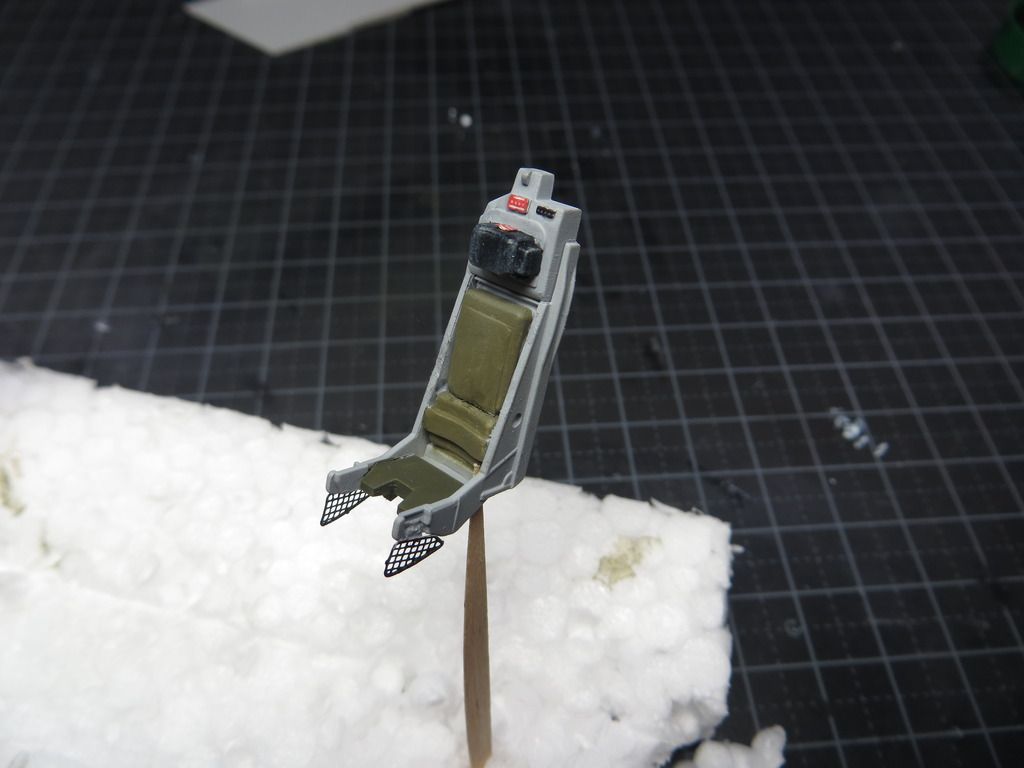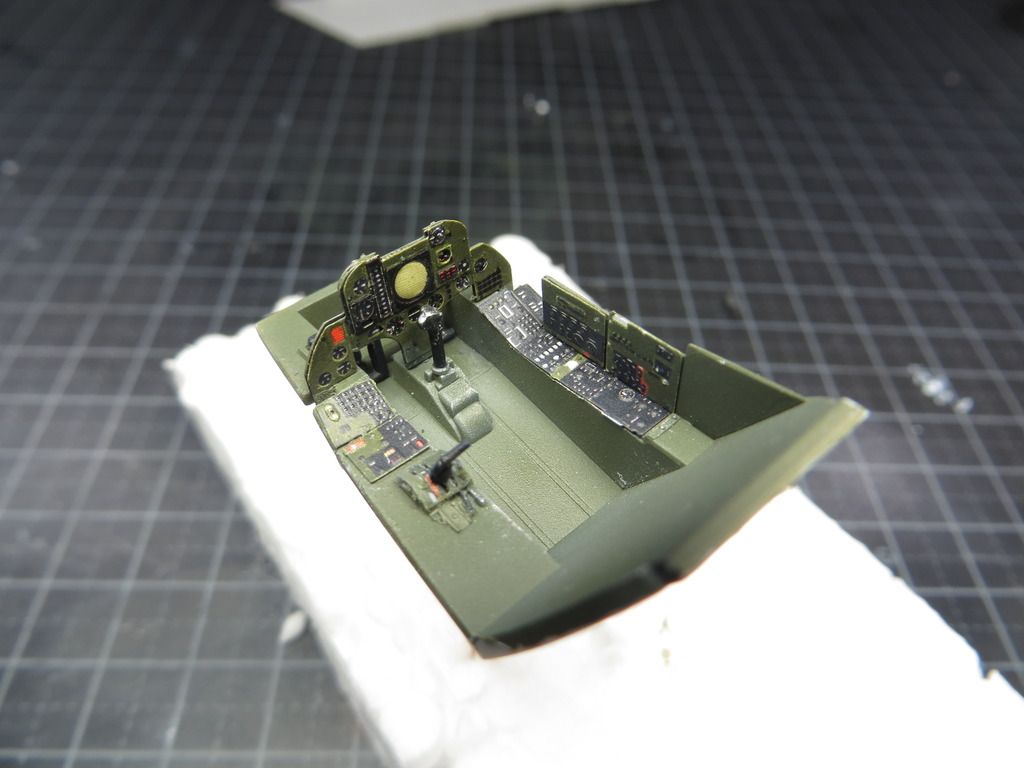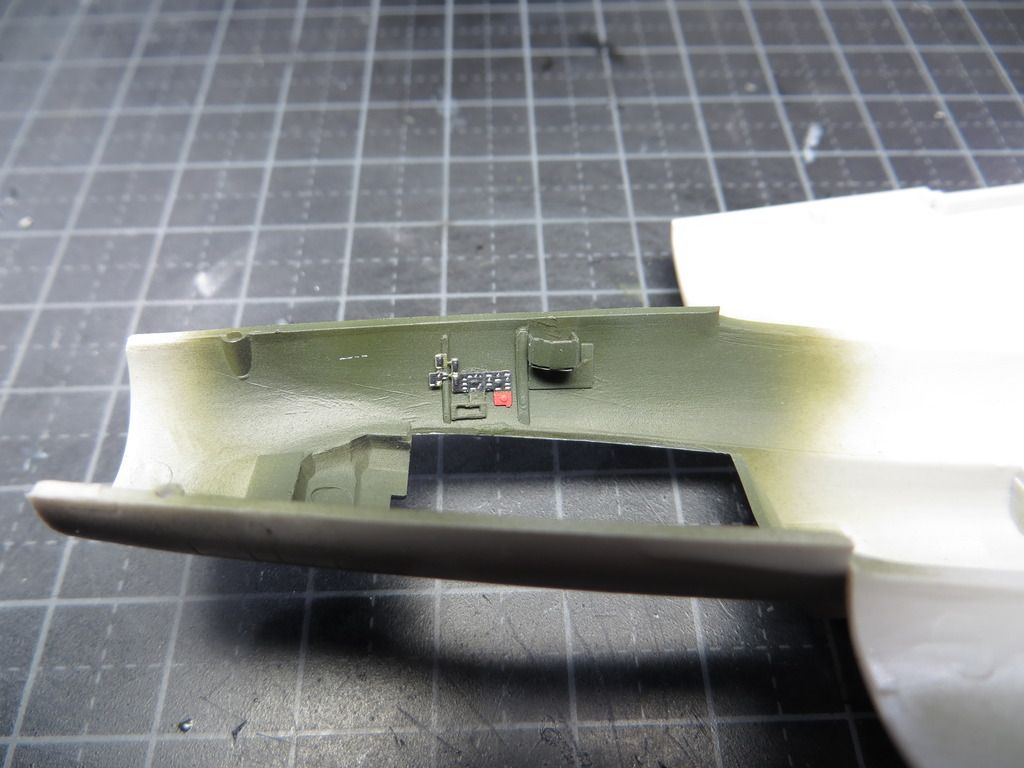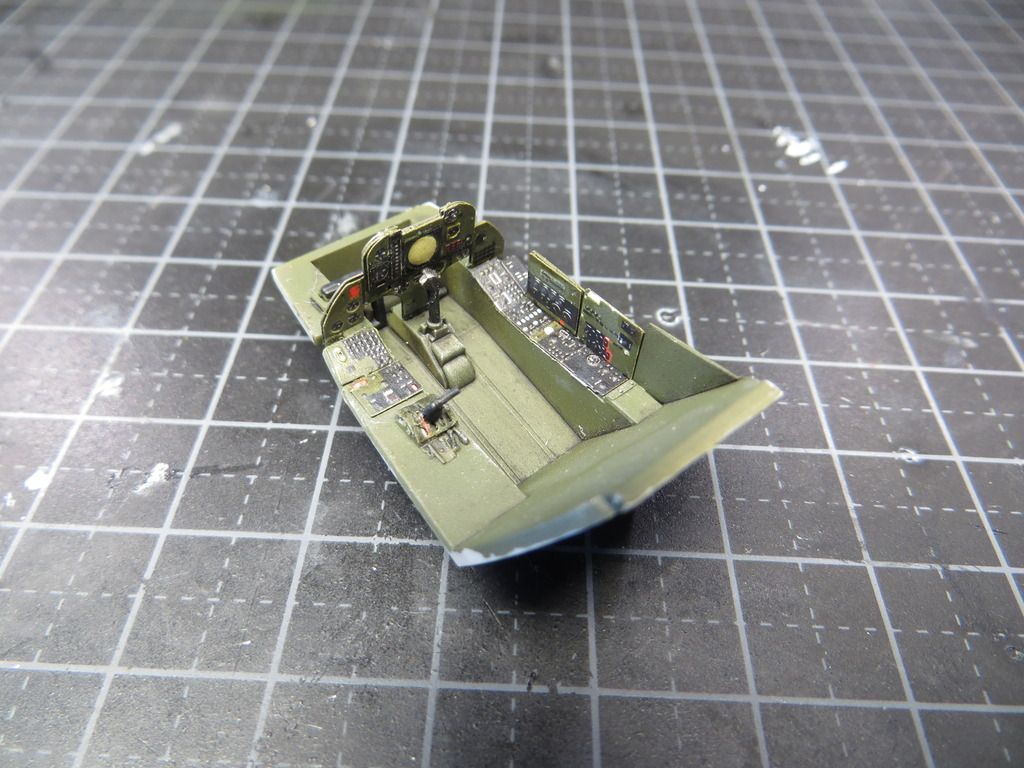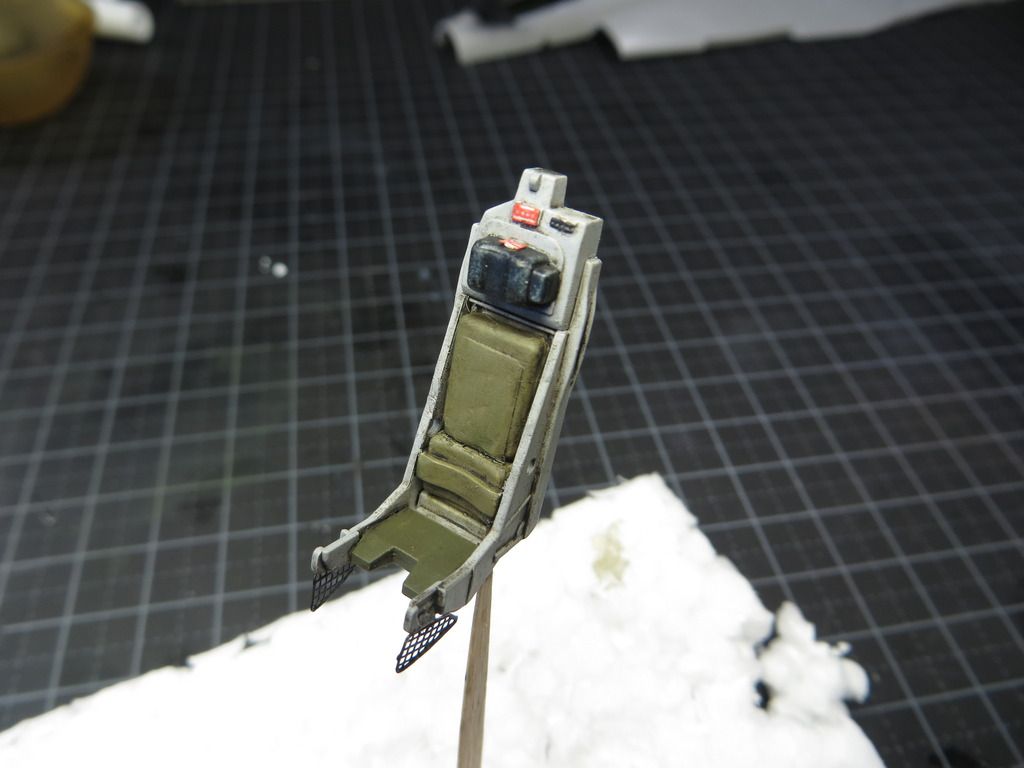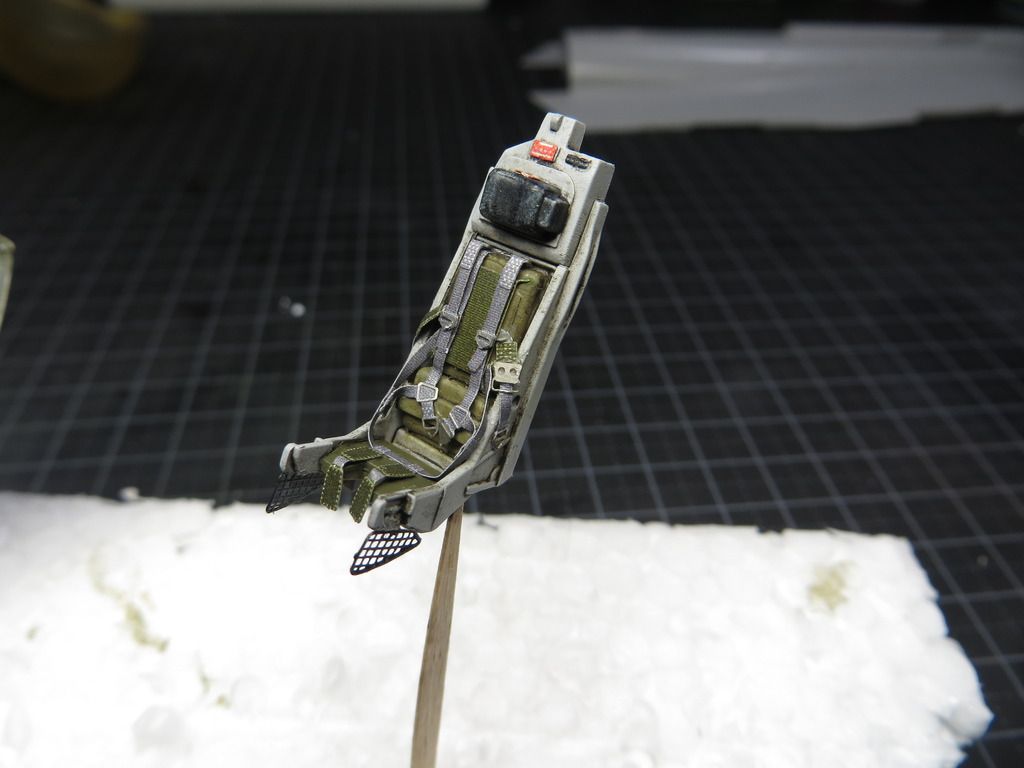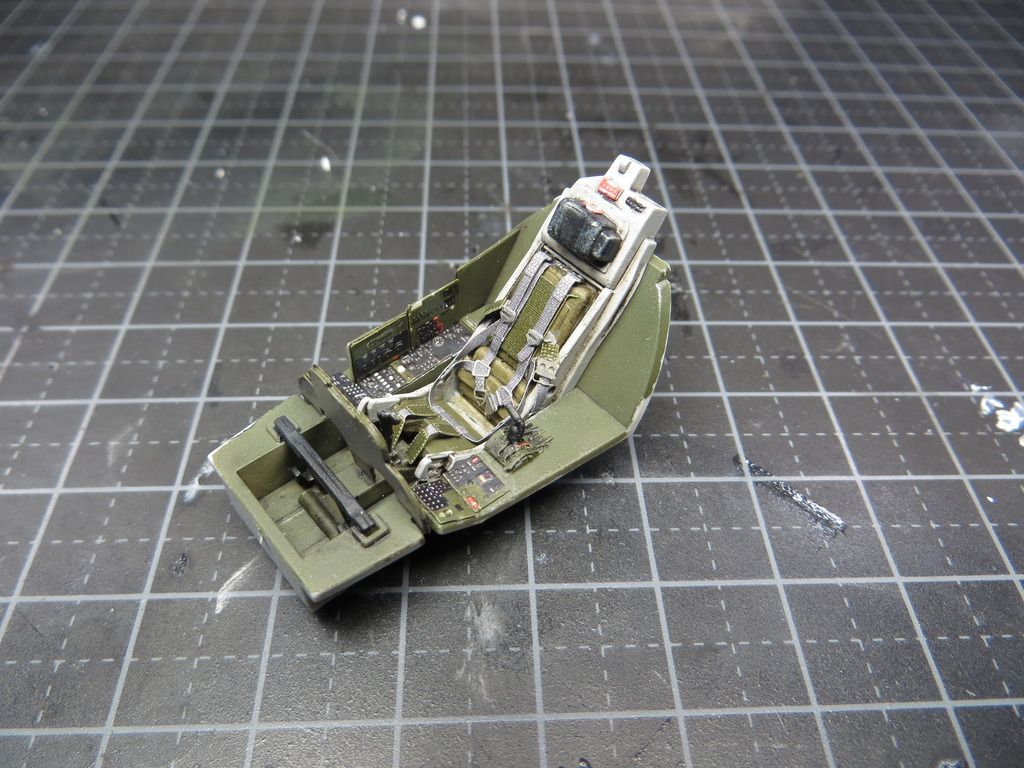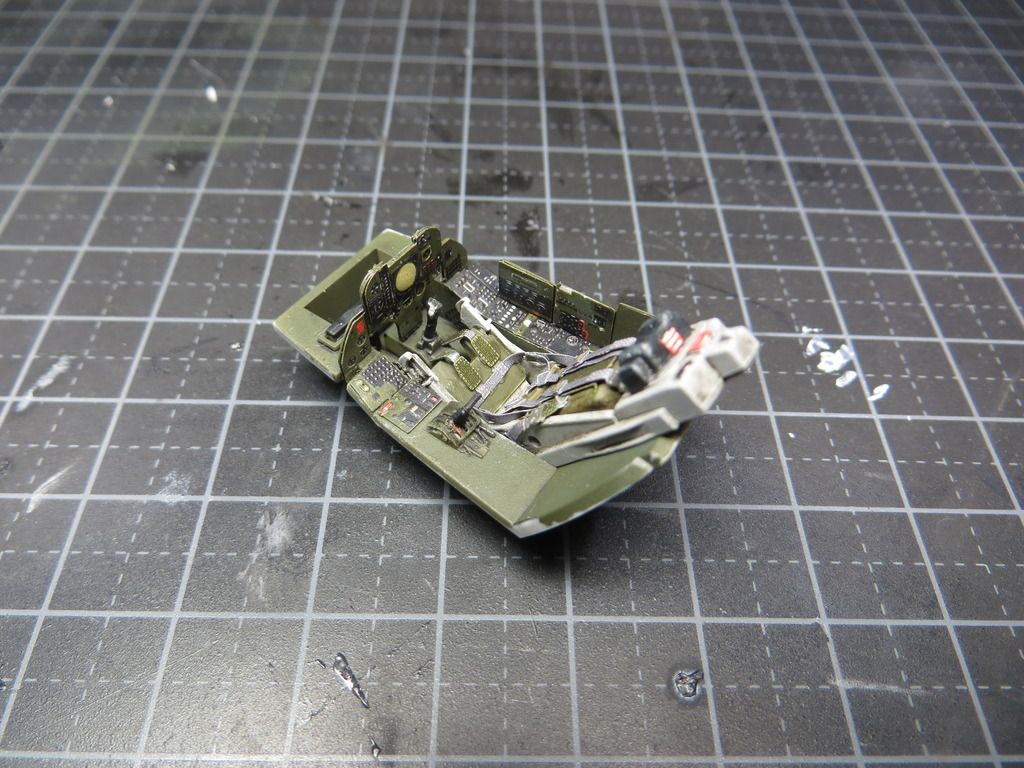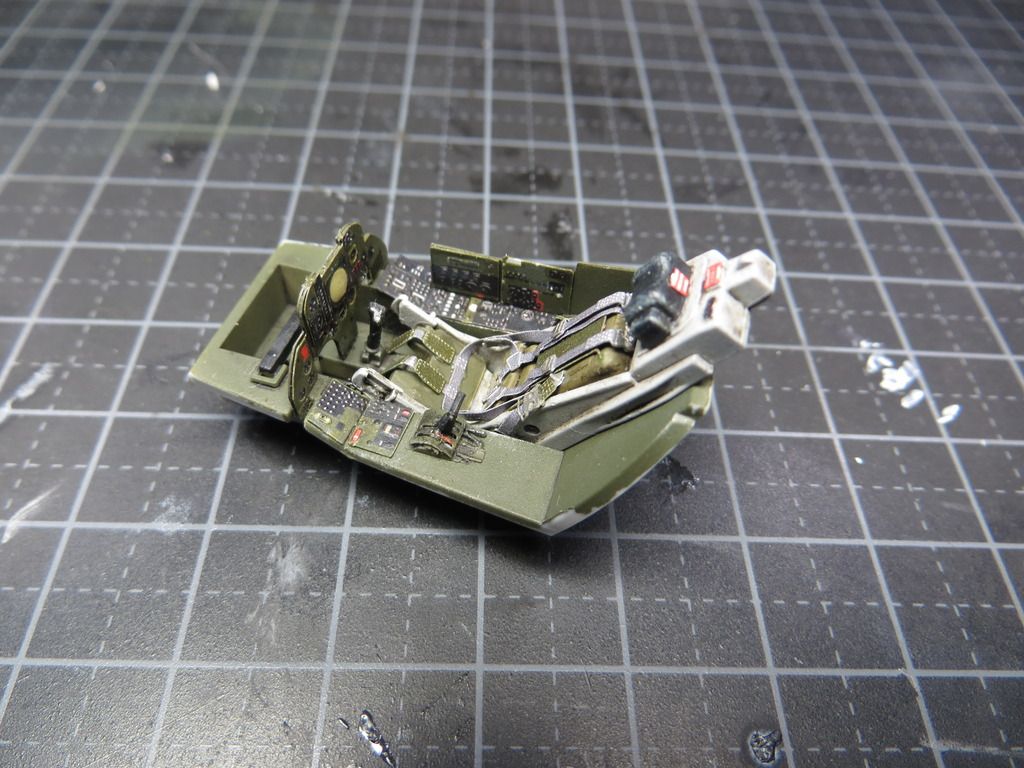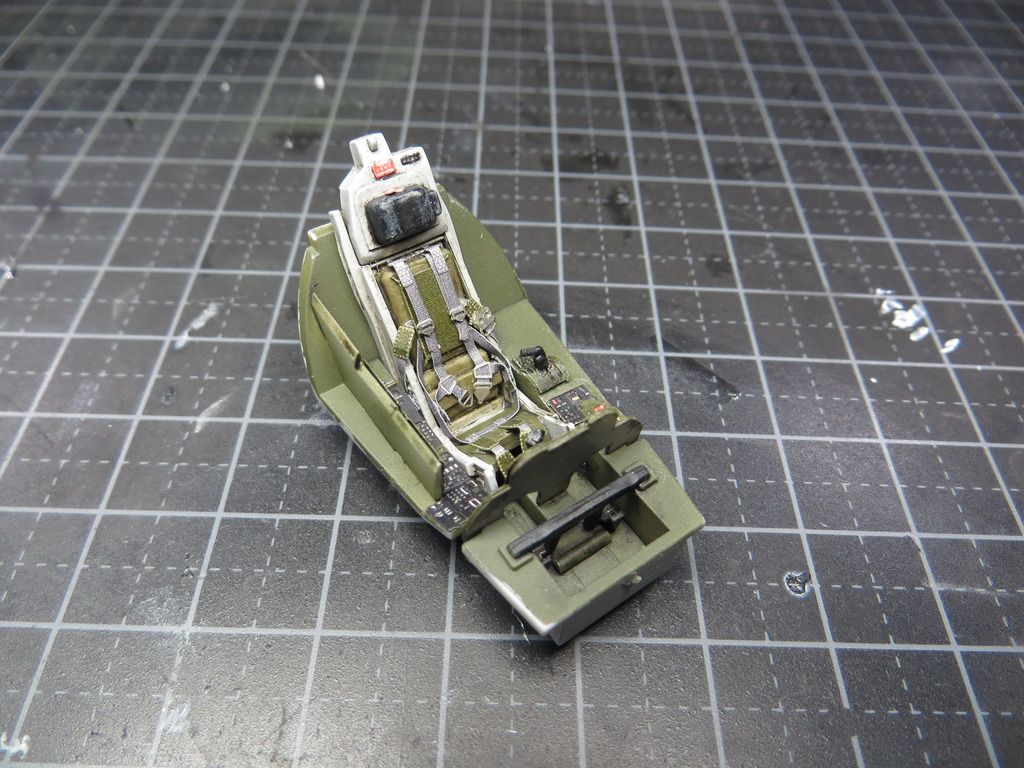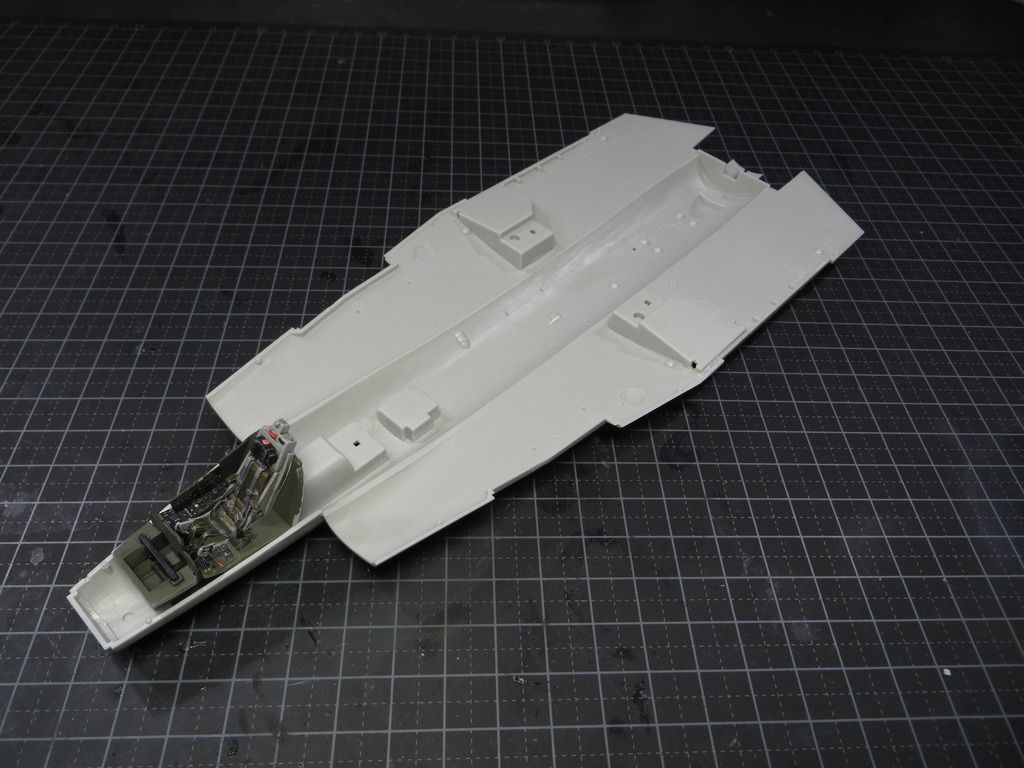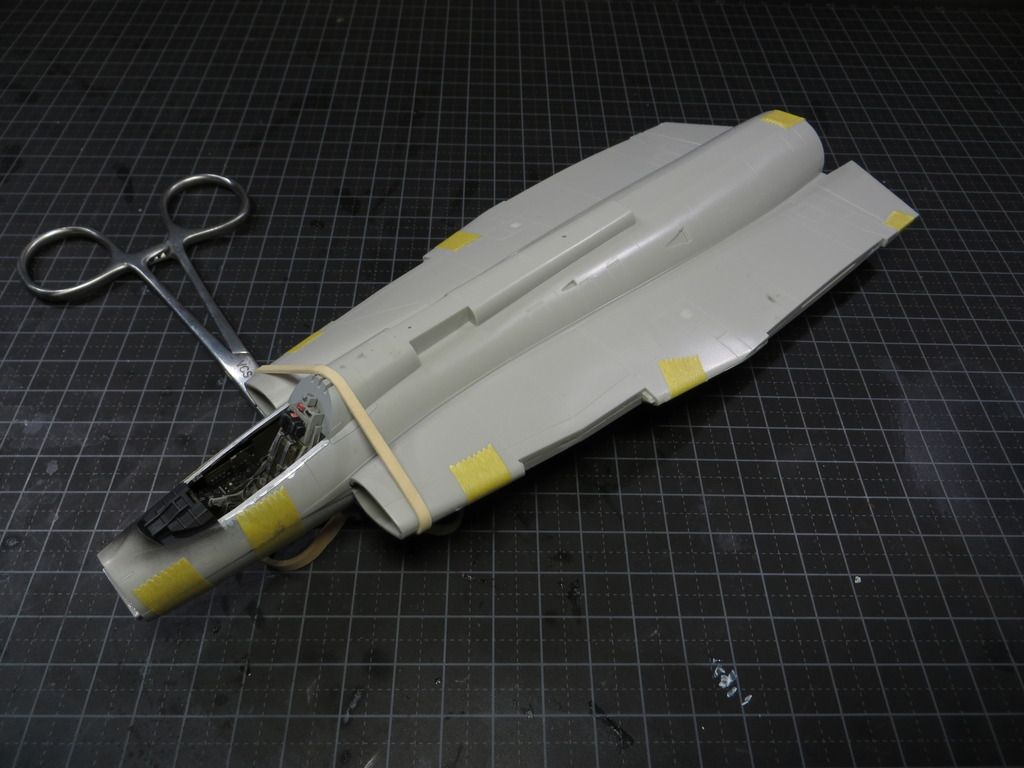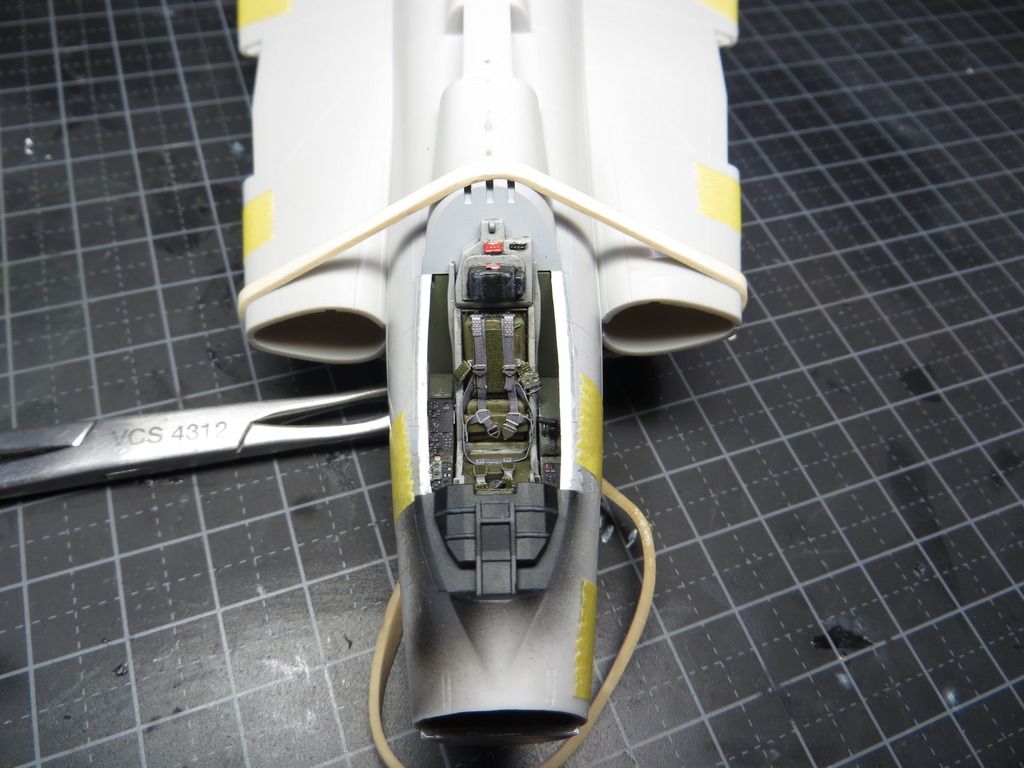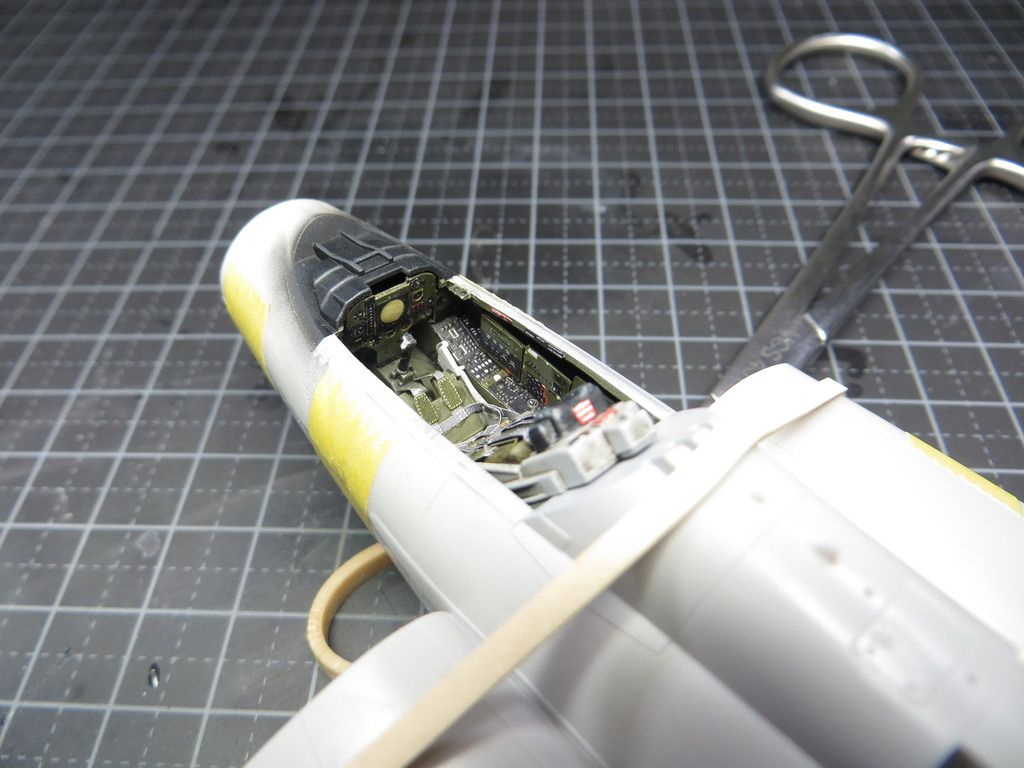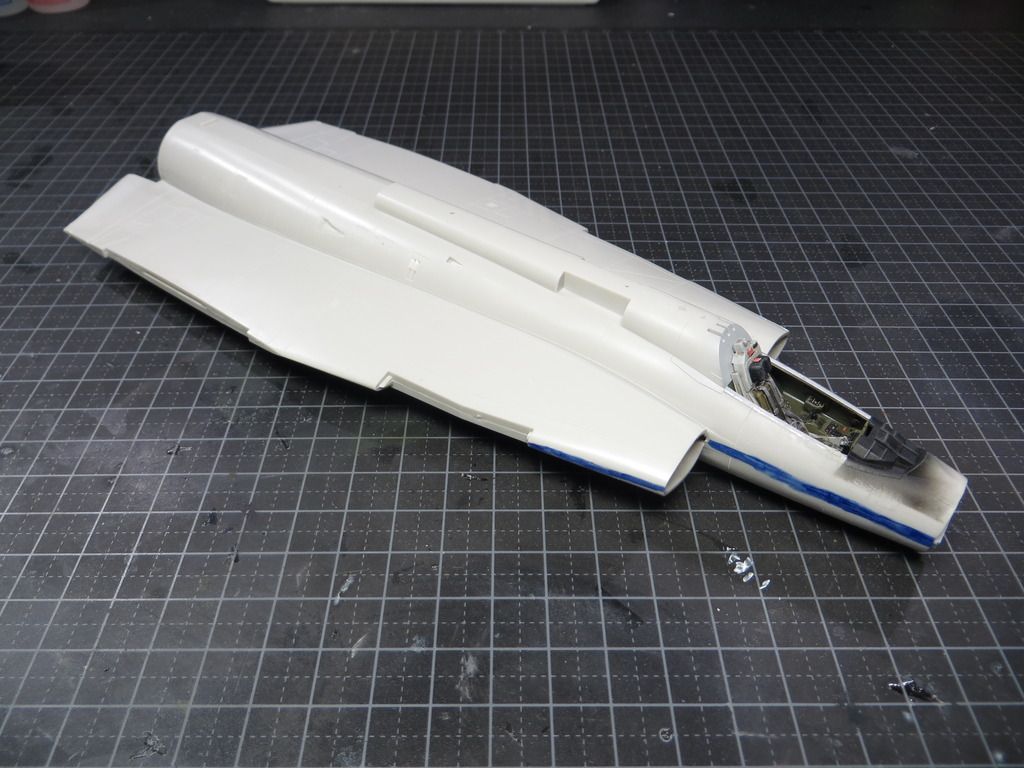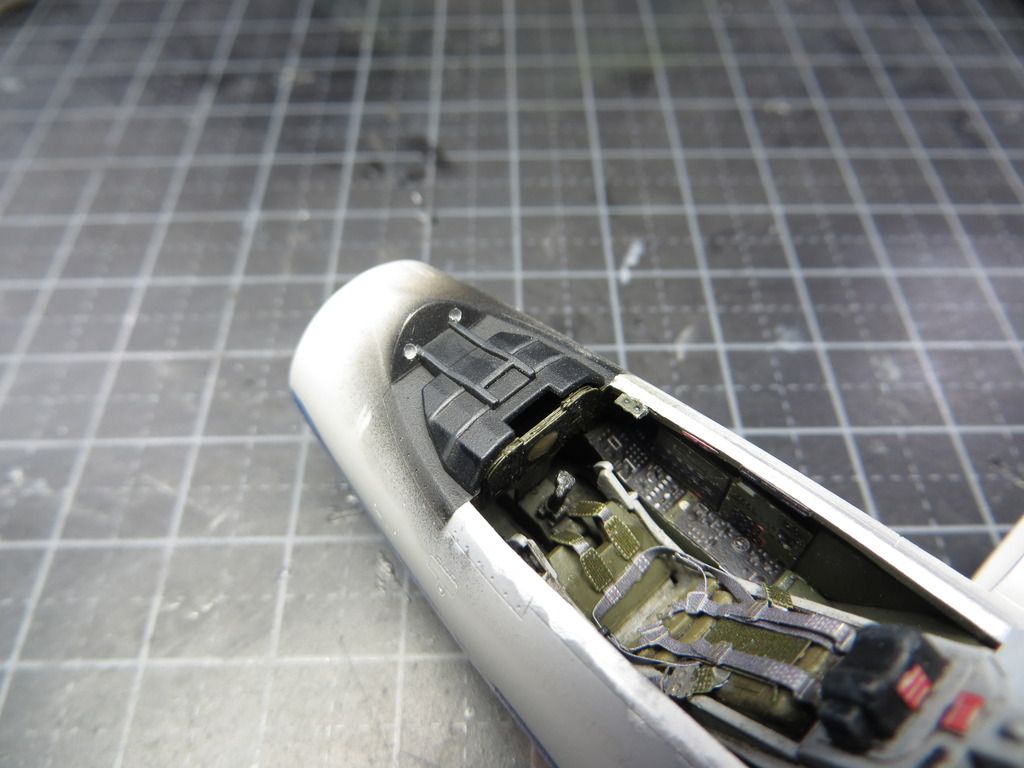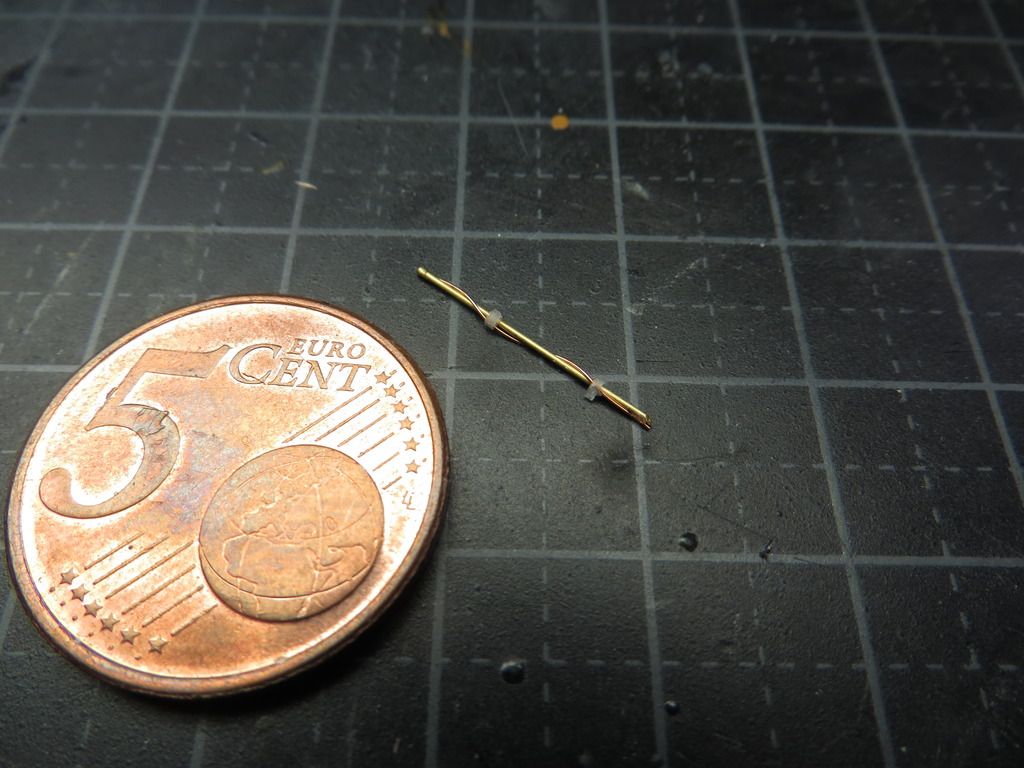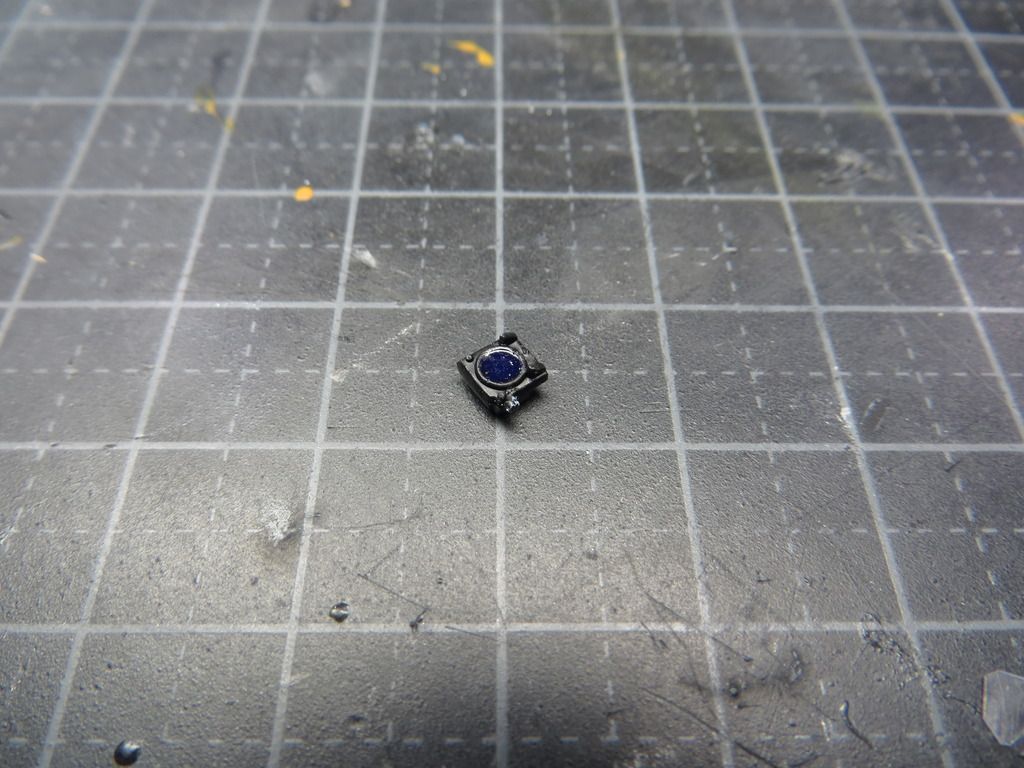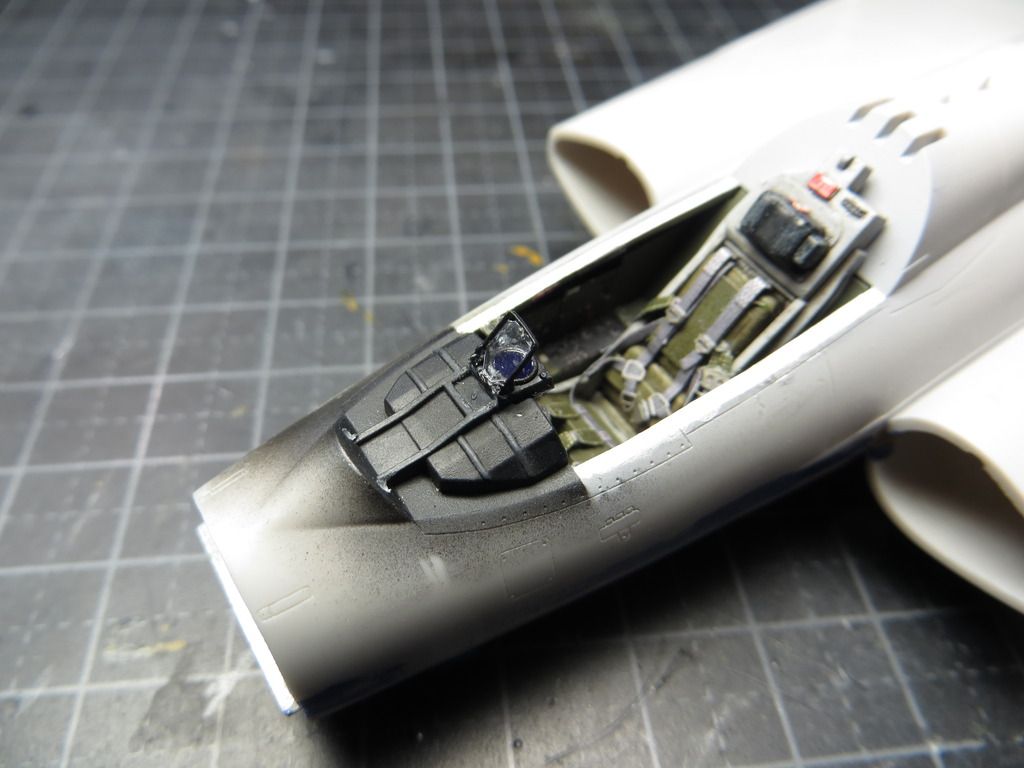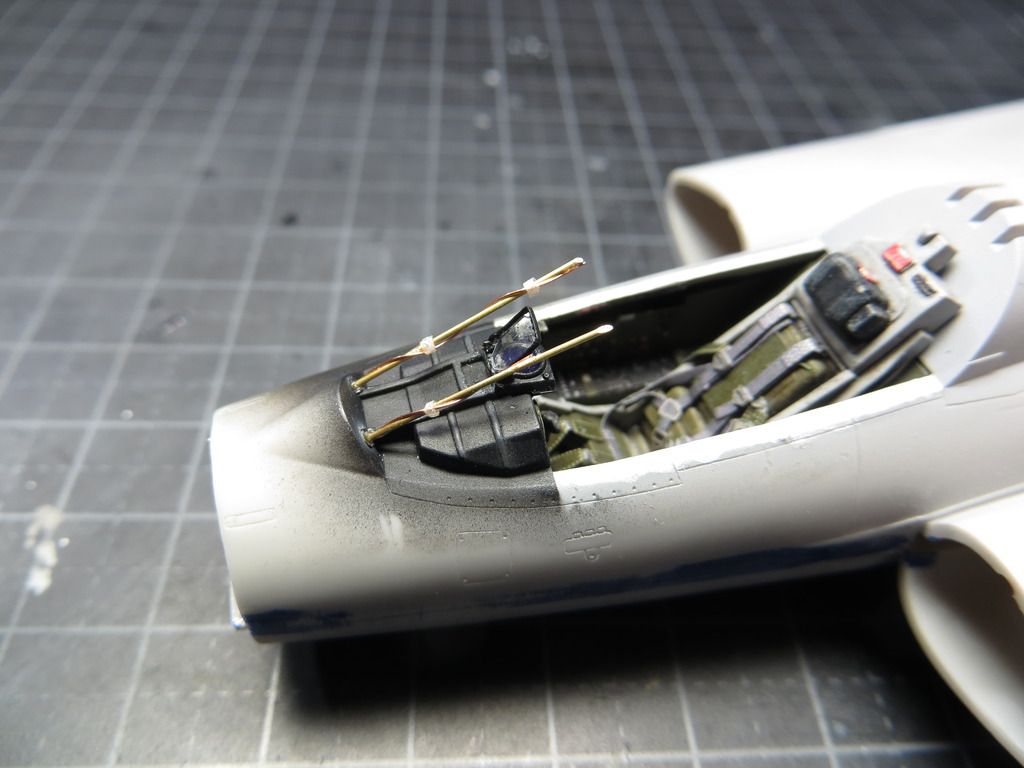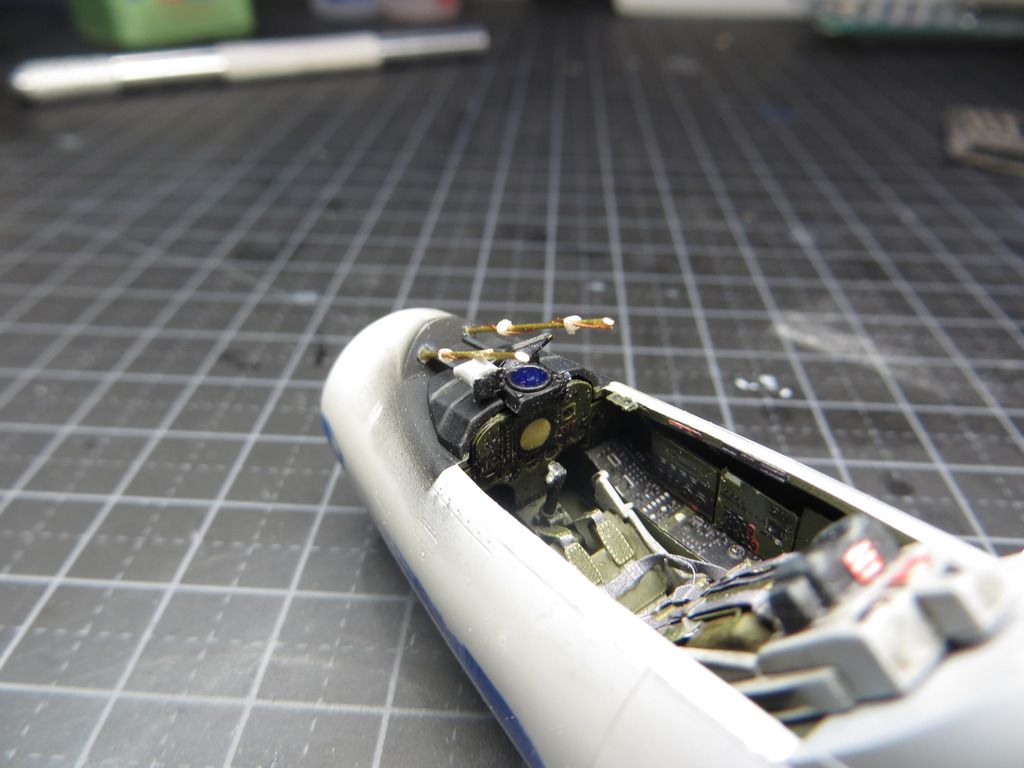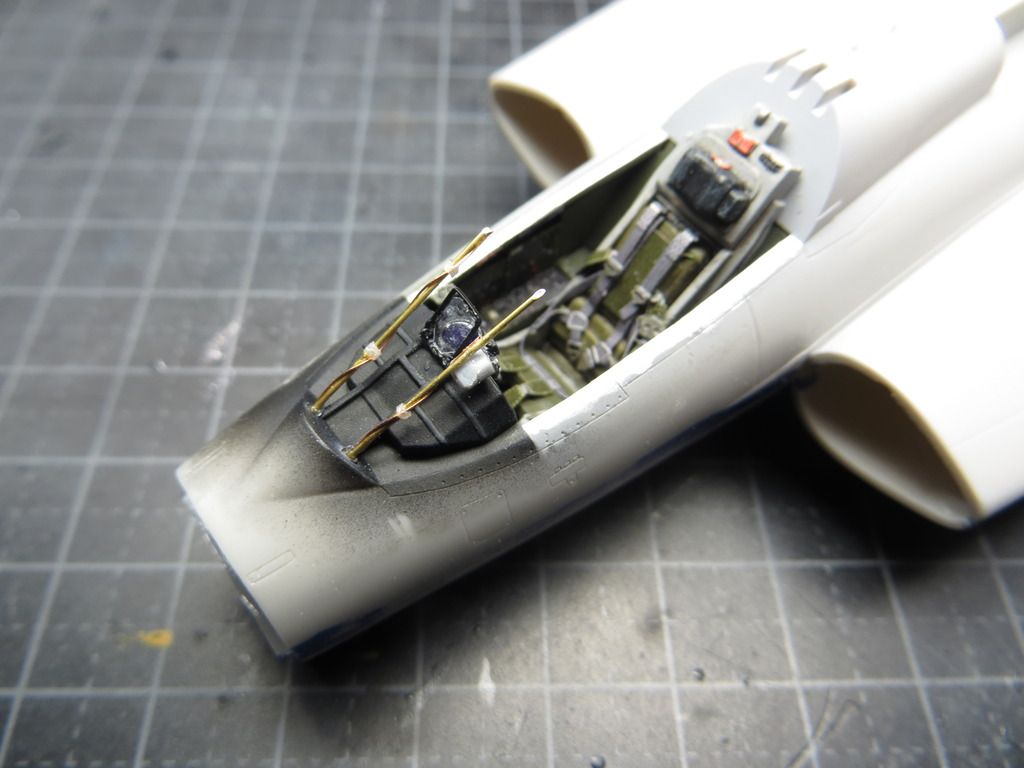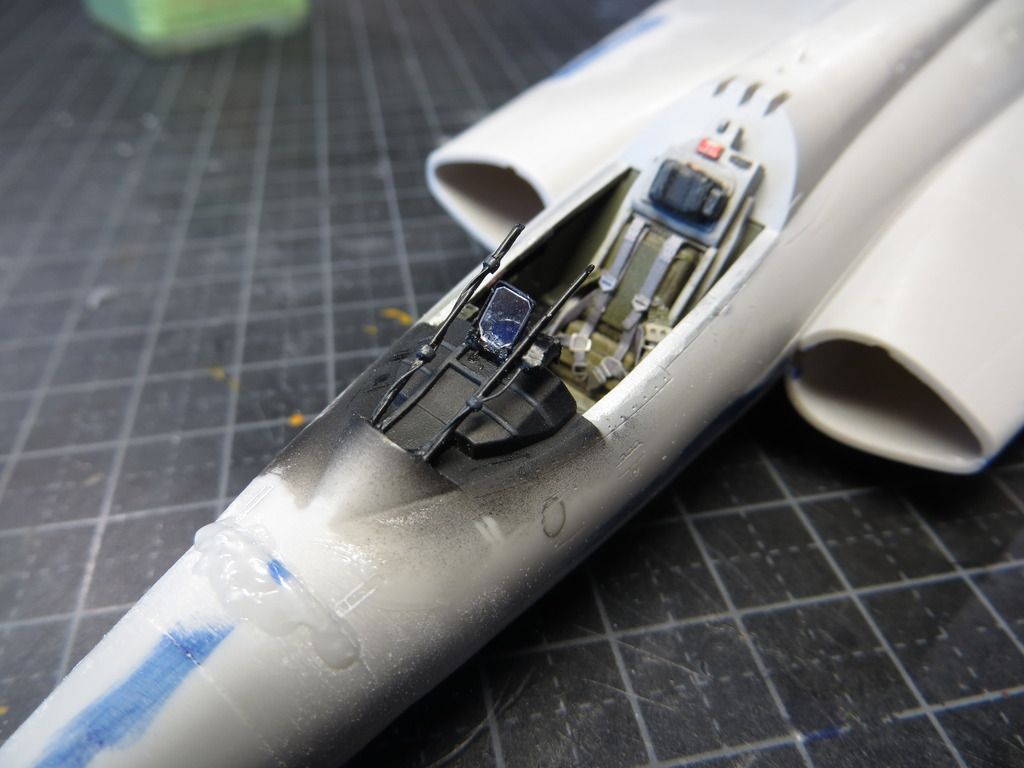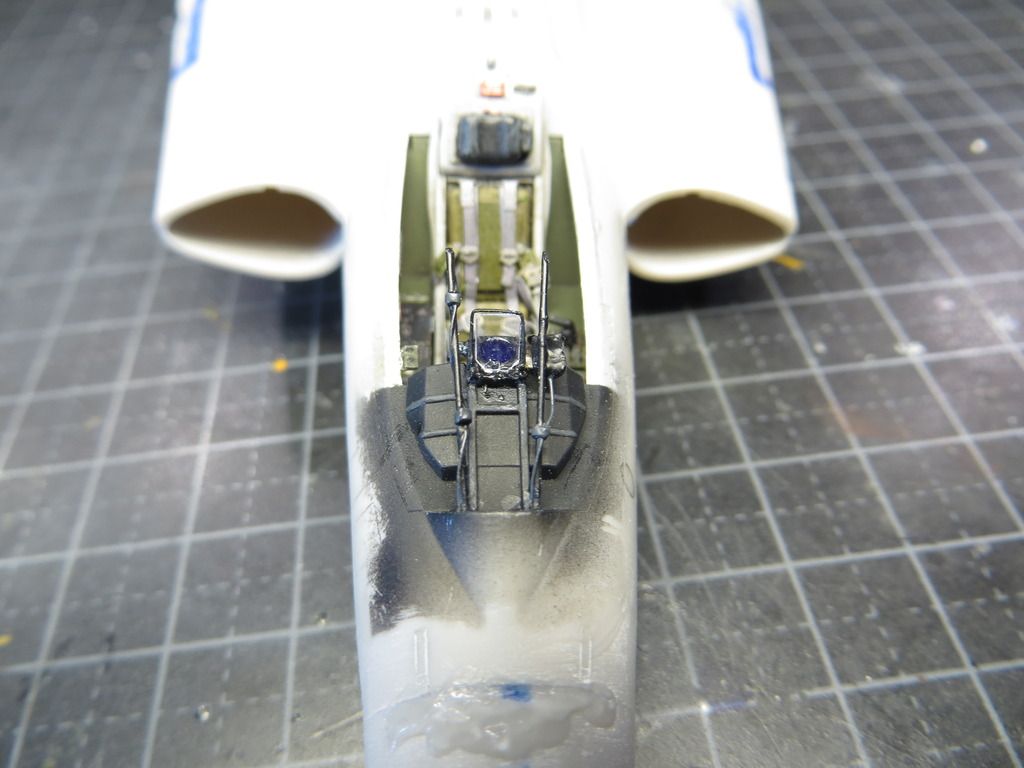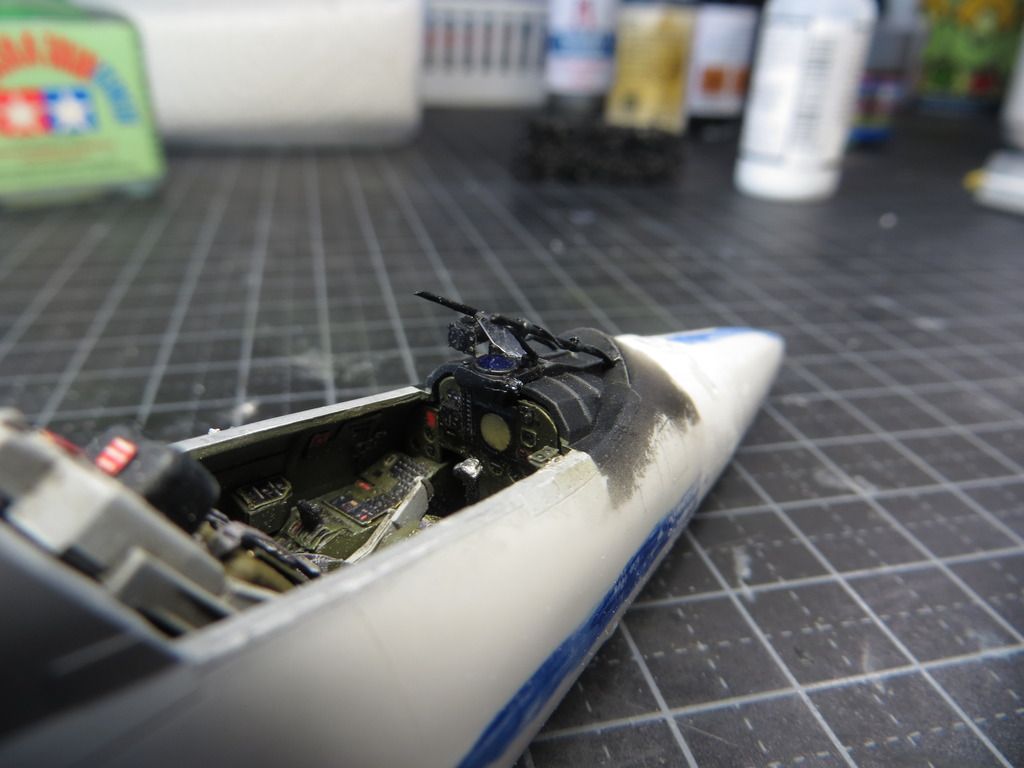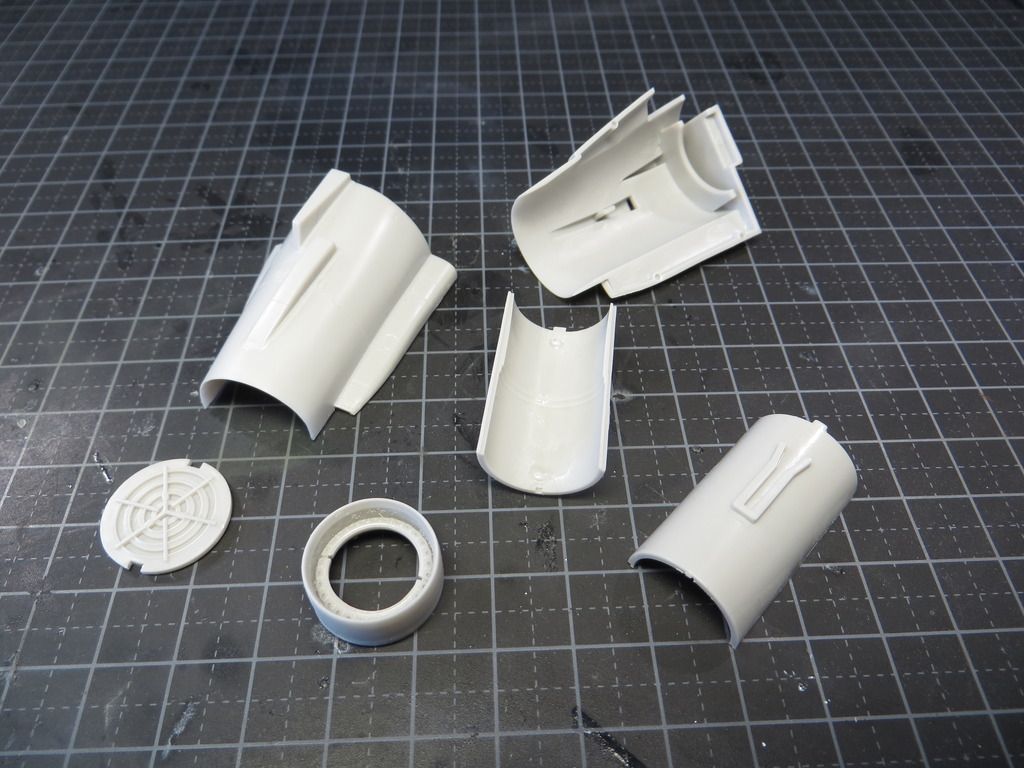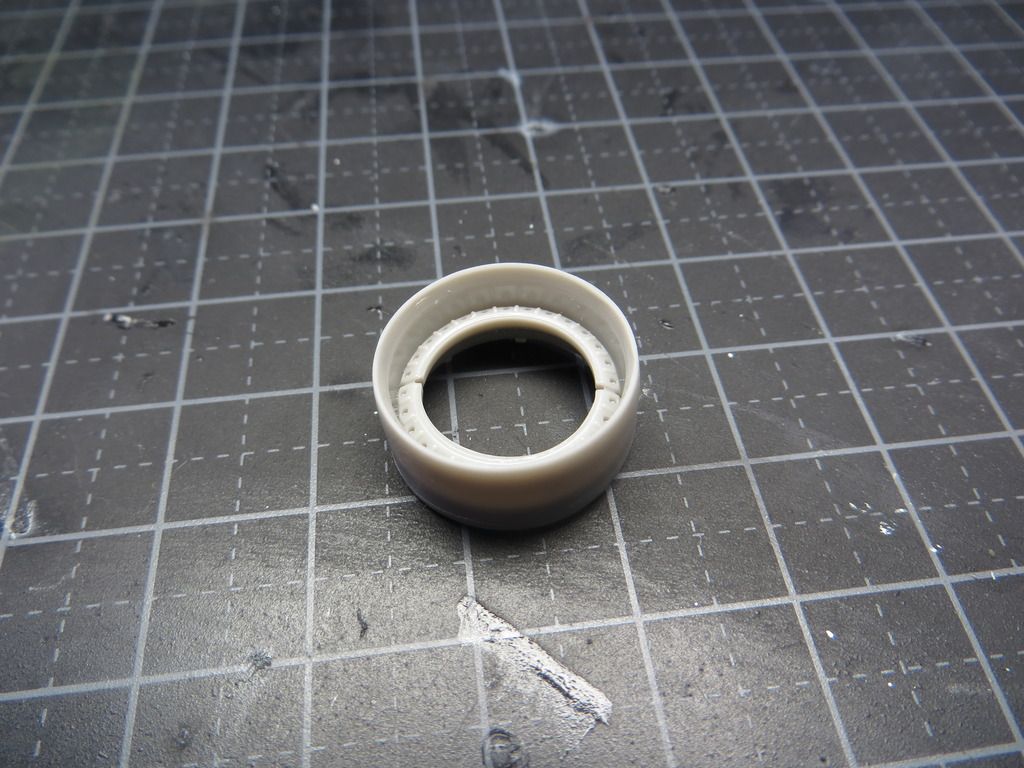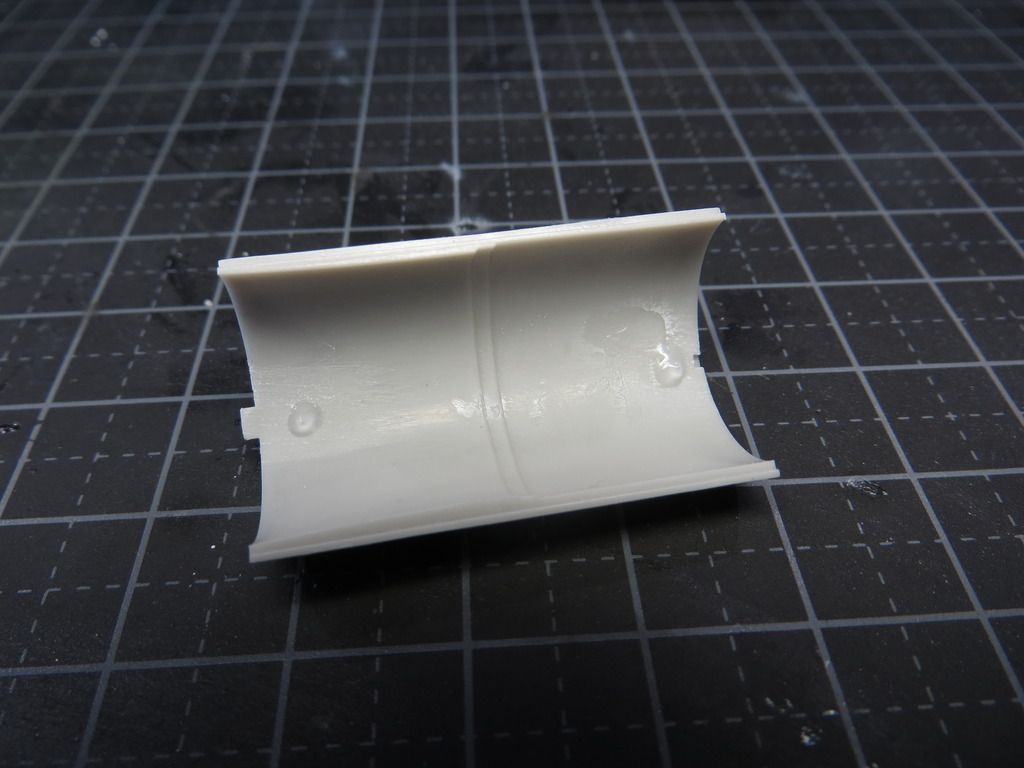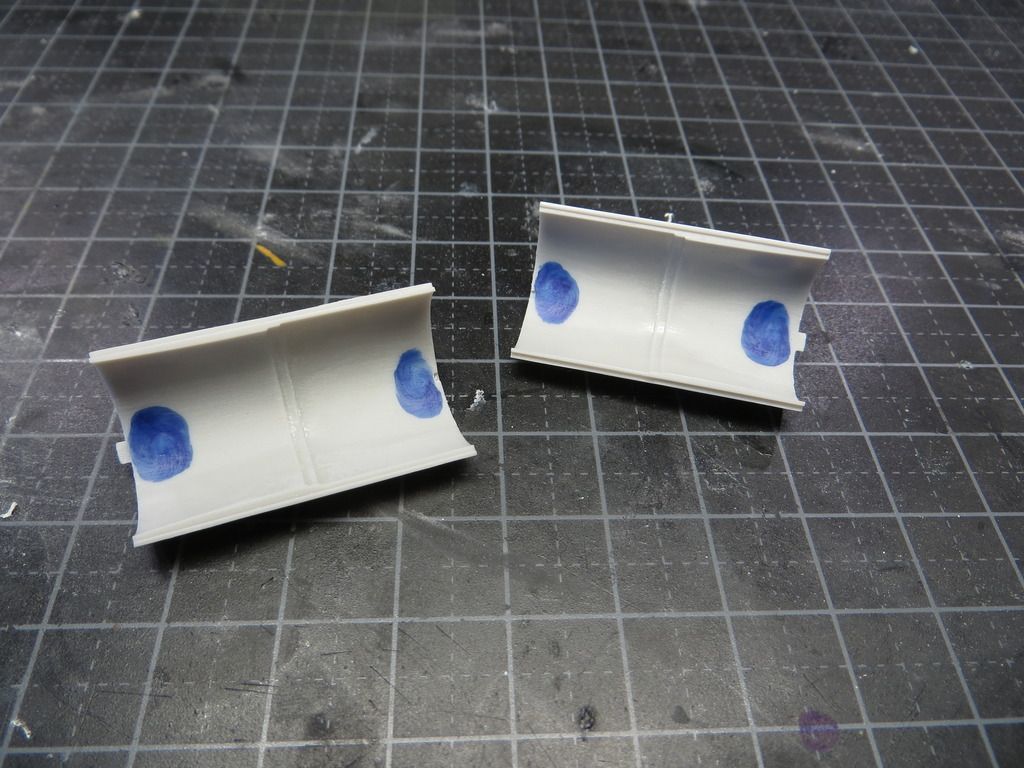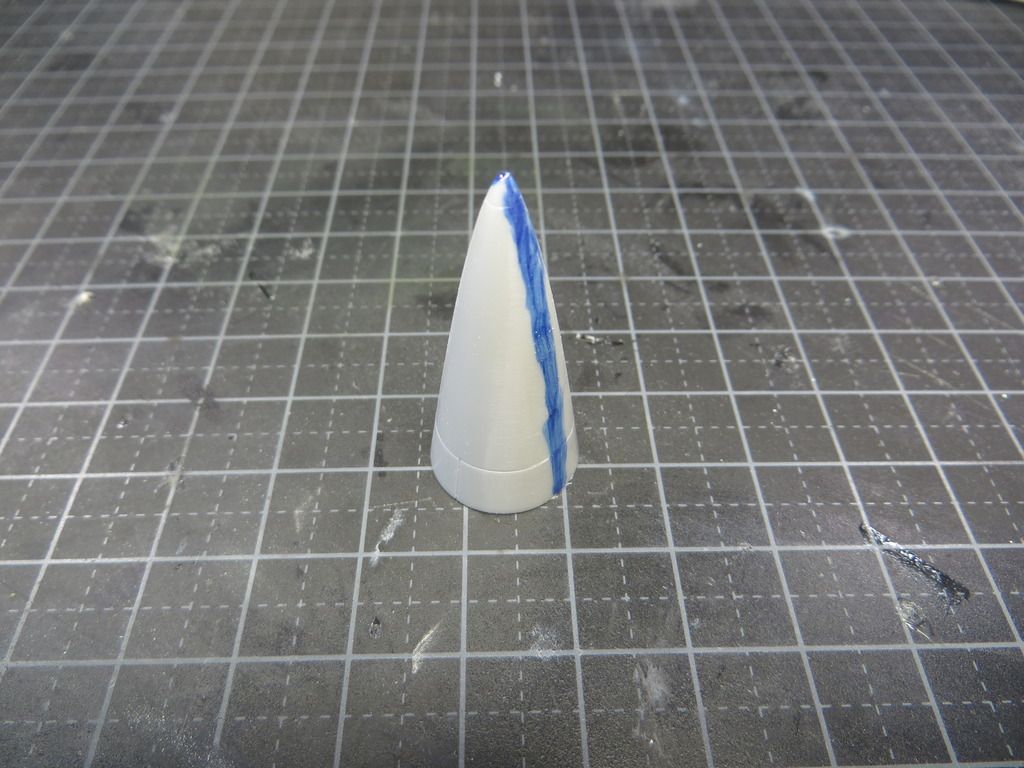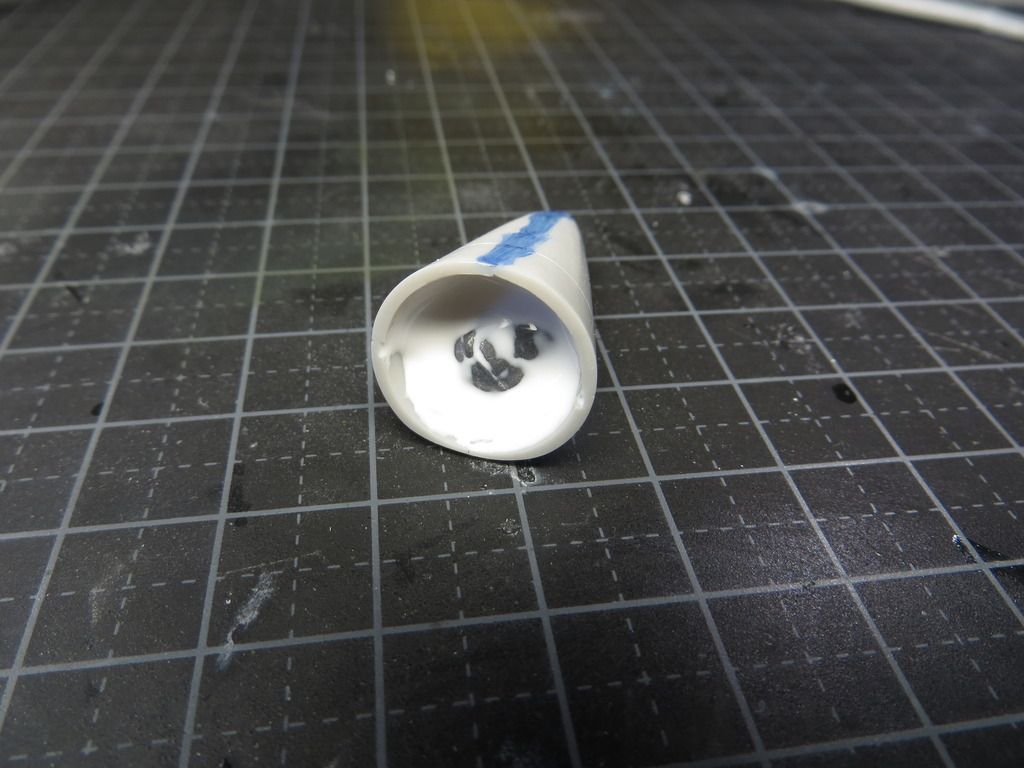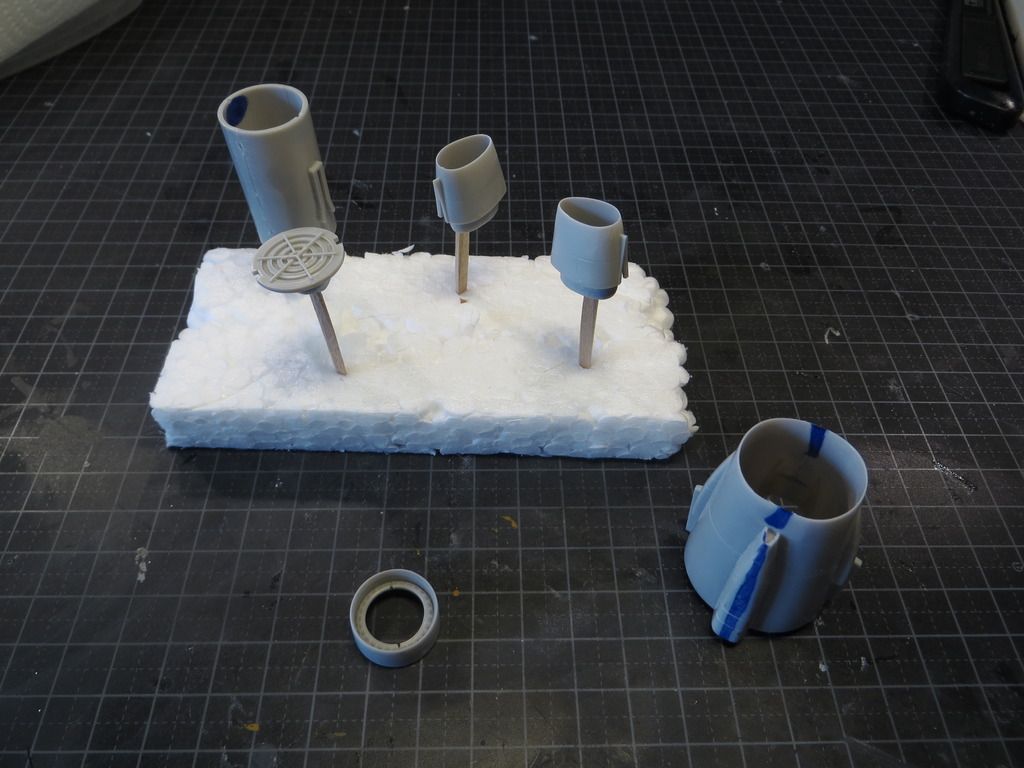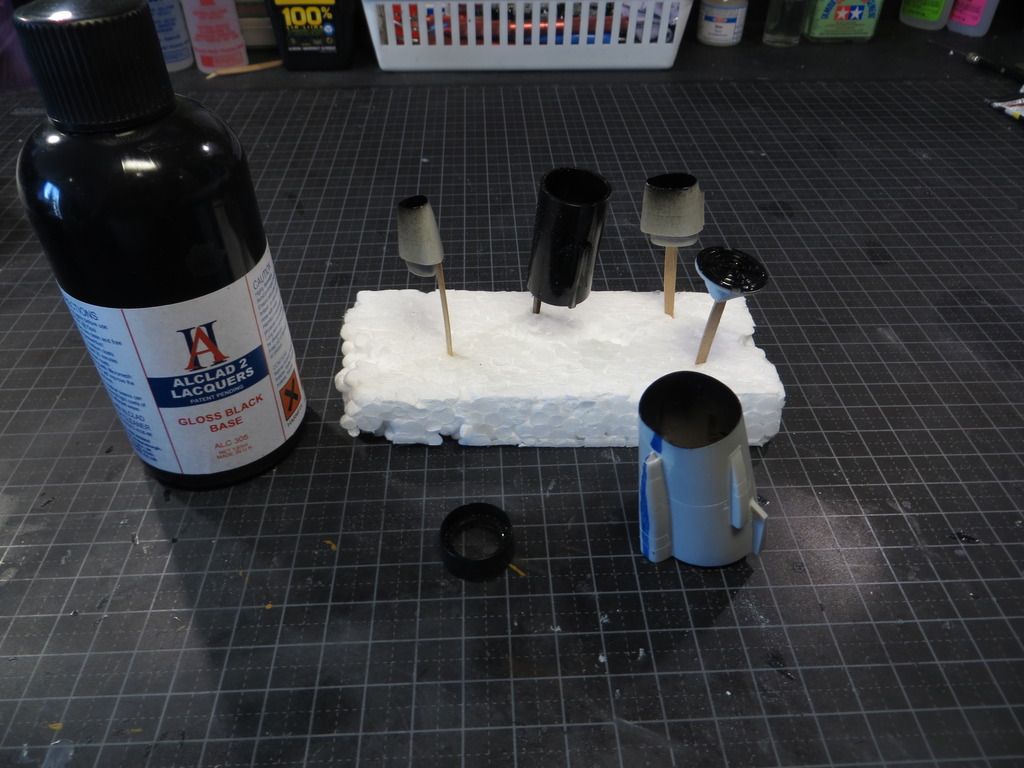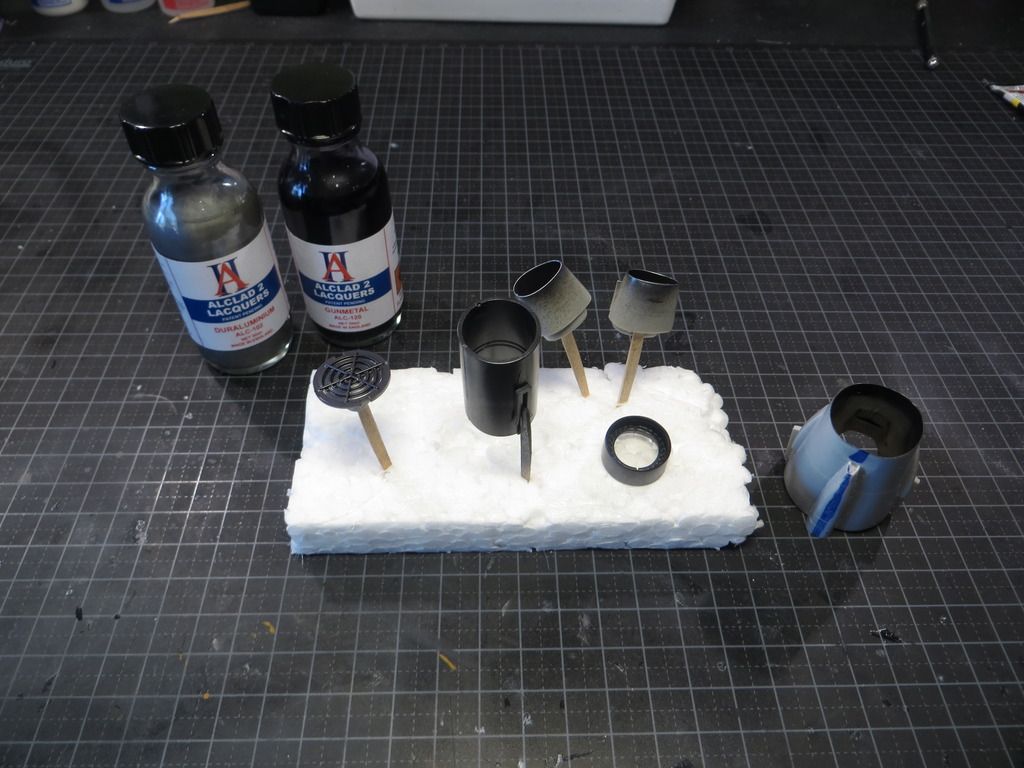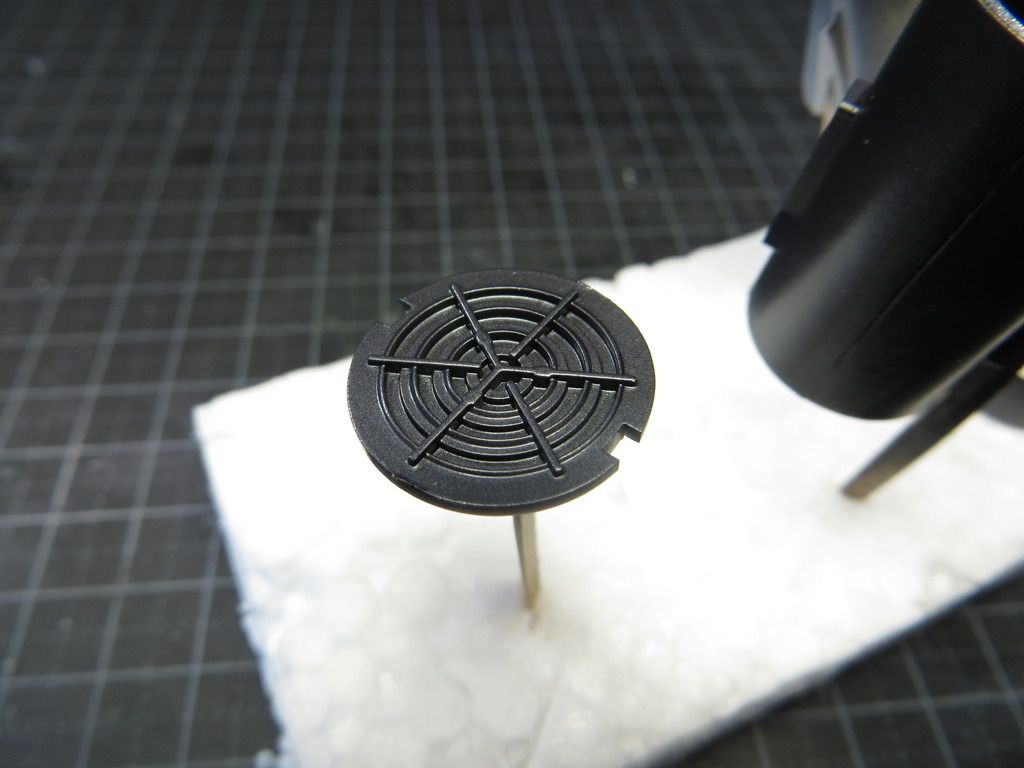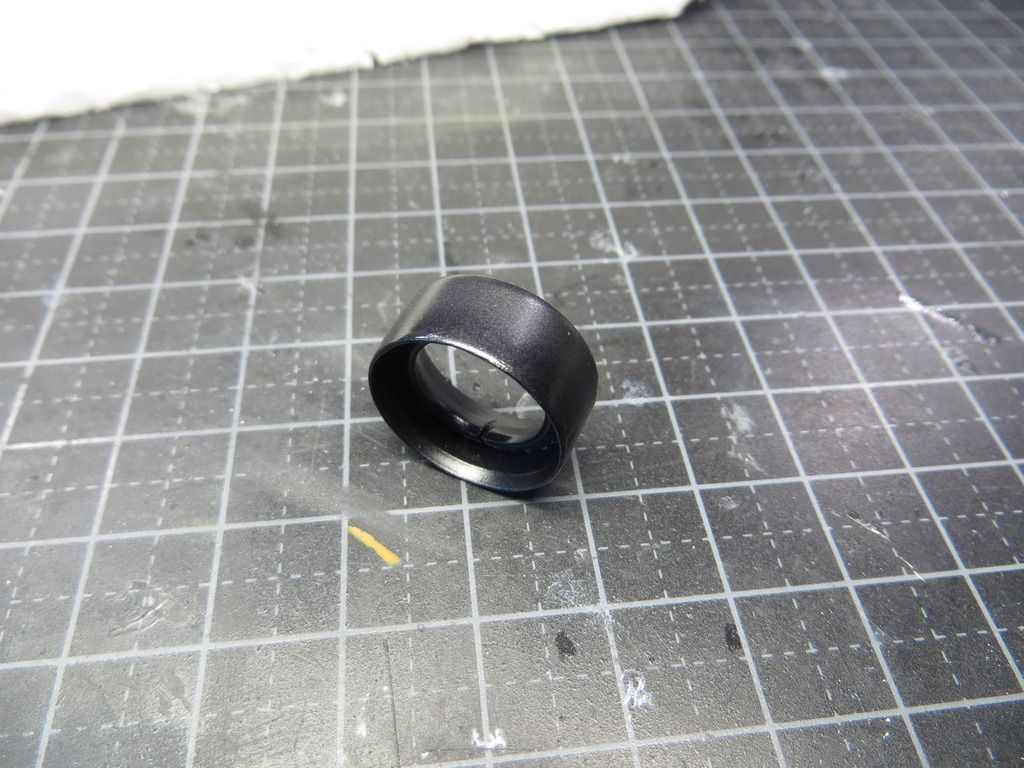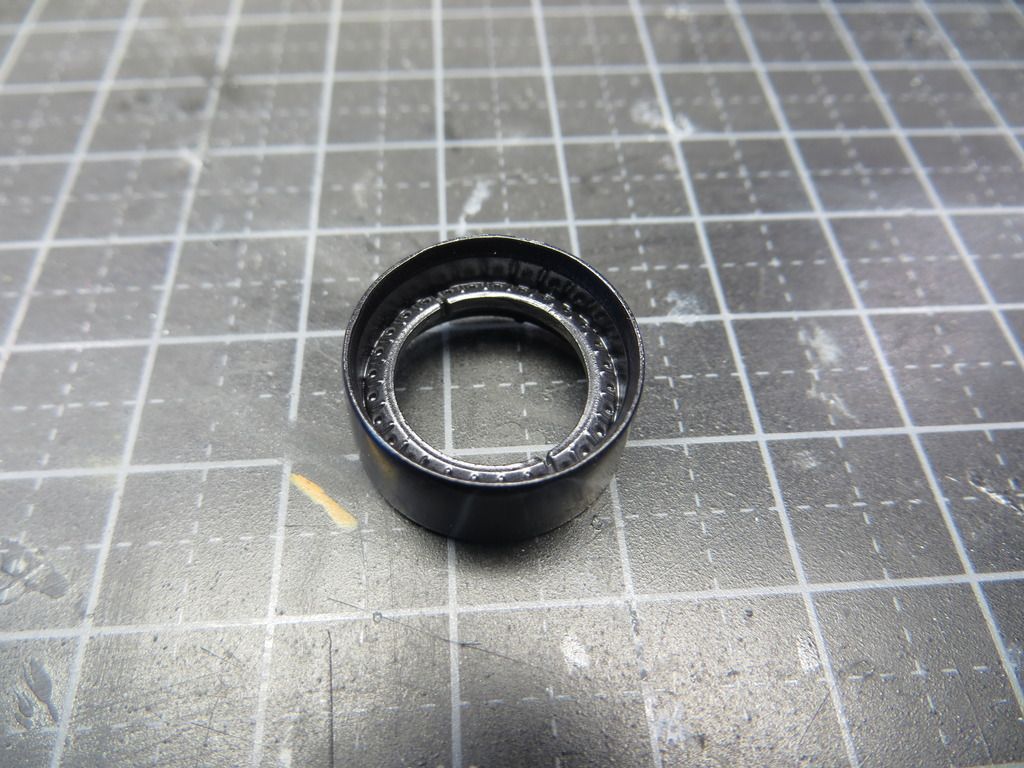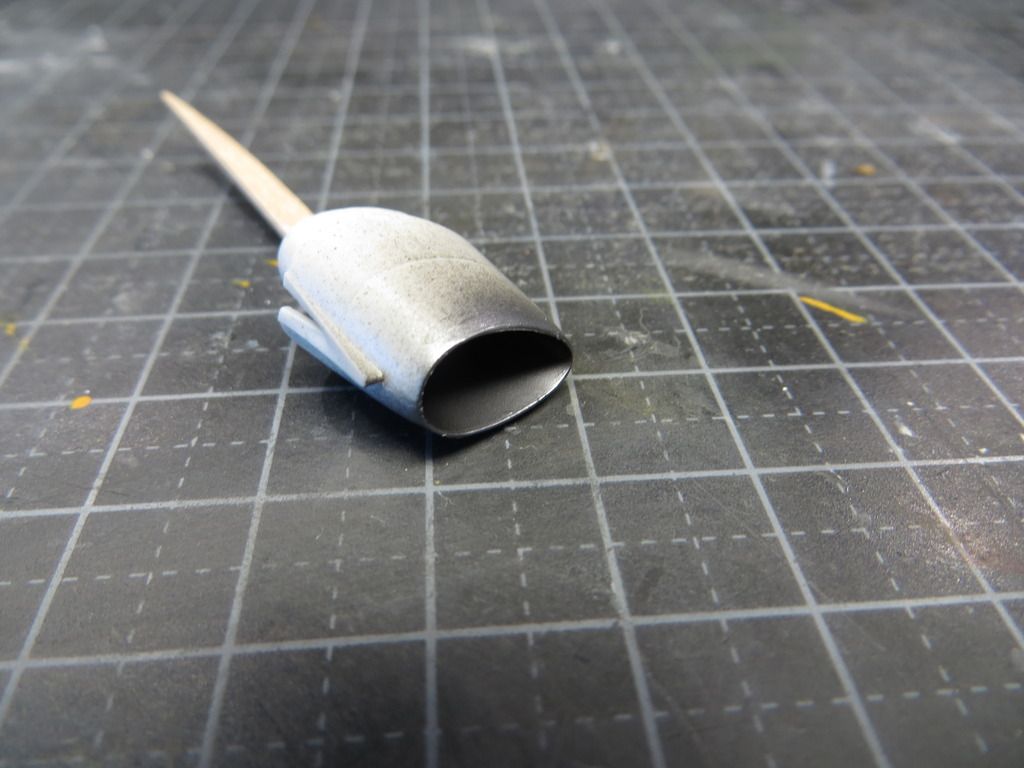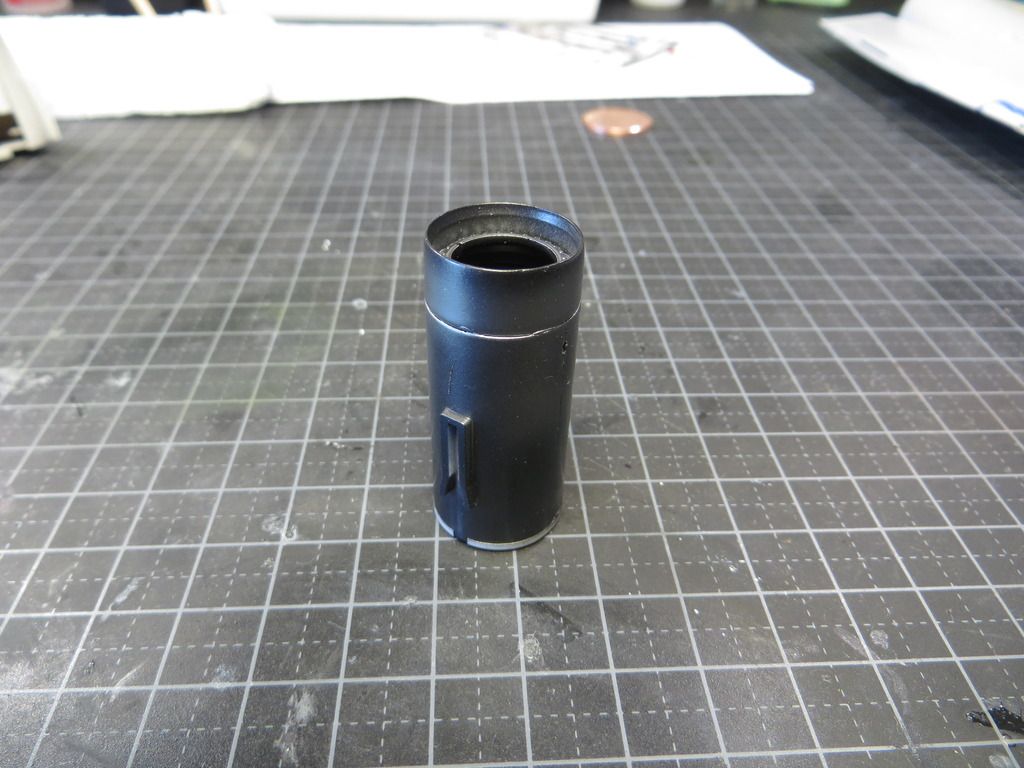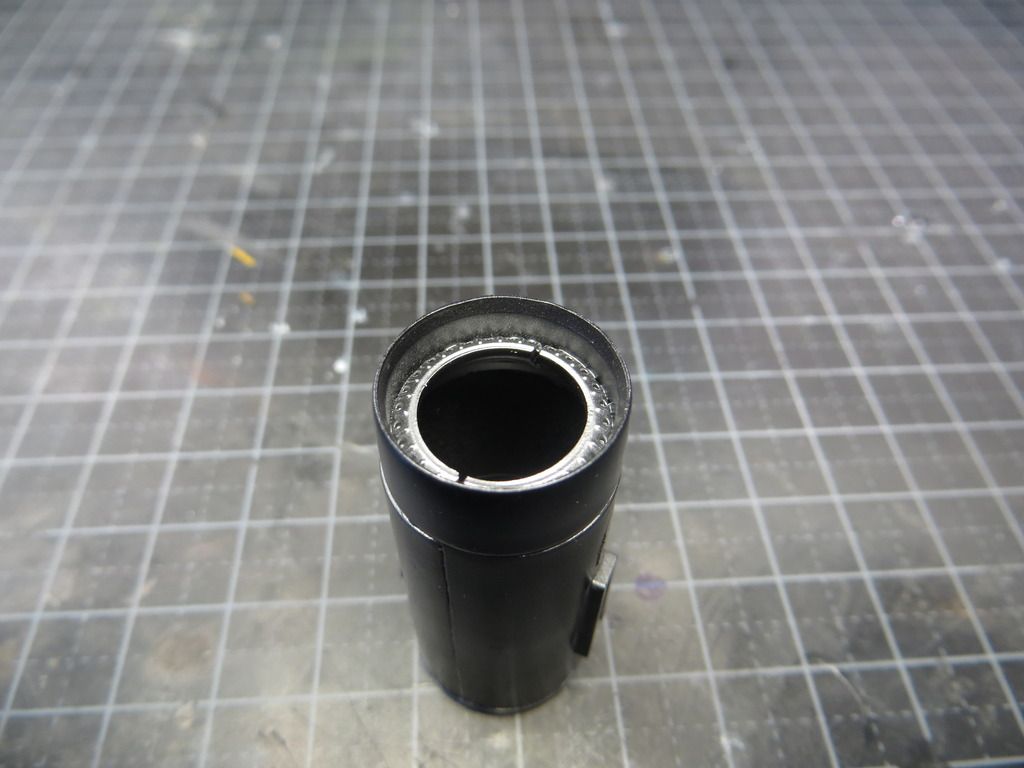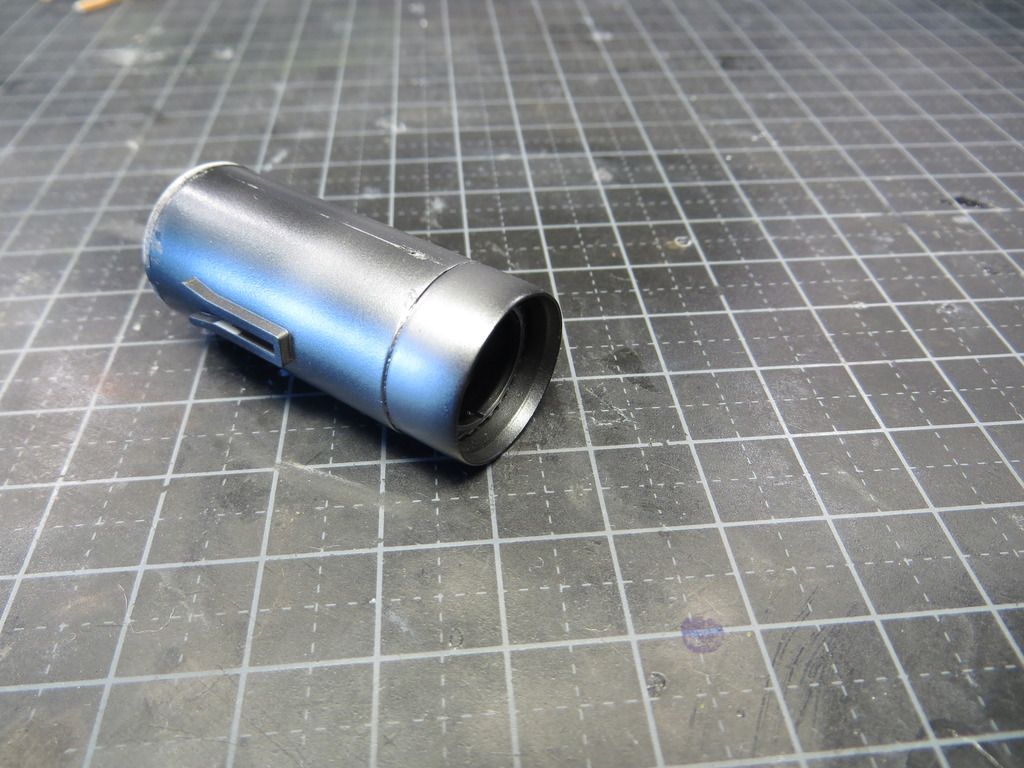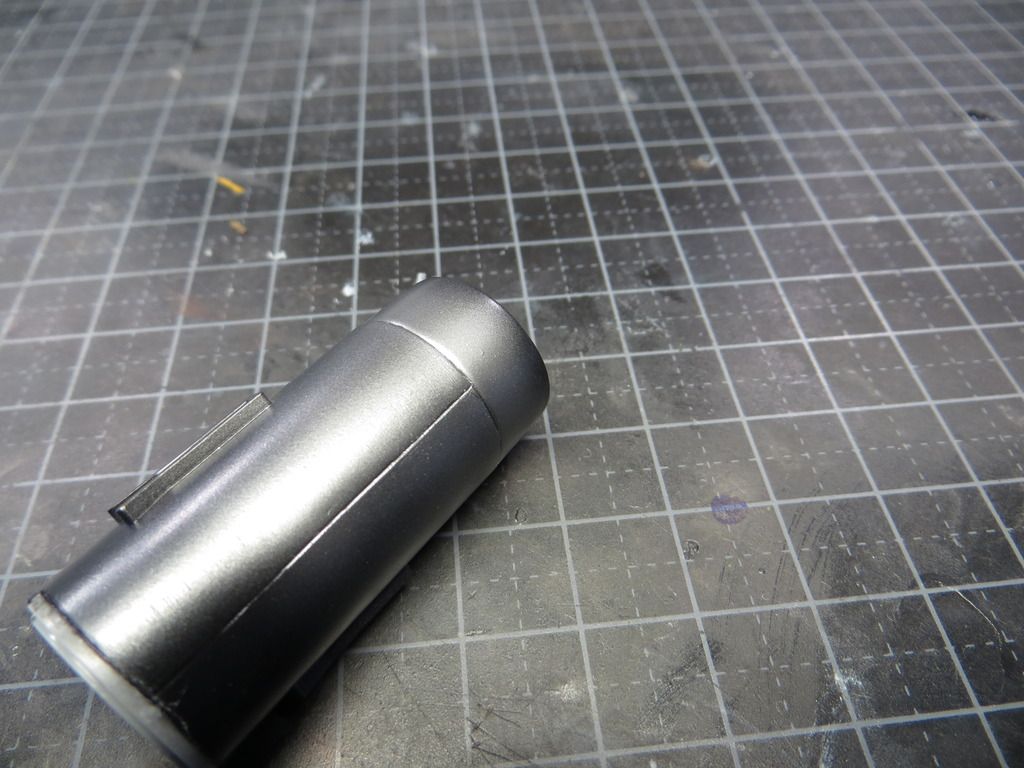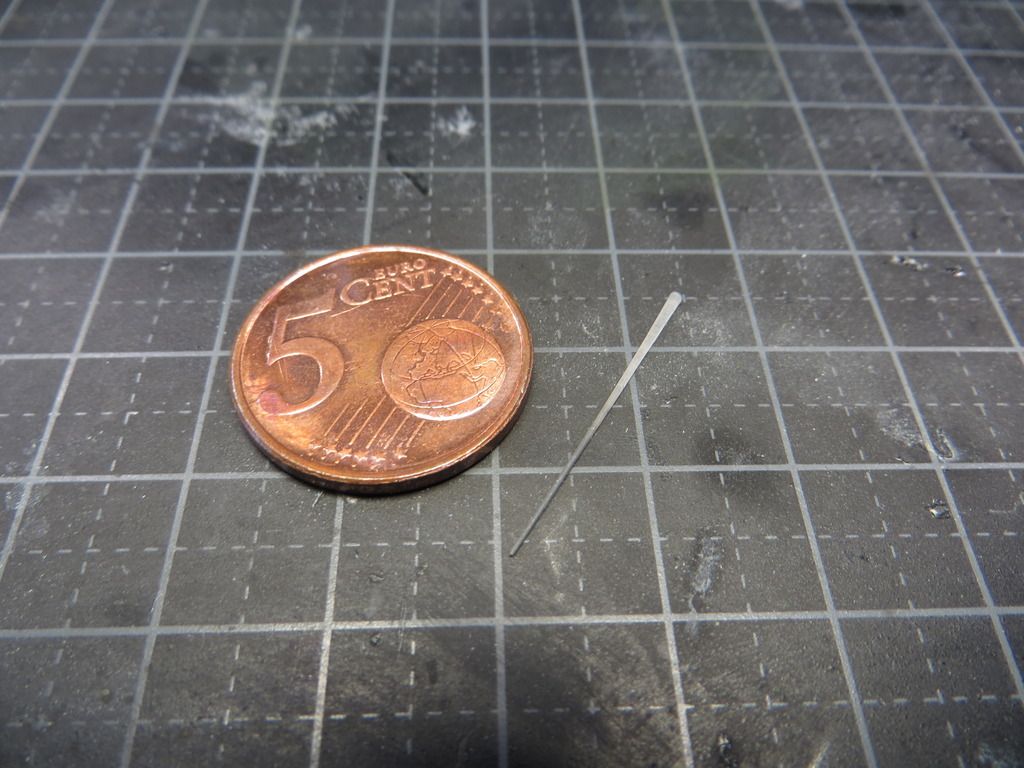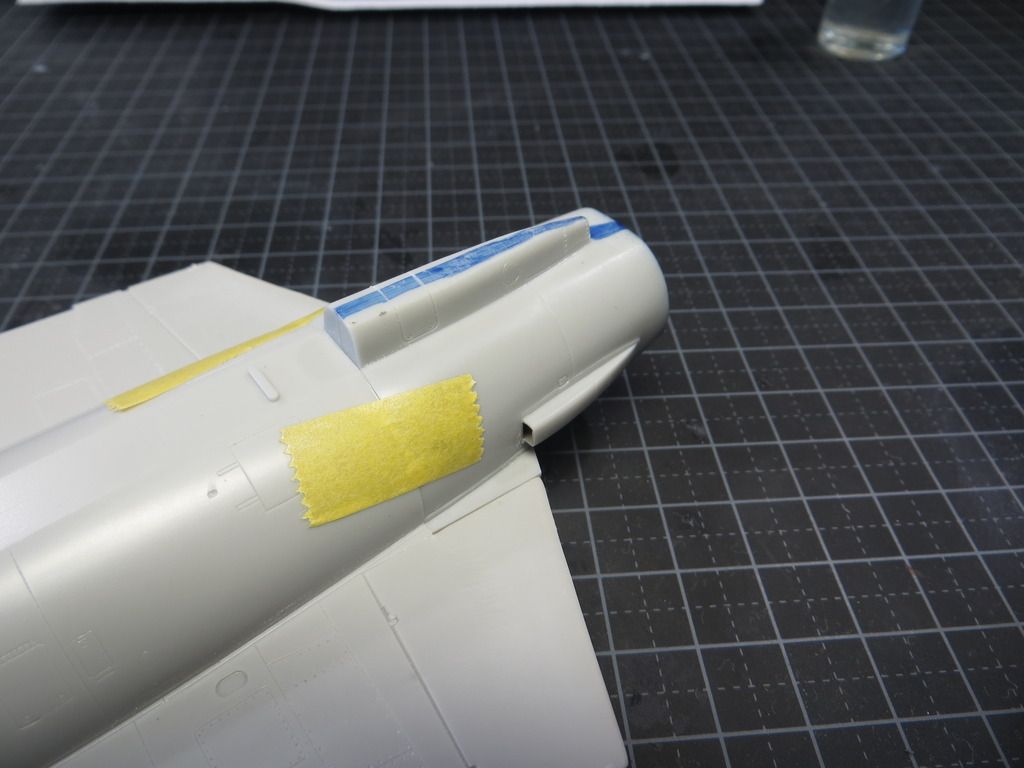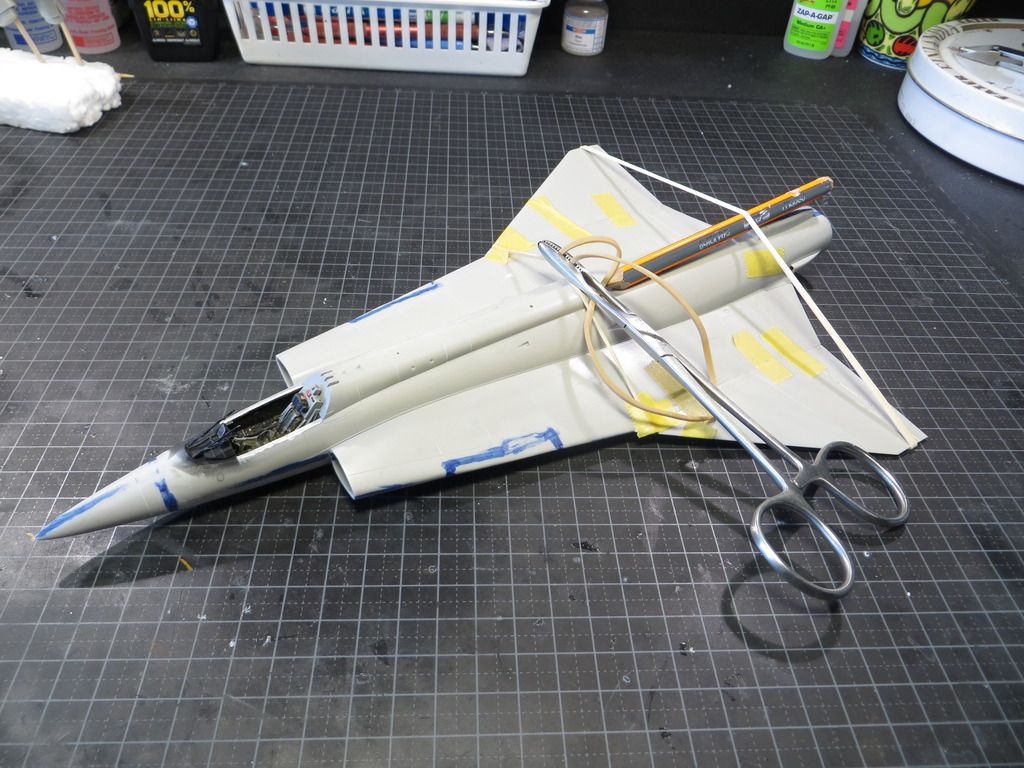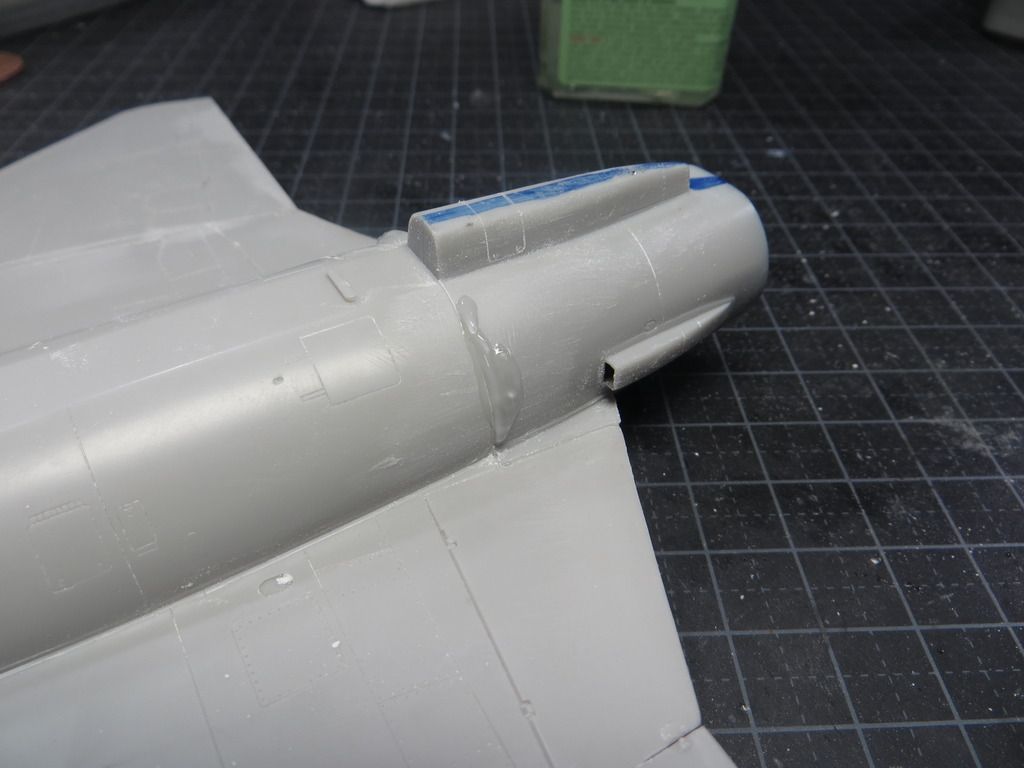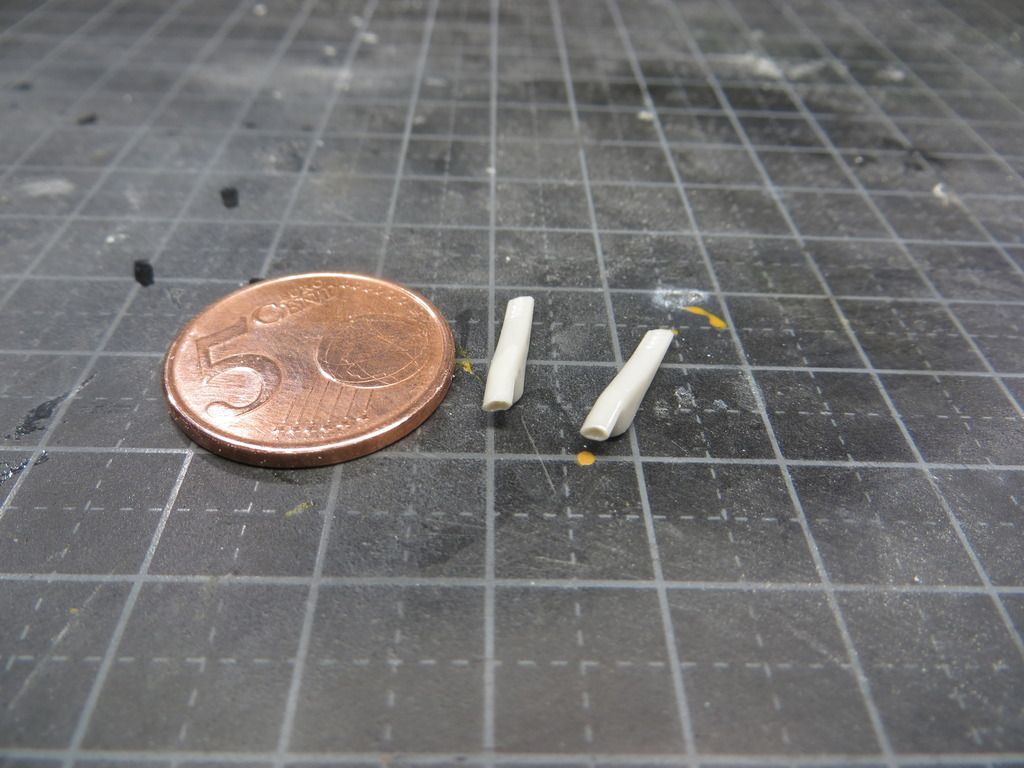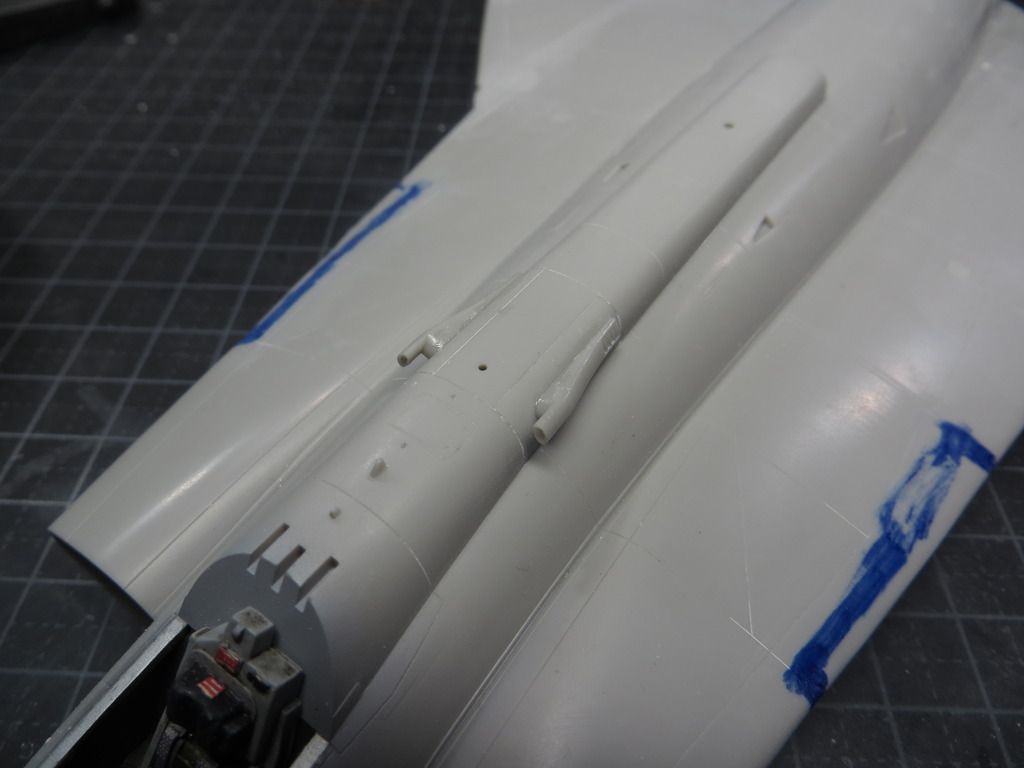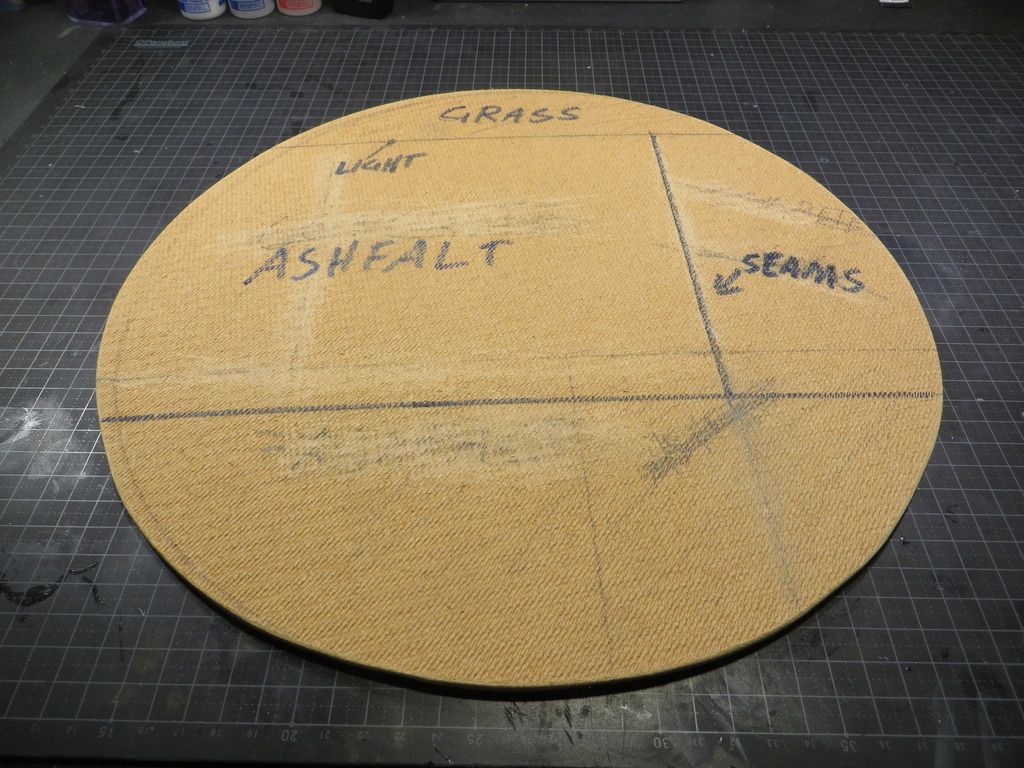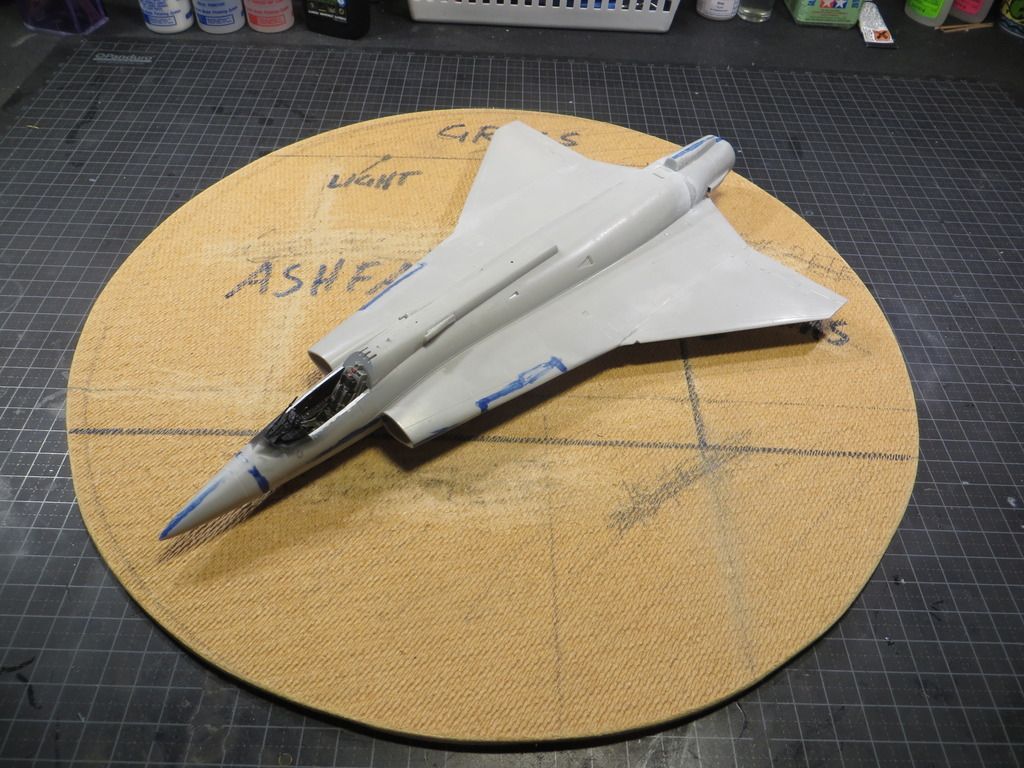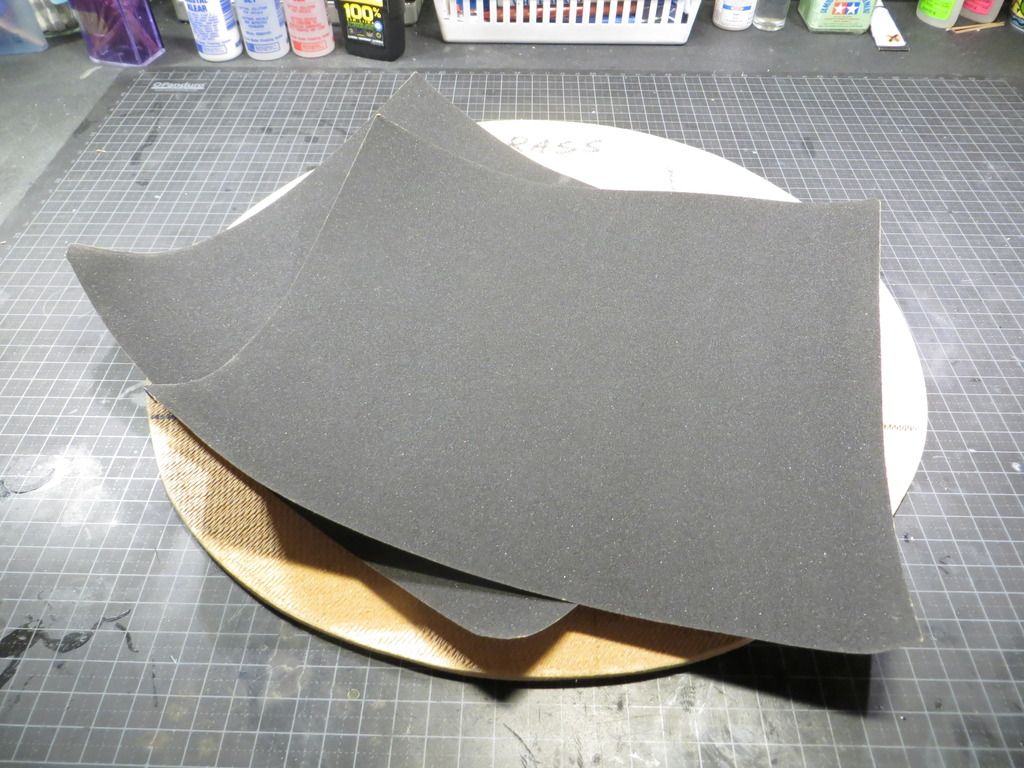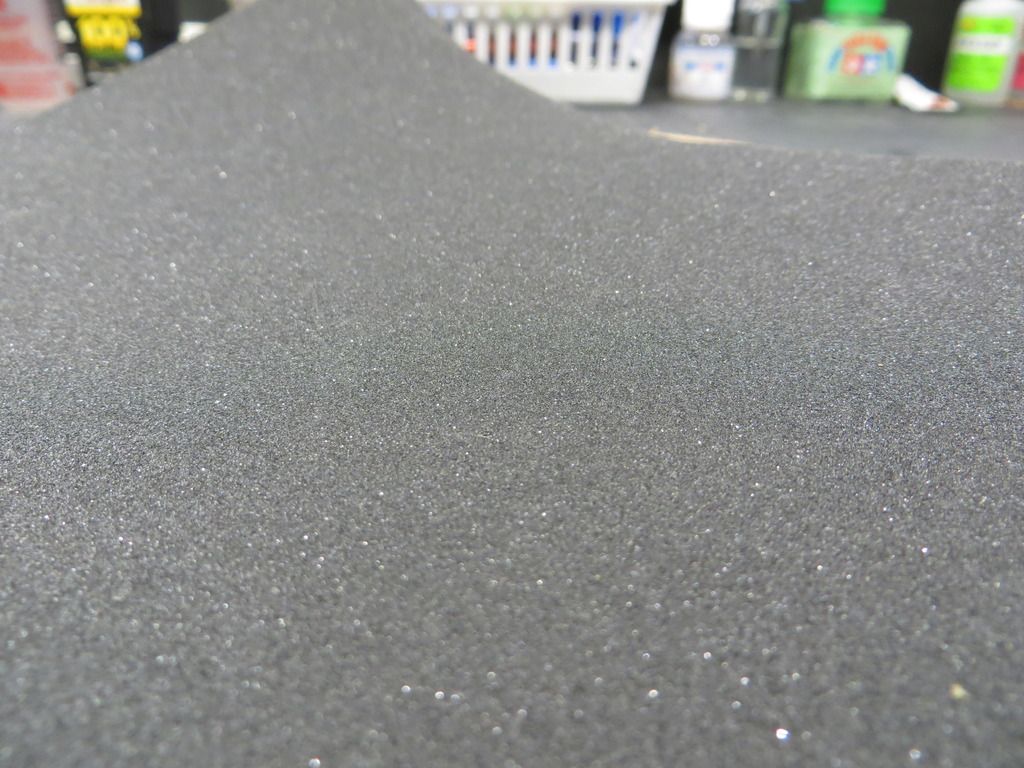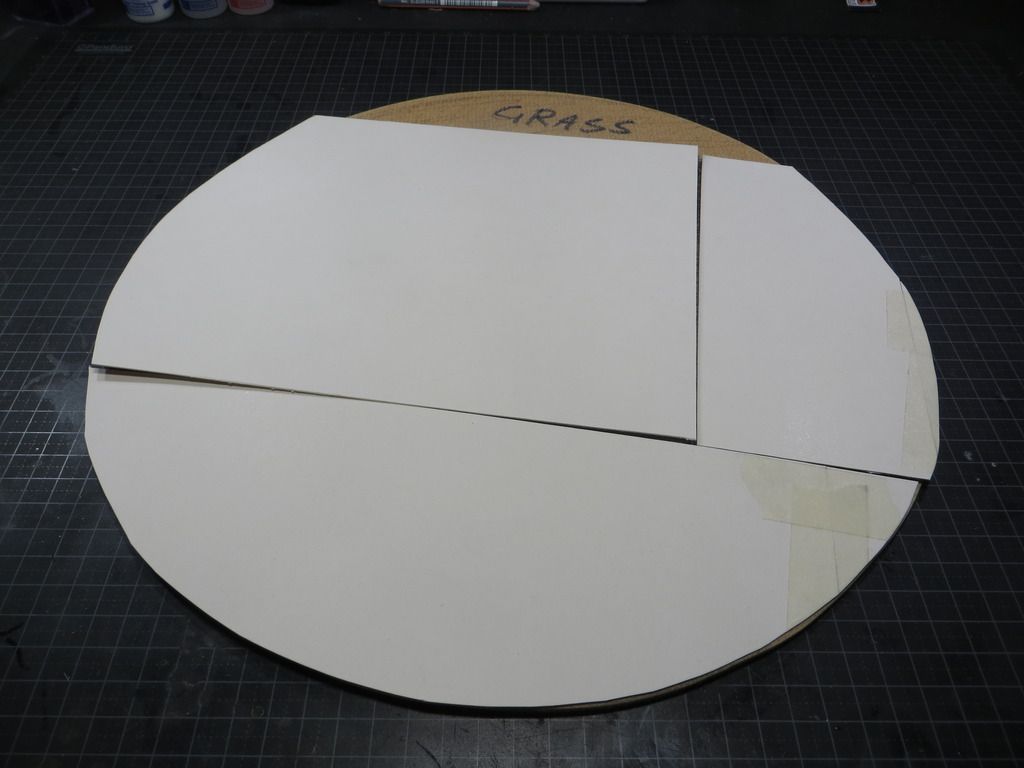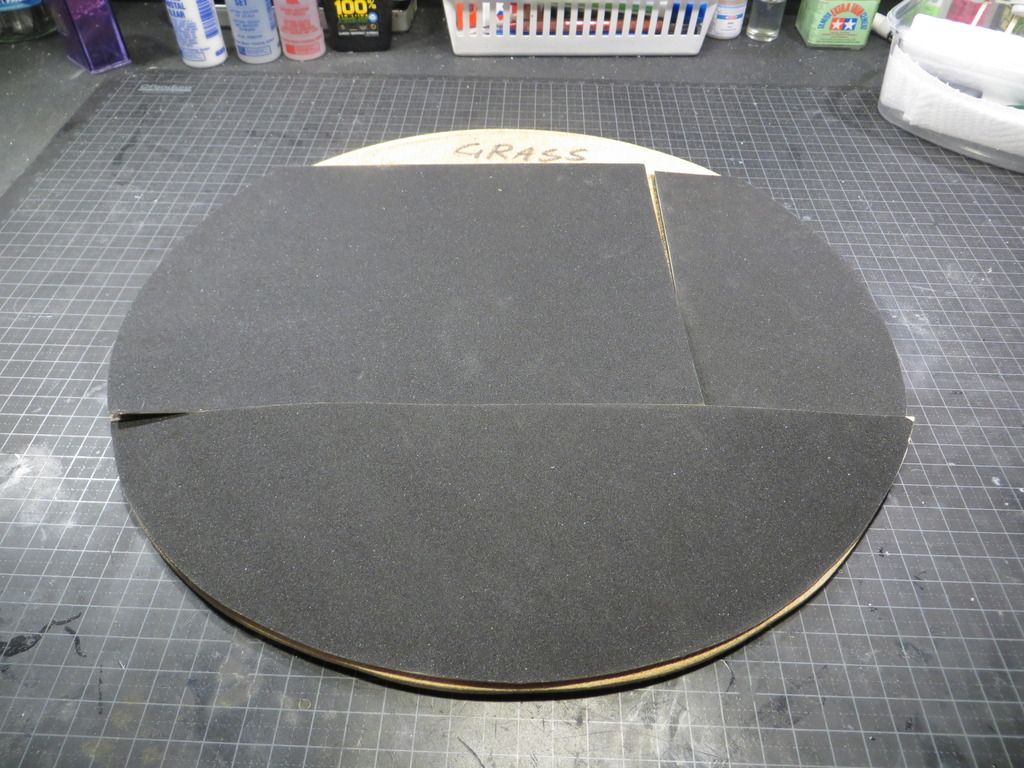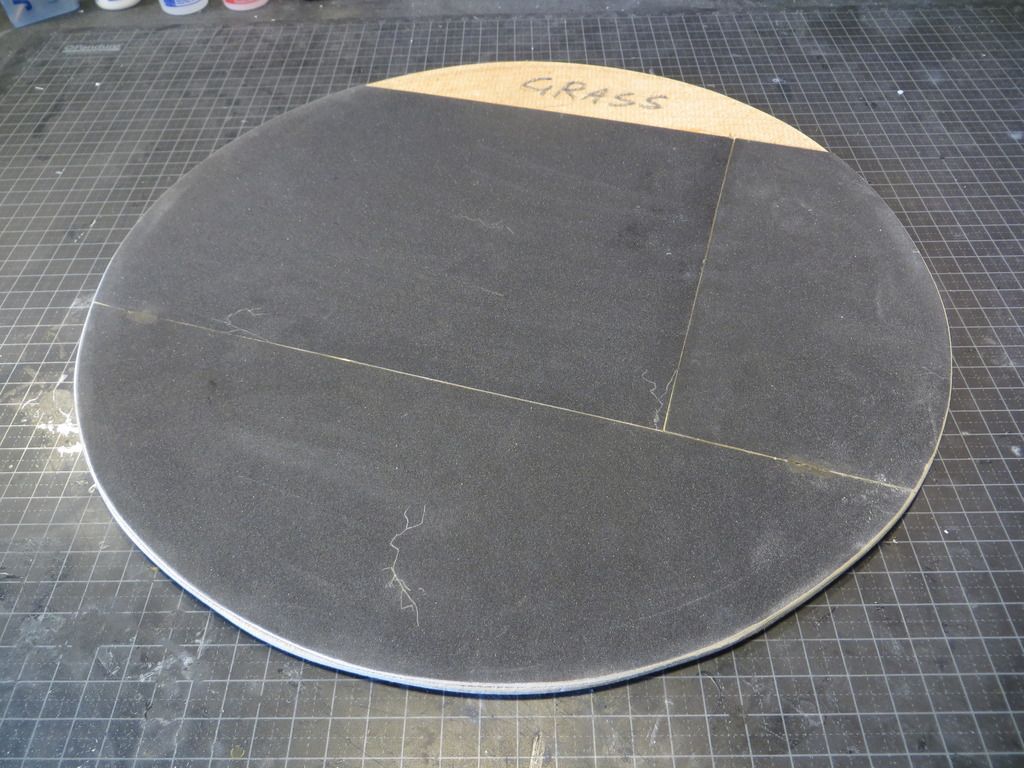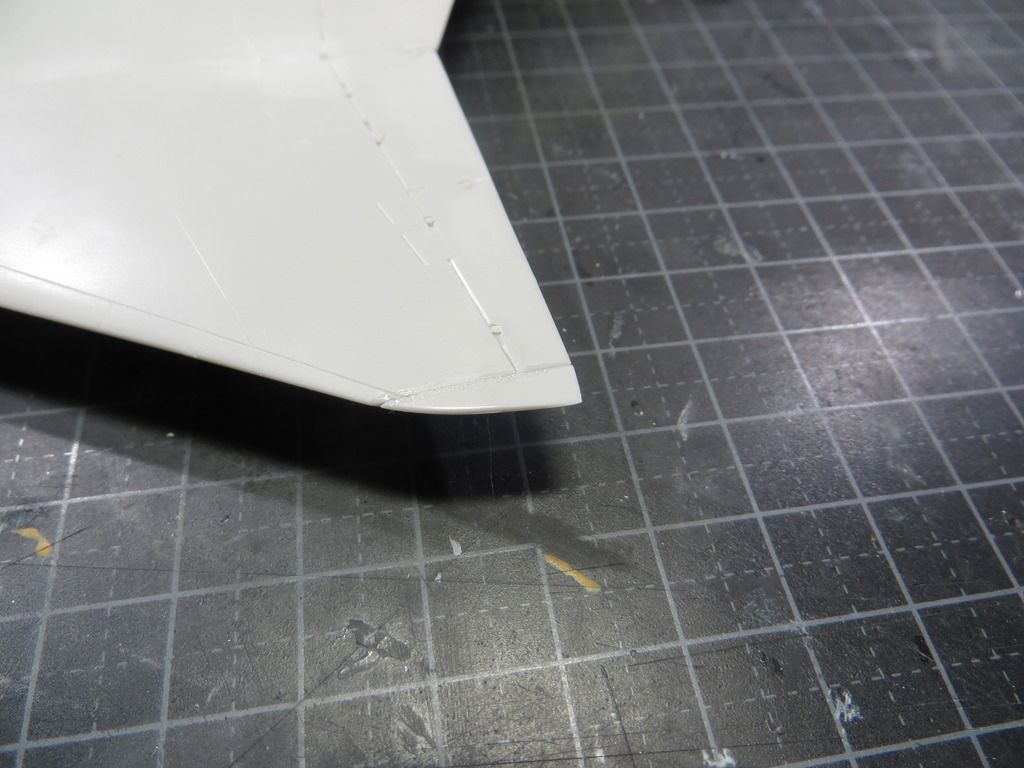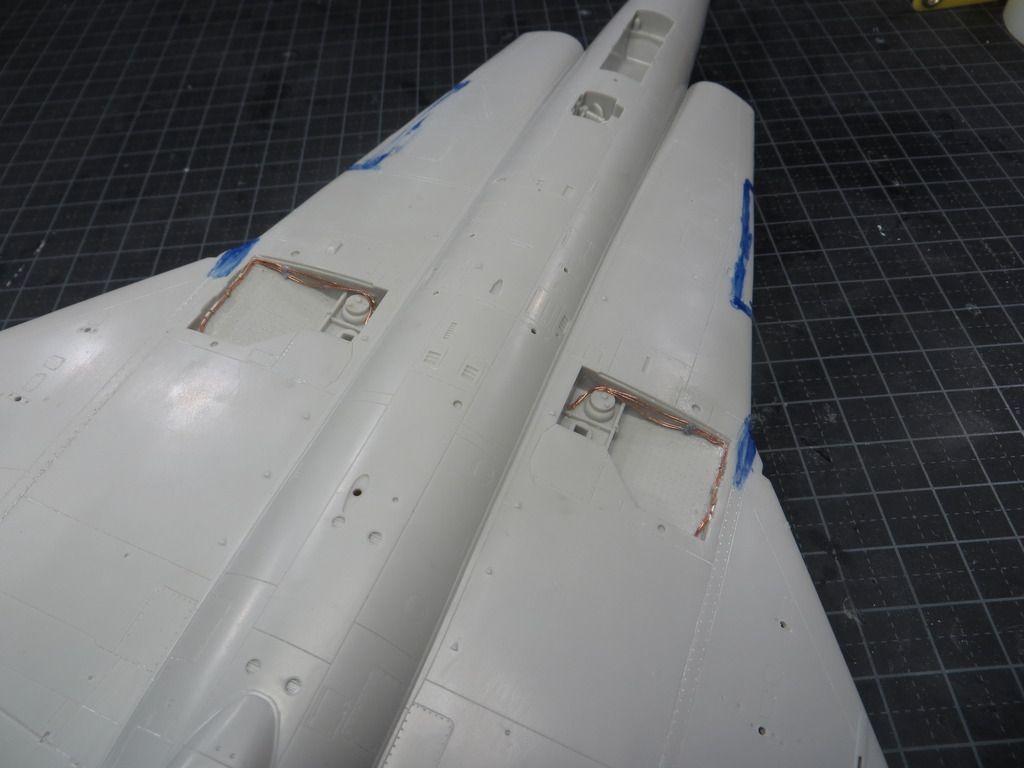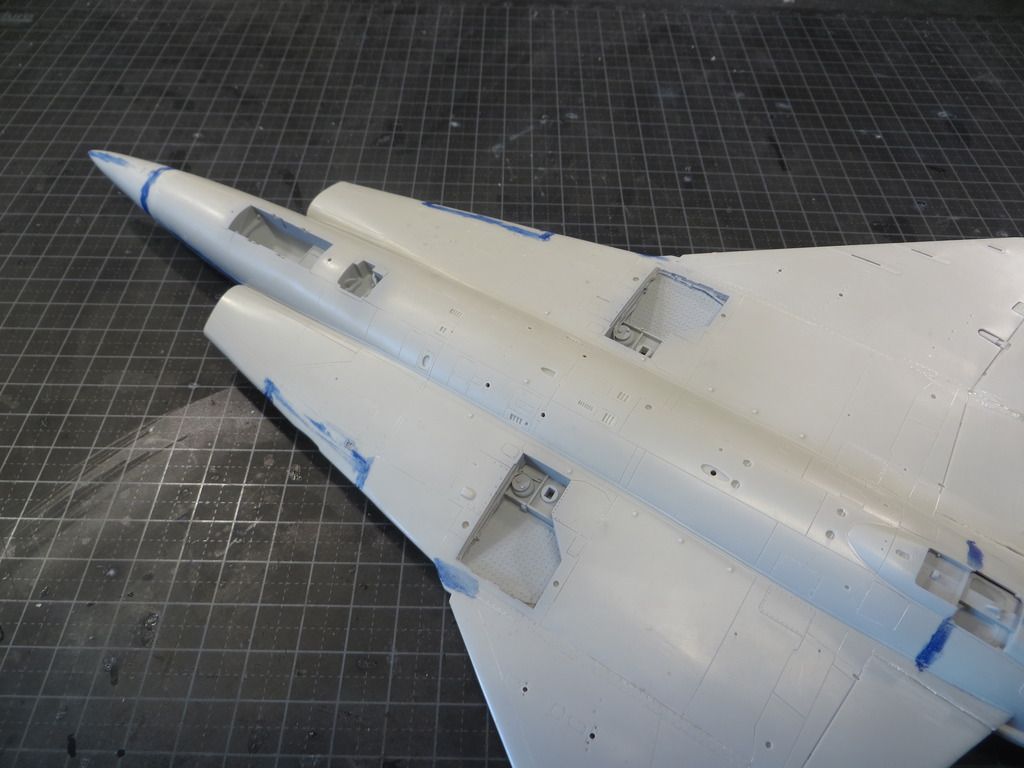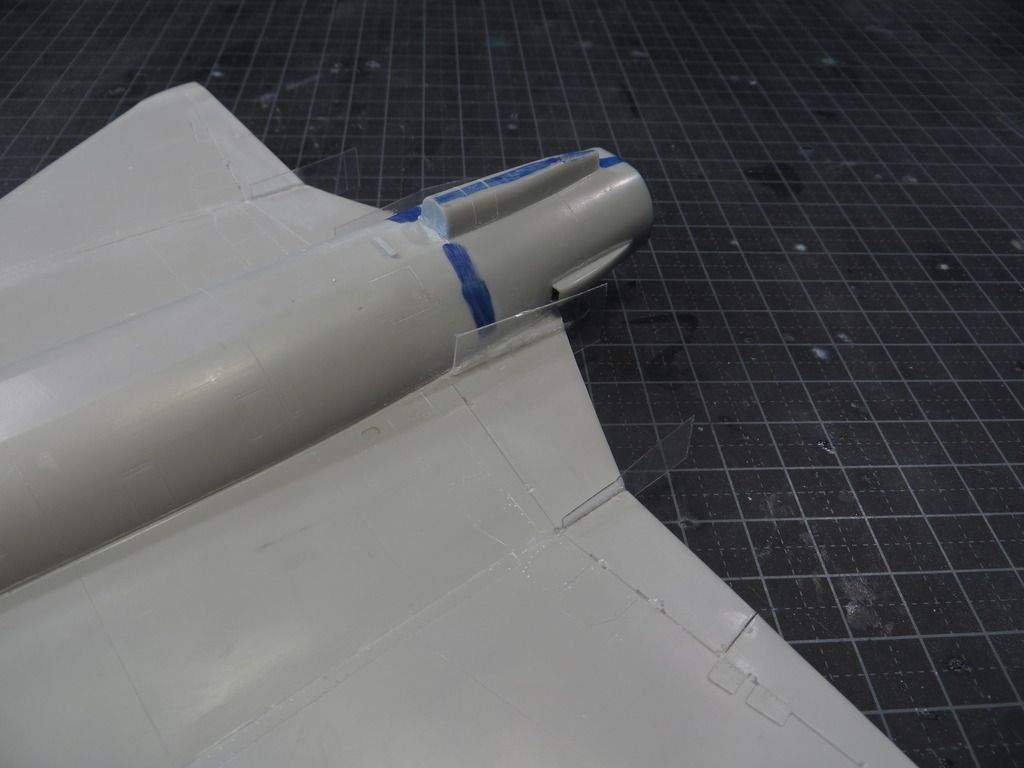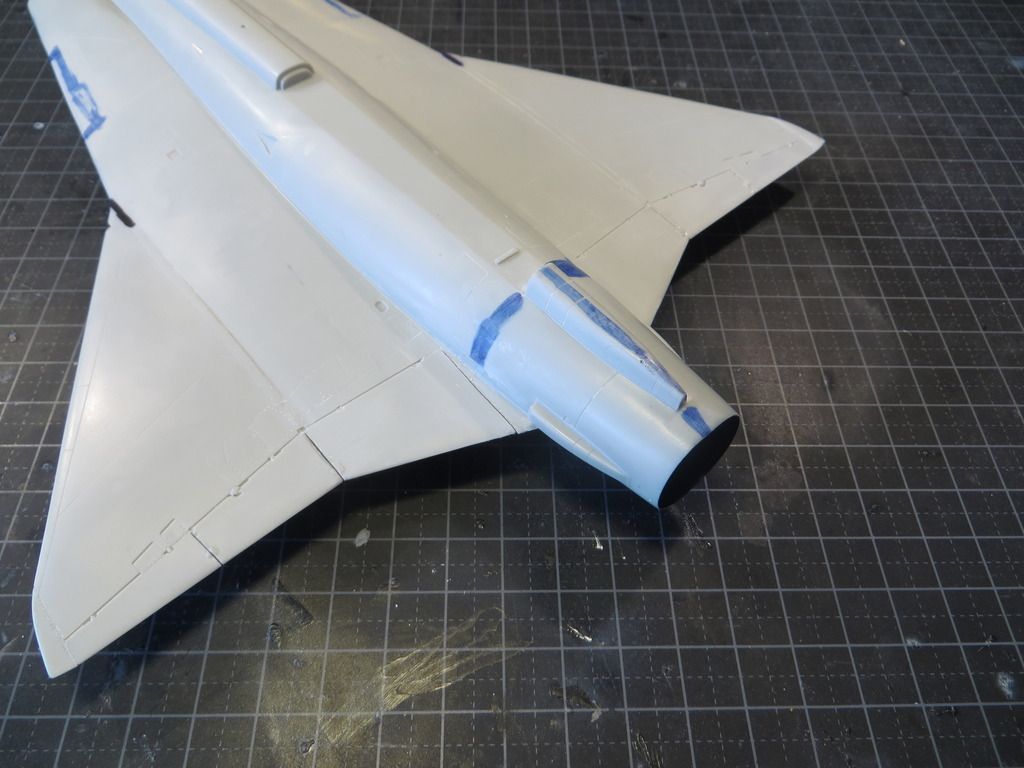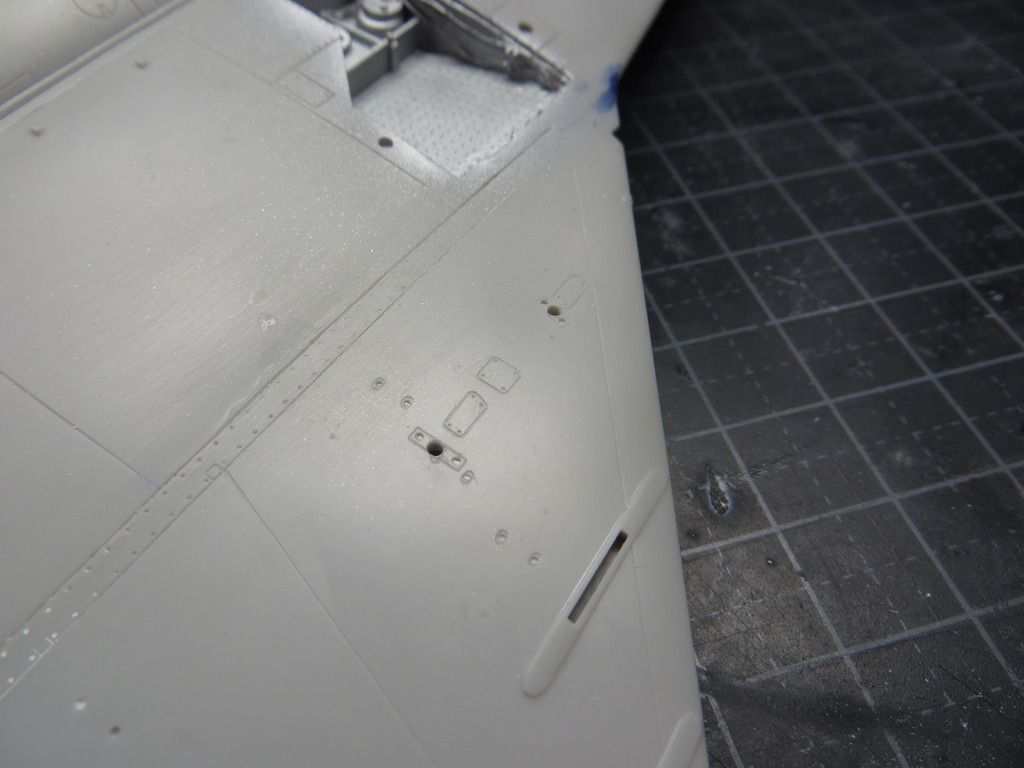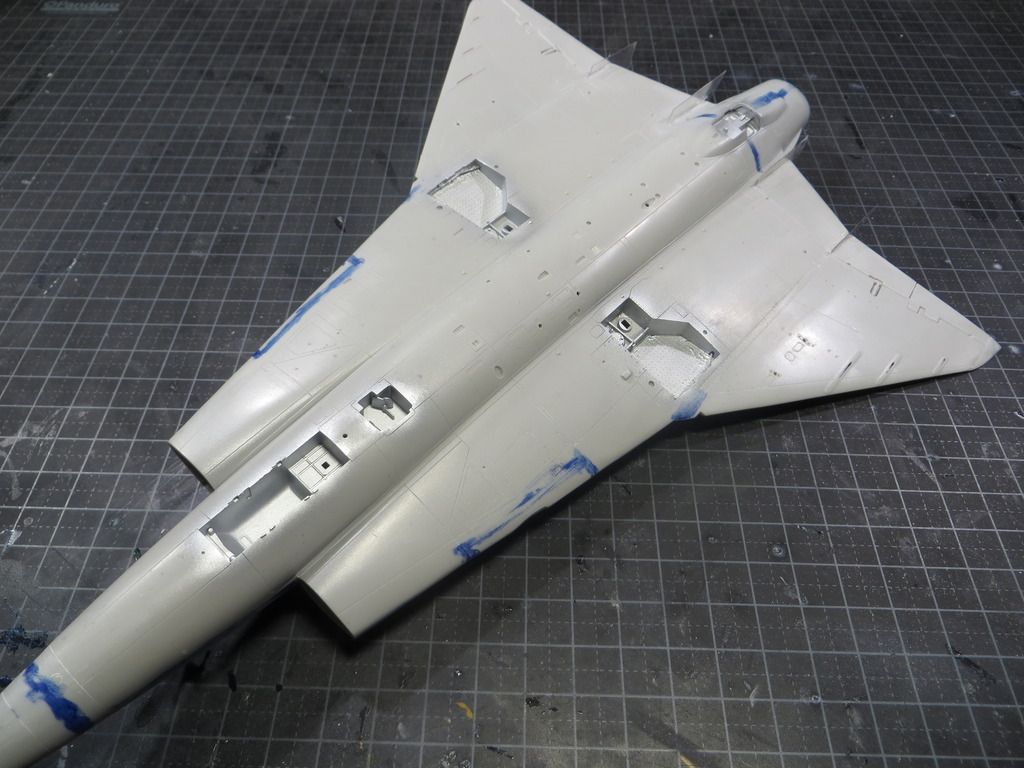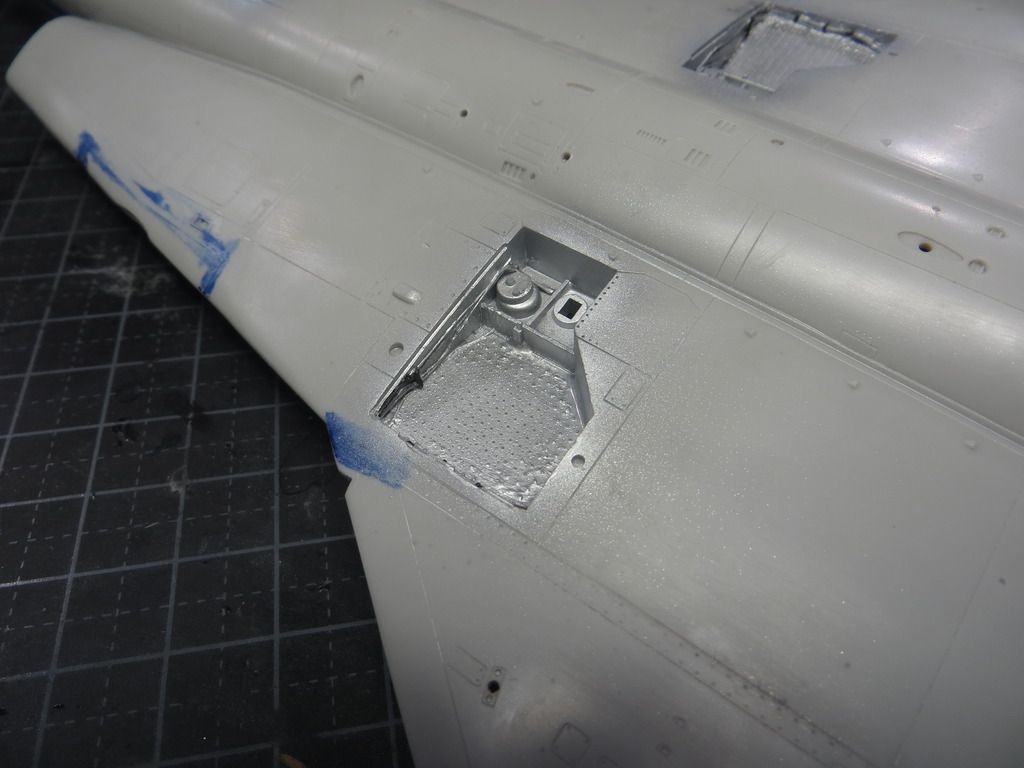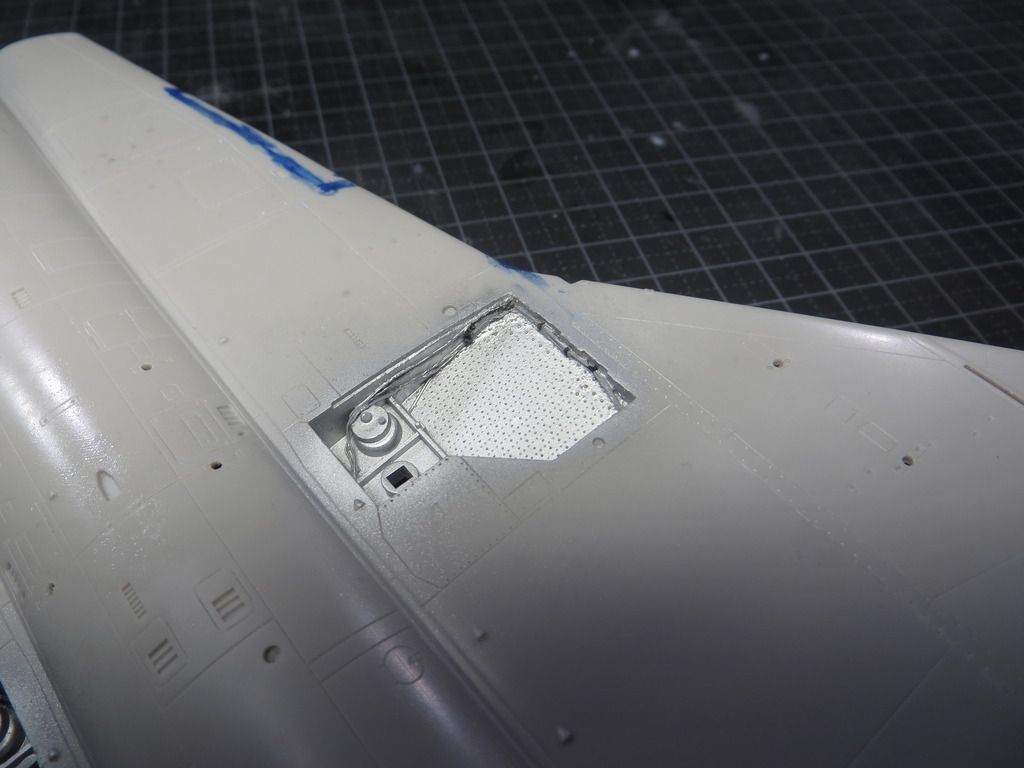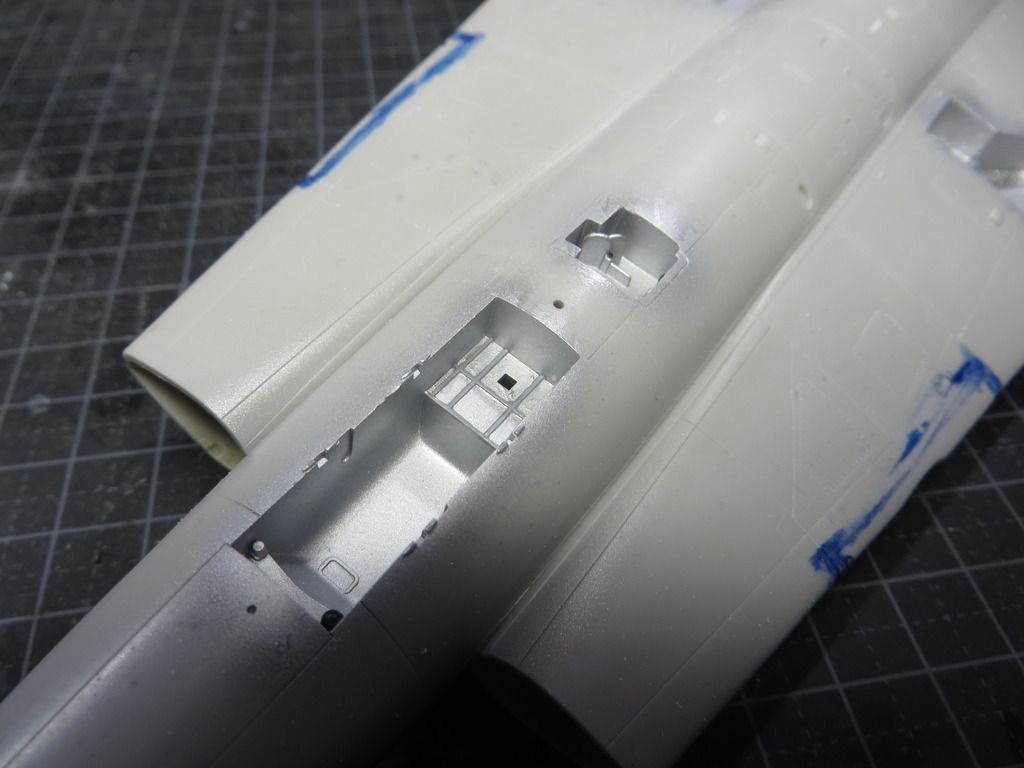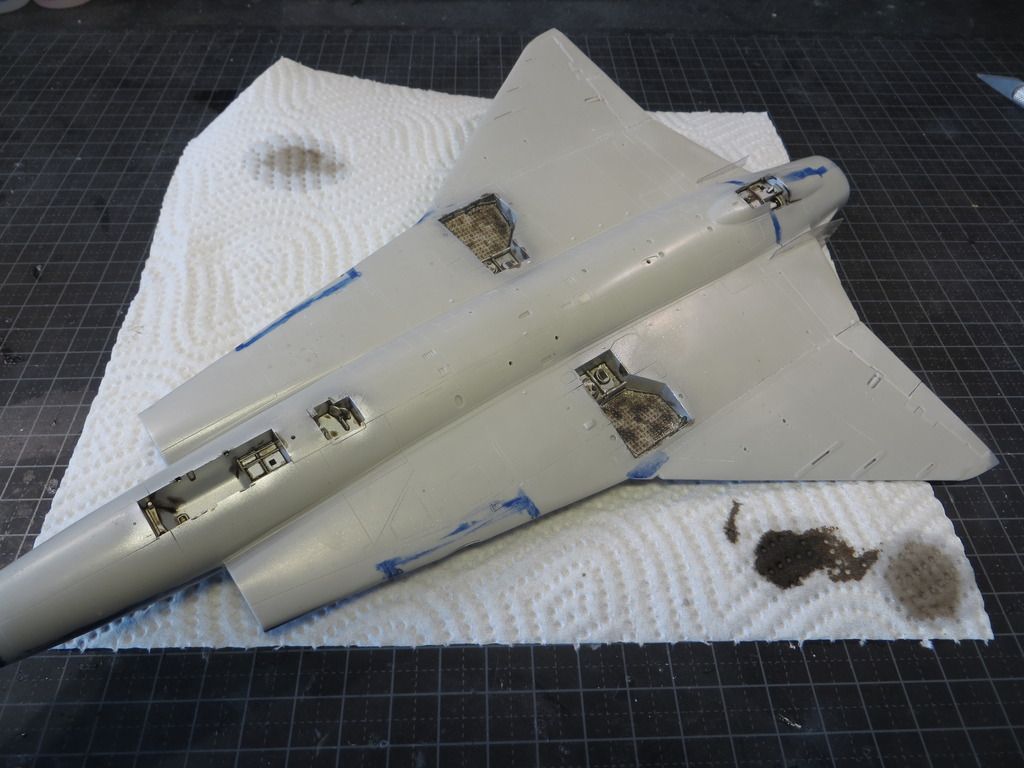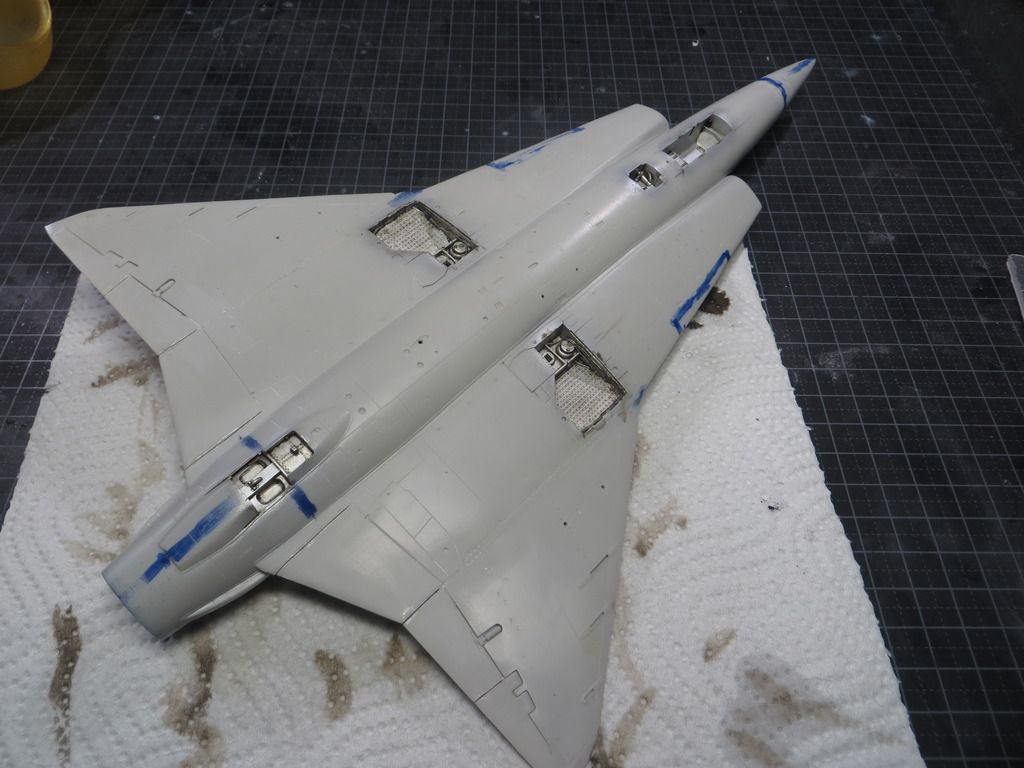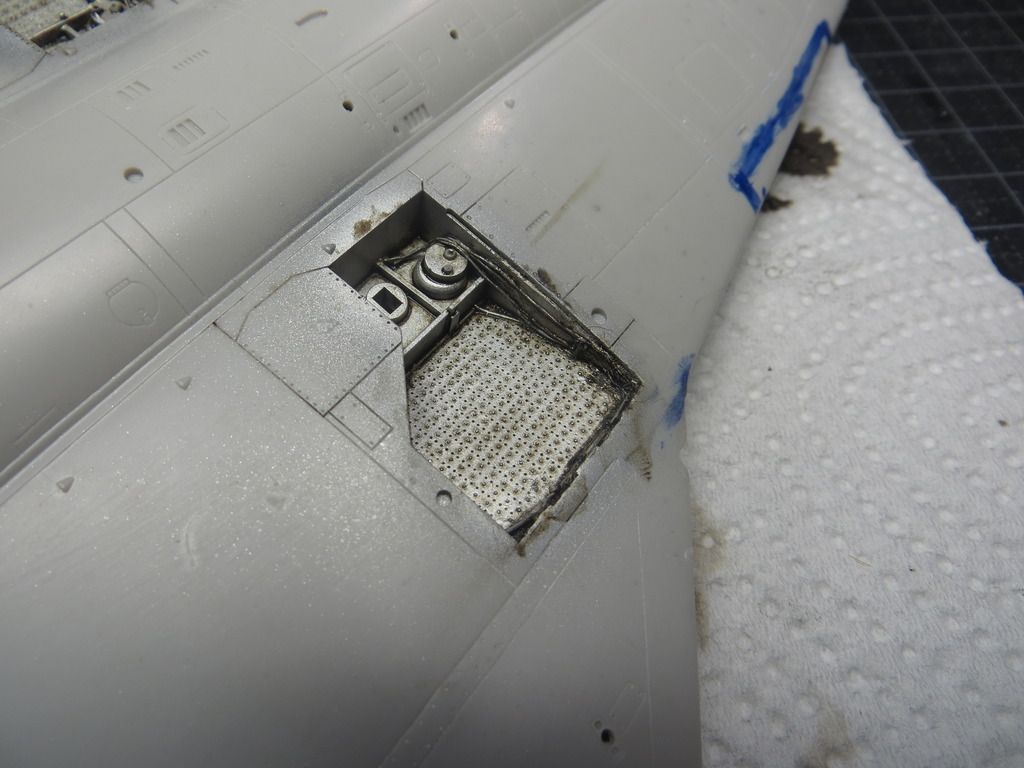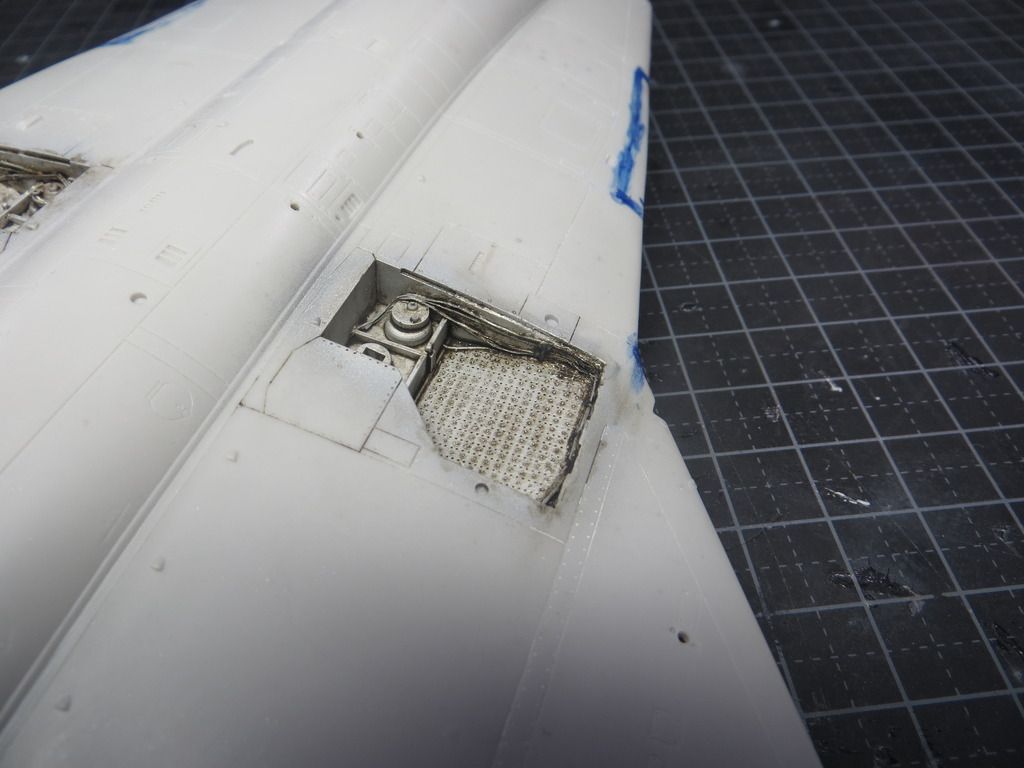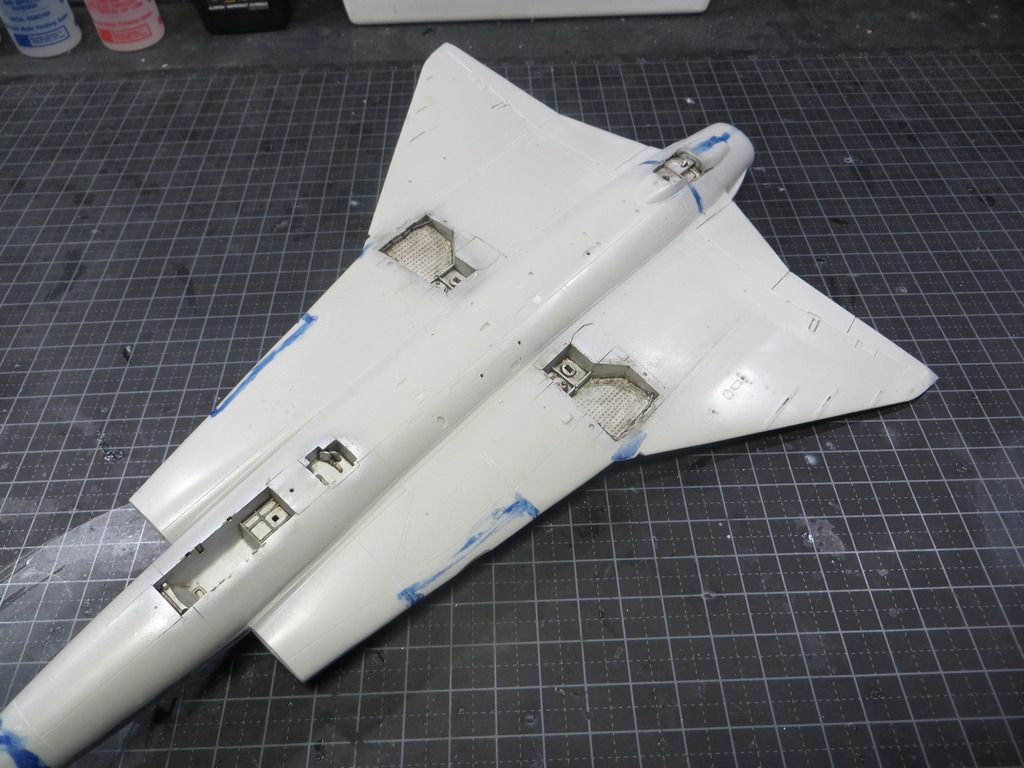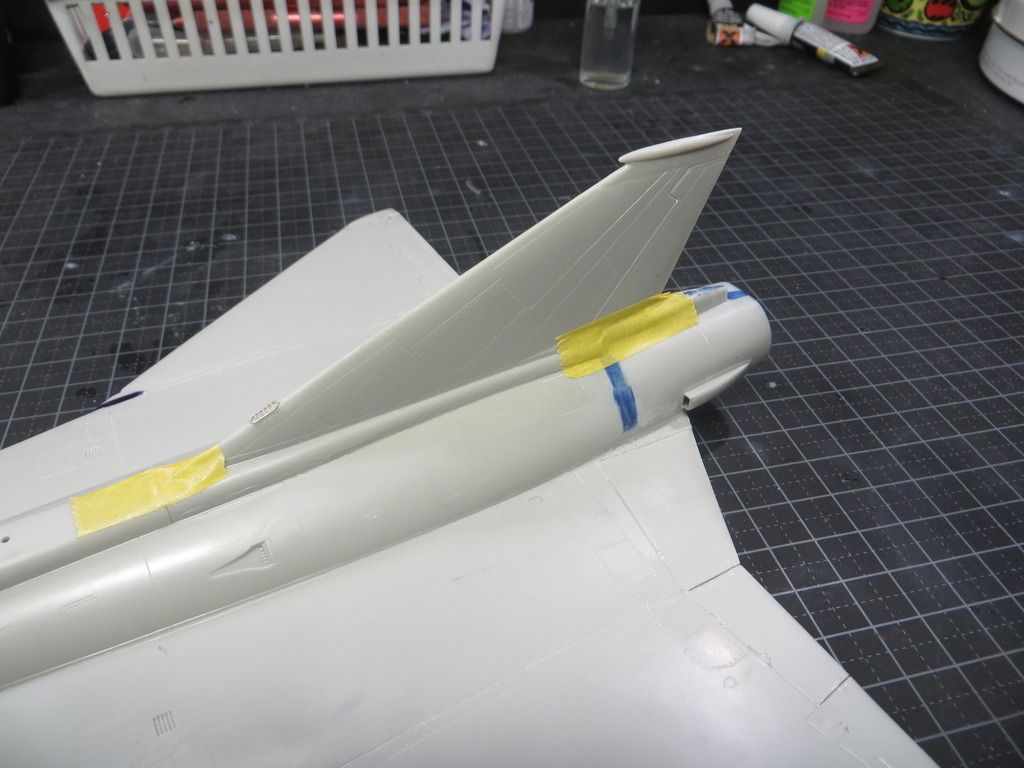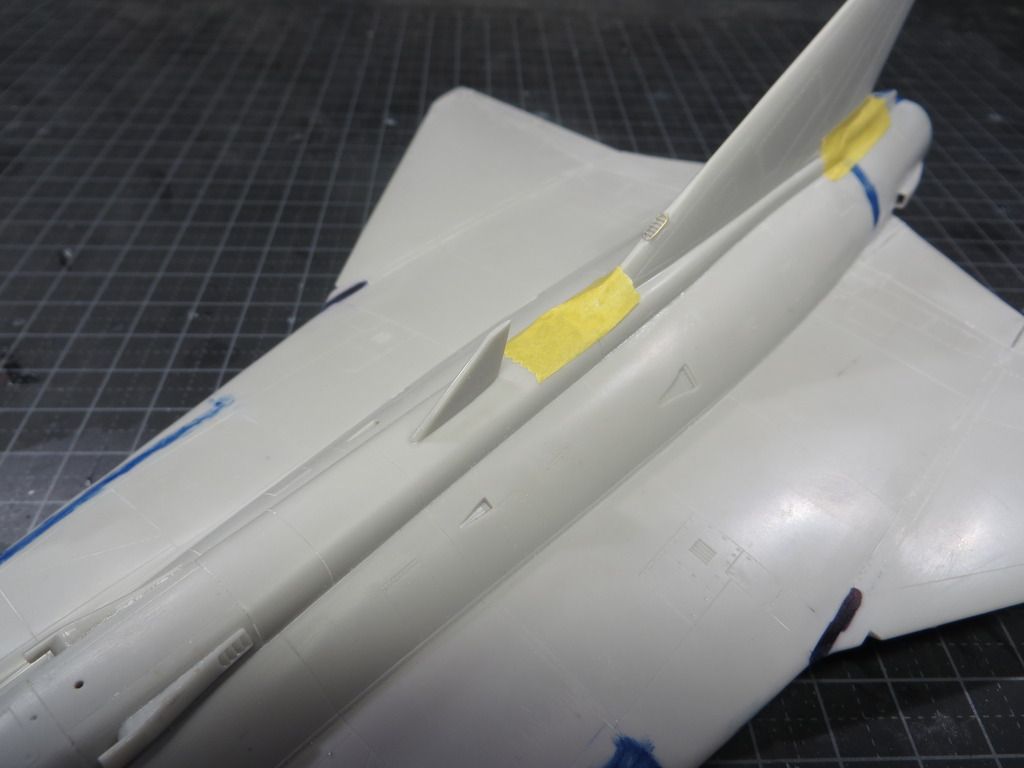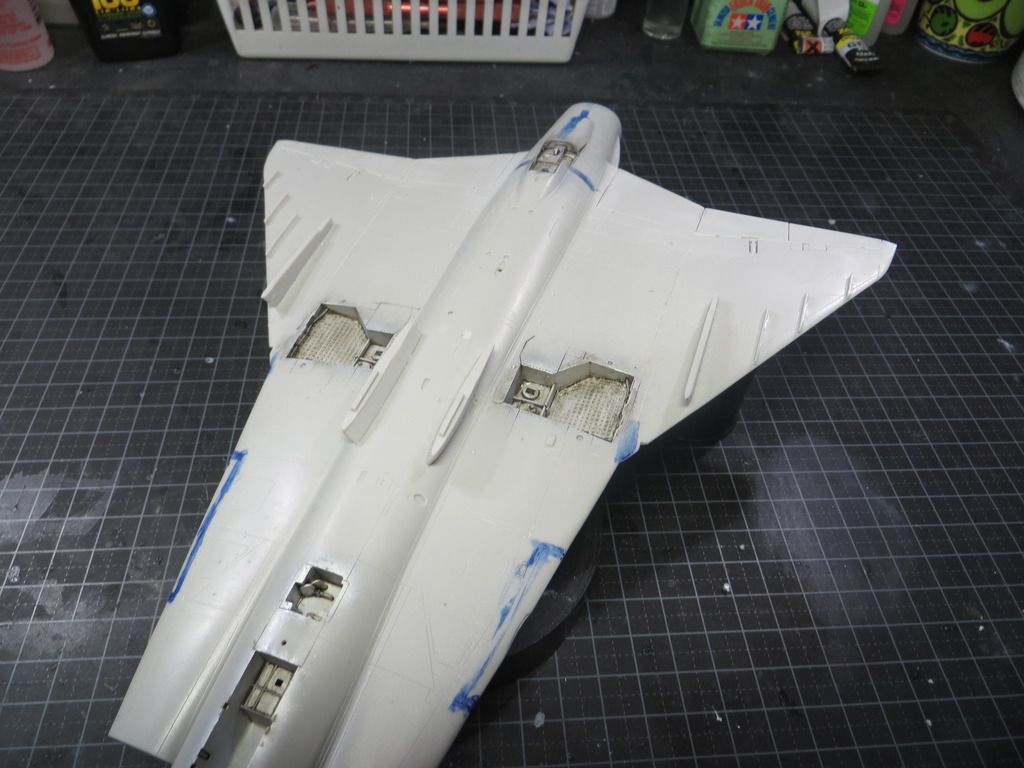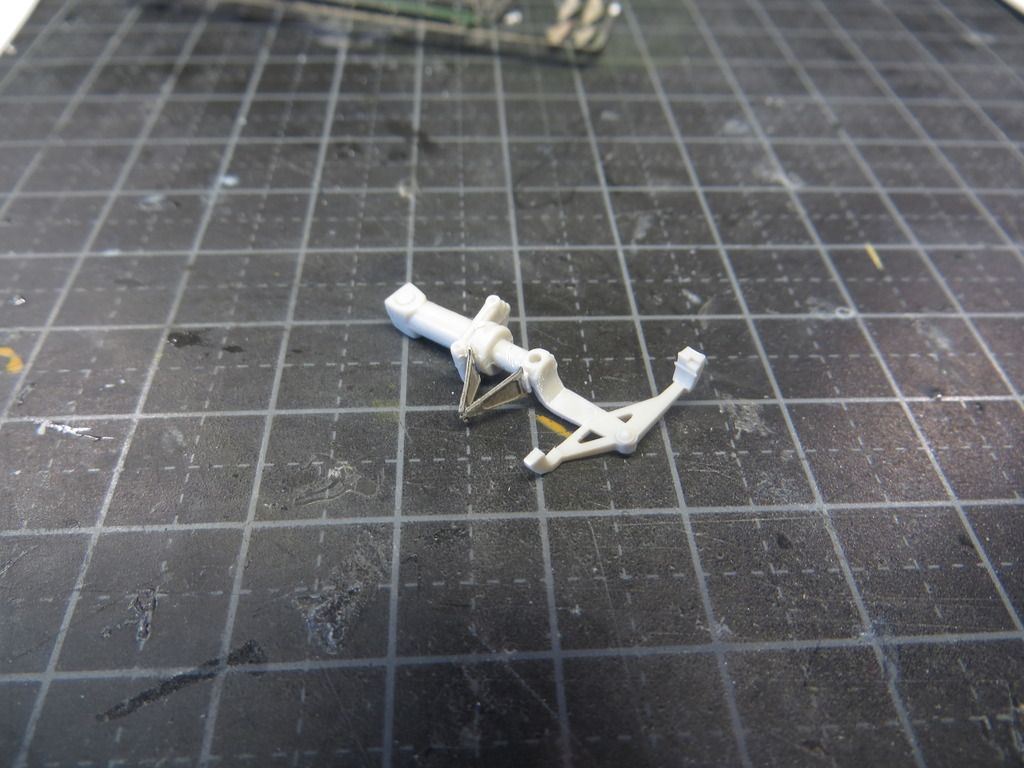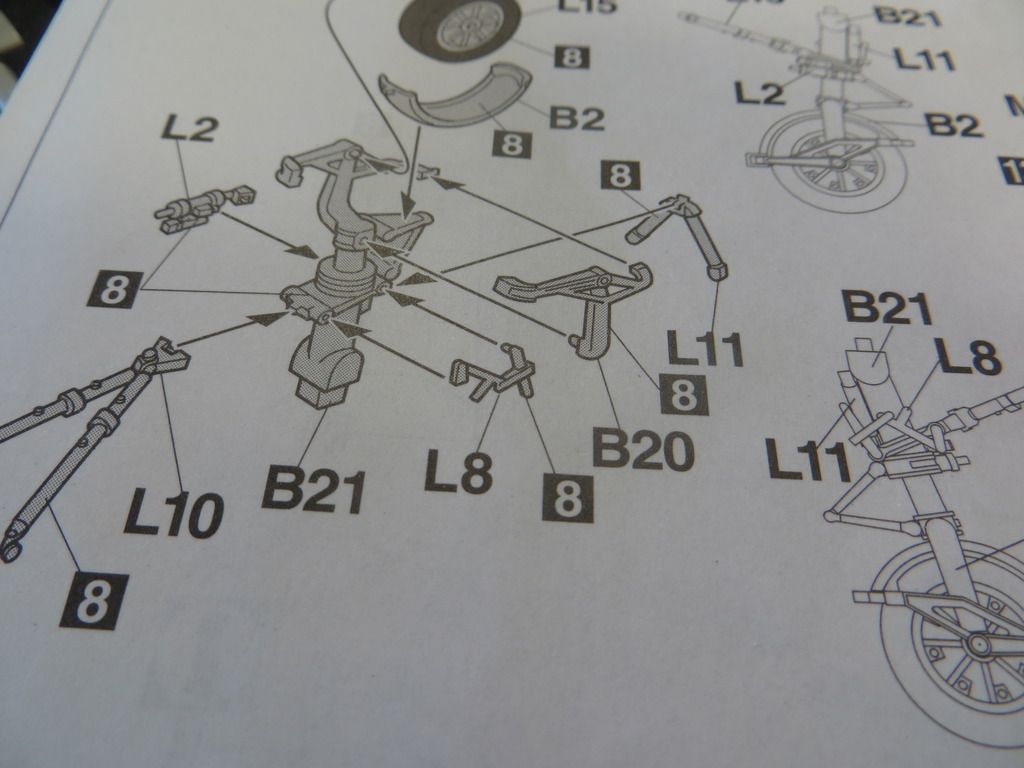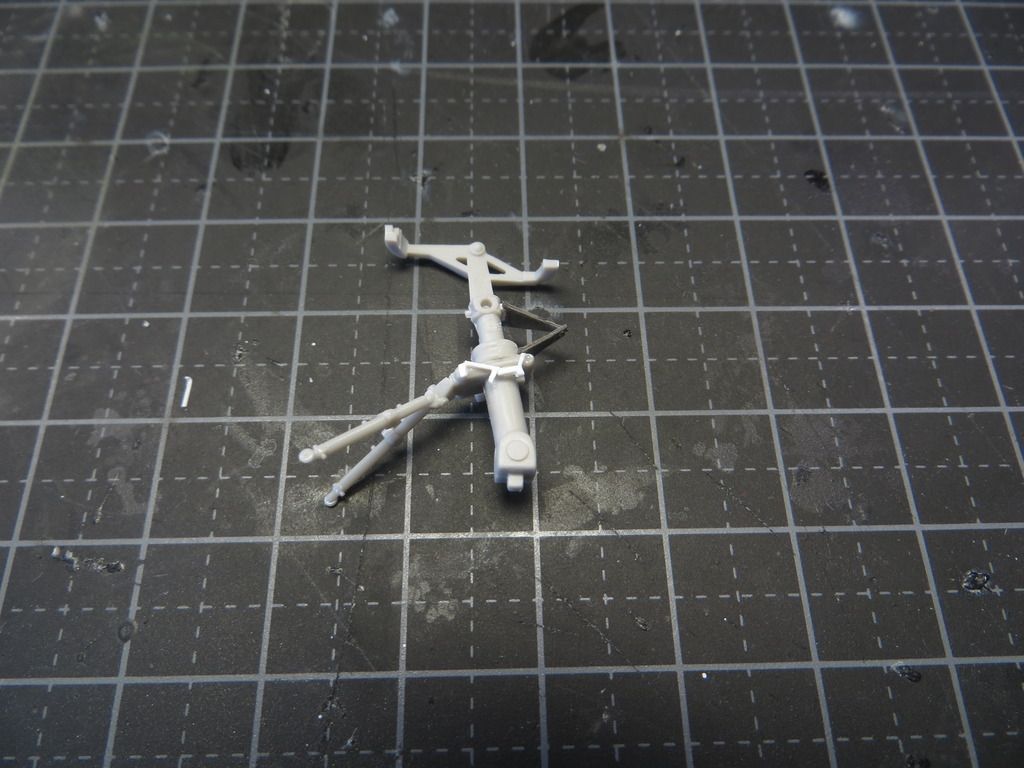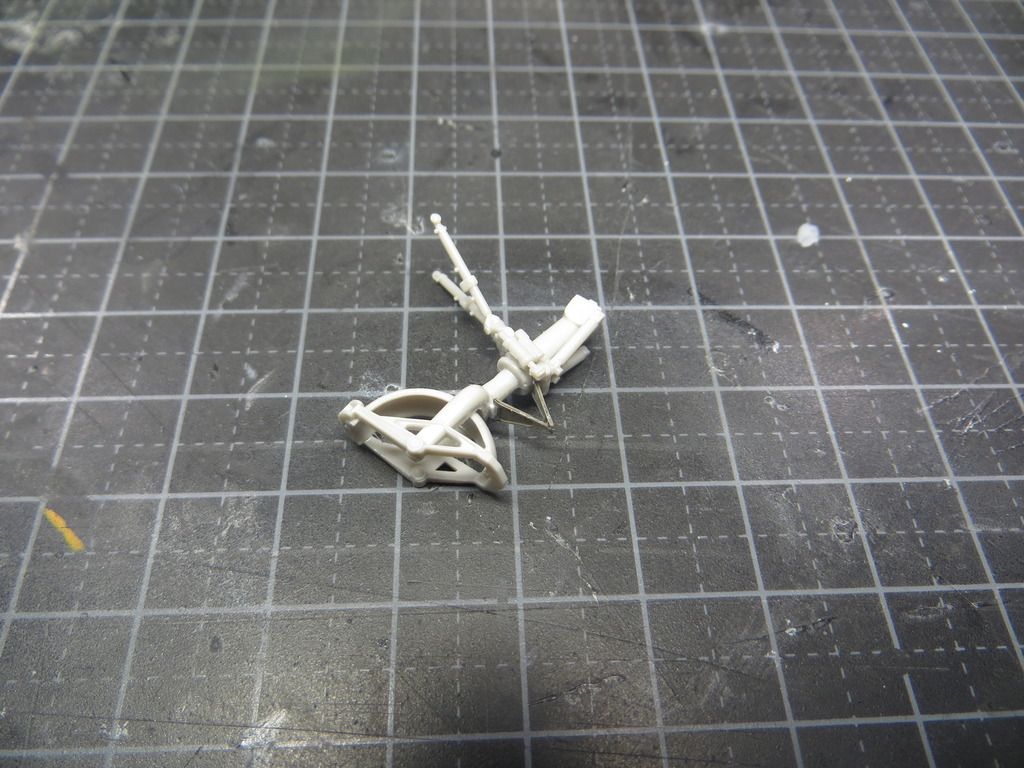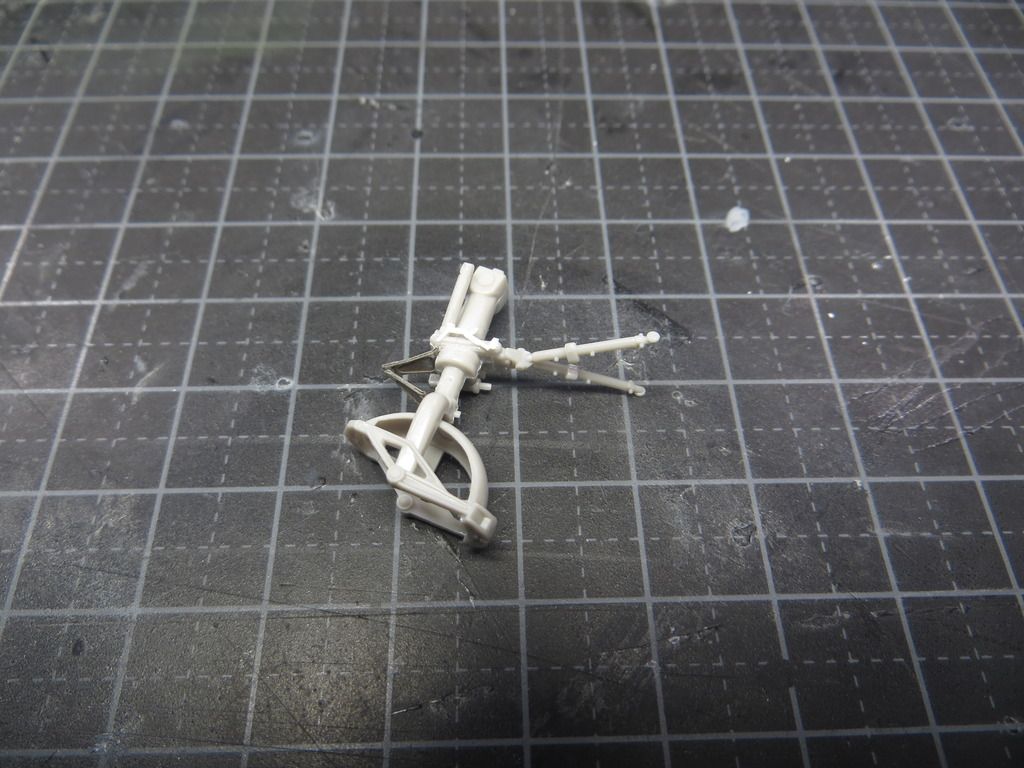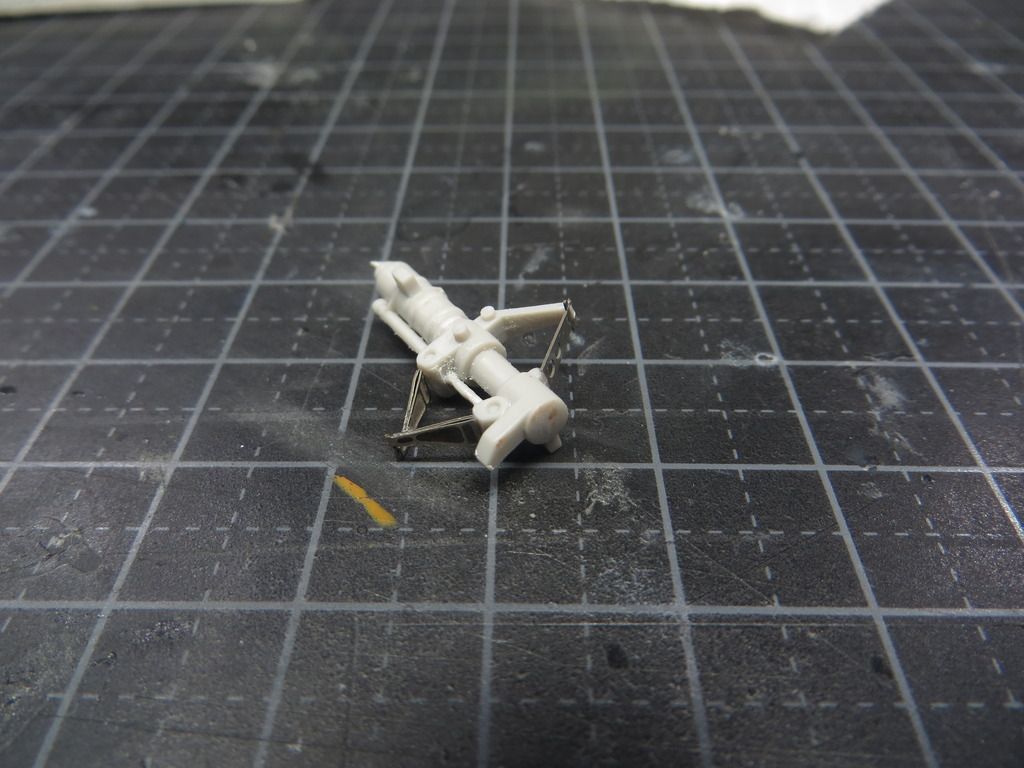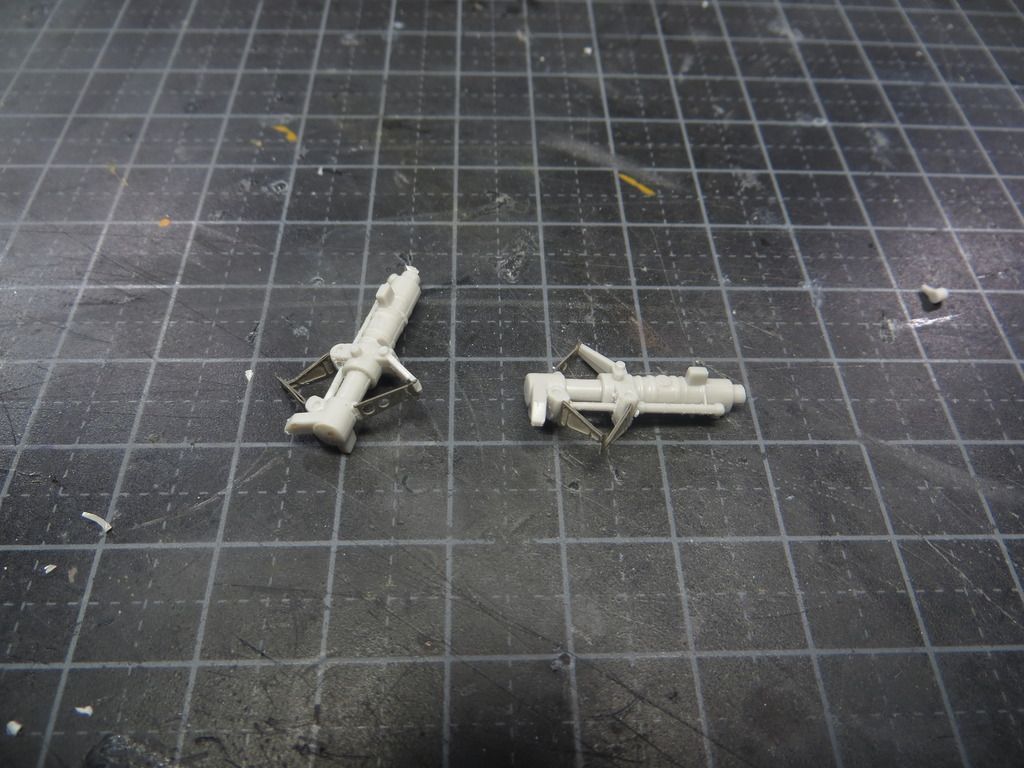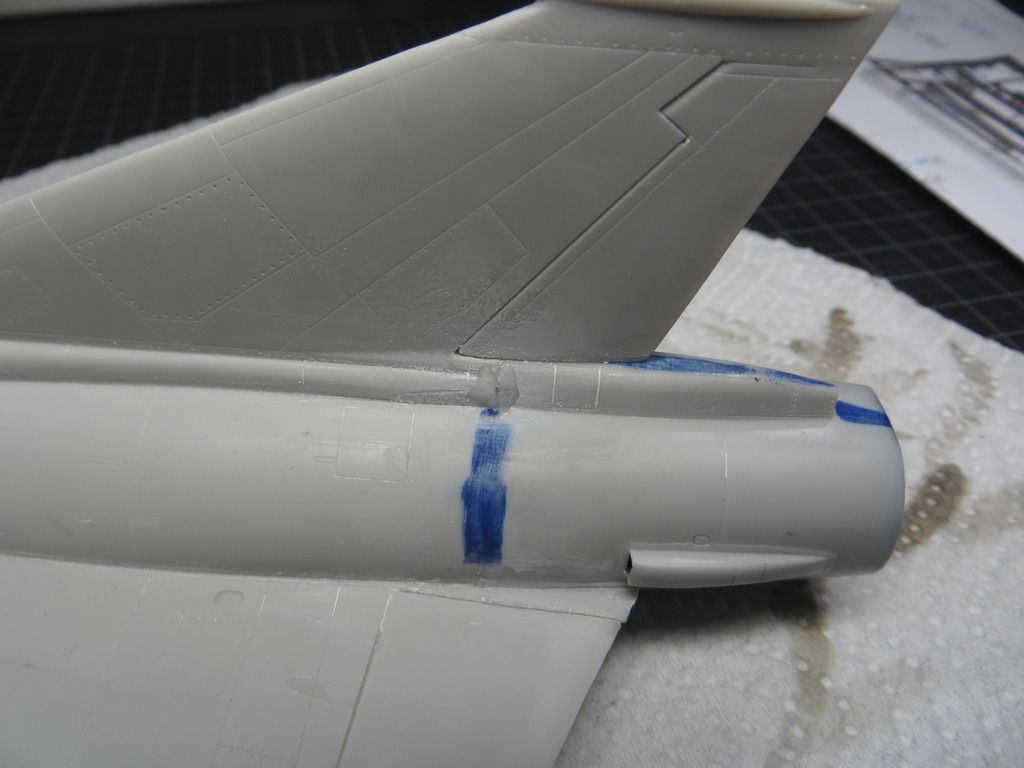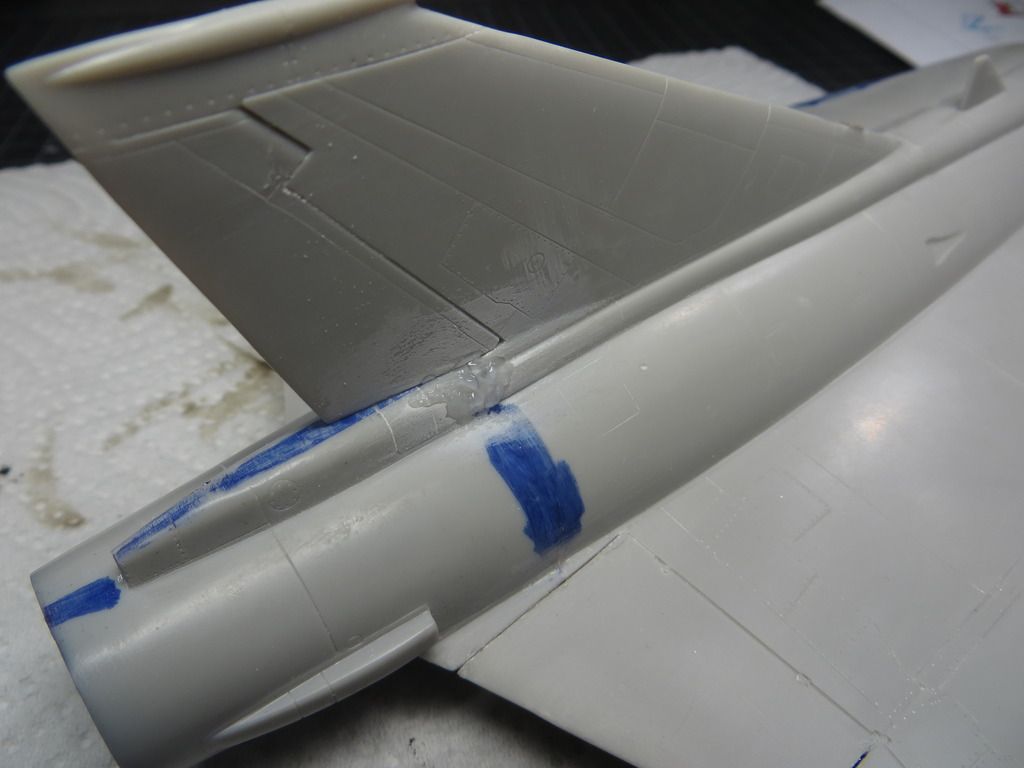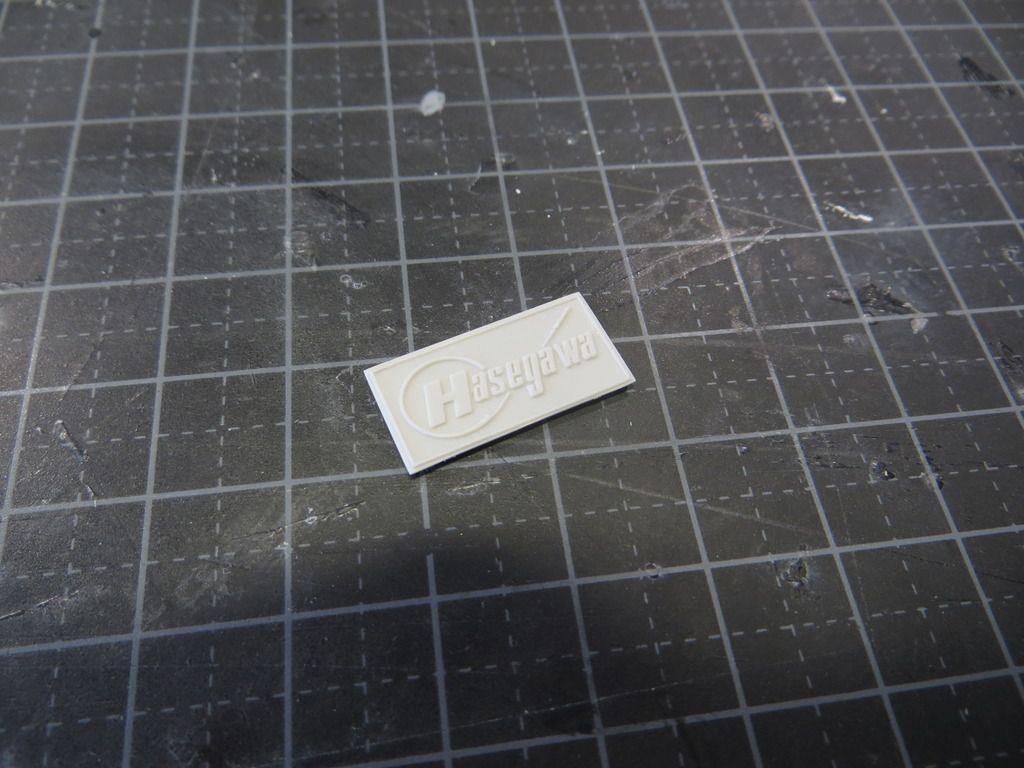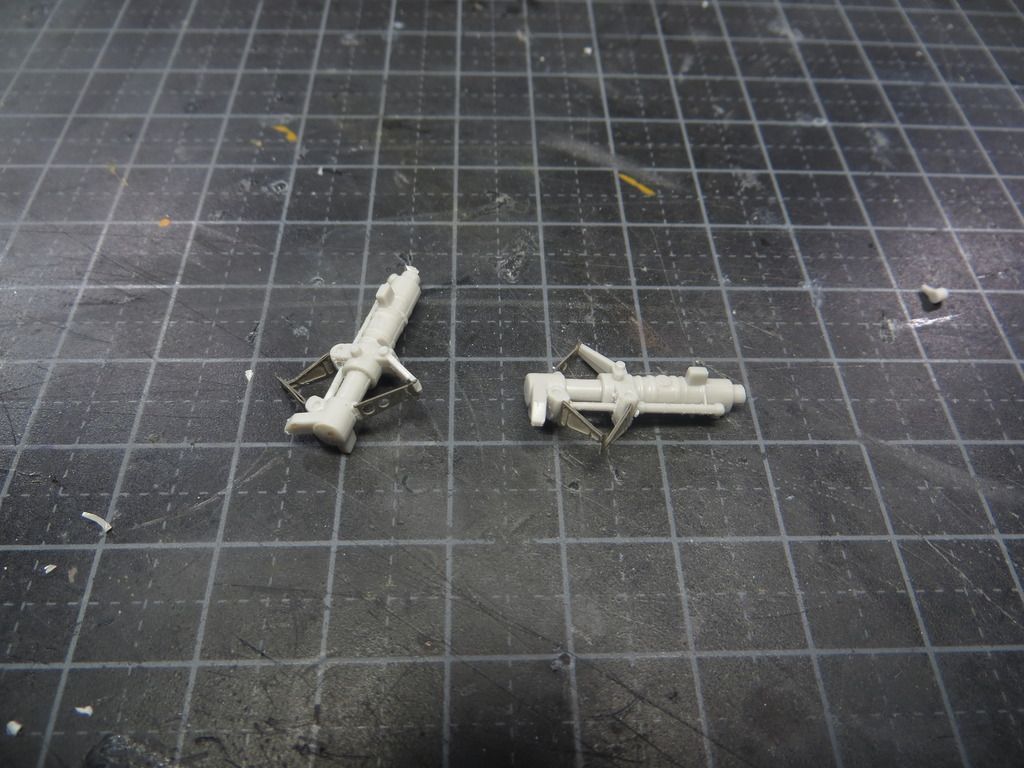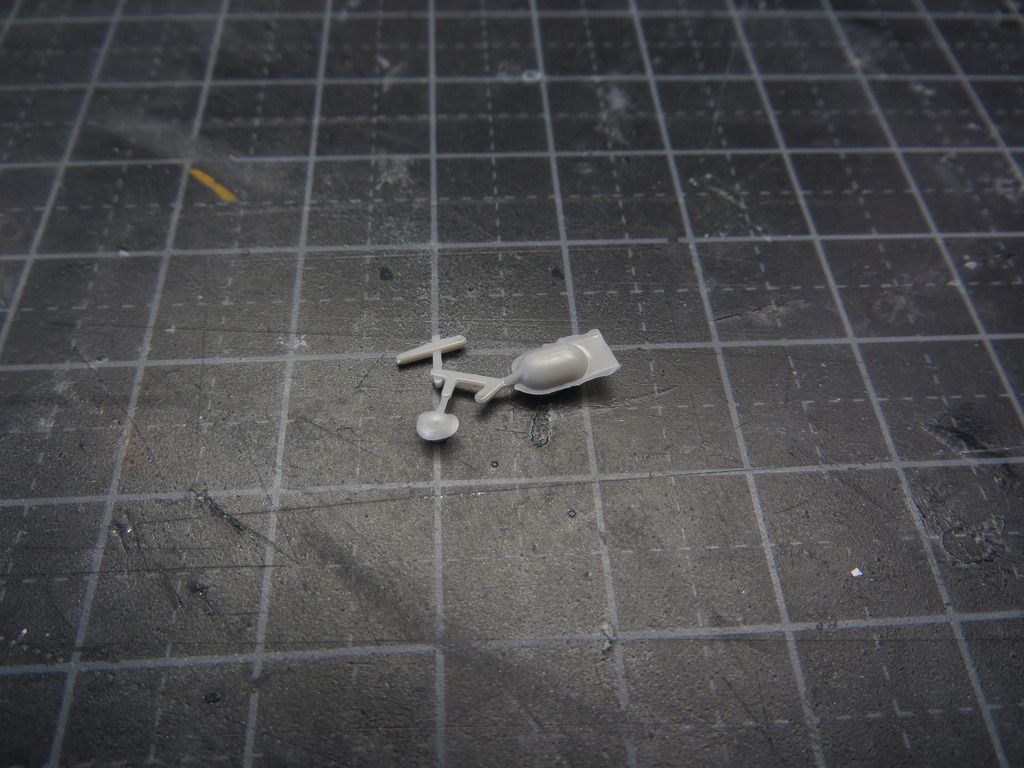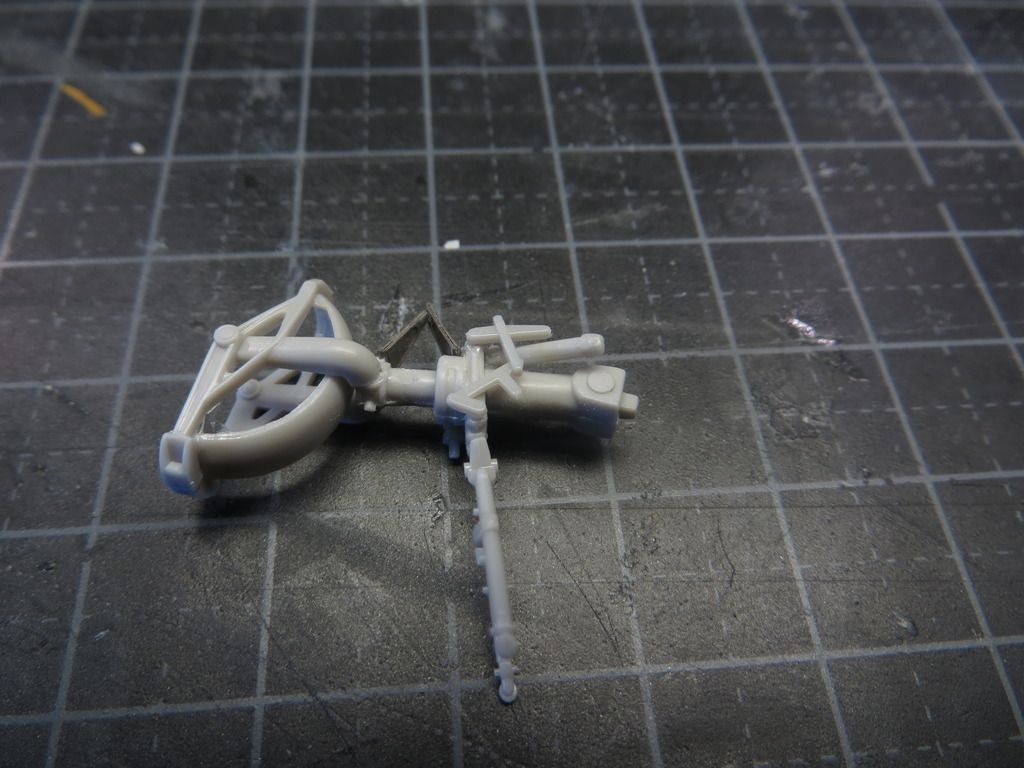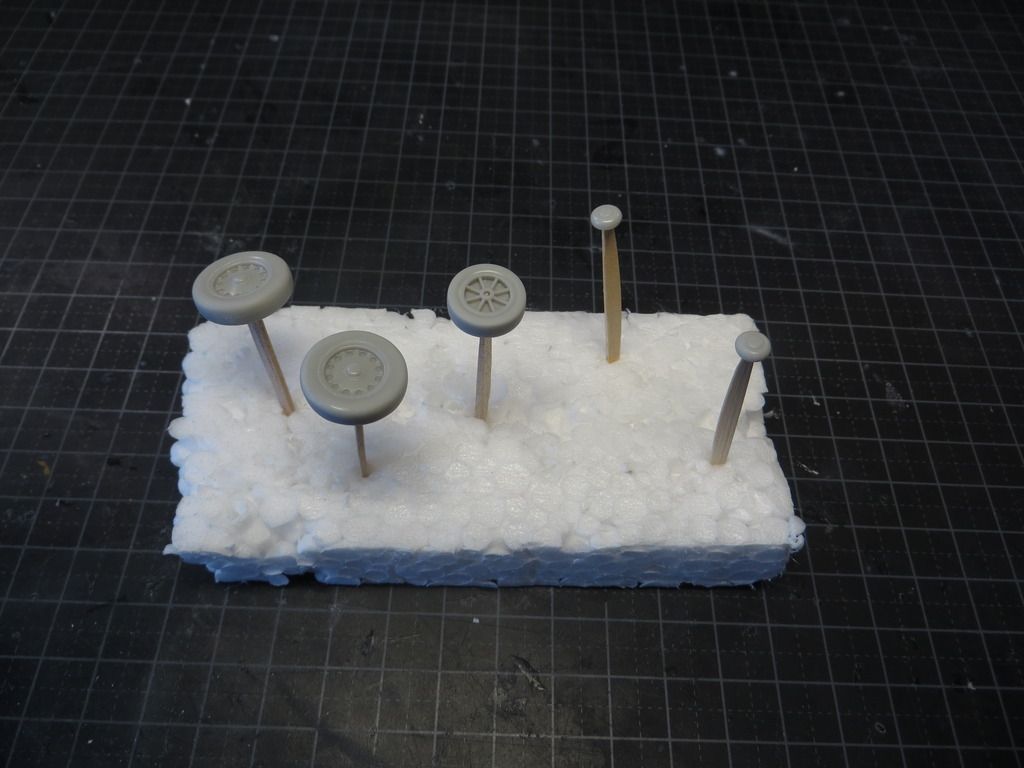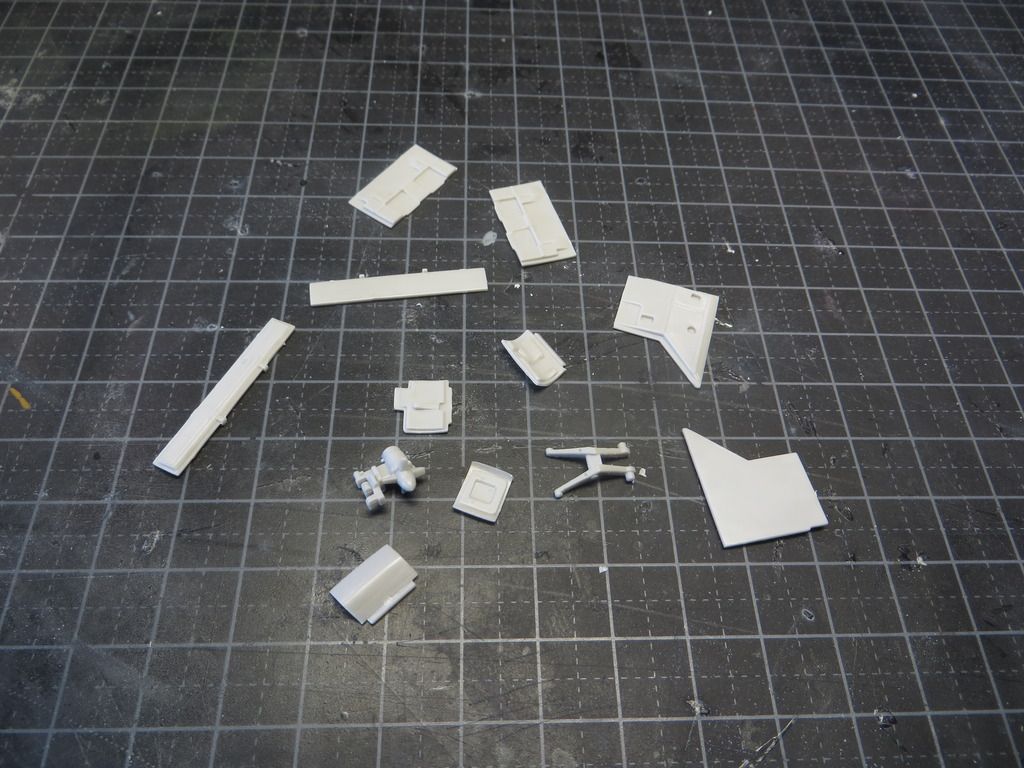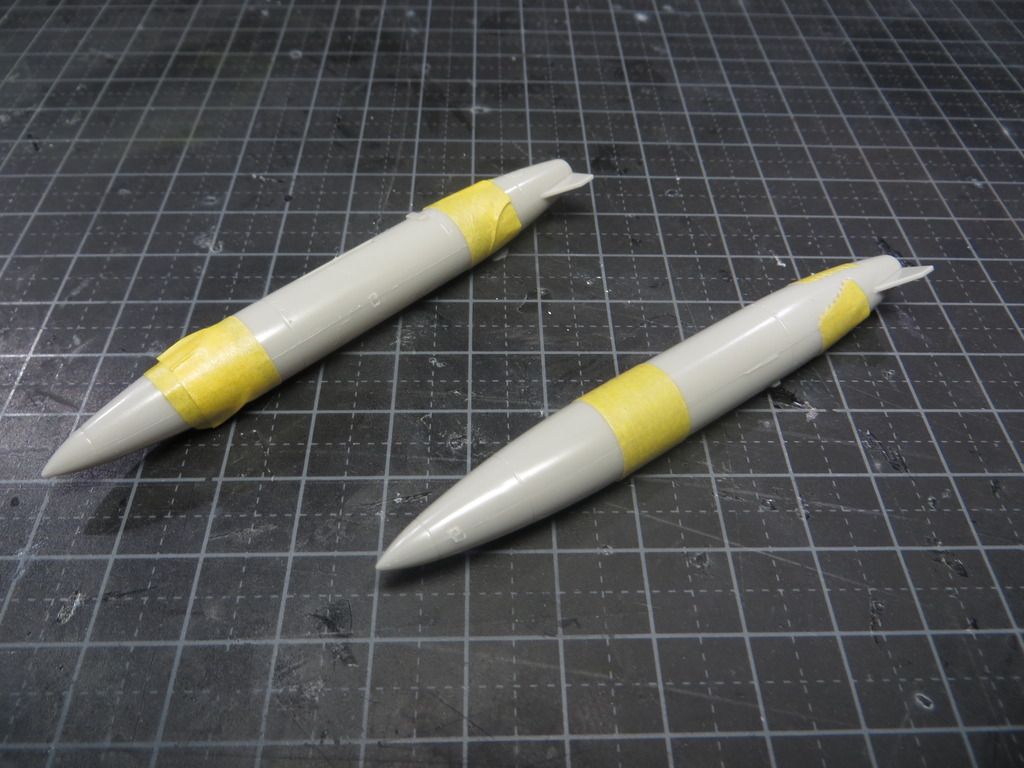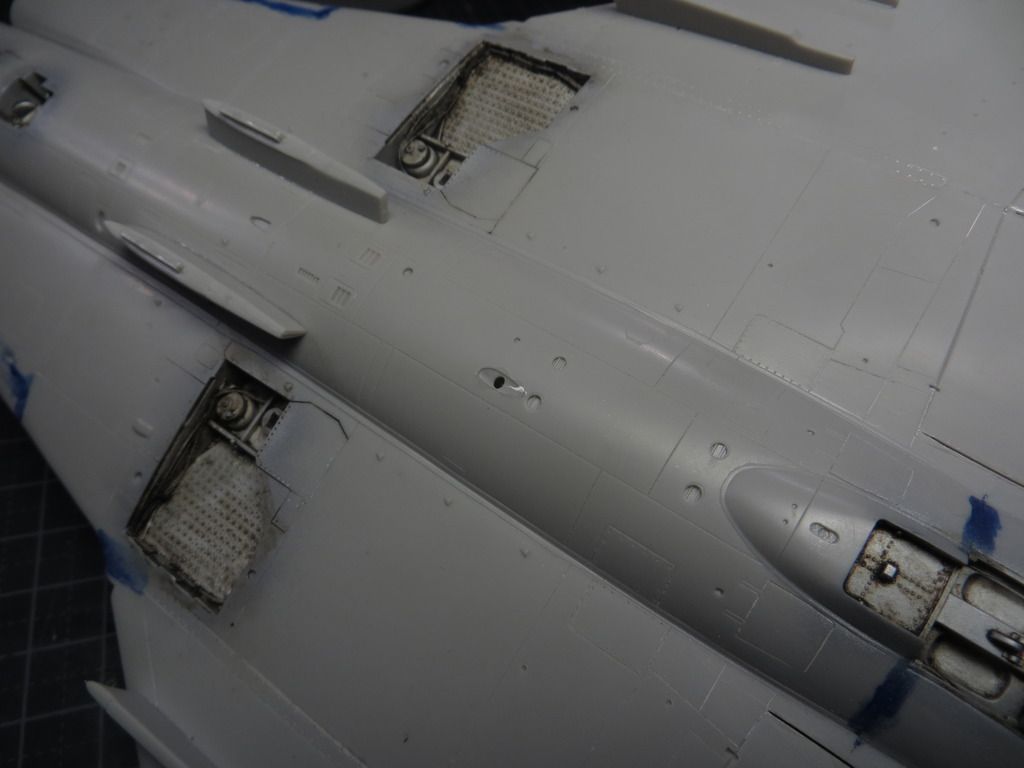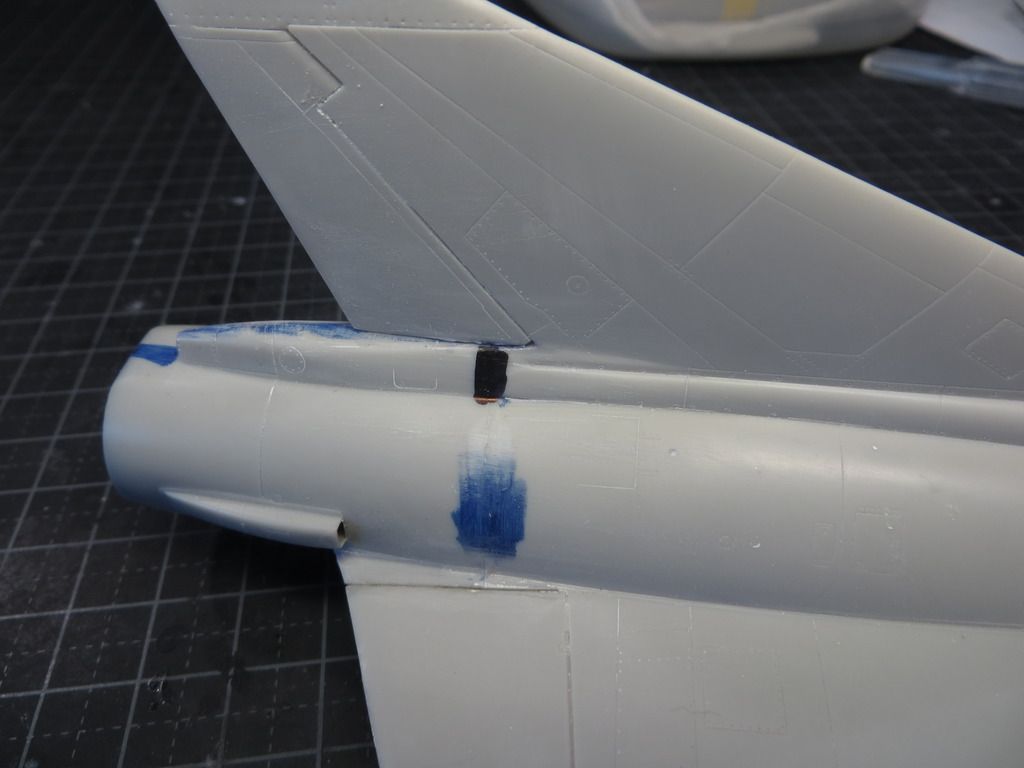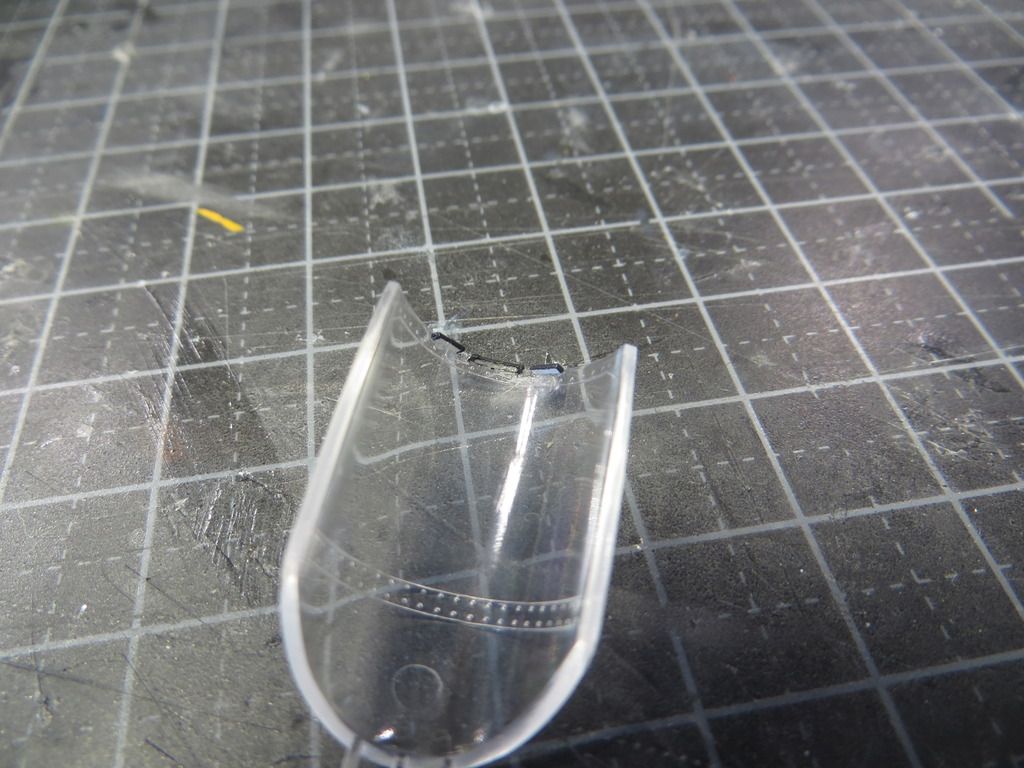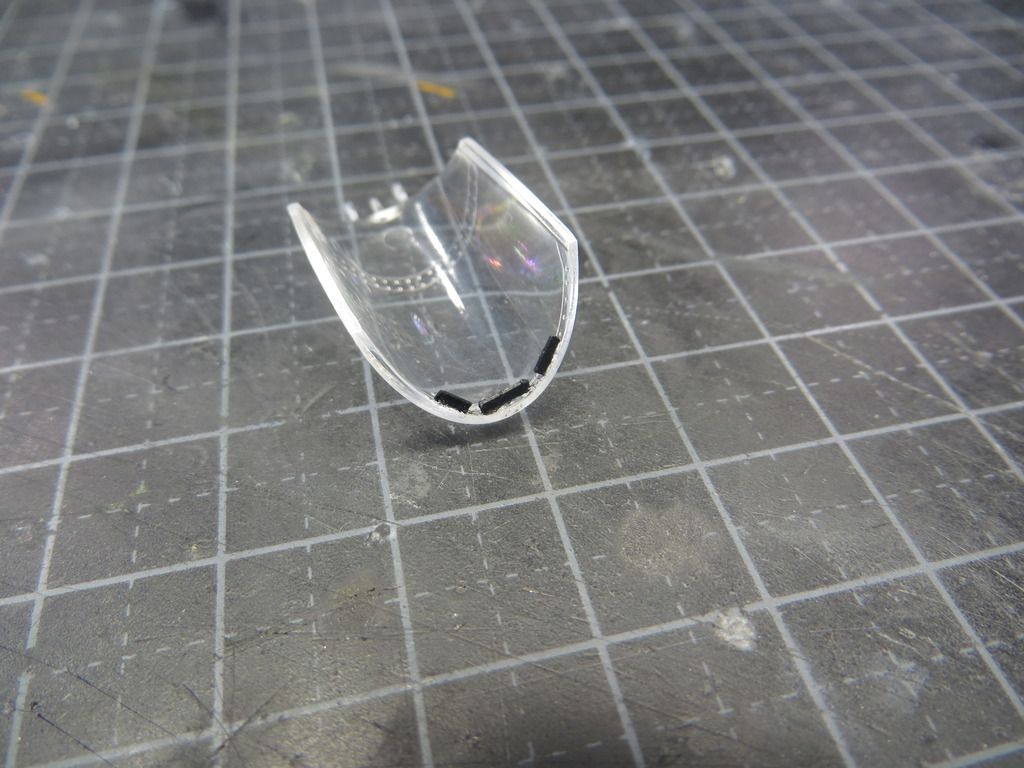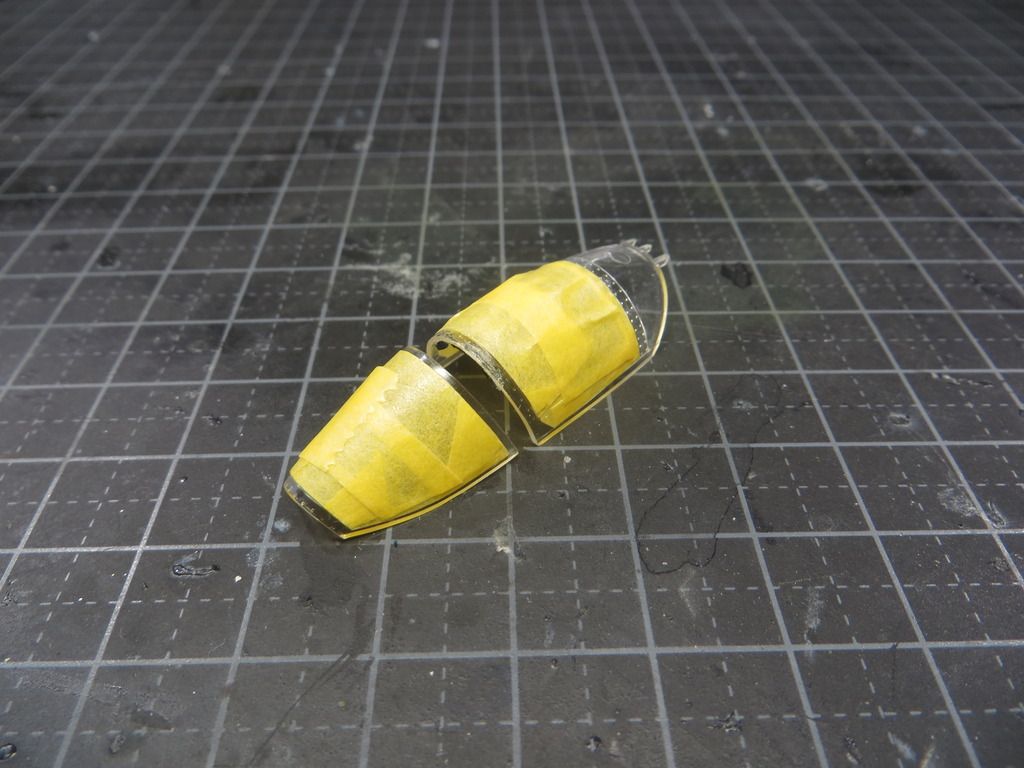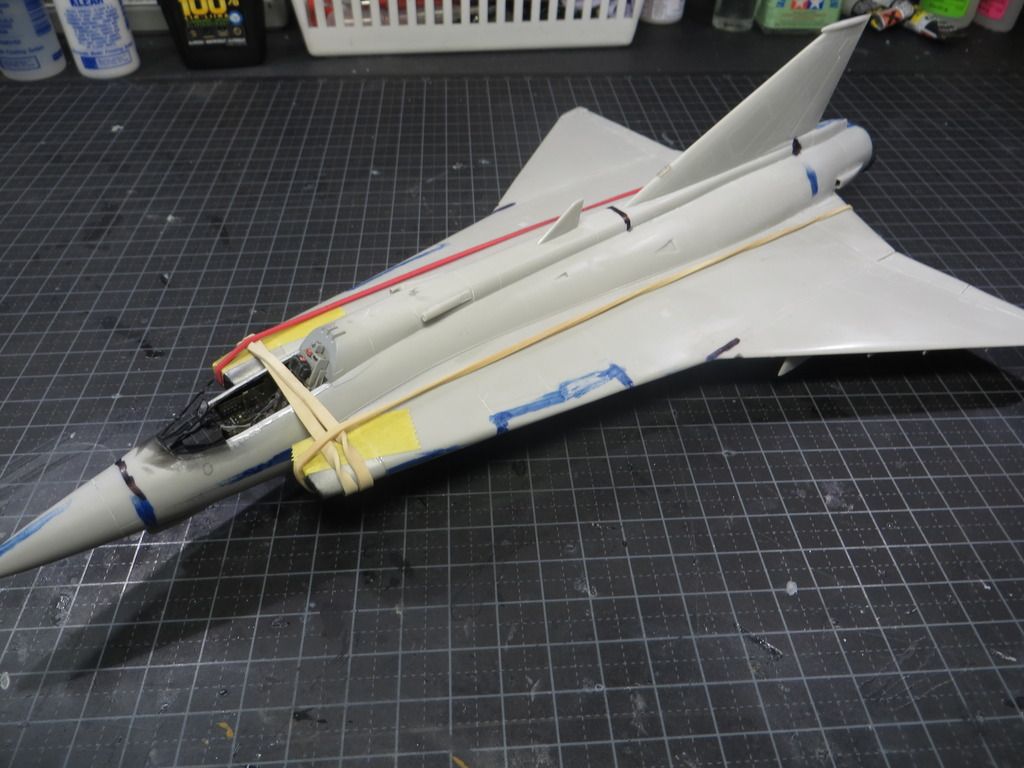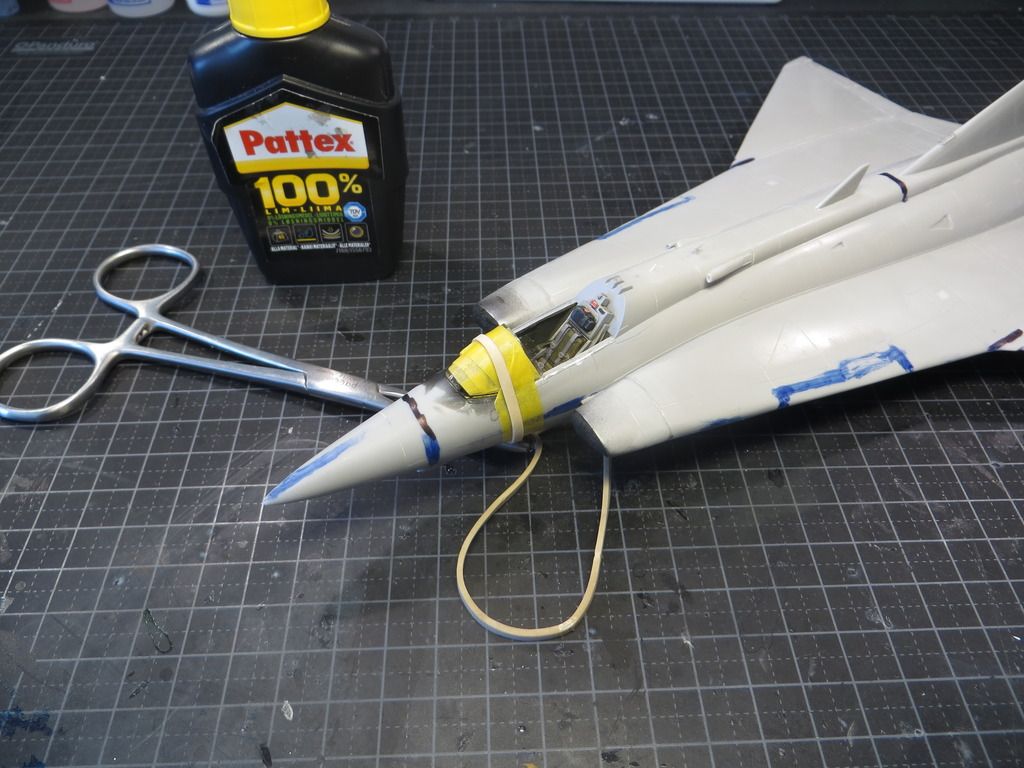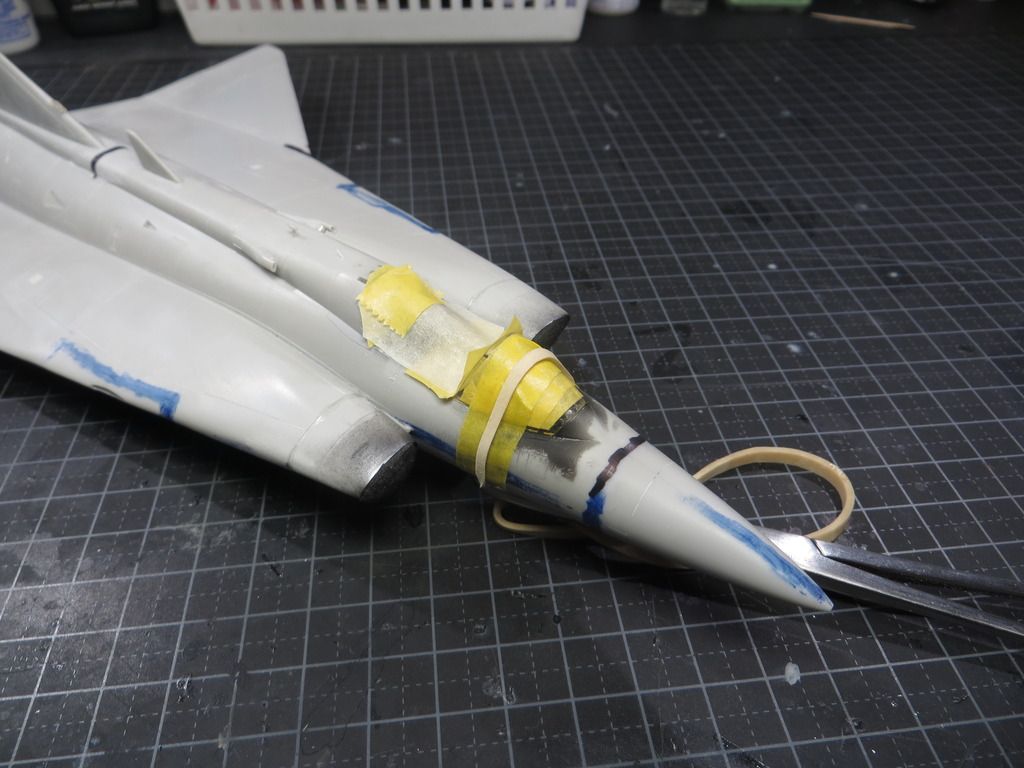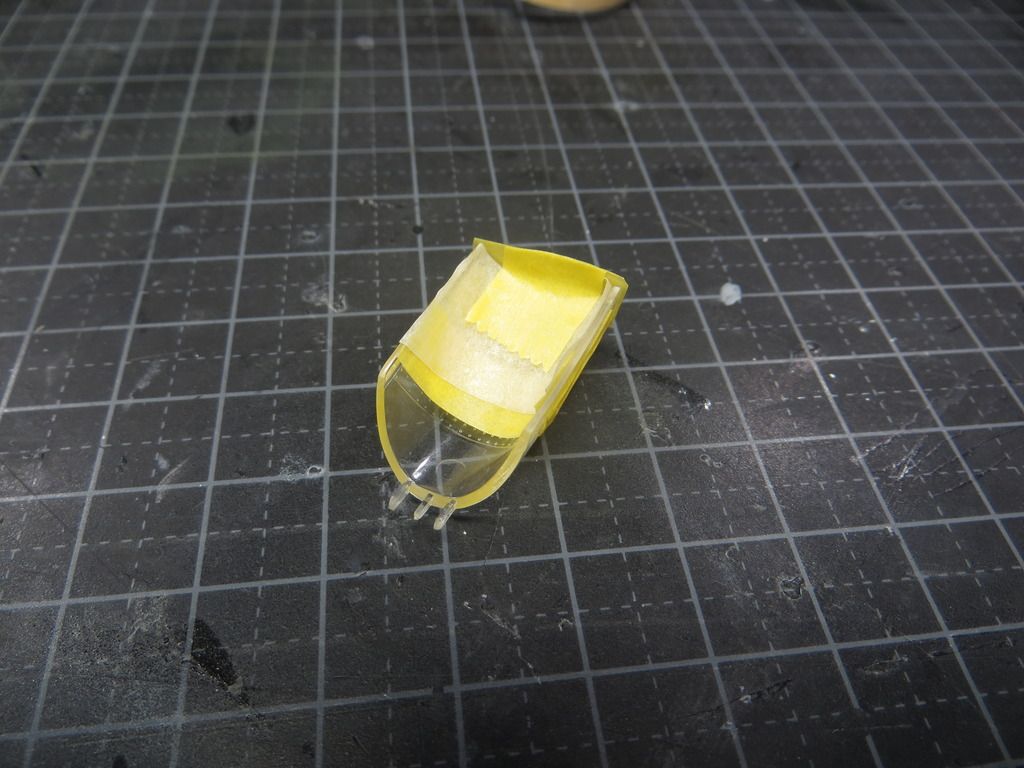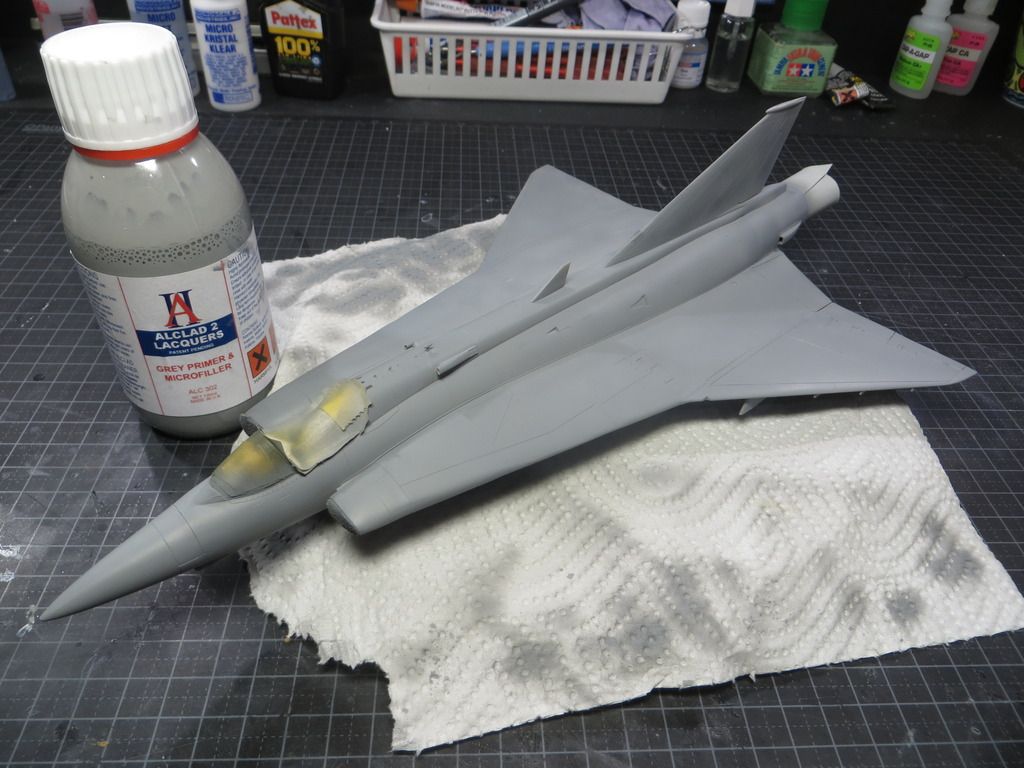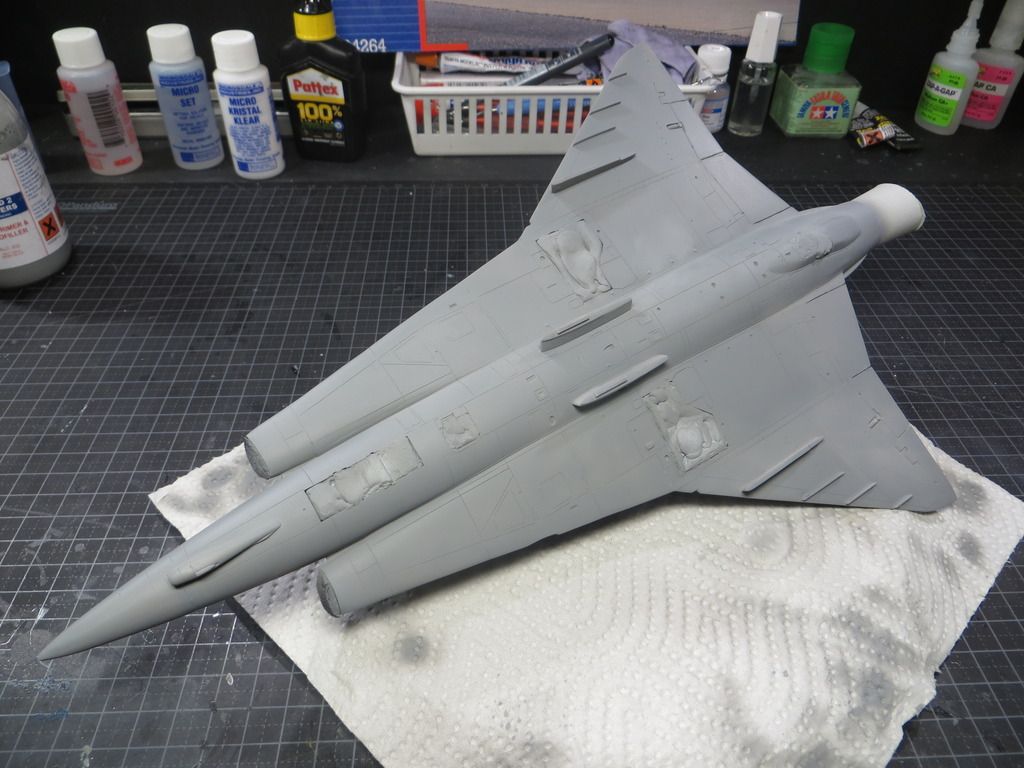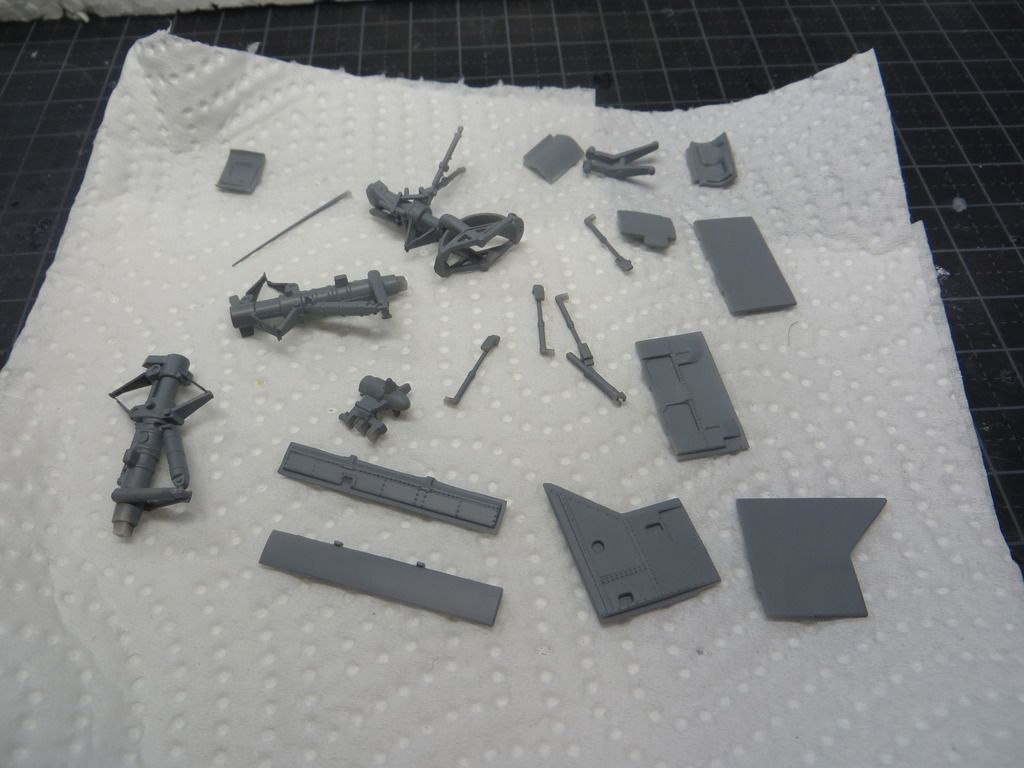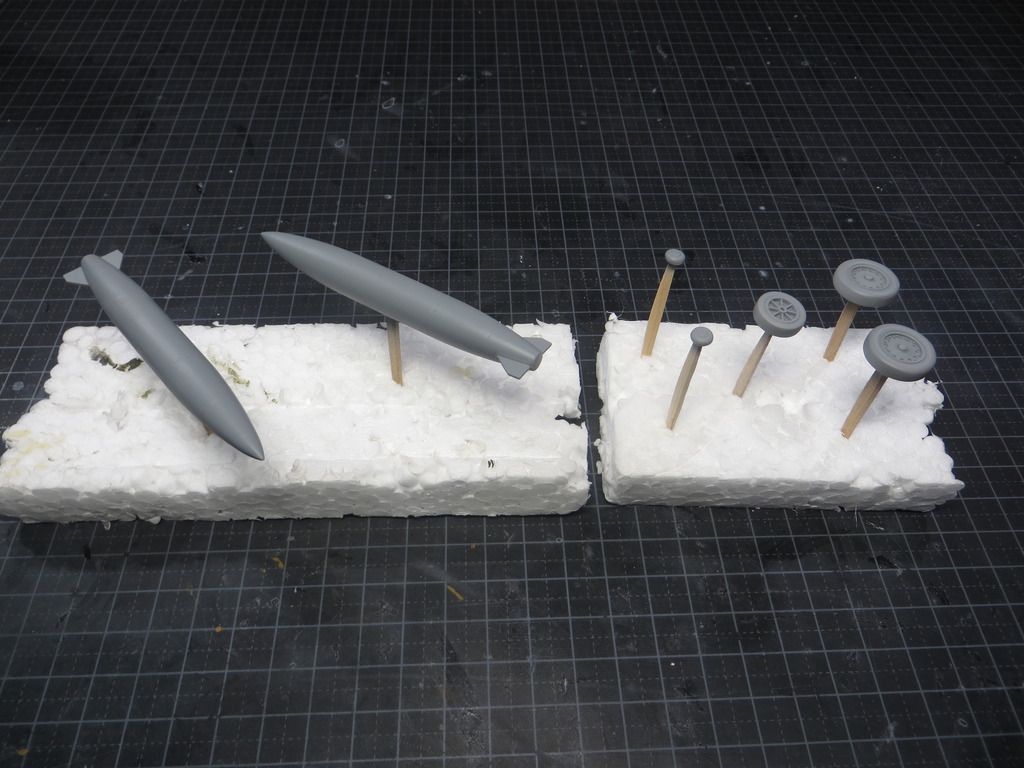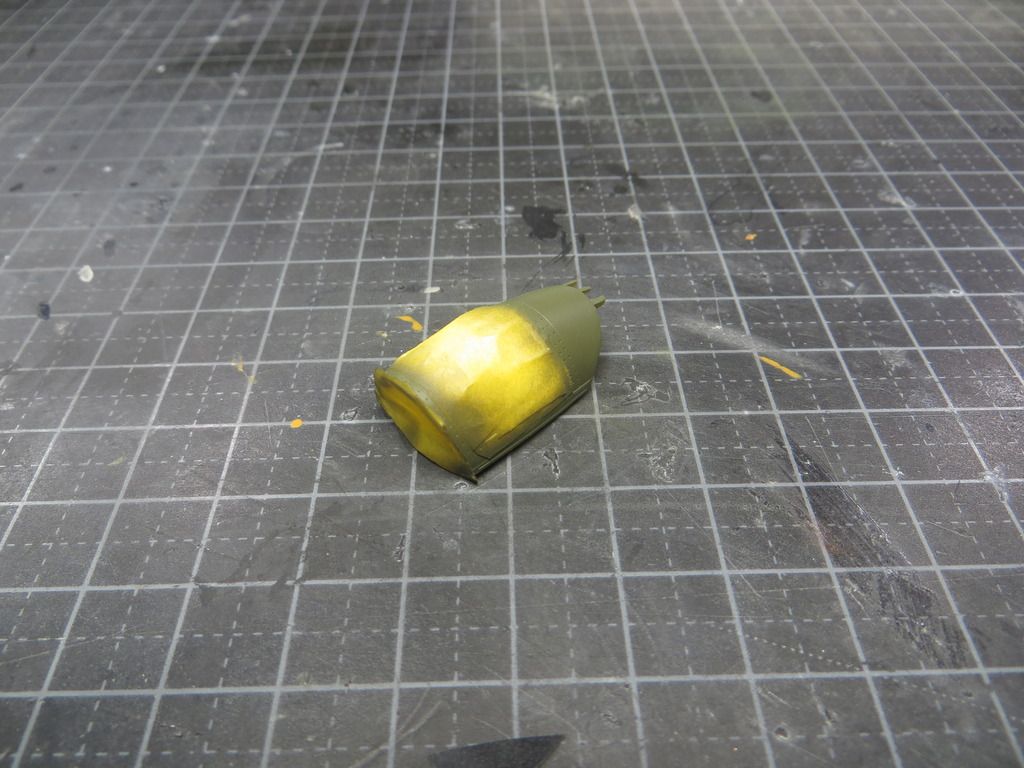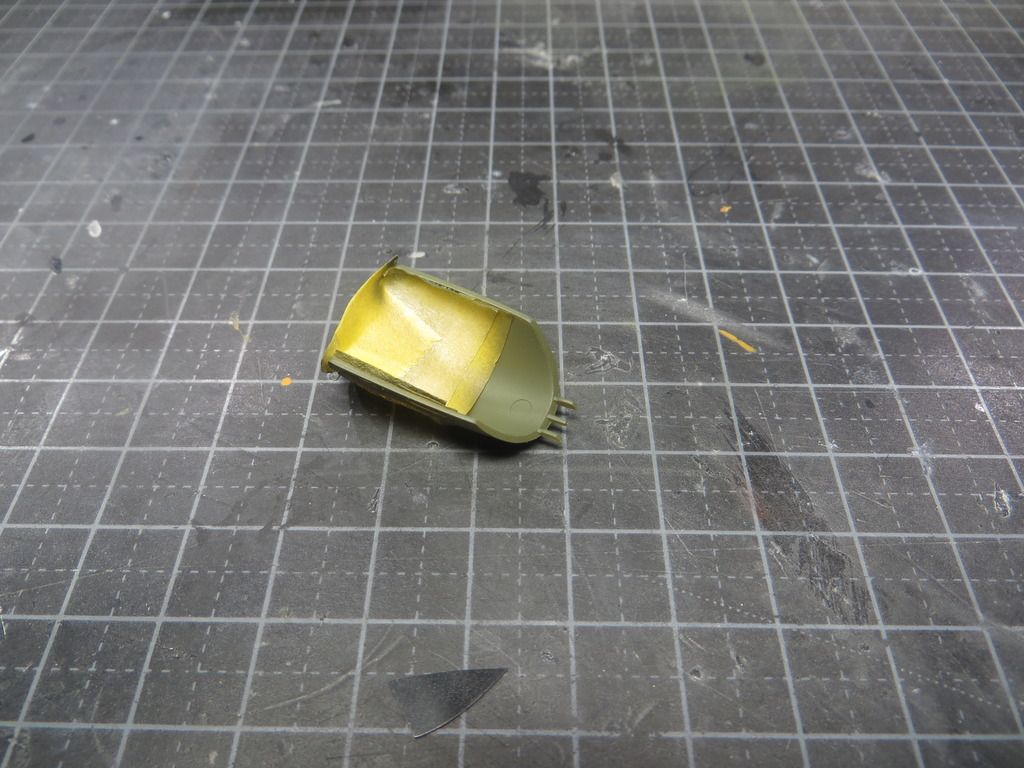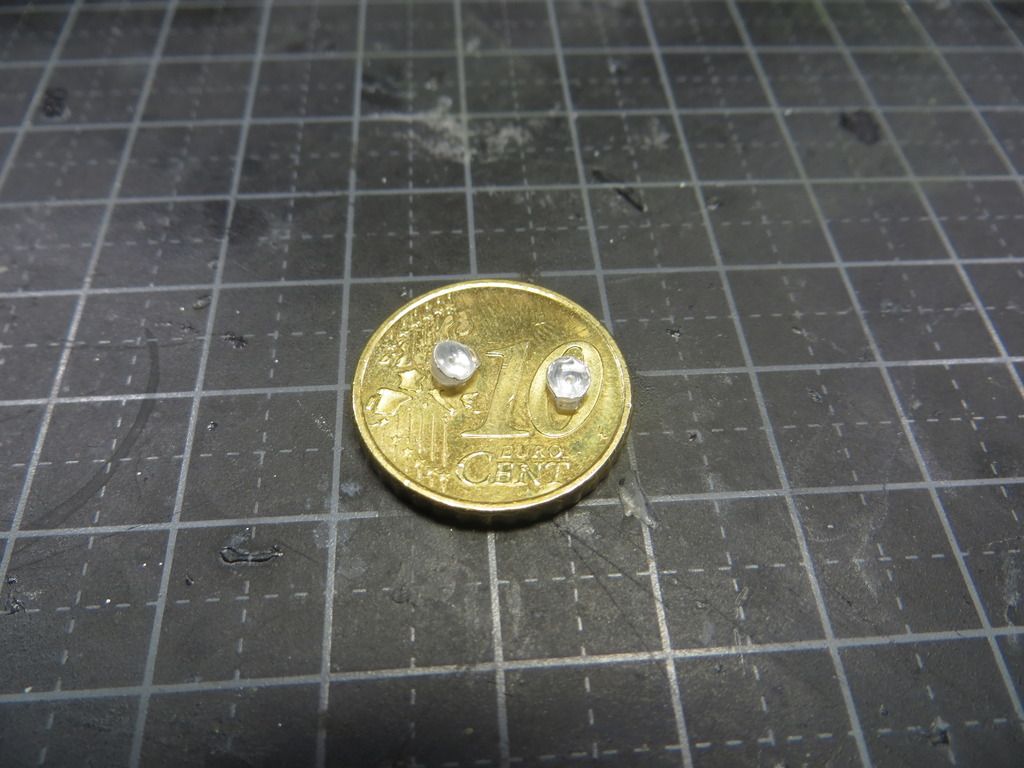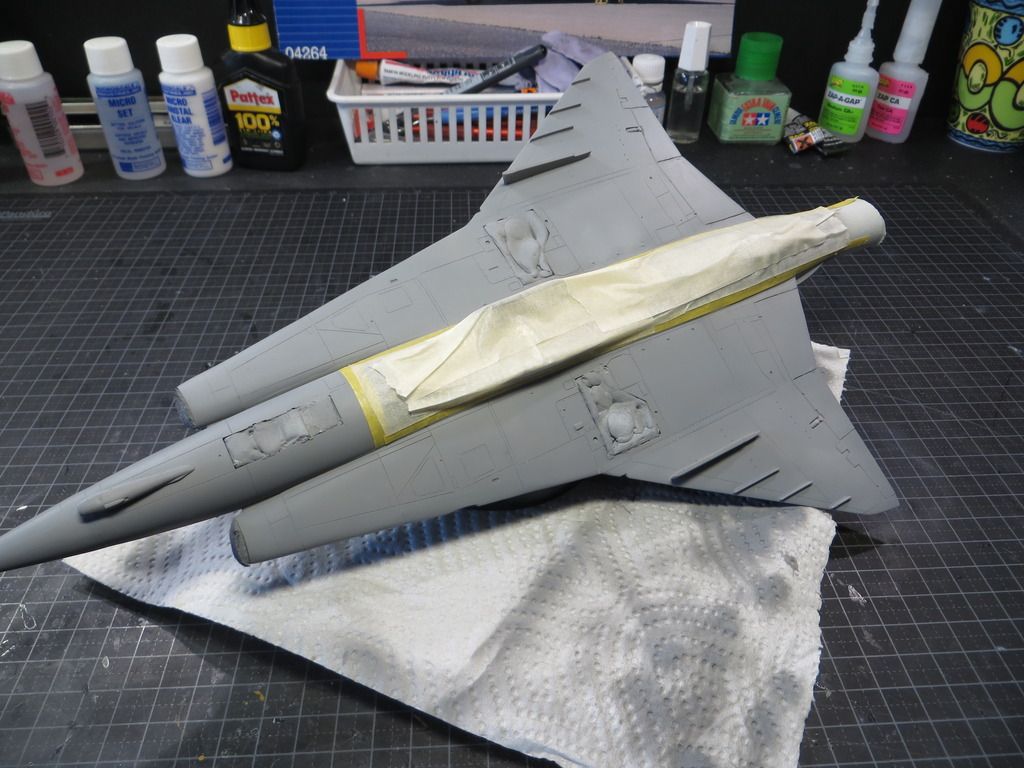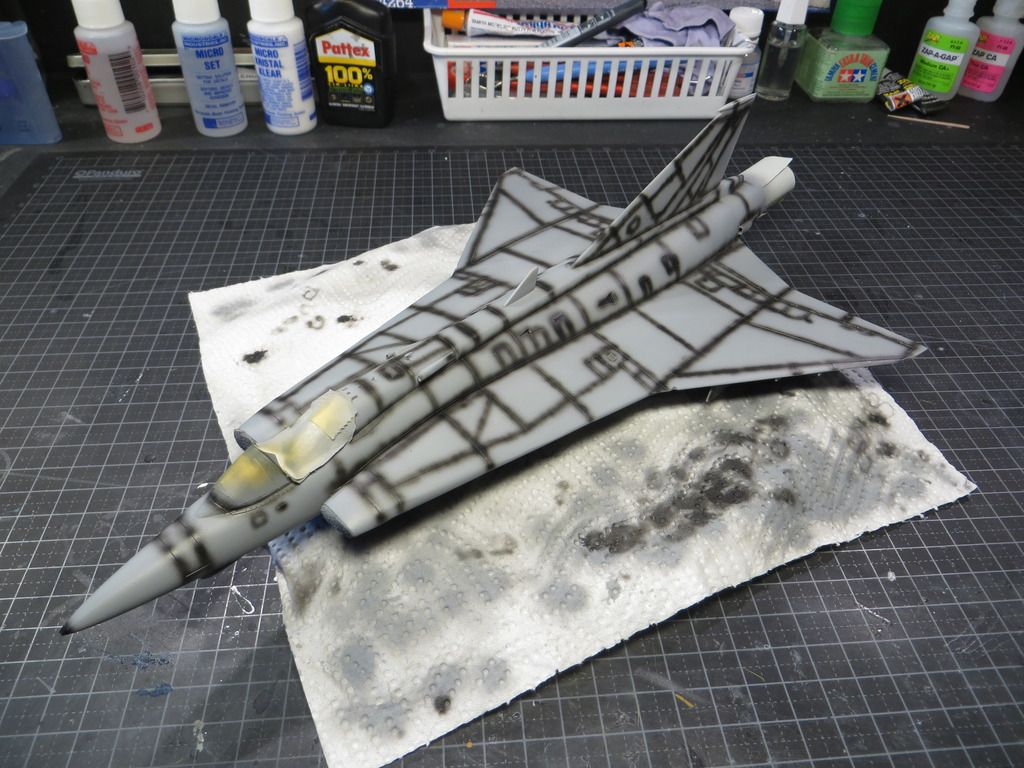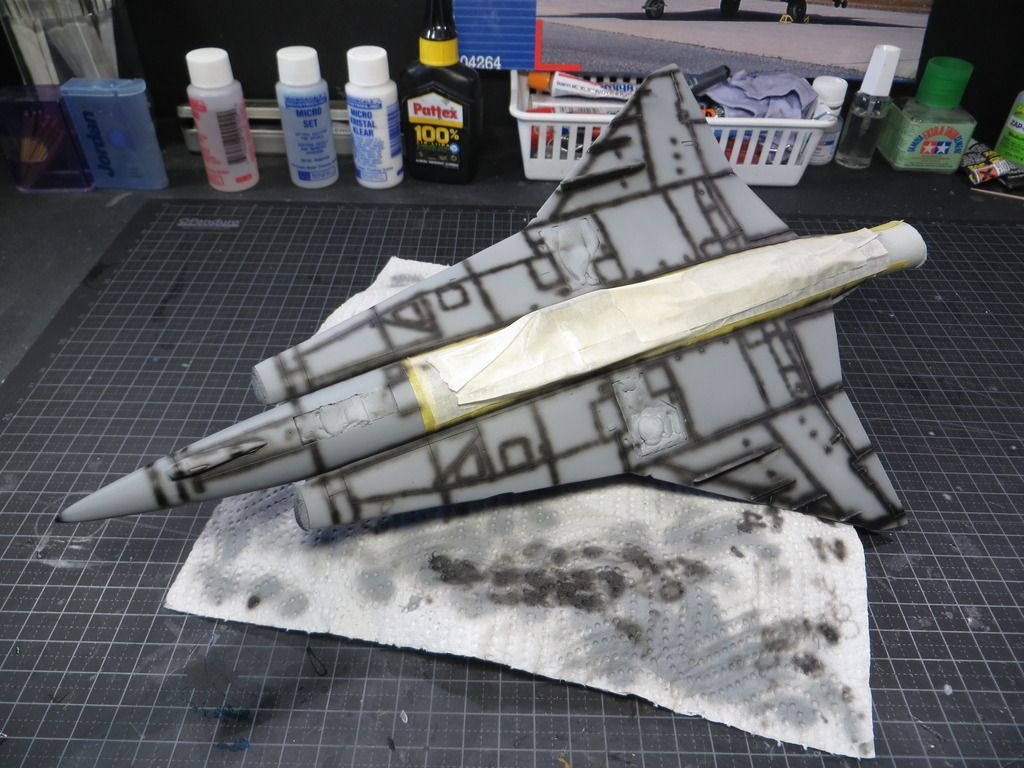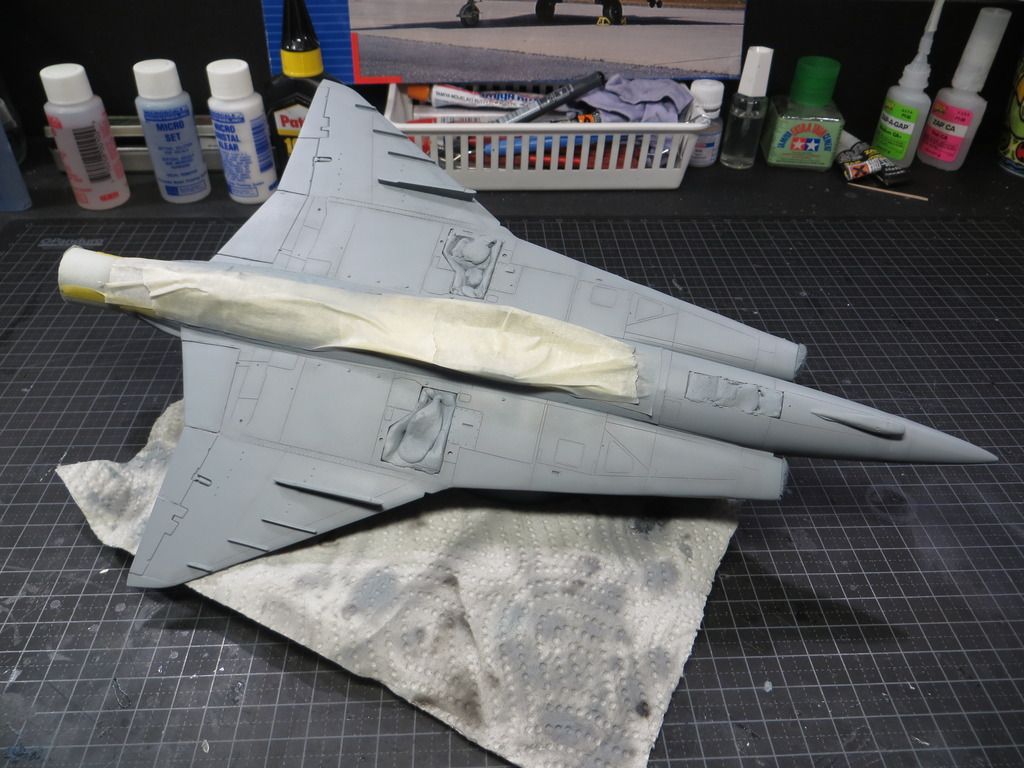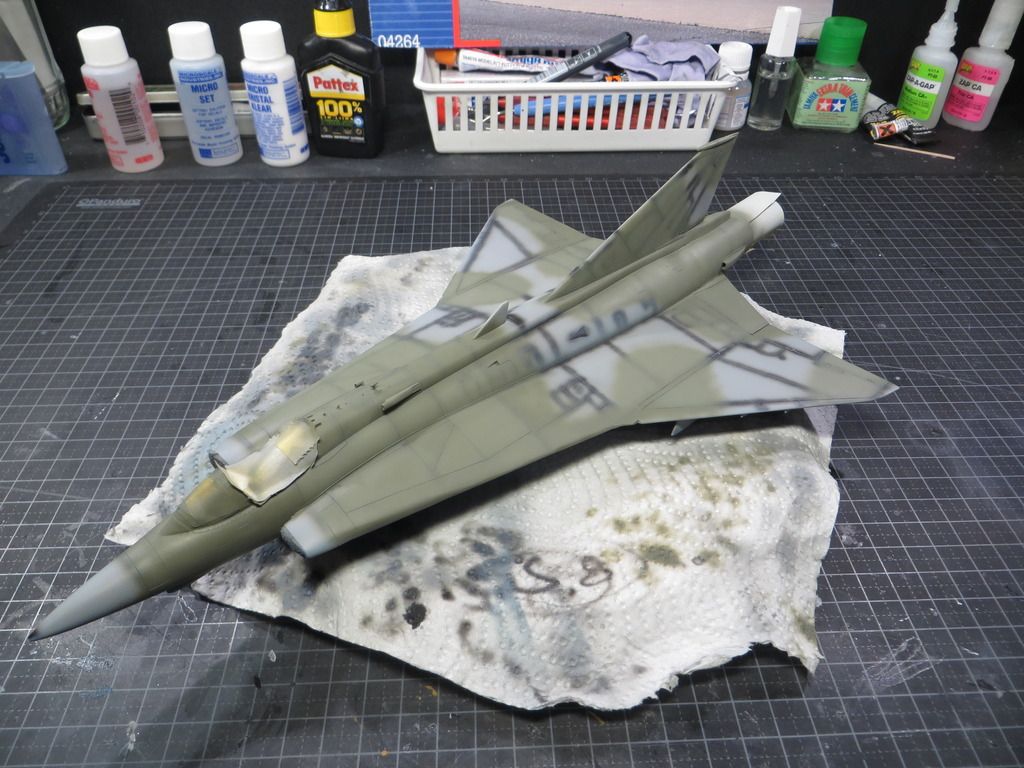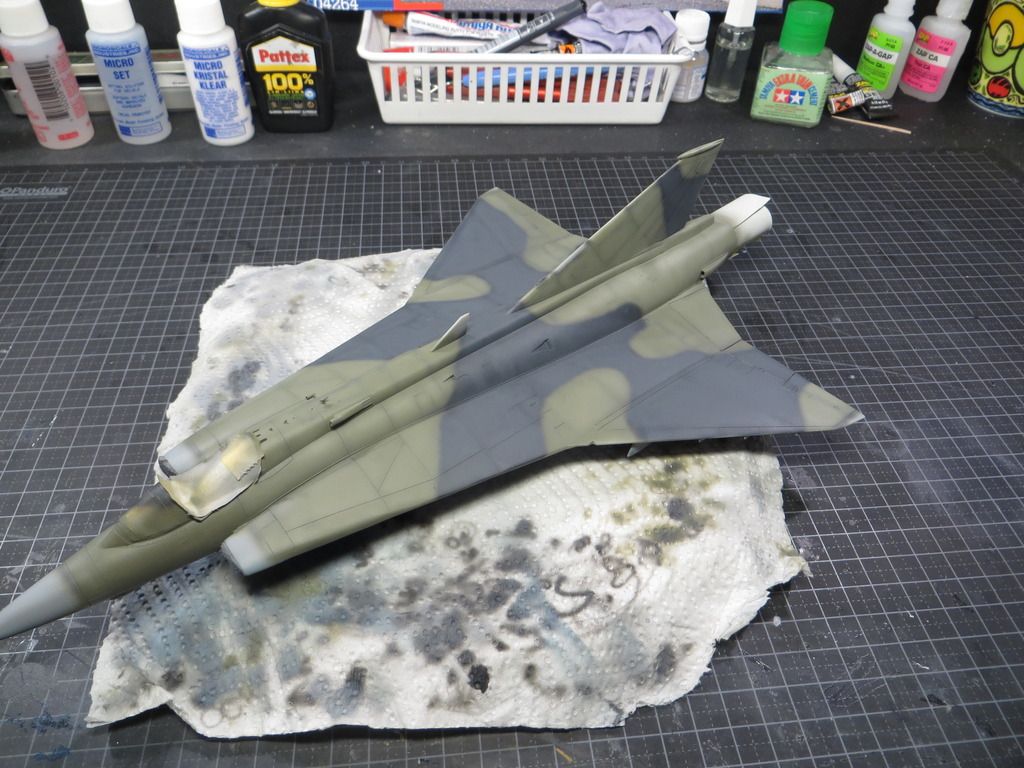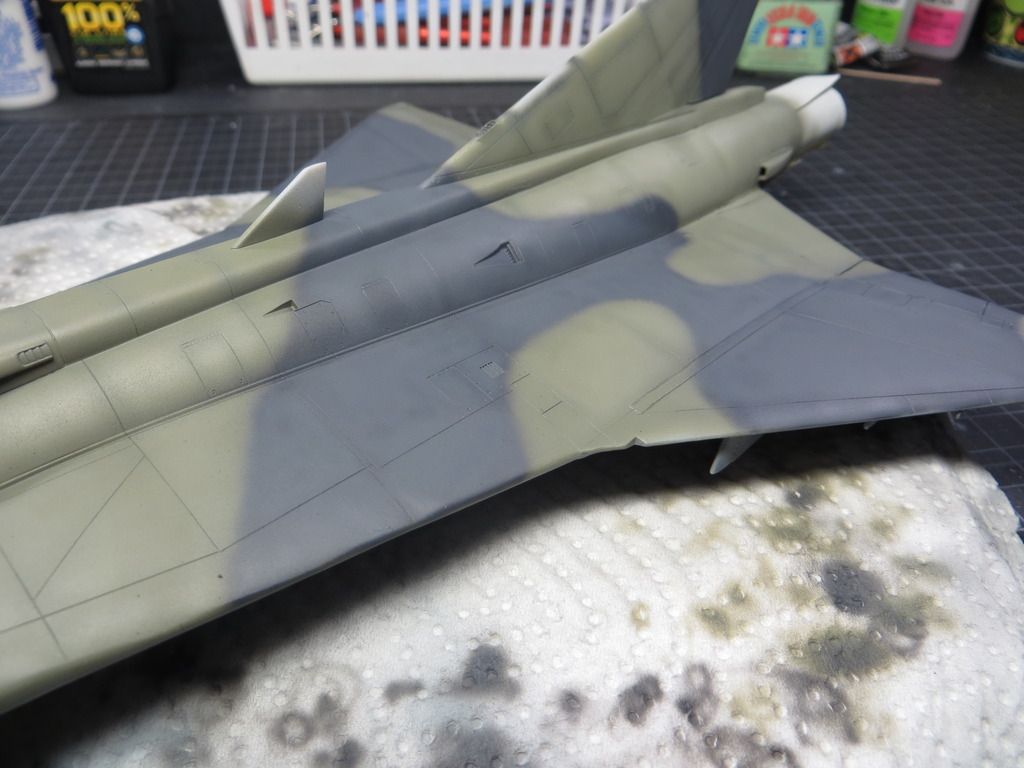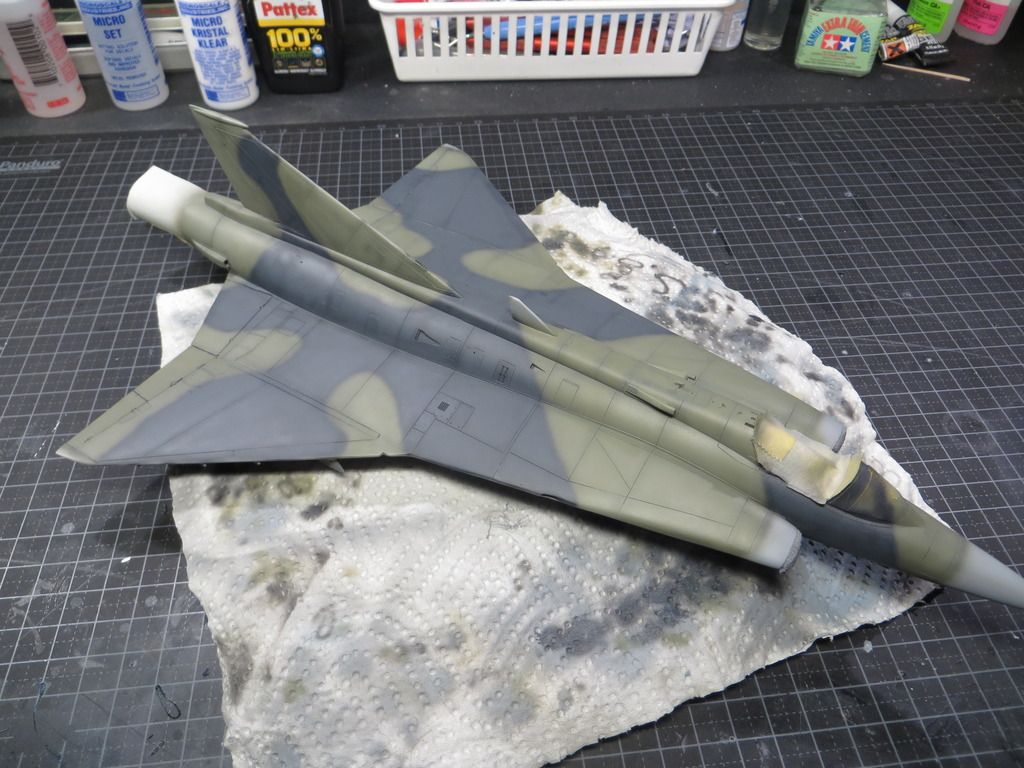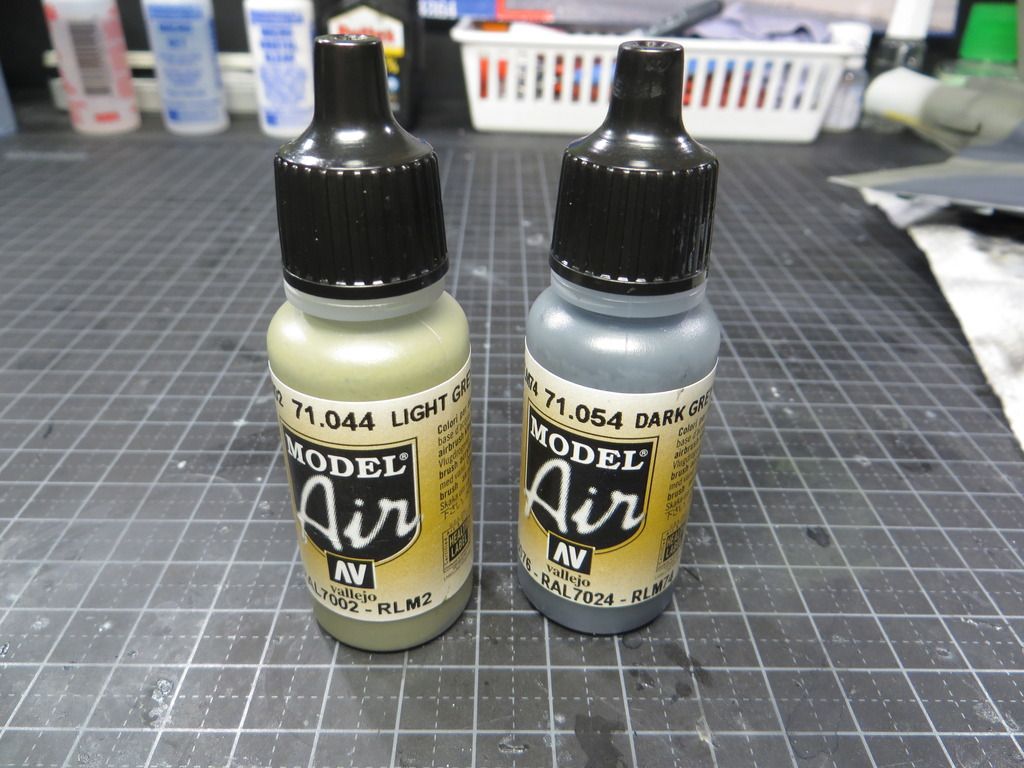I decided to go for this kit for Homeland GB. I think it was a great choise. Since no other finnish members probably won't participate in this GB,
I will try my best on this one.
History of the Saab Draken
The Saab 35 Draken was a Swedish fighter aircraft manufactured by Saab between 1955 and 1974. The Draken was built to replace the Saab J 29 Tunnan and, later, the fighter variant (J 32B) of the Saab 32 Lansen. The indigenous J 35 was an effective supersonic Cold War fighter that was also successfully exported to Austria, Denmark, Finland, and to the United States as a test pilot training aircraft.
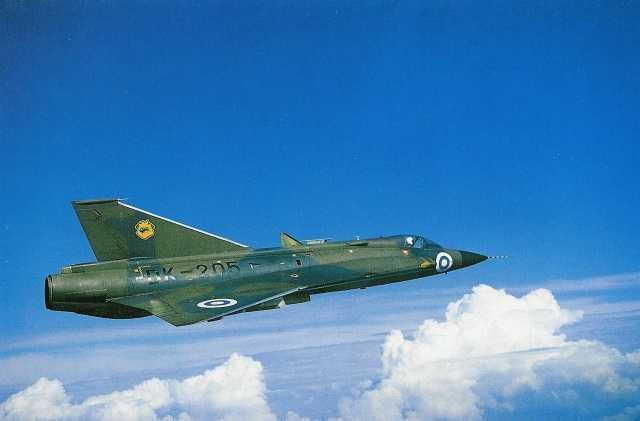
Finnish Air Force Saab 35S Draken in flight.
Design and development
As the jet era started, Sweden foresaw the need for a jet fighter that could intercept bombers at high altitude and also successfully engage fighters. Although other interceptors such as the US Air Force's F-104 Starfighter were being conceived during the same period, Saab's "Draken" would have to undertake a combat role unique to Sweden. Other demanding requirements were the capability to operate from reinforced public roads used as part of wartime airbases, and for refuelling/rearming to be carried out in no more than ten minutes, by conscripts with minimal training. In September 1949, the Swedish Defence Material Administration issued a request for a fighter/interceptor aircraft, and work began at Saab the same year.
Draken's design incorporated a distinctive "double-delta" configuration, with one delta wing within another larger delta. The inner wing has an 80° angle for high speed performance, while the outer 60° wing gives good performance at low speeds. Propulsion was provided by a single Svenska Flygmotor RM 6B/C turbojet (Rolls-Royce Avon 200/300). A ram turbine, under the nose, provided emergency power, and the engine had a built-in emergency starter unit. The Draken could deploy a drag parachute to reduce its landing distance.
The double-delta shape was so revolutionary that it warranted the only sub-scale test aircraft built in Sweden: the Saab 210, unofficially nicknamed "Lilldraken" (the little kite). The Saab 210 tested the concept of the double delta, first flying on 21 January 1952. The 210's successful testing results led to an order for three full-size Draken prototypes. The first prototype, not fitted with an afterburner, made its maiden flight on 25 October 1955. The second prototype, equipped with an afterburner, unintentionally broke the sound barrier on its first flight while climbing.
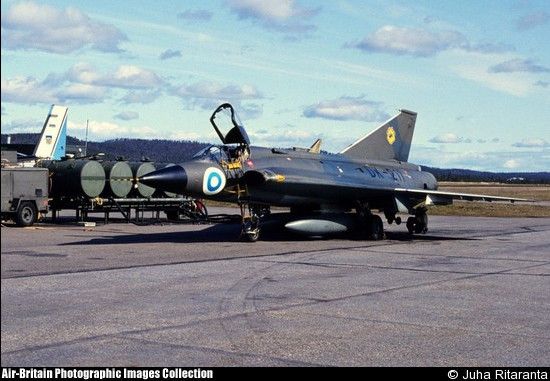
A FAF Saab 35XS Draken during refueling.
Operational history
Although the J 35 Draken was not designed to be a dog-fighter, it proved to have a good quick-turn capability and was a capable fighter plane. It entered service with the Swedish Air Force in 1960. A total of 651 Saab Drakens were manufactured. Sweden's fleet of Drakens came in six different versions, and two other models of the Draken were offered for export. The early models were intended purely for air defense. The last model built was the J 35F, the final version to remain in Swedish service. These aircraft were retired in the 1990s and replaced by the Saab JAS 39 Gripen.
The J 35 Draken design underwent several upgrades. The last was the J 35J version, made in the late 1980s, although by then, the Draken had been almost replaced by the Saab 37 Viggen in the Swedish Air Force. The J 35J was a service-life extension program because the delivery of the new Saab JAS 39 Gripen was suffering delays. The extension program was intended to keep the Draken flying into the 2000s, but due to cutbacks and high maintenance costs, the Draken was eventually phased out of service. The Swedish Drakens were officially retired in December 1998, although the aircraft remained in limited numbers in both military and civilian roles. Its export customers included Denmark and Finland. In 1985, the Austrian Air Force purchased 24 J 35Ds reconditioned by Saab, re-designated the J 35Ö.
All Drakens are interceptors with limited air-to-ground capability, with the sole exception of the Danish Drakens, which are strike aircraft capable of carrying AGM-12 Bullpup missiles, electronic countermeasures, and increased internal and external fuel storage. The Danish Drakens are so far the heaviest of the series to have flown. Danish J 35 aircraft were retired in 1993.
Finland updated its 35XS fleet with new avionics, cockpit displays, navigational/attack systems, and electronic countermeasures during the 1990s, but these were finally retired in 2000 to be replaced by F/A-18 Hornets.
Austria was the last country to keep the Draken in military service. The Austrian Air Force bought refurbished J 35Ds. This was the last Austrian Air Force fighter plane with internal cannons for their lone air-to-air armament because of the restriction in the Austrian State Treaty of 1955. This forbade their carrying air-to-air missiles. This restriction was dropped in 1993 because of violations from the nearby Yugoslavian air combat services. American AIM-9 Sidewinder missiles were purchased. These Drakens were retired in 2005, when they were replaced by former Swiss Air Force F-5 Tiger IIs, while waiting for new Eurofighters.
In the United States, the National Test Pilot School (NTPS) owns six Drakens that were formerly in Danish service; of these, two TF-35XD s and one RF-35XD are operational, based at the Mojave Spaceport.
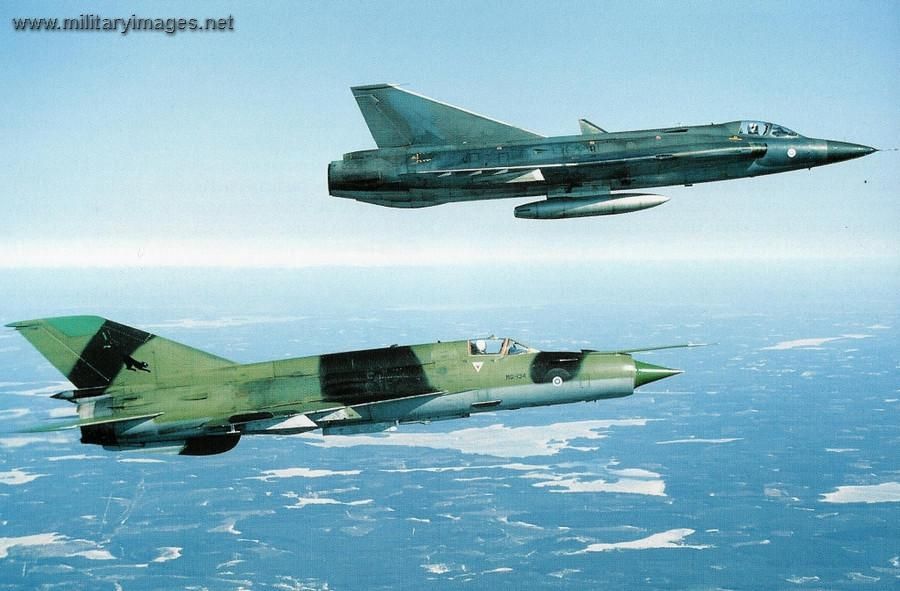
A FAF MiG-21 BIS and Saab 35S Draken flying in formation.
Variants
J 35A -Fighter version, total production: 90. The J 35As were delivered between 1959 and 1961. The tail section was lengthened after the 66th aircraft to house a new afterburner for additional thrust, the longer tail cone unexpectedly reduced drag. This forced the installation of a retractable tail-wheel. The two versions were nicknamed Adam kort (Adam short) and Adam lång (Adam long). The Adam was fitted with a French Cyrano Radar PS-02 (same as on the Mirage III) as the Swedish radar hadn't been developed in time.
J 35B -Fighter version, built and delivered between 1962 and 1963, total production: 73. This variant had improved radar and gun sights, and was also fully integrated into the Swedish STRIL 60 system; a combat guidance and air surveillance system. Fitted with a Swedish built radar PS-03.
SK 35C -25 J 35As with short tail sections rebuilt into a twin-seated trainer version. The minor modification meant that the aircraft could easily be converted back to a J 35A standard if necessary. The trainer version lacked armament.
J 35D -Fighter version, delivered between 1963 and 1964, total production: 120. The aircraft had a new and more powerful Rolls-Royce Avon 300 (RM 6C), which could deliver 77.3 kN thrust when using its afterburner. This was also the fastest Draken version, capable of accelerating until out of fuel. It was also the last Draken to carry two cannons.
S 35E -Reconnaissance version, total production: 60. The radar and the armament had been removed and several cameras (of ortho and oblique types) fitted. The aircraft was unarmed but was fitted with a countermeasure system to increase its survivability. A total of 28 aircraft were re-built J 35Ds.
J 35F -Fighter version, delivered between 1965 and 1972, total production: 230. This variant had improved electronics and avionics, e.g. integrated radar, aim and missile systems. The aircraft's main armament were IR and SARH versions of the Hughes Falcon missile originally intended for the J 35D, but one of the cannon was removed to make space for more avionics. The J 35F2 was a J 35F, produced with a Hughes Aircraft Company N71 infrared sensor, a so-called Infra-red search and track. This was a change in the production line from the no. 35501 airframe. The Hawé mods I & II where carried out on the P/S-01/011 radar sets in the early 80's to improve ressistance to ECM.
J 35J -In 1985 the Swedish government decided to modify 54 J 35F2s to J 35J standard. In 1987, 12 more modifications were ordered. Between 1987 and 1991, the aircraft were given a longer lifespan, more modern electronics, a modernized cannon, an additional two Sidewinder (AIM-9P) pylons under the air intakes and increased fuel capacity. The final operative J 35J flew for the last time in 1999.
Saab 35XD -Danish export versions: F-35 single-seat strike aircraft, TF-35 two-seat trainer and RF-35 reconnaissance aircraft. The type was heavily modified to make it into a strike aircraft; compared to the Swedish versions the outer wings where completely redesigned, and the radar was missing. These aircraft could carry heavy bombs as well as Bullpup missiles, during the WDNS upgrade of the 1980s they received the ALQ-162 jammer, a Marconi 900 Series HUD and a Ferranti LRMTS (laser rangefinder and marked target seeker)
Saab 35XS -Fighter version for the Finnish Air Force; built by Saab and assembled under licence by Valmet in Finland.
Saab 35BS -Used J 35Bs sold to Finland.
Saab 35FS -Used J 35F1s sold to Finland.
Saab 35CS -Used SK 35Cs sold to Finland.
Saab 35Ö -In the mid-1980s, Saab re-purchased 24 J 35D aircraft from the Swedish Air Force and converted them into the J 35Ö version (also called J 35OE in English literature) for export to Austria. Austria bought AIM-9P5 all aspect sidewinders for these aircraft during the war in former Yugoslavia.
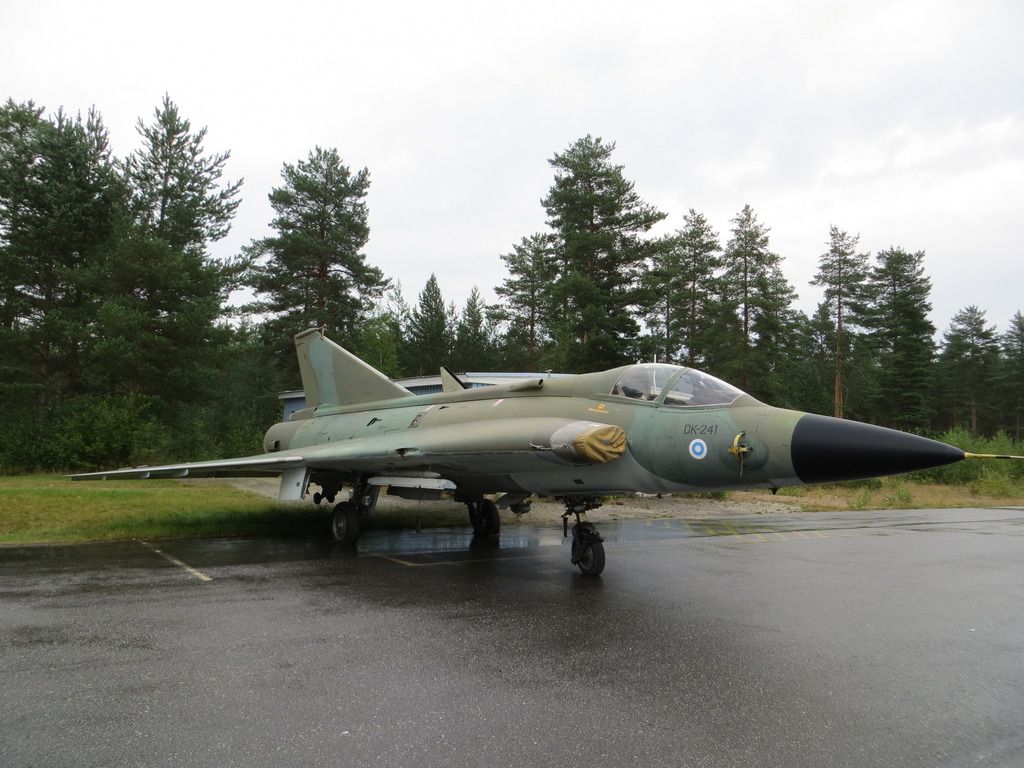
Saab 35S at Tikkakoski Aviation Museum.
Specifications (J 35F Draken)
General characteristics
-Crew: 1
-Length: 15.35 m (50 ft 4 in)
-Wingspan: 9.42 m (30 ft 10 in)
-Height: 3.89 m (12 ft 9 in)
-Wing area: 49.22 m² (529.82 ft²)
-Empty weight: 7,865 kg (17,340 lb)
-Loaded weight: 11,400 kg (25,132 lb)
-Max. takeoff weight: 16,000 kg (35,273 lb)
-Powerplant: 1 × Volvo Flygmotor RM 6C afterburning turbojet Dry thrust: 56.5 kN (12,787 lbf)
-Thrust with afterburner: 78.4 kN (17,637 lbf)
Performance
-Maximum speed: Mach 2.2
-Range: 3,250 km (2,020 mi) with external drop tanks-
-Service ceiling: 18,000 m (59,000 ft)
-Rate of climb: 175 m/s (34,450 ft/min)
-Wing loading: 231.6 kg/m² (47.4 lb/ft²)
-Thrust/weight: 0.70
-Takeoff roll: 800 m (2,623 ft)
Armament
-Guns: 1× or 2× 30 mm M-55 ADEN cannon with 100 rounds per gun (in Saab 35F left cannon omitted to fit Avionics needed for Falcon
missil integration, earlier variants and export variants retained twin guns.)
-Hardpoints: for fuel tanks or ordnance with a capacity of 2,900 kg (6,393 lb) and provisions to carry combinations of: Rockets: 2× 75 mm air-to-air rocket pods ventrally or 12× 135 mm rockets on six underwing pylons
-Missiles: Rb 24, Rb 27 and Rb 28 air-to-air missiles
-Bombs: 55-, 220-, 500-, and 1,000-pound bombs
The Kit
I went for the Hasegawa kit as it is the best Draken kit out there. The kit I am using is the Swedish version and has
got Swedish decals. Although there are finnish versions available they are very hard to find.
So I buoght an aftermarket decal sheet instead and an interior photo-etch fret for the finnish version.
So, without more to say, let's have a look.
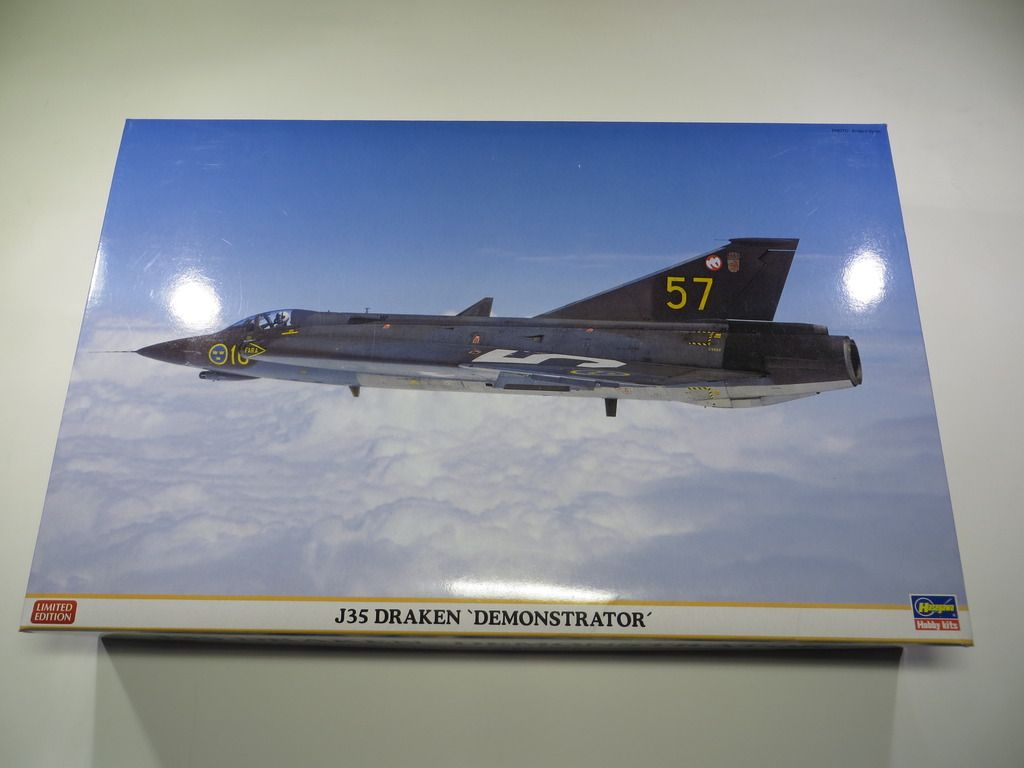
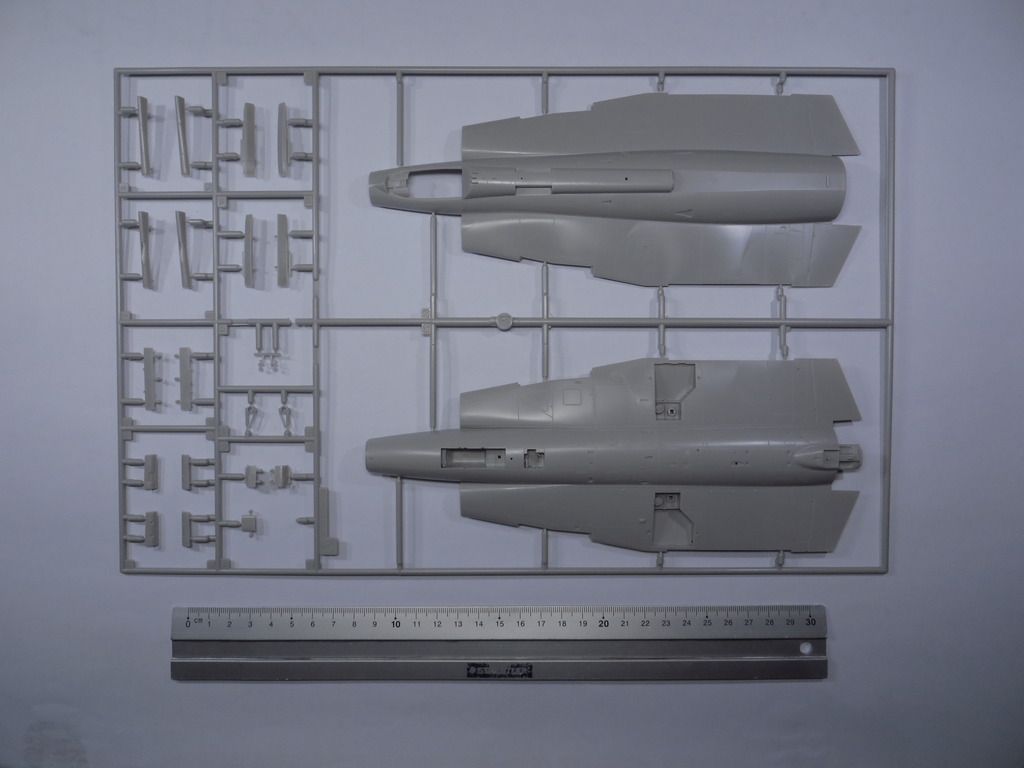
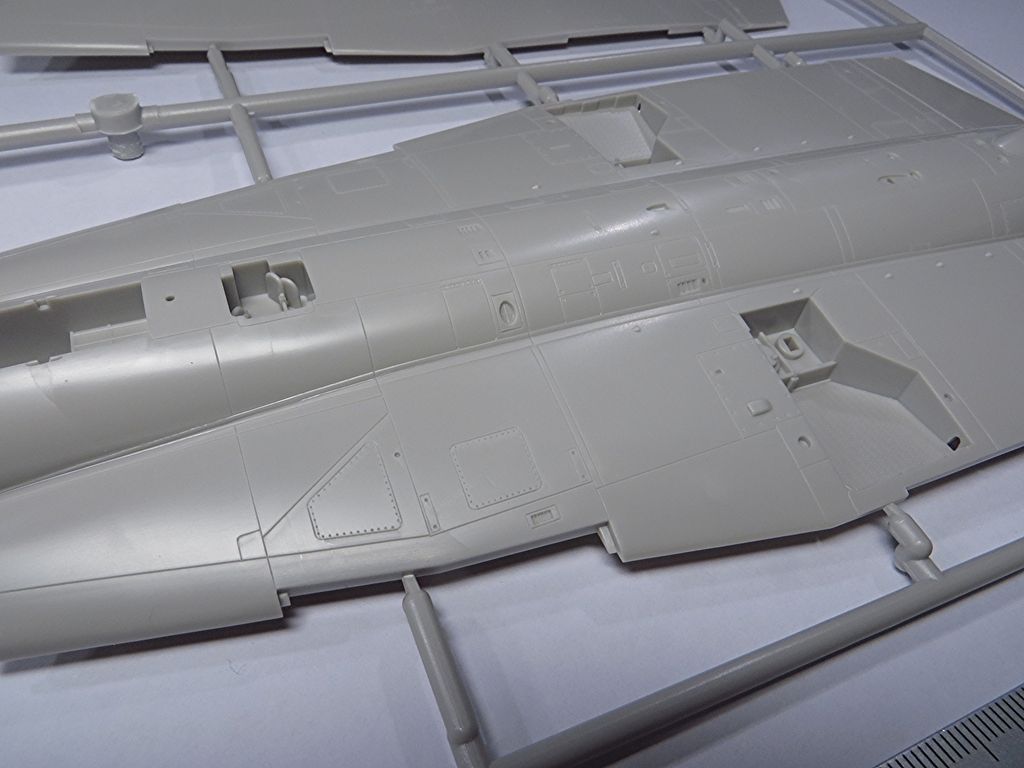
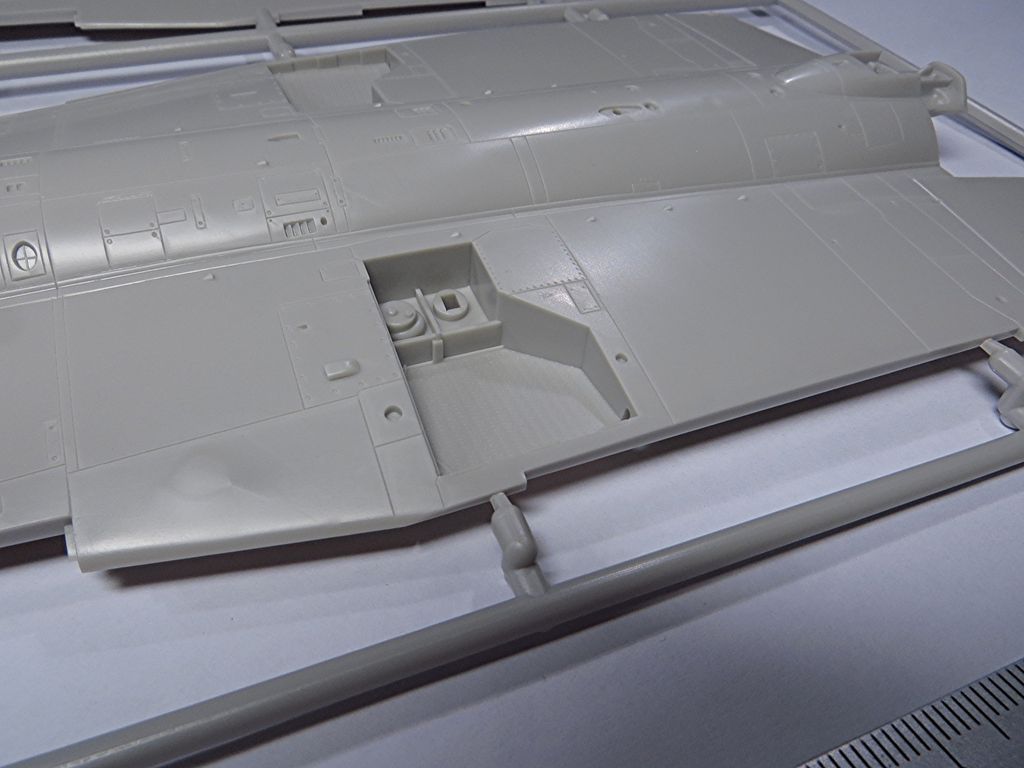
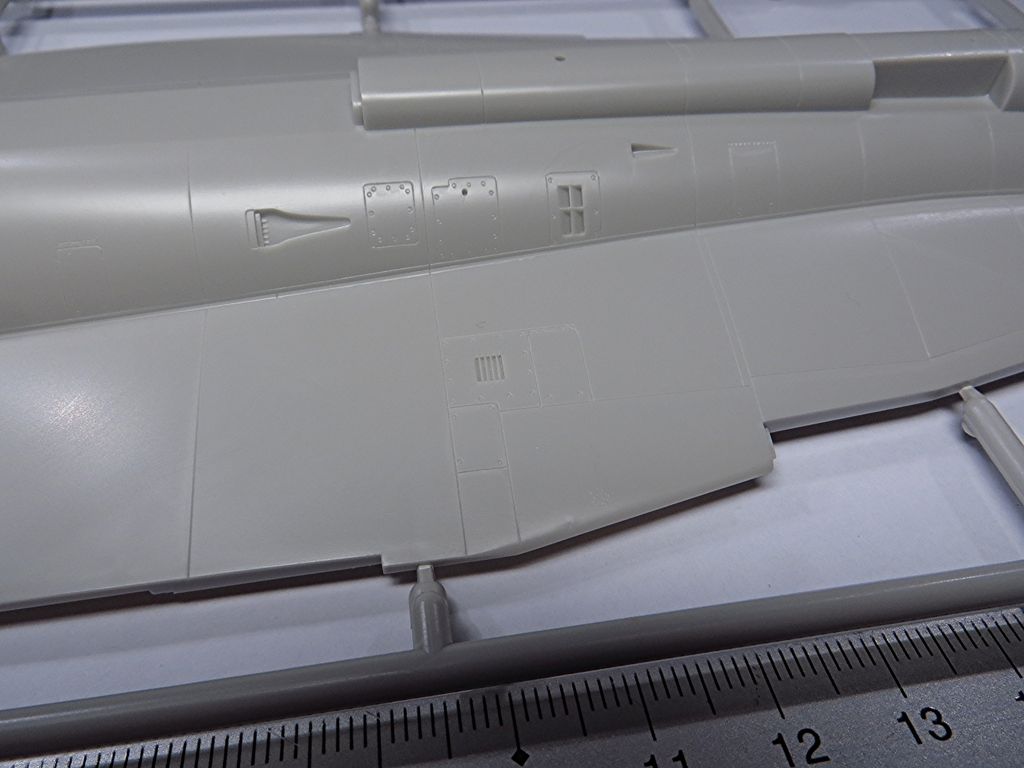
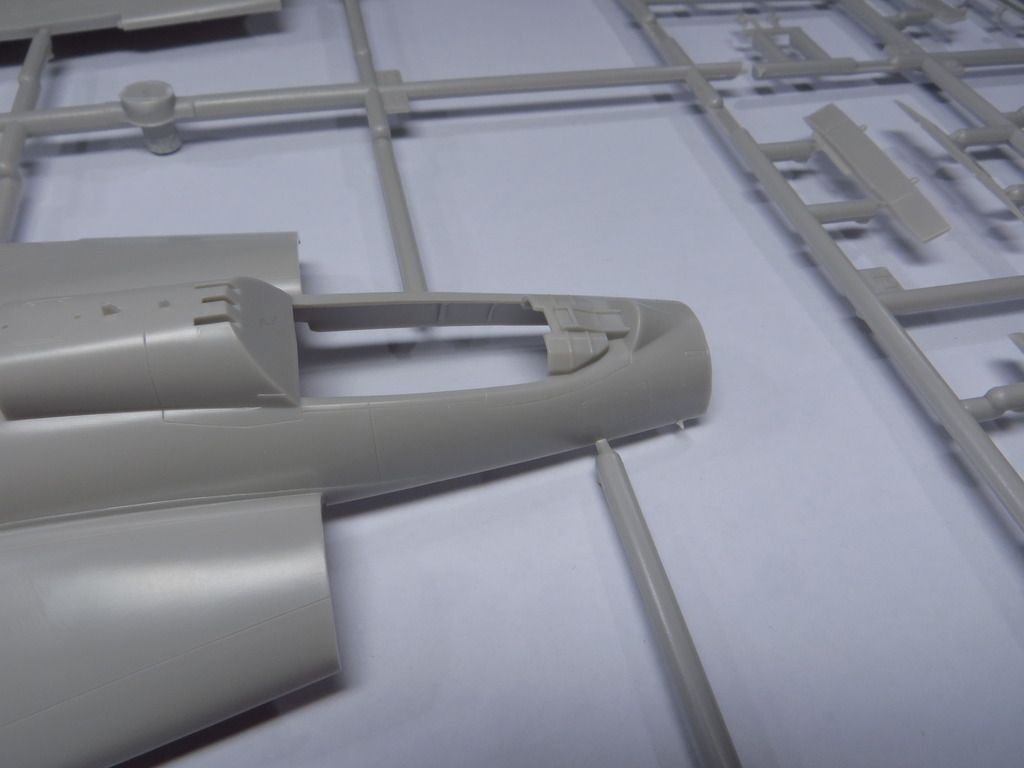
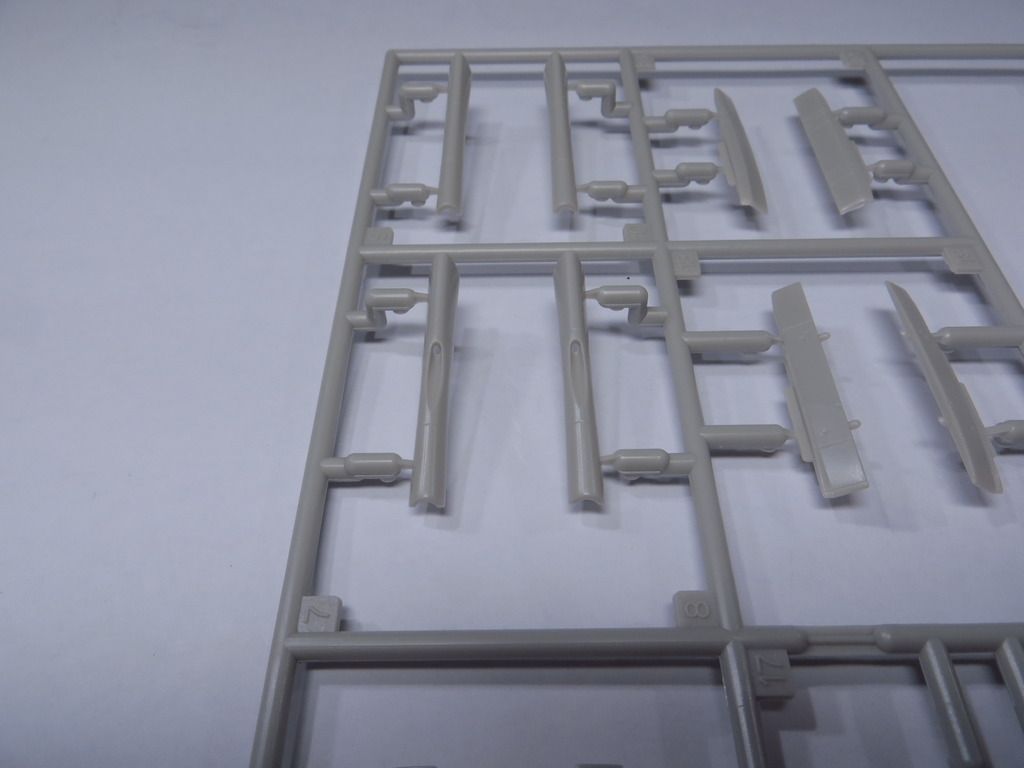
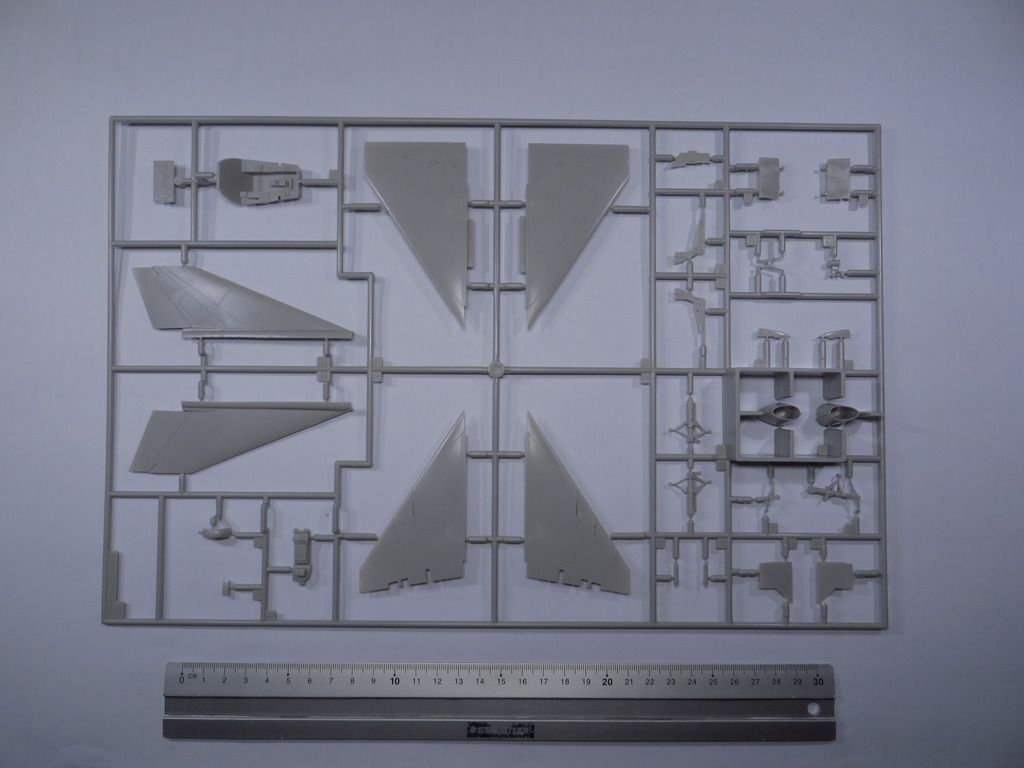
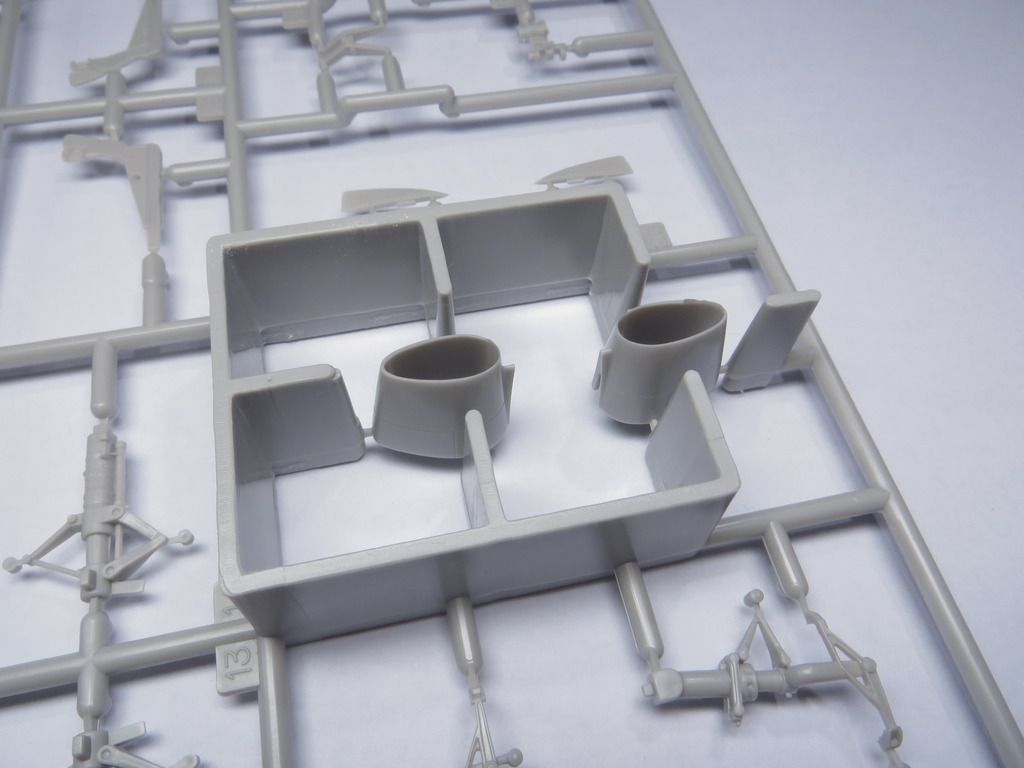
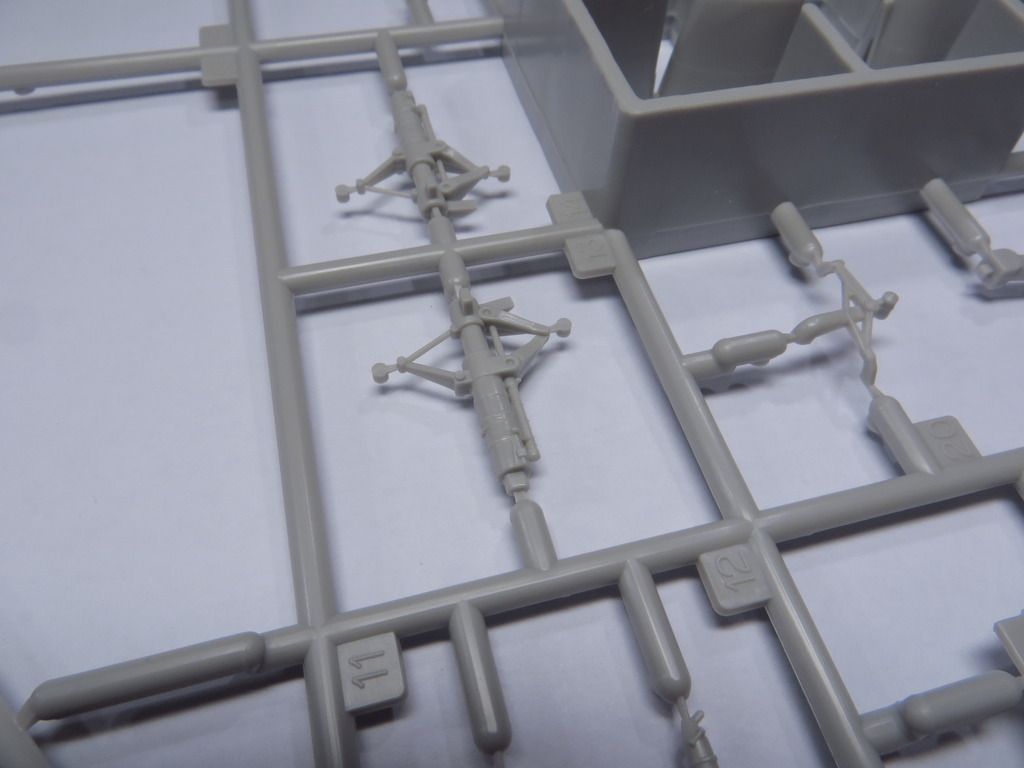
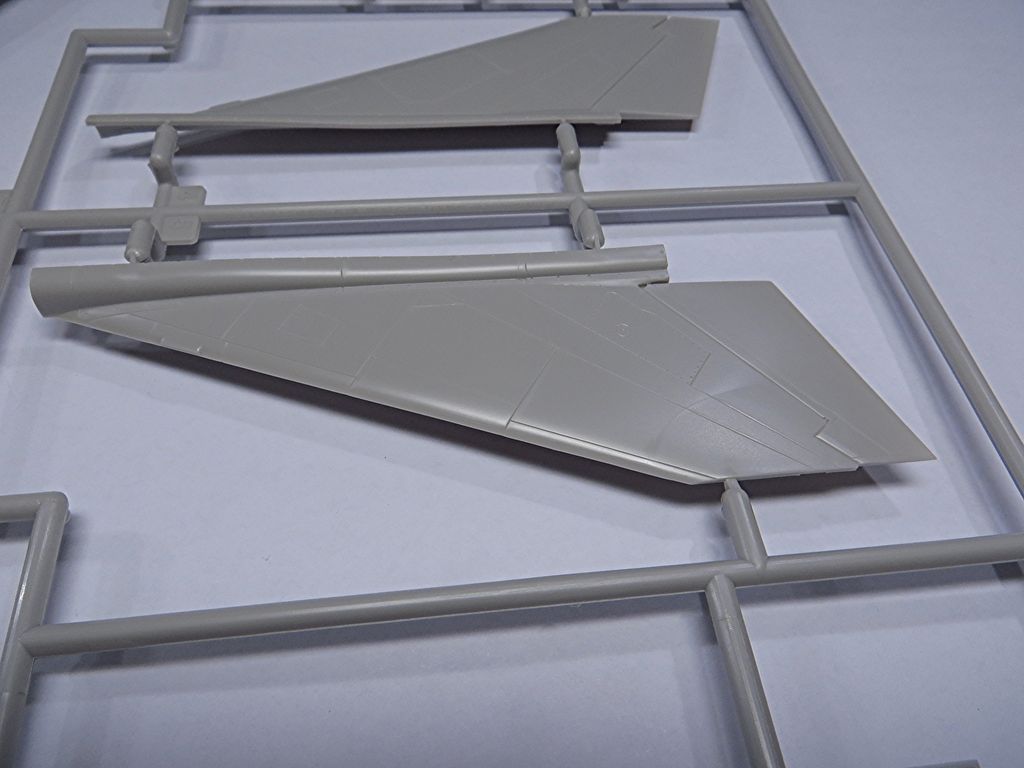
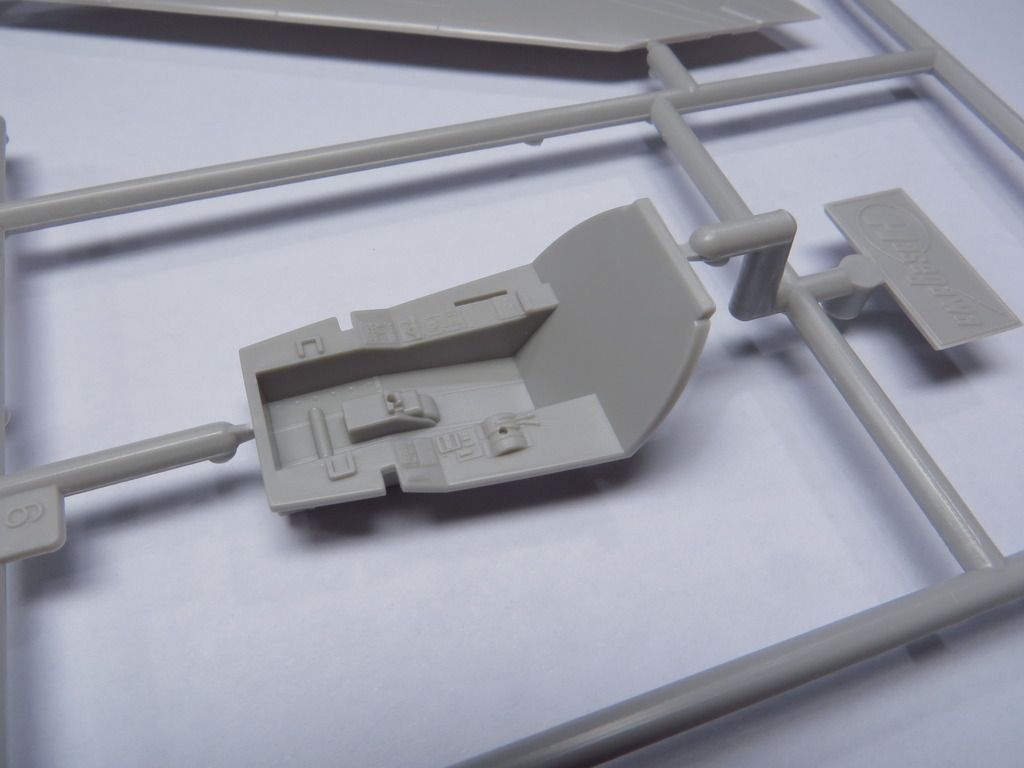
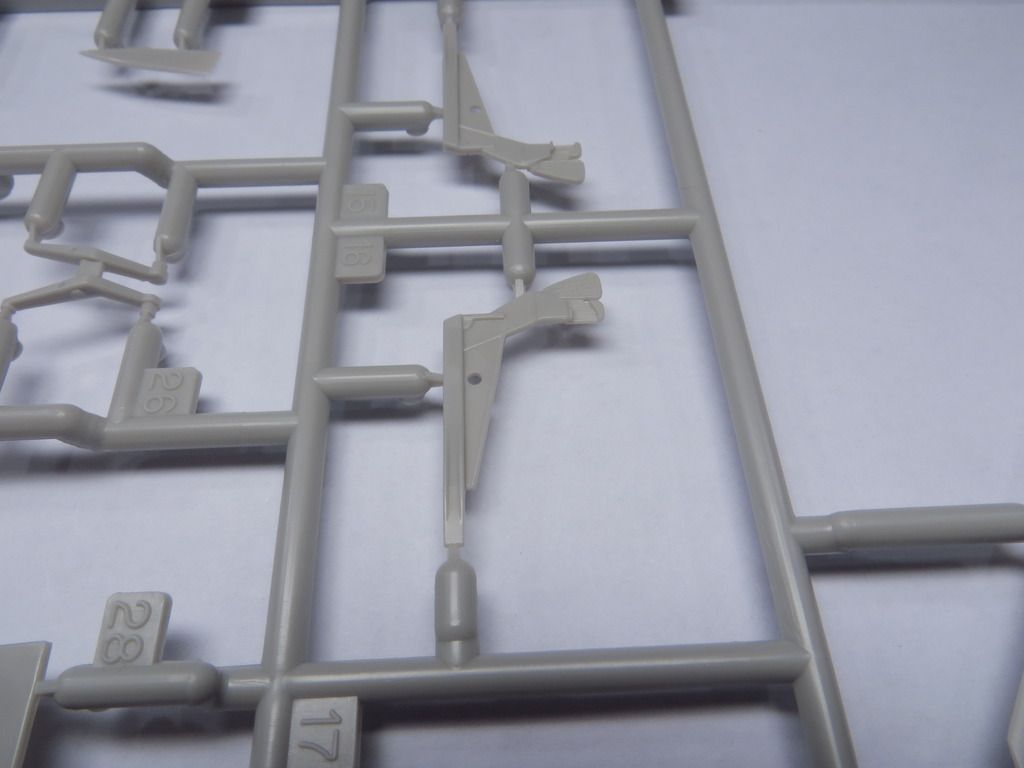
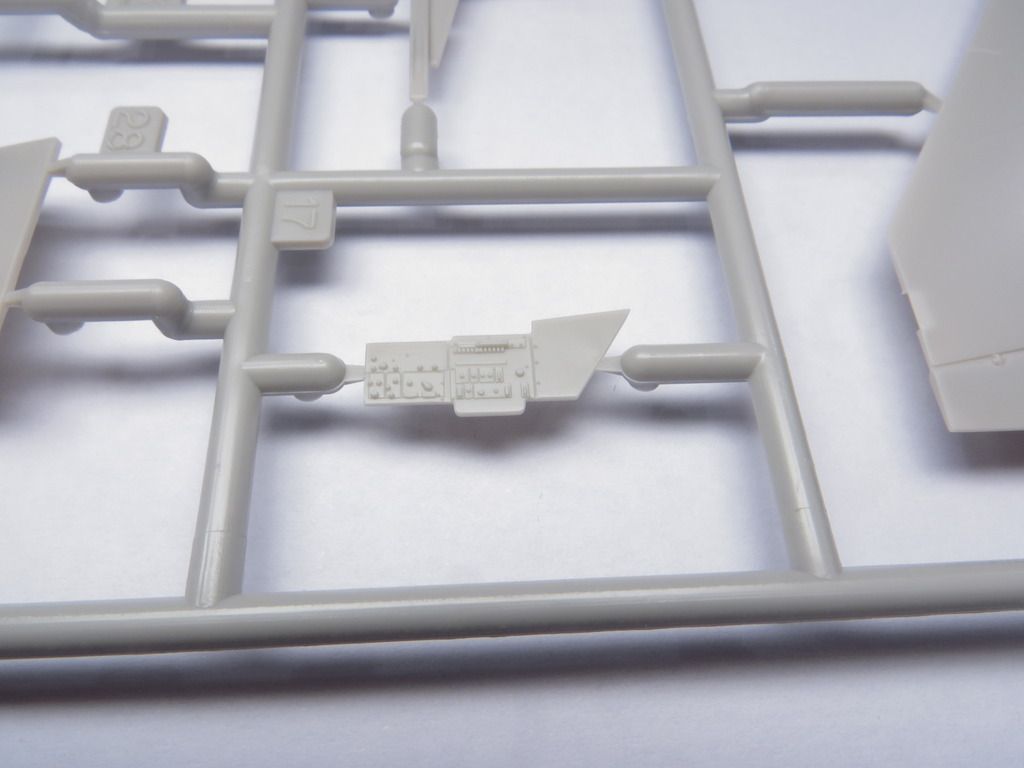
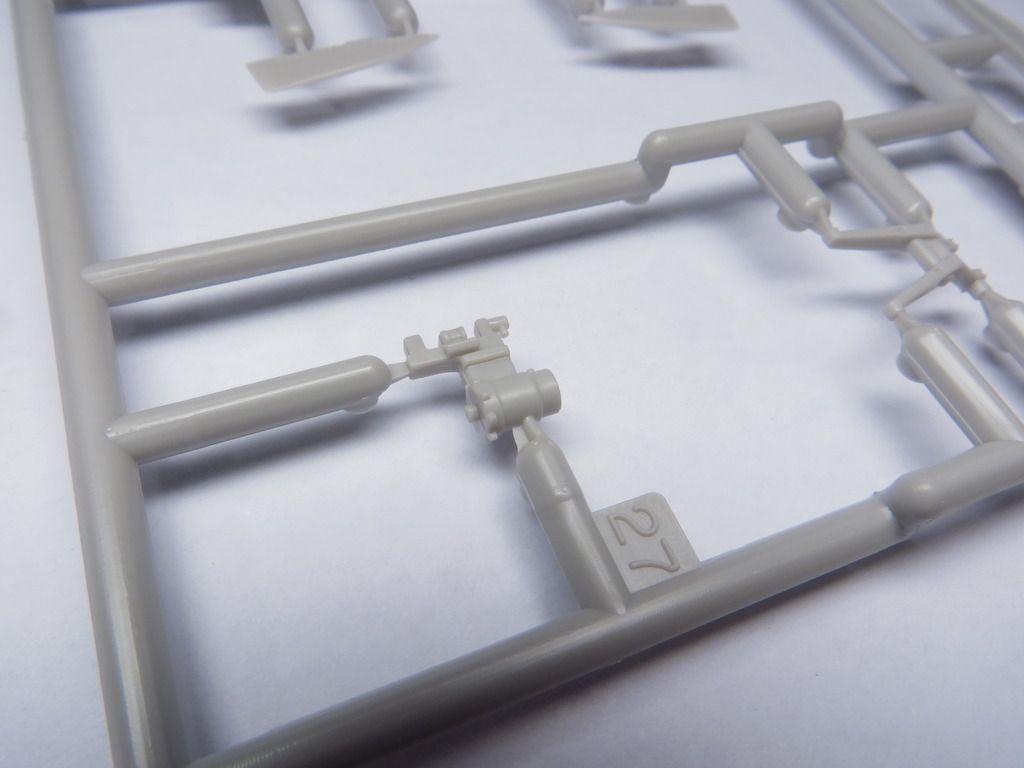
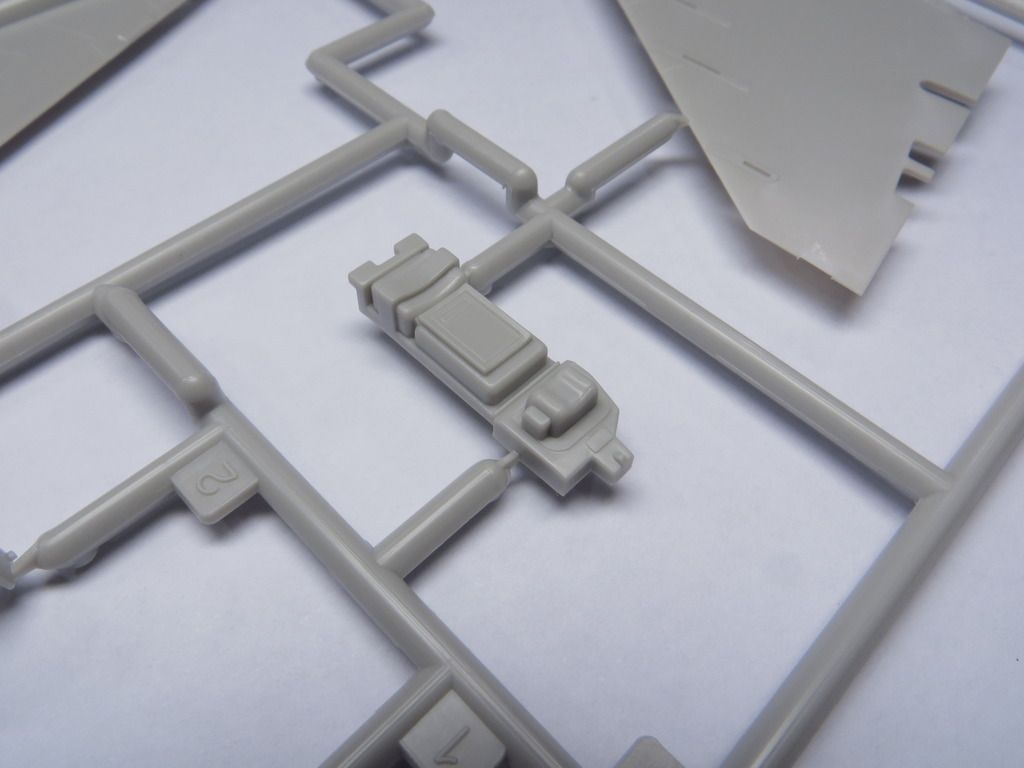
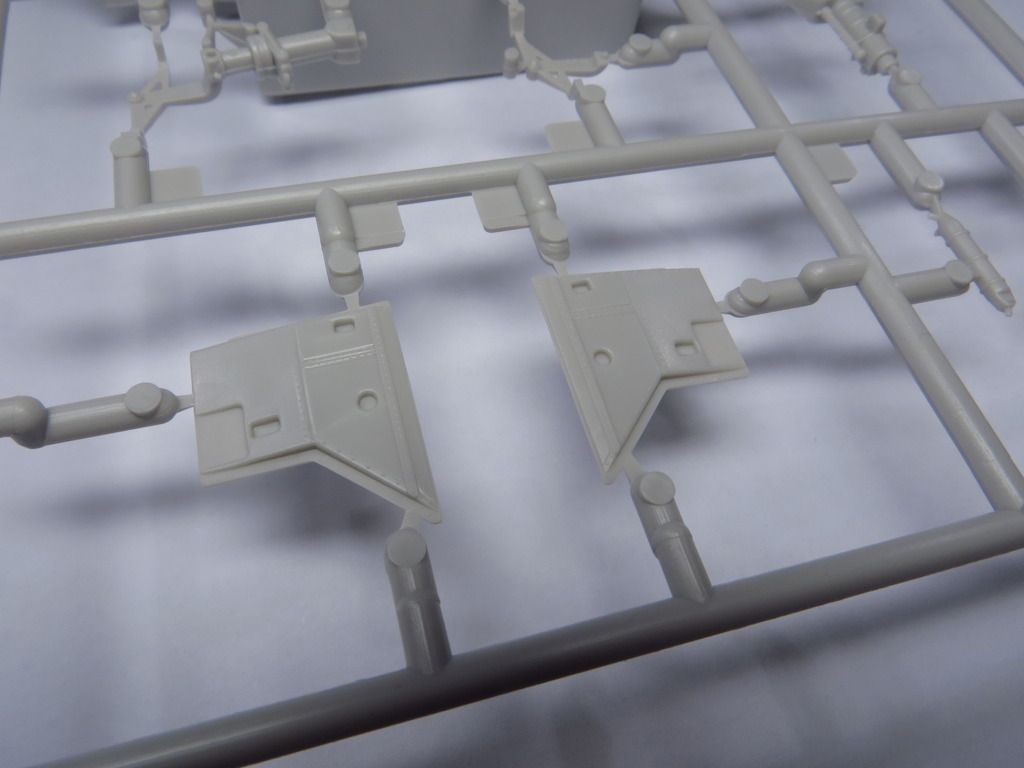
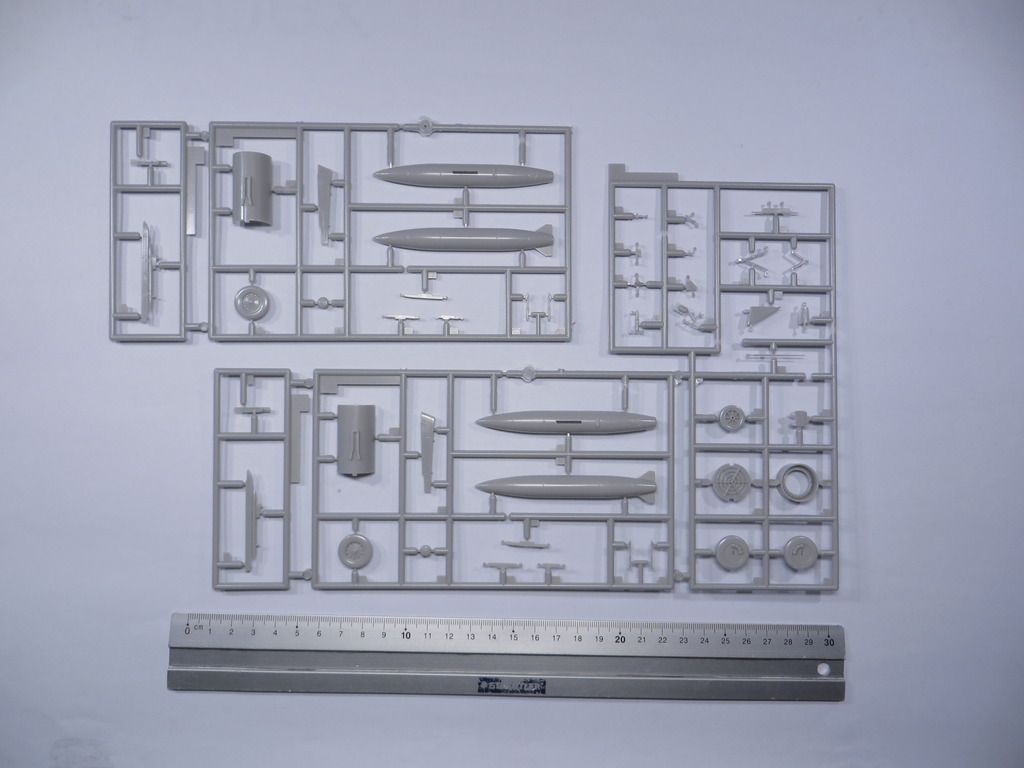
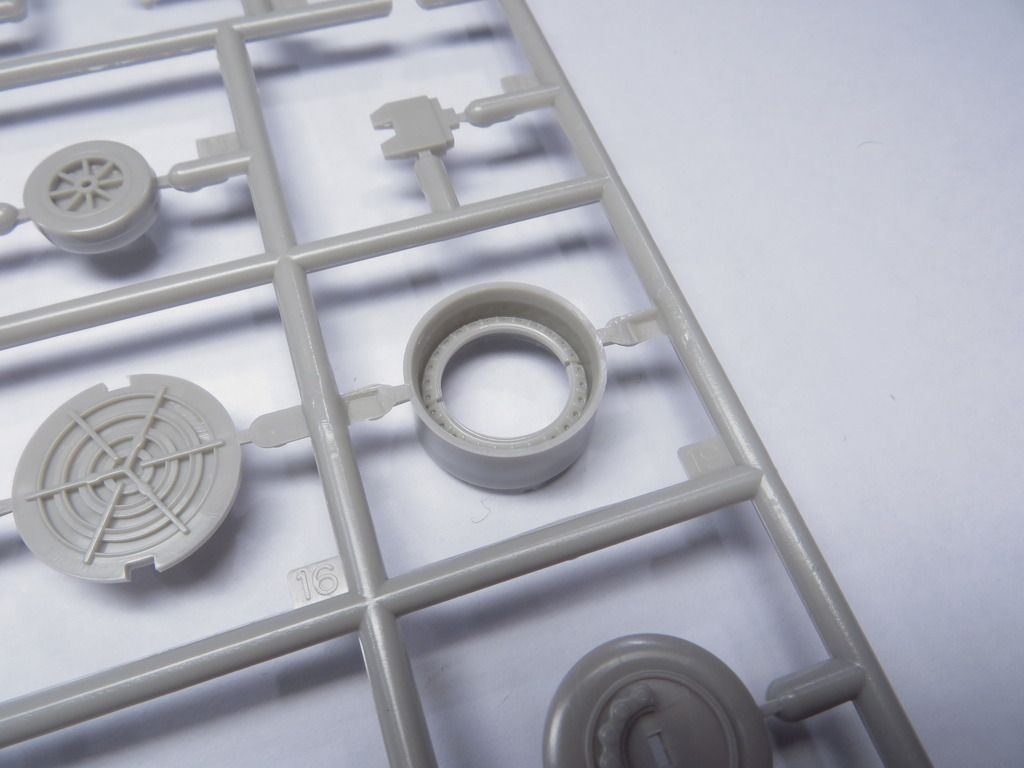
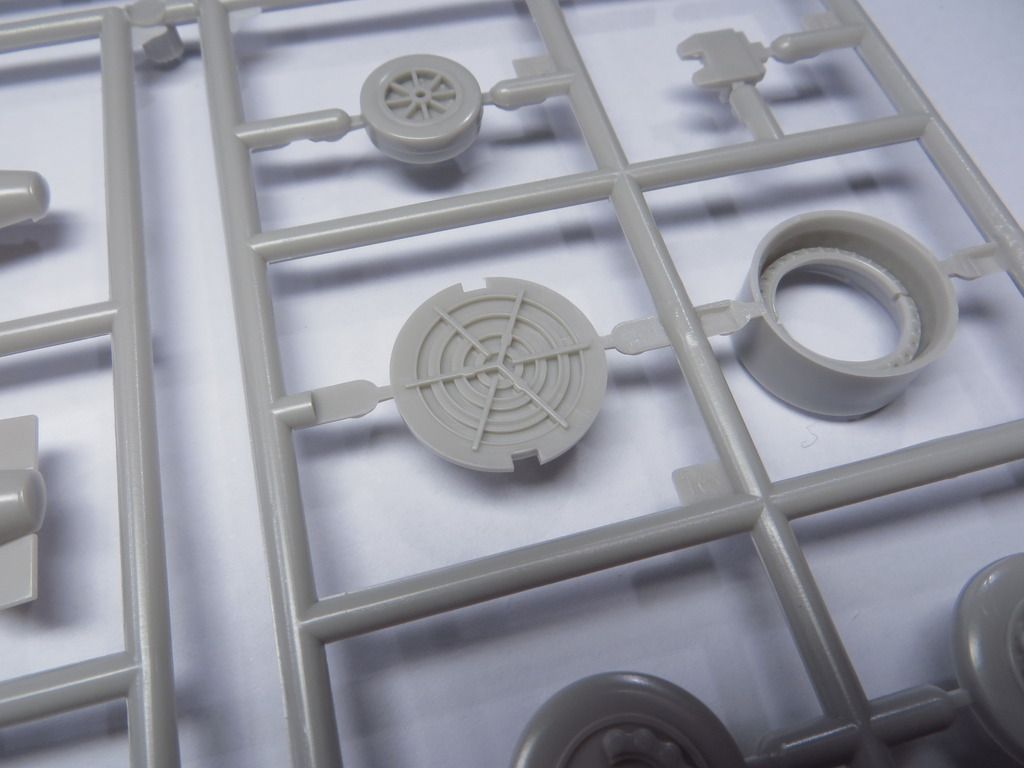
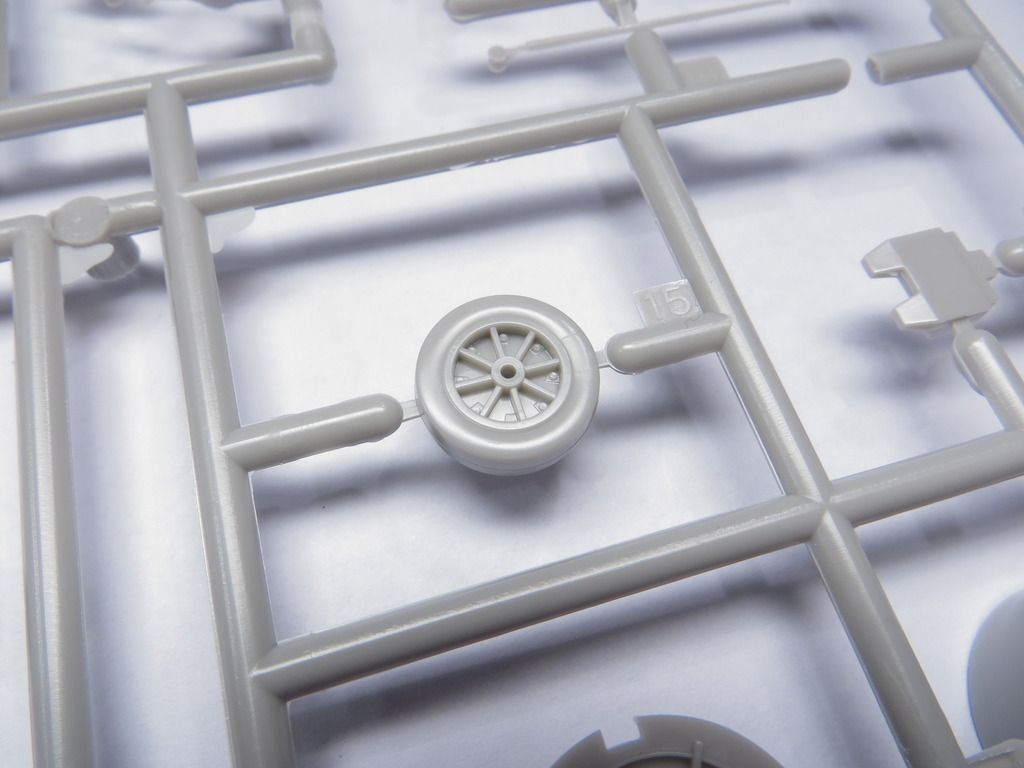
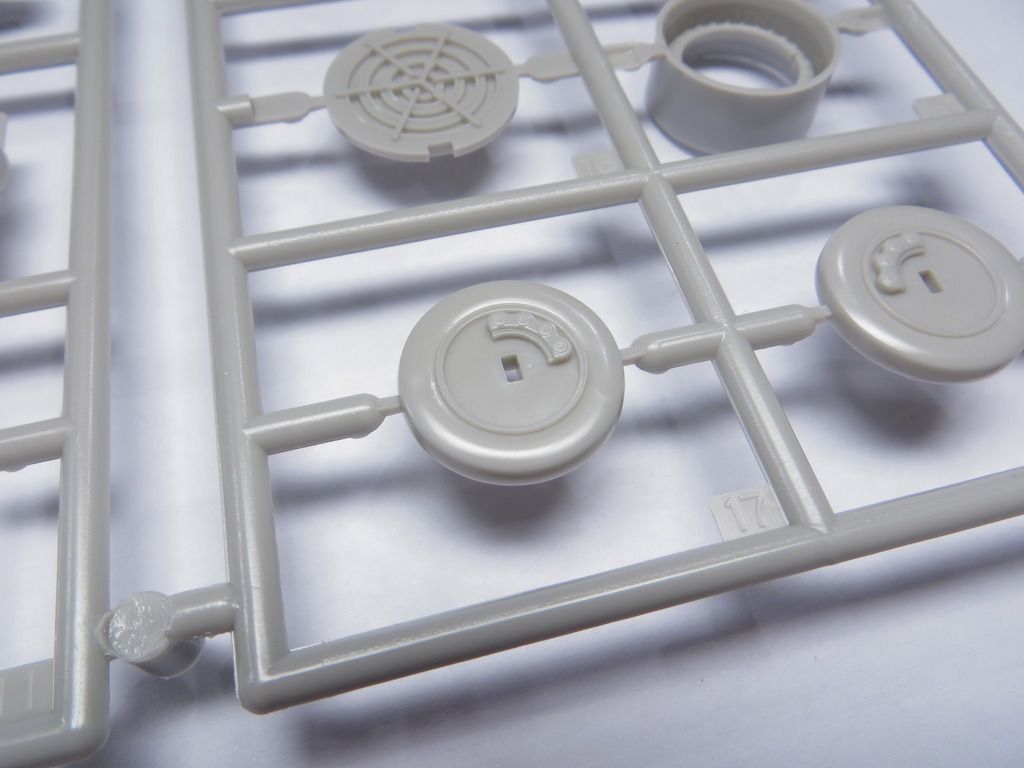
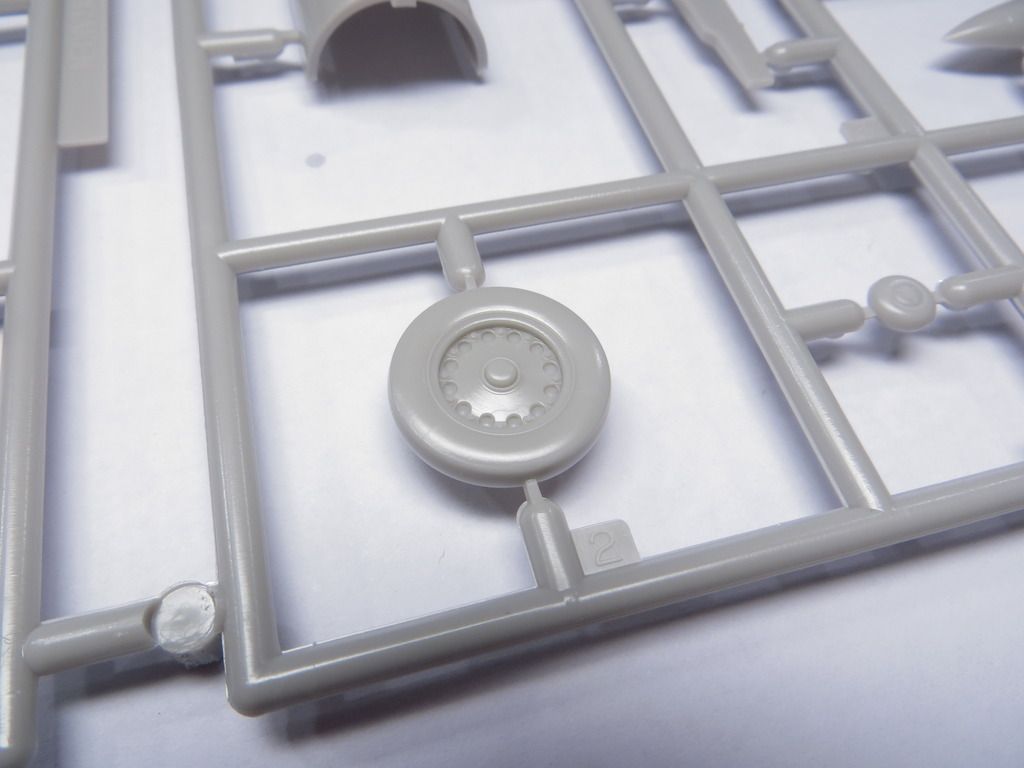
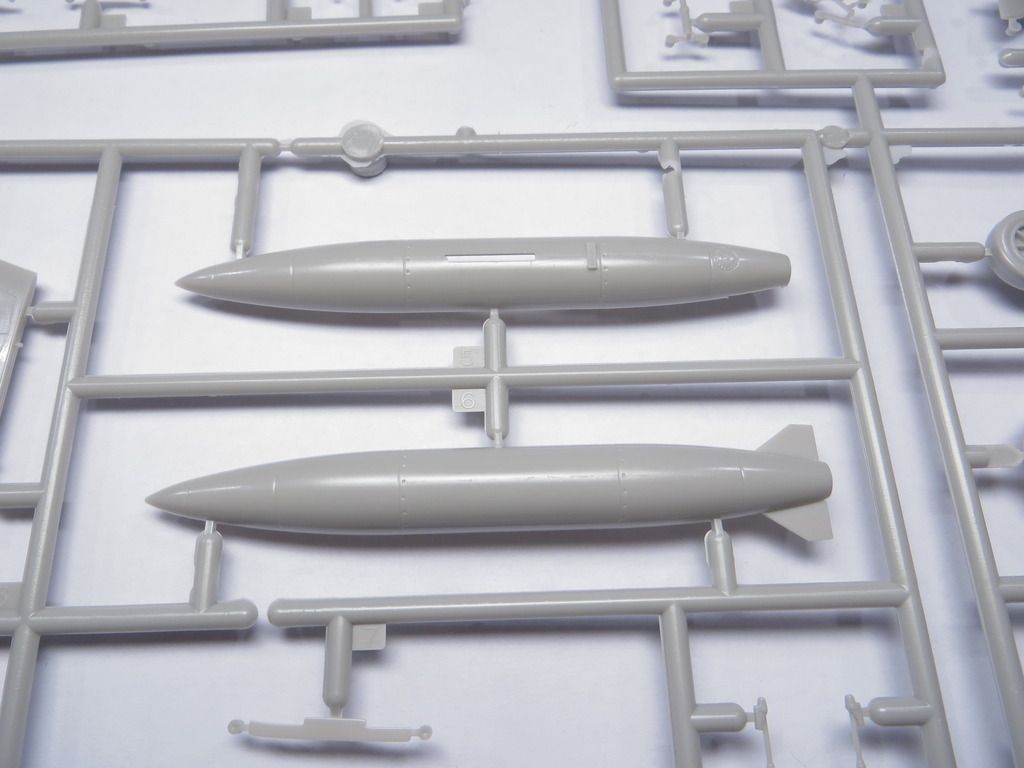
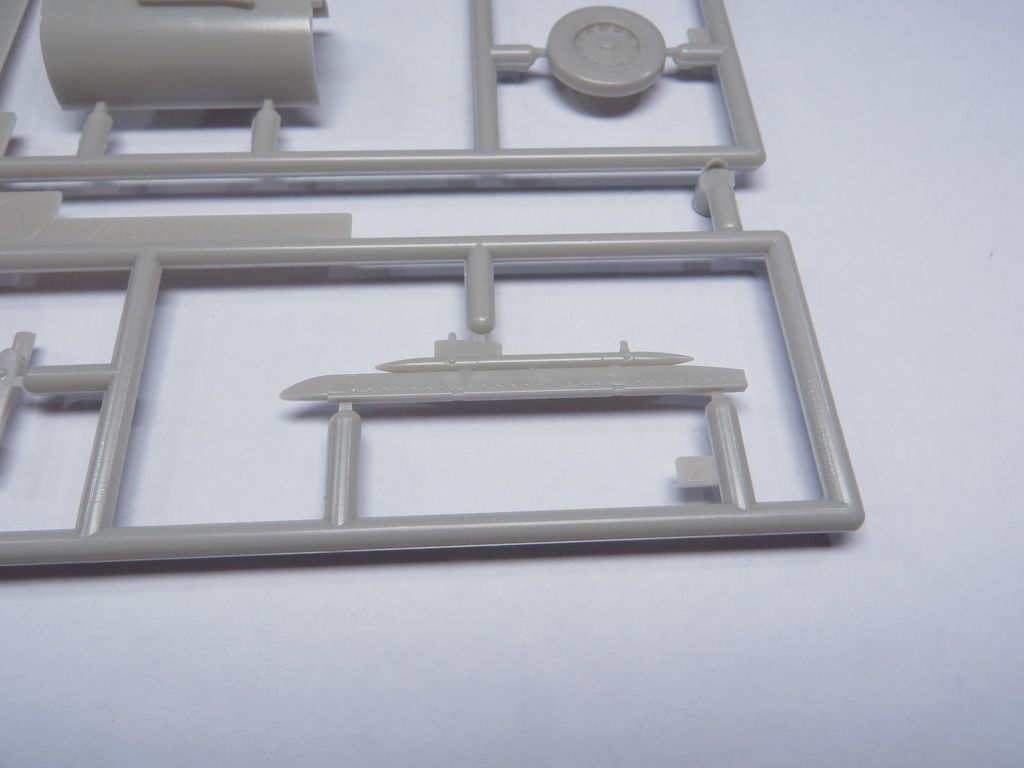
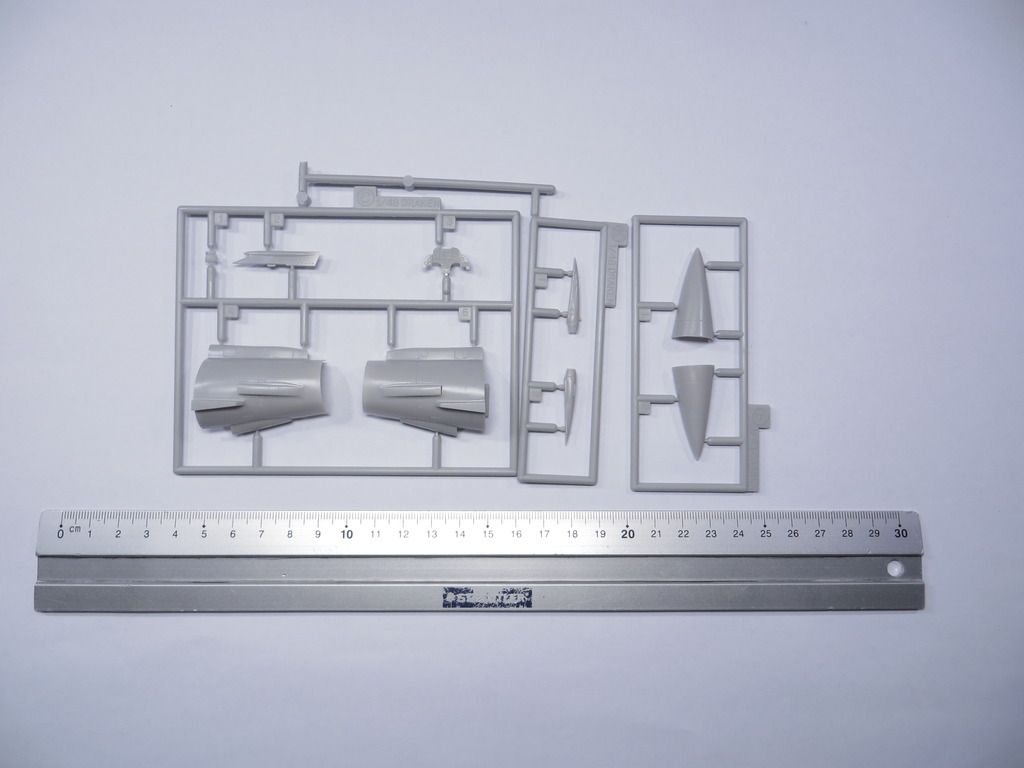
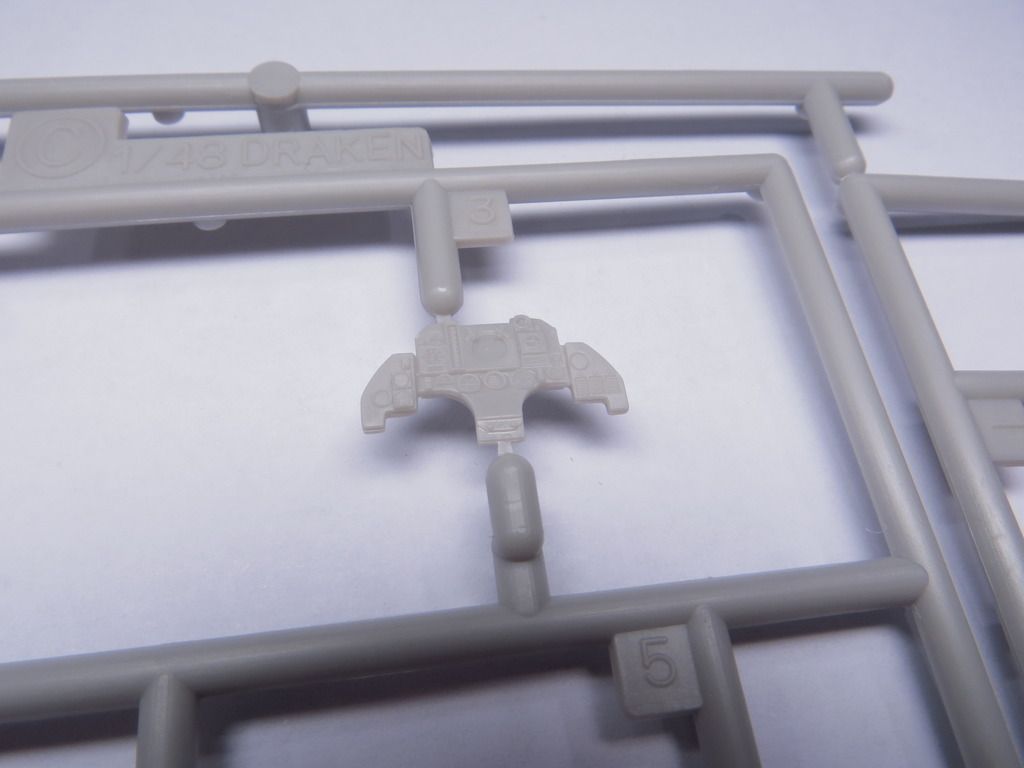
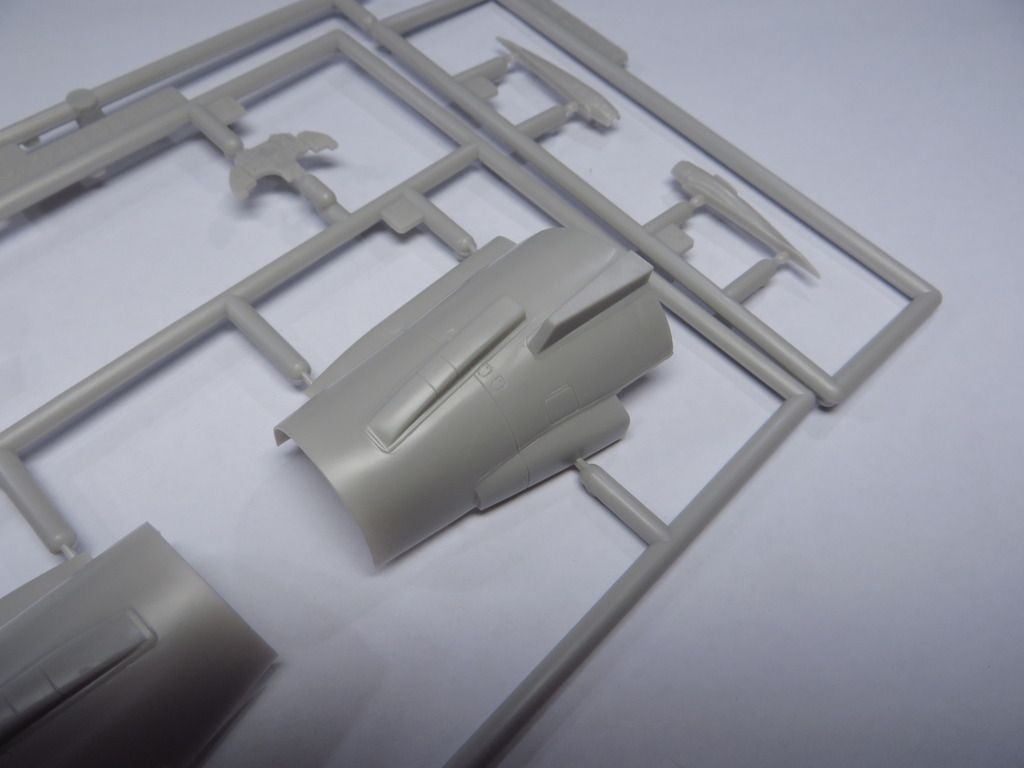
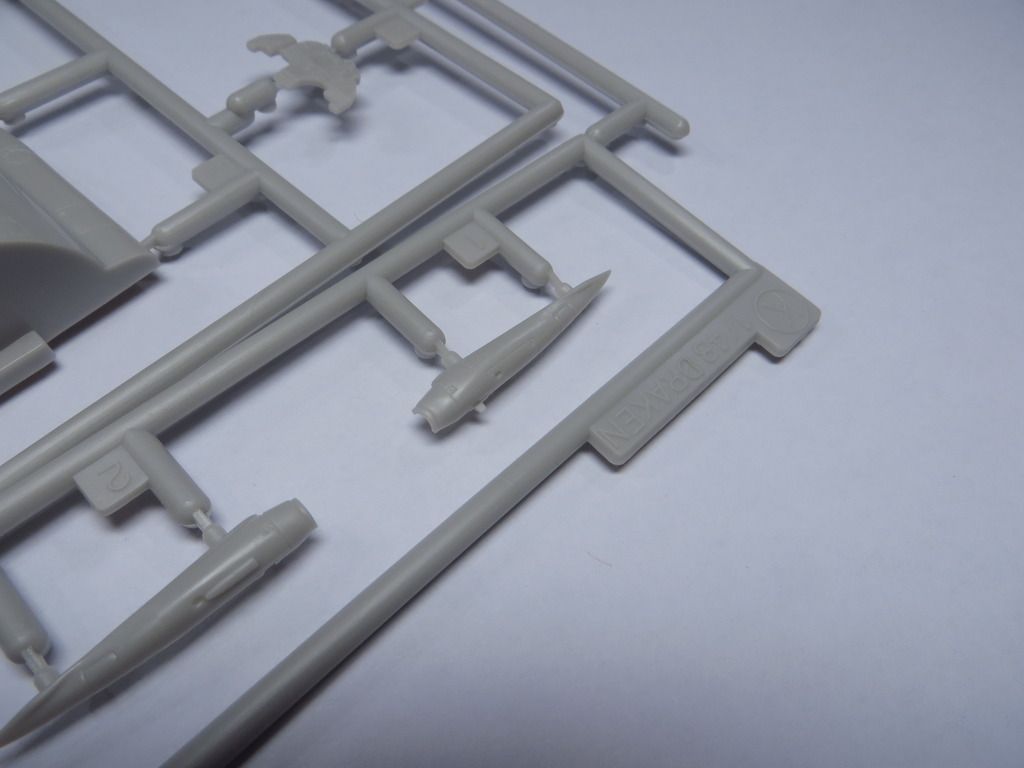
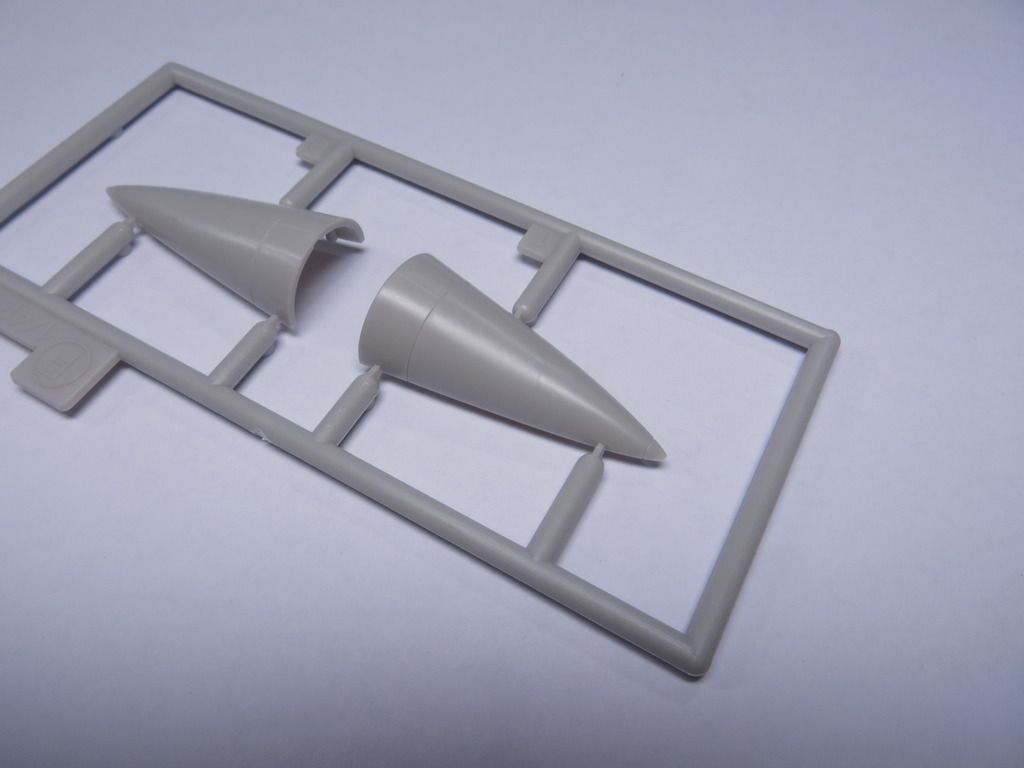
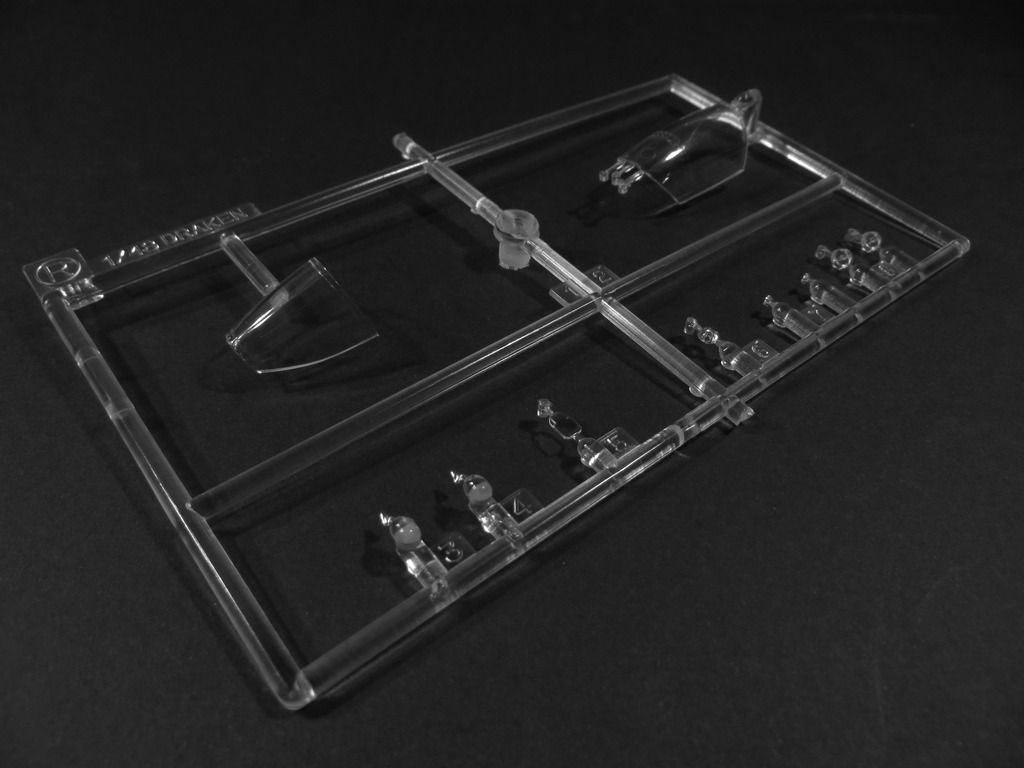
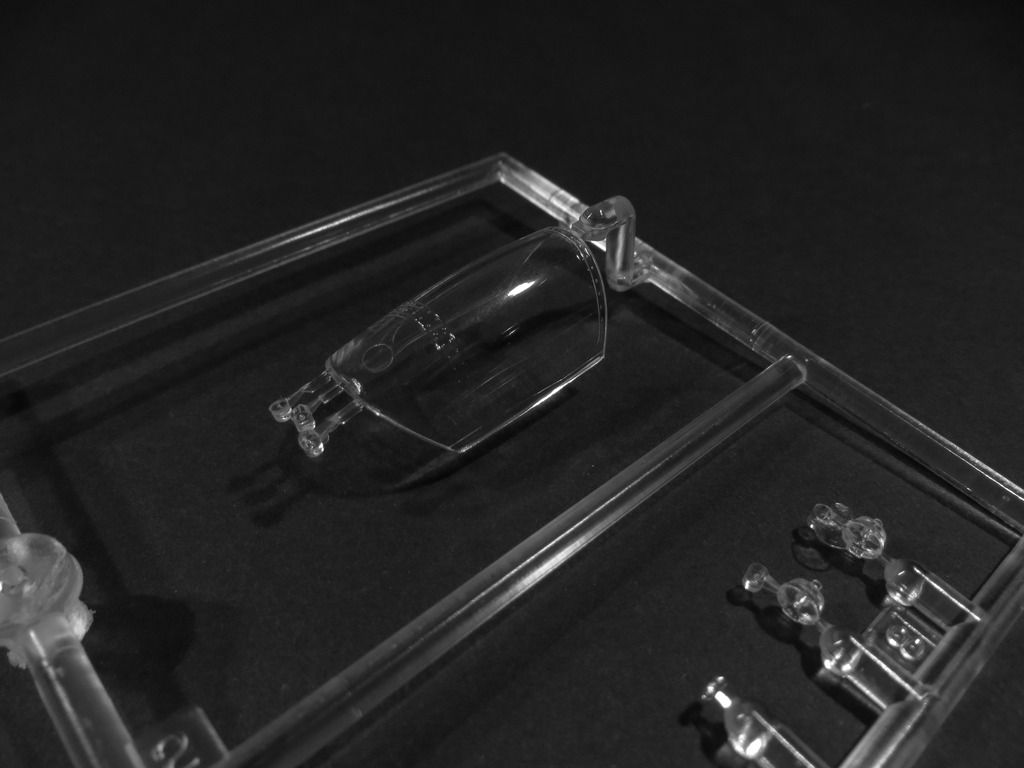
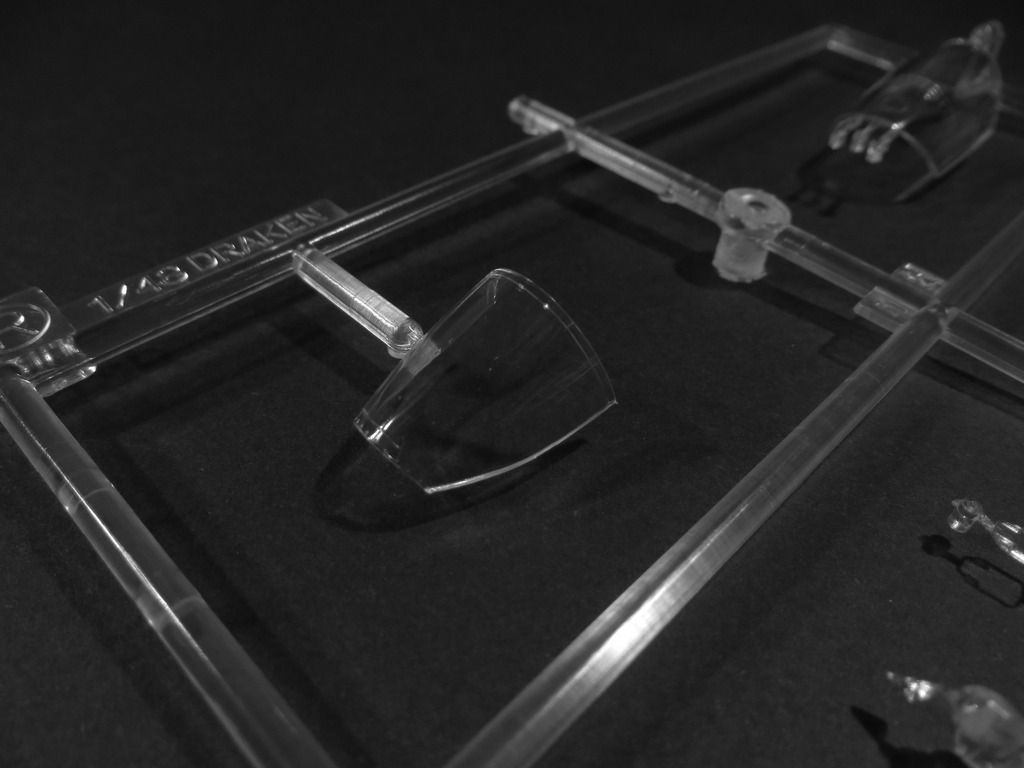
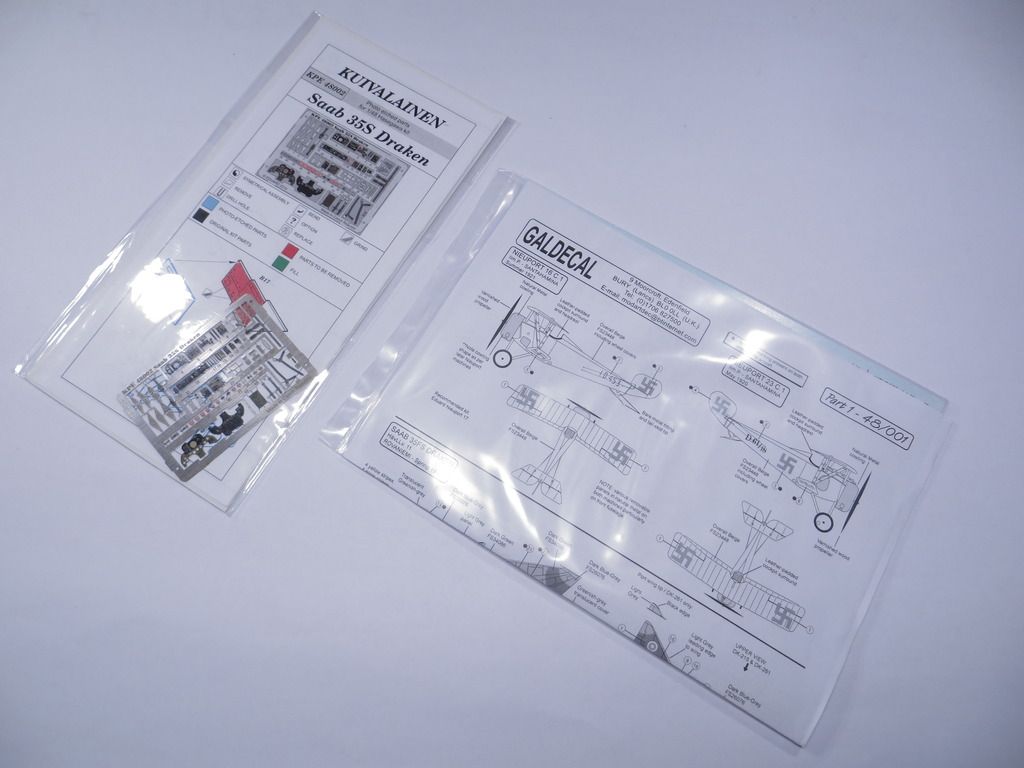
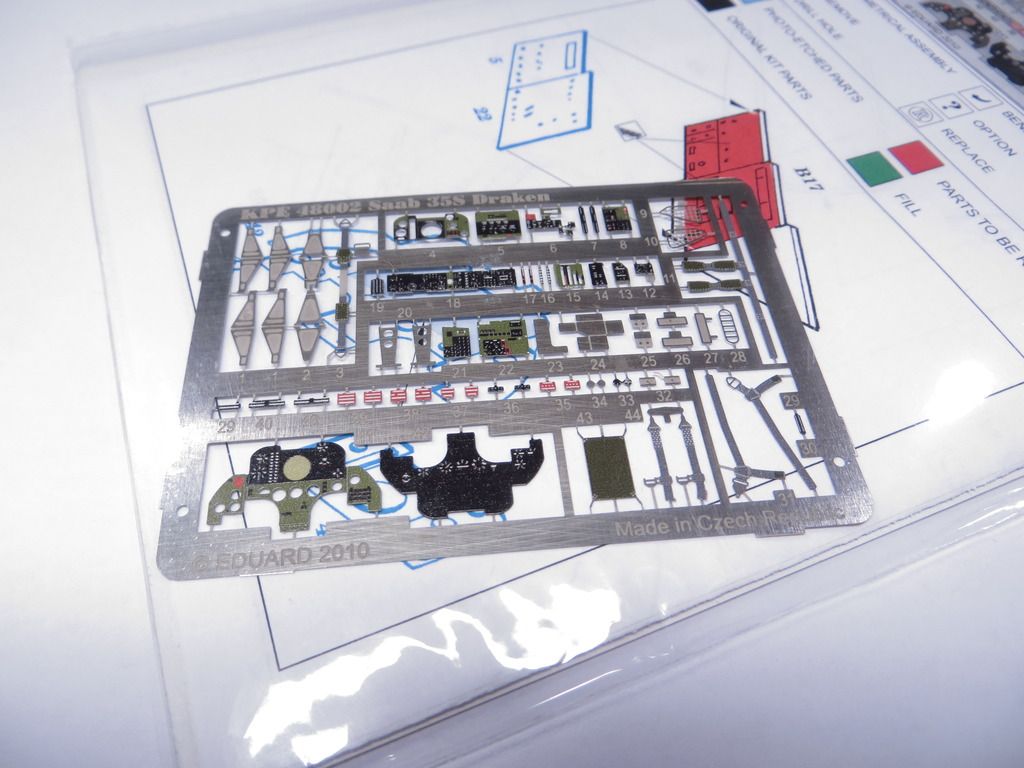
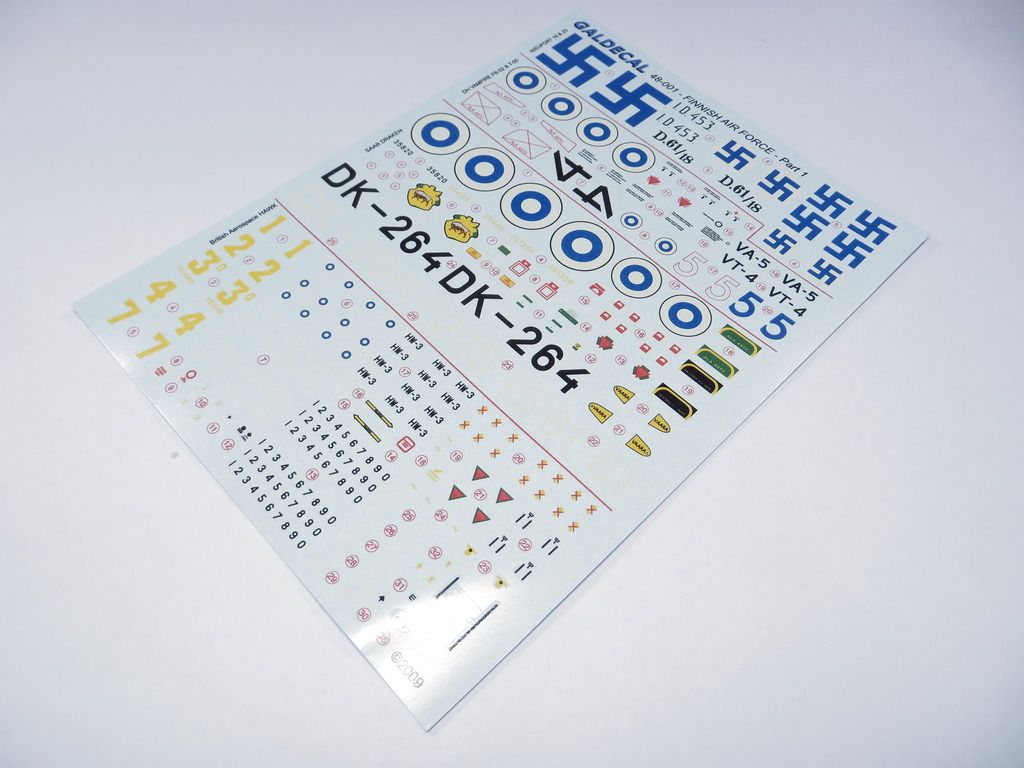
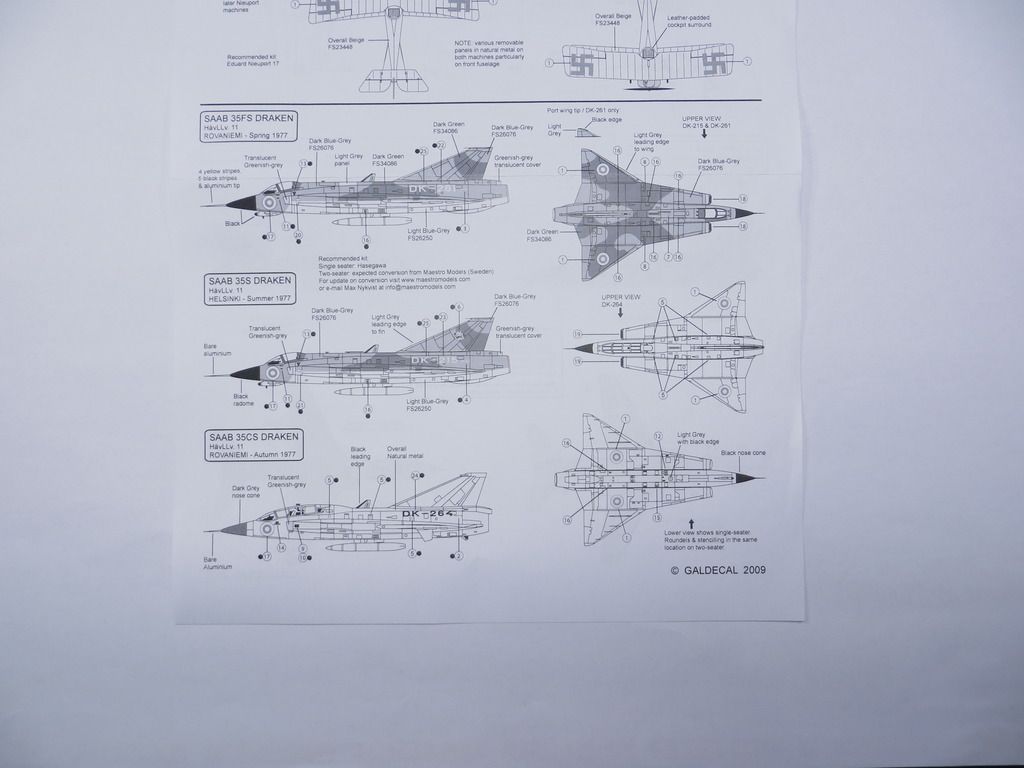
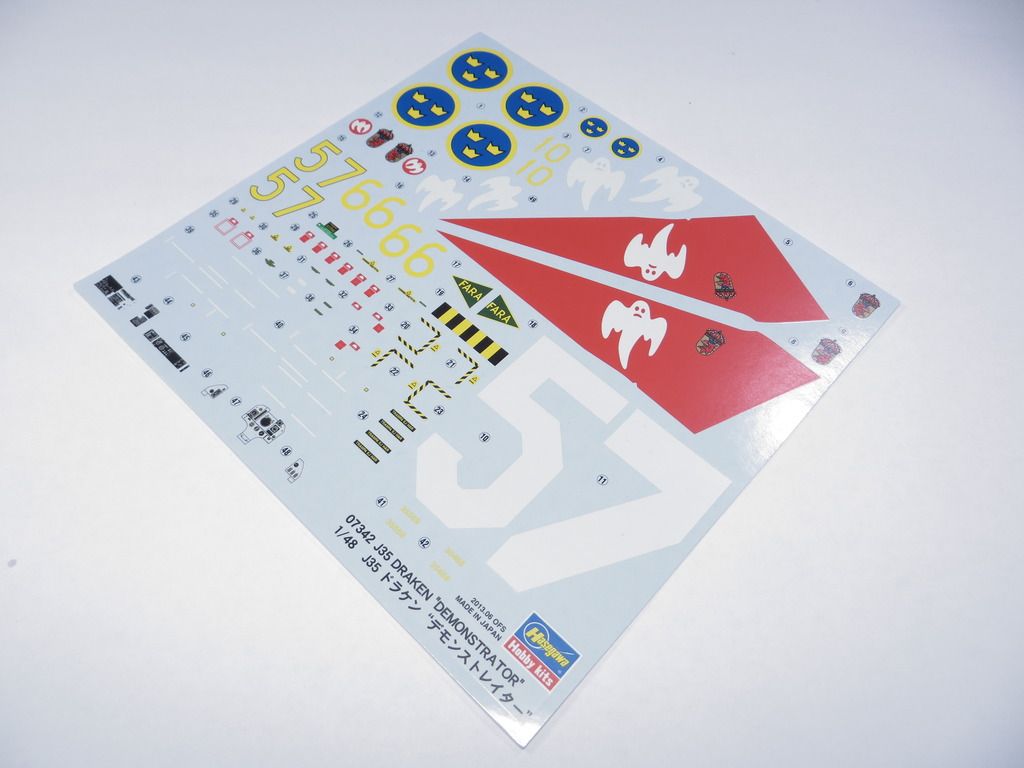
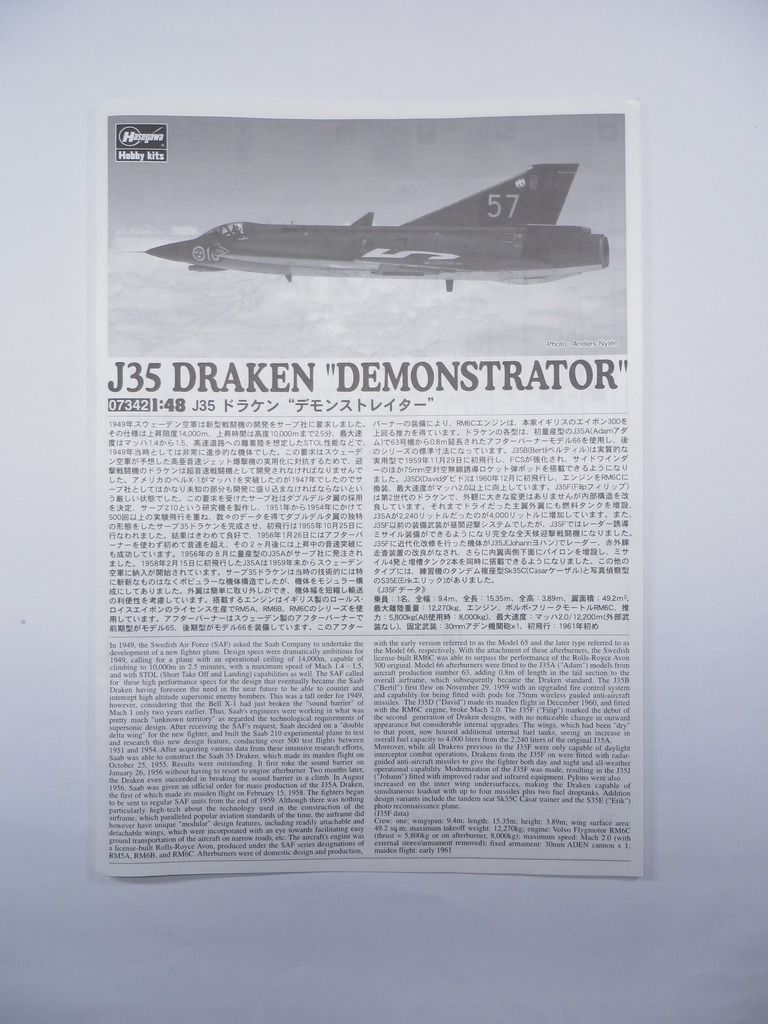
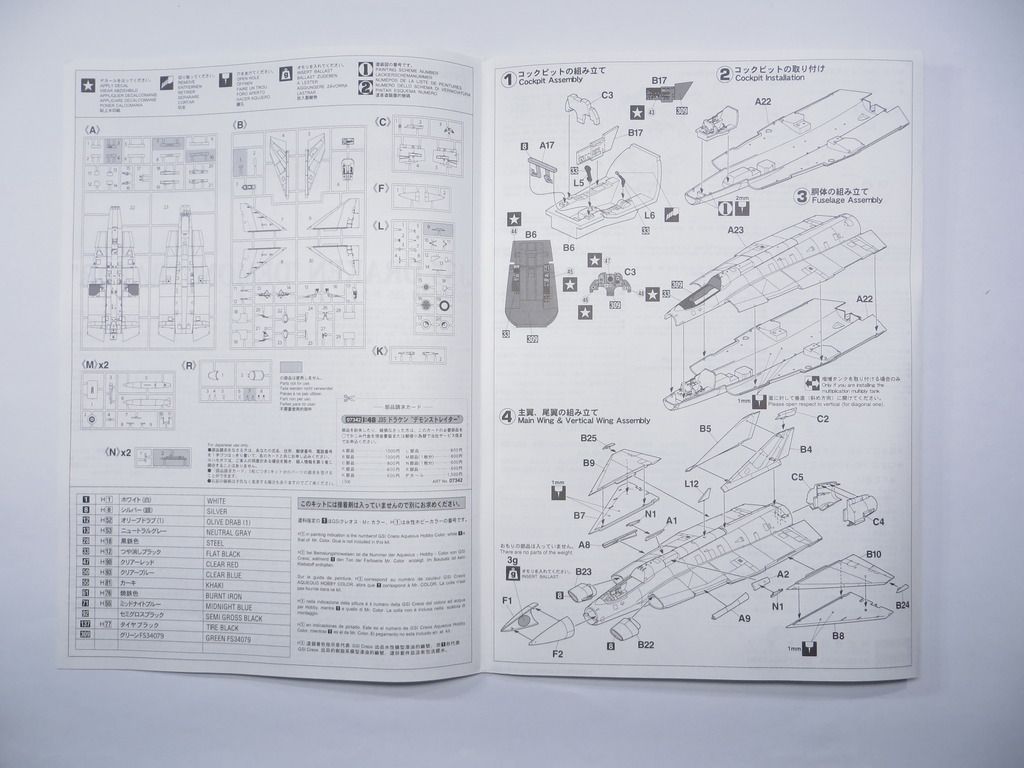
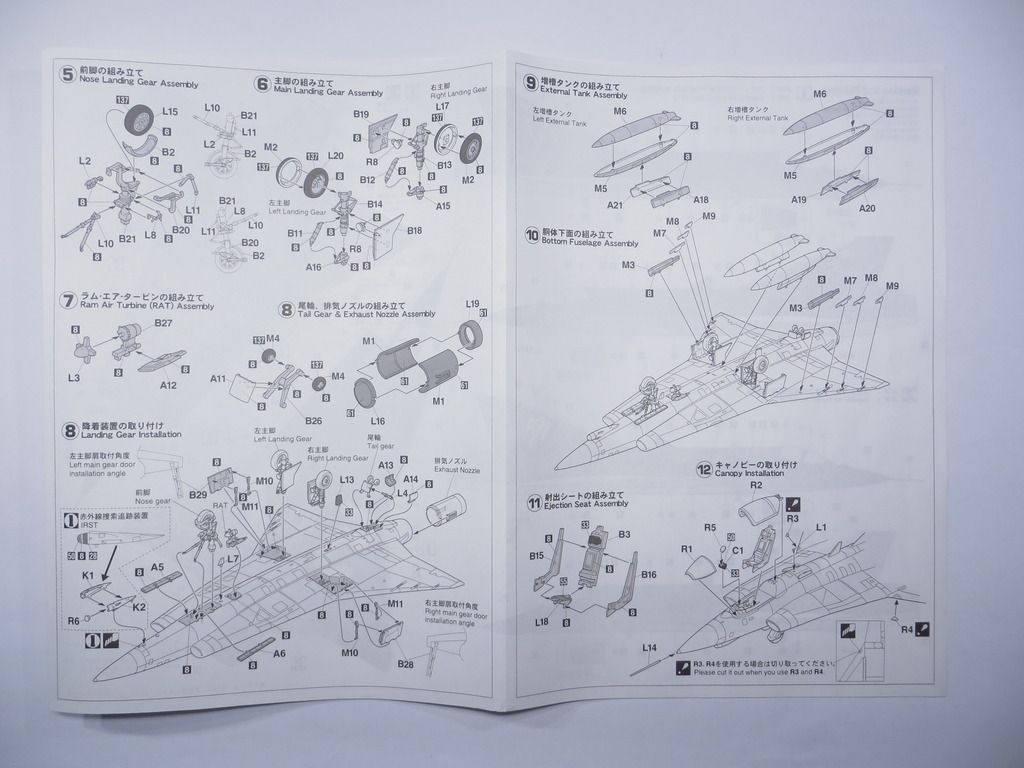
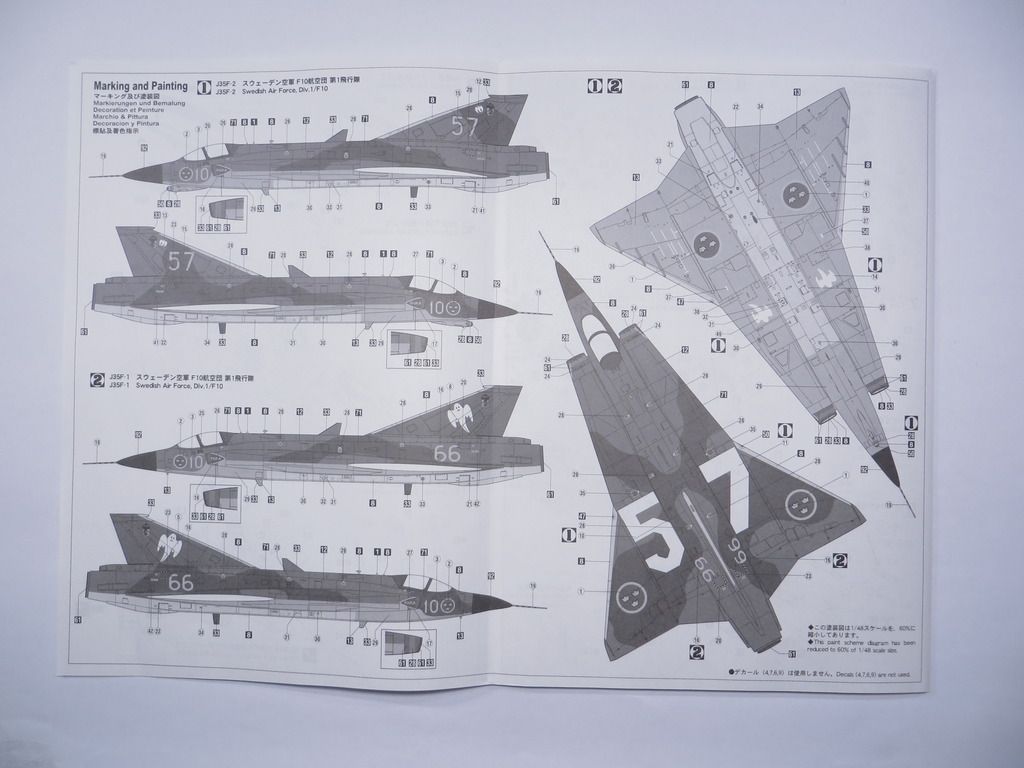
To be continued...
_____________________________________
Here is a little extra:
Which Finnish Air Force Aircraft does this canopy belong to? -Try to awnser it in the comments. Good luck!
